'Egg Shell Skull' Rule
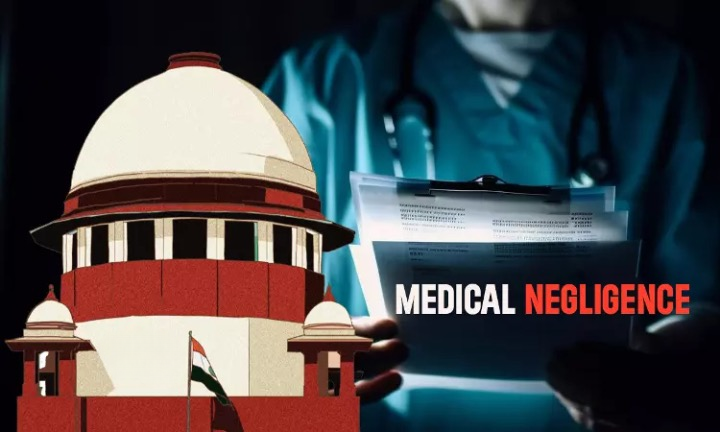
- 30 Apr 2024
Why is it in the News?
Underlining that the state and central consumer courts incorrectly applied the ‘eggshell skull’ legal principle, the Supreme Court recently restored the compensation of Rs 5 lakhs awarded by the district consumer forum in a medical negligence case.
What is the ‘Eggshell Skull’ Rule?
- The eggshell skull rule is a common law principle applied in civil litigation.
- Essentially, when the offender would be liable for all injuries that might be intensified due to the peculiar conditions of the injured person that the offender might not have known.
- Simply put, the defendant would be held responsible for injuries caused to a person when he hit him on the head, even if the victim had a particularly delicate skull or an ‘eggshell’ for a skull.
- A person who has an eggshell skull would be more severely impacted by an act, which an otherwise “normal person” would be able to withstand.
- The rule is applied for claiming an enhanced compensation, for damage that is more than what could have been ordinarily anticipated to be caused by the defendant.
Origin of the ‘Eggshell Skull’ Rule:
- The 'eggshell skull' rule, also known as the 'thin skull rule,' is a legal doctrine that holds a defendant liable for all consequences resulting from their negligent or intentional actions, even if the victim's pre-existing vulnerability worsens the outcome.
- The rule's origins can be traced back to an 1891 US case, Vosburg v. Putney, in which a boy kicked another's shin without knowing about his prior injury, leading to complications.
- The Wisconsin Supreme Court held that the defendant was responsible for the subsequent harm, even though he did not intend to cause such severe damage.
- A similar case in England a decade later involved a pregnant woman who experienced severe shock and gave birth to a disabled child after a horse van was negligently driven into a public house where she worked.
- The King's Bench upheld the principle that defendants are liable for the harm caused to victims, regardless of pre-existing vulnerabilities.
- The eggshell skull rule has been applied in various legal cases across different jurisdictions, emphasizing that defendants are accountable for the consequences of their actions, even when victims' unique vulnerabilities contribute to more significant harm.
What was the Jyoti Devi Medical Negligence Case?
- In 2005, Jyoti Devi underwent an appendix removal surgery in Himachal Pradesh, India.
- However, her abdominal pain persisted, leading to a four-year ordeal and multiple hospital visits.
- Eventually, doctors discovered that a 2.5 cm needle had been left in her abdomen during the initial surgery, requiring another operation to remove it.
- Jyoti sought compensation for medical negligence and was initially awarded Rs 5 lakhs by the district consumer forum.
- The hospital appealed, leading to the state consumer forum reducing the compensation to Rs. 1 lakh, and the National Consumer Disputes Redressal Commission (NCDRC) increasing it to Rs. 2 lakhs.
What did the SC Rule?
- The Supreme Court (SC) restored the original Rs 5 lakh compensation, criticizing the lower compensation amounts as "paltry" and "unjust."
- The SC ruled that the 'eggshell skull' rule did not apply in Jyoti's case since there was no evidence of a pre-existing vulnerability or medical condition that contributed to her suffering.
- The court cited two factors for increasing the compensation: Jyoti's prolonged pain over five years and the decade-long legal battle she endured.
Global Leaders Group on Antimicrobial Resistance
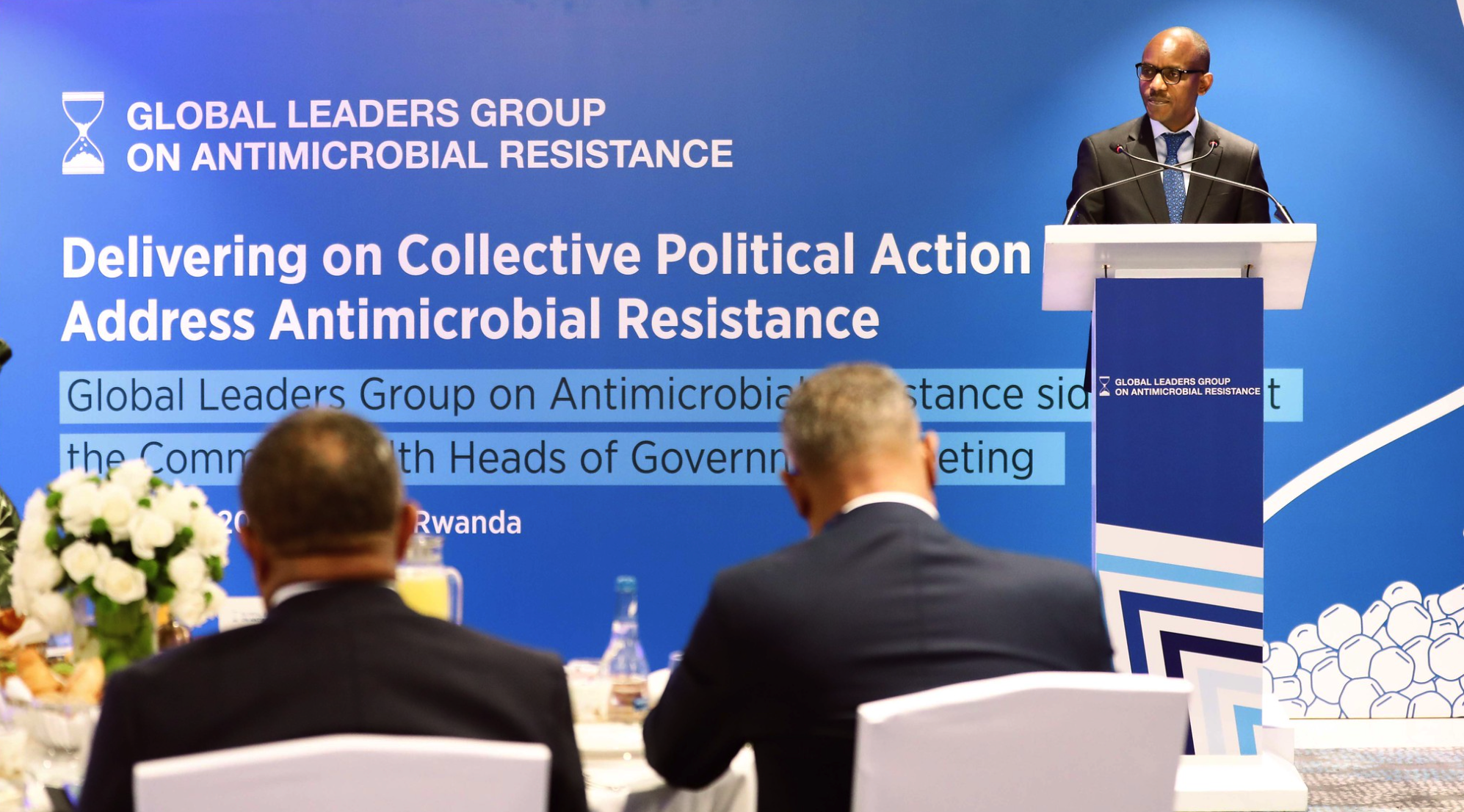
- 30 Apr 2024
Why is it in the News?
The European Society for Clinical Microbiology and Infectious Diseases (ESCMID) and the Global Leaders Group (GLG) on AMR jointly organized a high-level event, ‘Forging partnerships between science and policy’, on April 26, 2024, in Barcelona, Spain.
About Global Leaders Group on Antimicrobial Resistance:
- Established in November 2020, the Global Leaders Group on Antimicrobial Resistance is a collaborative effort of world leaders and experts from various sectors working together to accelerate political action against antimicrobial resistance (AMR).
- The Group serves as an independent global advisory and advocacy entity, striving to maintain public support, political momentum, and visibility of AMR on the global health and development agenda.
- Background: The Group emerged from a recommendation by the Interagency Coordination Group on Antimicrobial Resistance, aiming to strengthen global leadership and political action against AMR.
- The first meeting of the Group was held in January 2021.
Secretariat Support:
- The Quadripartite Joint Secretariat (QJS) on Antimicrobial Resistance, a joint effort by the Food and Agriculture Organization of the United Nations (FAO), the United Nations Environment Programme (UNEP), the World Health Organization (WHO), and the World Organisation for Animal Health (WOAH), provides secretariat support for the Group.
- Through its collaborative and multisectoral approach, the Global Leaders Group on Antimicrobial Resistance is committed to addressing the growing threat of AMR and promoting responsible and sustainable access to antimicrobials.
What is antimicrobial resistance (AMR)?
- Antimicrobial resistance (AMR) refers to the ability of microorganisms, such as bacteria, viruses, fungi, and parasites, to develop resistance to the effects of antimicrobial drugs, such as antibiotics, antivirals, antifungals, and antiparasitics.
- As a result, the medications become less effective or even ineffective at treating infections caused by these resistant microorganisms.
- AMR occurs when microorganisms undergo genetic changes that enable them to survive exposure to antimicrobial drugs.
- These changes can be shared between different microorganisms, leading to the spread of resistance genes.
- Over time, the increased use and misuse of antimicrobial drugs have accelerated the development of AMR.
Common factors contributing to AMR include:
-
- Overprescription of antimicrobials
- Non-adherence to prescribed treatment regimens
- Misuse of antimicrobials in agriculture and livestock farming
- Poor sanitation and hygiene practices
- Lack of access to clean water
- The rise of AMR poses a significant threat to public health, as it makes the treatment of common infections more difficult and increases the risk of complications.
- Additionally, AMR has implications for global health security, as resistant infections can spread rapidly across regions and become a major public health challenge.
Taam Ja' Blue Hole
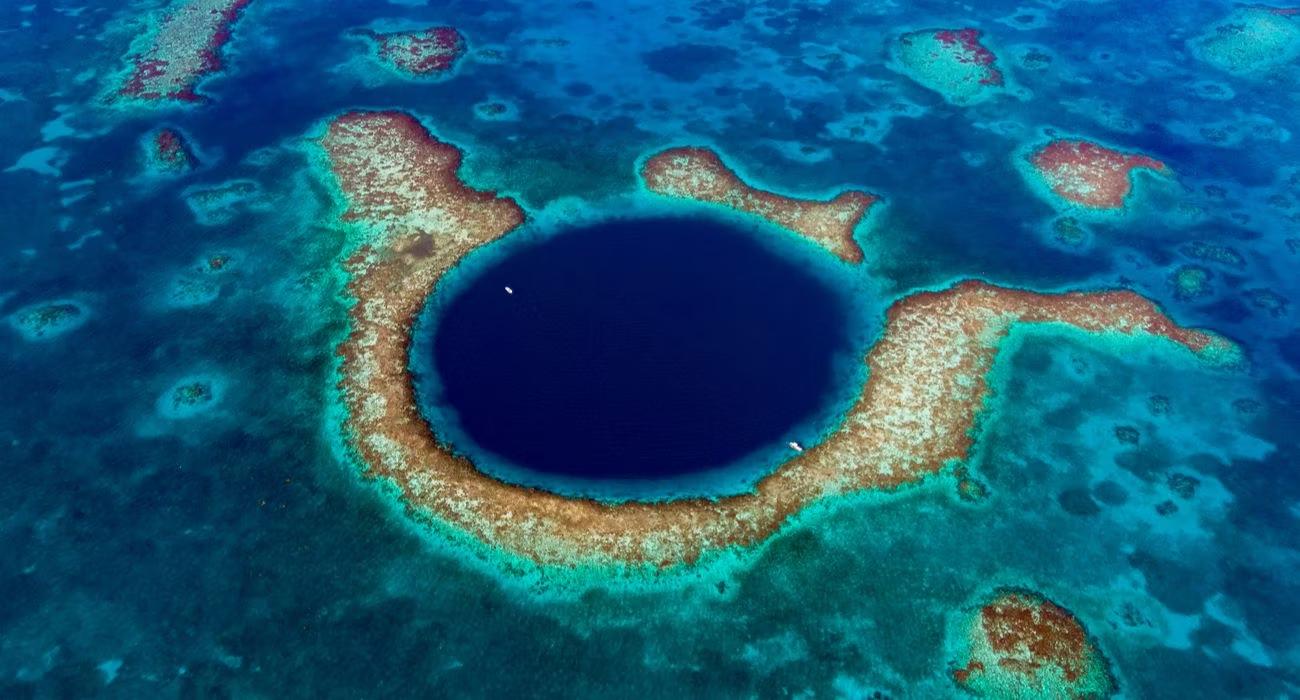
- 30 Apr 2024
Why is it in the News?
Recently, scientists have uncovered a massive sinkhole off the coast of the Yucatan Peninsula in Mexico.
What is Taam Ja' Blue Hole?
- Taam Ja' Blue Hole is the world's deepest known underwater sinkhole, recently discovered in Chetumal Bay off Mexico's Yucatan Peninsula.
- The blue hole extends approximately 420 meters (1,380 feet) below sea level, making it significantly deeper than the previous record holder, the Dragon Hole in the South China Sea.
- The nearly circular sinkhole covers an area of around 13,660 square meters and features steep sides covered in biofilms, sediments, limestone, and gypsum ledges.
- Named "Taam Ja'," meaning "deep water" in the Mayan language, the blue hole was initially discovered by a local diver in 2003 but only recently gained scientific attention.
- Further research is ongoing to explore the unique marine life and geological features within this remarkable underwater cavern.
What is a Blue Hole?
- A blue hole is a large, underwater sinkhole or cavern with a submerged opening that appears dark blue from above due to the depth and clarity of the water.
- The name "blue hole" originates from the striking contrast between the dark blue, deep water within the hole and the lighter blue shallower water surrounding it.
- These unique geological formations are typically formed through a combination of erosion and dissolution of limestone bedrock, resulting in circular or ovular depressions in the seafloor.
- Over time, blue holes can develop distinct ecosystems hosting a variety of marine life, including unique and rare species that have adapted to the specific conditions within these habitats.
- Blue holes can be found in various parts of the world, both in oceanic and inland settings.
- Some famous examples include the Great Blue Hole in Belize, the Dean's Blue Hole in the Bahamas, and the Taam Ja' Blue Hole in Mexico.
Thrombosis with Thrombocytopenia Syndrome (TTS)

- 30 Apr 2024
Why is it in the News?
Global pharmaceutical giant AstraZeneca has said that its AZD1222 vaccine against Covid-19, which was made under license in India as Covishield, could cause low platelet counts and formation of blood clots in “very rare” cases.
What is Thrombosis with Thrombocytopenia Syndrome (TTS)?
- Thrombosis with Thrombocytopenia Syndrome (TTS) is characterised by thrombosis formation (blood clots) combined with thrombocytopenia (low platelet count) with symptoms typically presenting in the 4-42 days after vaccination.
- Platelets are small cells that help blood to clot, so having too few of them can be dangerous.
- It often involves unusual blood clot locations, such as in the brain (cerebral venous sinus thrombosis) or abdomen.
- The condition was observed in people who received adenoviral vector COVID-19 vaccines, such as Vaxzevria, Covishield (AstraZeneca), and the Johnson & Johnson/Janssen COVID-19 vaccine.
- TTS seems to occur because the body's immune system reacts to the vaccine by making antibodies that attack a protein involved in blood clotting.
- According to the Centers for Disease Control (CDC), TTS is classified into 2 tiers based on the location of thrombosis and severity of symptoms.
Tier 1:
- Rare blood clots, like in the brain or gut, sometimes alongside more typical ones in the legs or lungs.
- Low platelet count (below 150,000 per microliter).
- Positive anti-PF4 ELISA tests can help confirm diagnosis but aren't always needed.
- Tier 1 cases are usually more severe and riskier.
- This is more common in younger people.
Tier 2:
- Common blood clots, like in the legs or lungs.
- Low platelet count (below 150,000 per microliter).
- A positive anti-PF4 ELISA test is necessary for diagnosis.
Symptoms of TTS:
- Symptoms of TTS can include severe headaches, stomach pain, swelling in the legs, trouble breathing, and problems with thinking or seizures.
Great Rift Valley
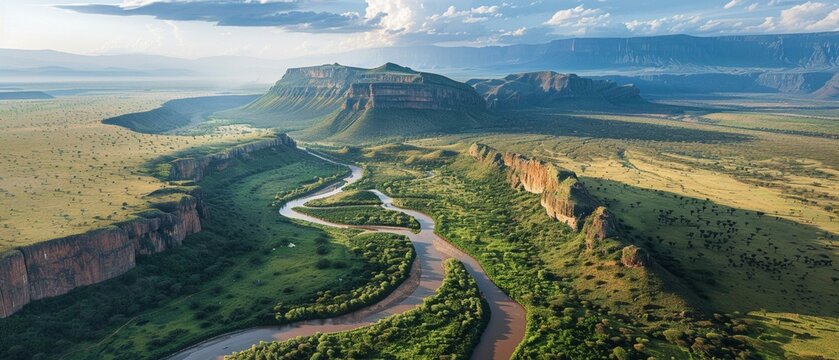
- 30 Apr 2024
Why is it in the News?
A dam burst near a village in the Rift Valley region of southern Kenya in the early hours of April 29, 2024. Some 45 people have been killed according to the police chief of Nakuru County, where the incident took place.
About the Great Rift Valley:
- The Great Rift Valley, part of the larger East African Rift System (EARS), is a significant geological feature extending across East Africa, from Jordan in southwestern Asia to central Mozambique's coast along the Indian Ocean.
- Running through numerous countries including Eritrea, Djibouti, Ethiopia, Kenya, Tanzania, Uganda, Rwanda, Burundi, the Democratic Republic of Congo, Malawi, Zambia, and Mozambique, the valley is one of Earth's most expansive rifts.
Formation:
- Resulting from tectonic plate movements about 40 million years ago, the Great Rift Valley's formation is linked to the East African Rift's emergence.
- Geologically active, the region experiences frequent earthquakes, volcanoes, hot springs, and geysers.
Notable Features:
- A series of approximately 30 lakes dot the Great Rift Valley, including Lake Tanganyika (the world's second-deepest lake) and Lake Victoria (the second-largest freshwater lake by surface area).
- Many of Africa's highest mountains, such as Mount Kilimanjaro, Mount Kenya, and Mount Margherita, form part of ranges fronting the valley.
What is a Rift Valley?
- A rift valley is a lowland region that forms where the Earth's tectonic plates move apart or rift.
- Rift valleys are a result of the tectonic processes that shape the Earth's surface, specifically in regions where tectonic plates are diverging or pulling away from each other.
- Rift valleys are characterized by a long, narrow depression, often with steep sides, running along the length of the rift.
- The depression is caused by the sinking of the ground between the two diverging plates as they pull away from each other.
- The thinning of the Earth's crust leads to subsidence and the formation of a valley.
- Rift valleys can be found on land as well as on the ocean floor.
Some notable examples of rift valleys include:
- The Great Rift Valley in East Africa is part of the larger East African Rift System.
- The Red Sea Rift separates the African and Arabian tectonic plates.
- The Rhine Valley in Europe was formed by the divergence of the European and African plates.
- Rift valleys are geologically active areas often associated with volcanic activity, earthquakes, and the formation of hot springs, geysers, and other hydrothermal features.
Global Alliance of National Human Rights Institutions (GANHRI)
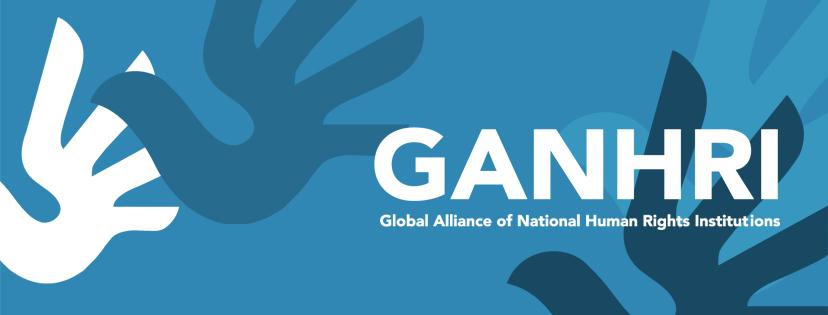
- 29 Apr 2024
Why is it in the News?
The National Human Rights Commission (NHRC) is preparing to defend the government’s human rights processes at a meeting in Geneva this week, where a decision on whether India’s human rights body will retain its “A status” is expected to be made.
About Global Alliance of National Human Rights Institutions (GANHRI):
- The Global Alliance of National Human Rights Institutions (GANHRI) is a representative body of National Human Rights Institutions (NHRIs) from across the world.
- It assists in the establishment and strengthening of independent and effective NHRIs, which meet the international standards set out in the Paris Principles.
- GANHRI encourages joint activities and cooperation among NHRIs, organises international conferences, liaises with the United Nations and other international organisations, assists NHRIs under threat, and assists governments in establishing NHRIs.
- The Asia Pacific Forum of National Human Rights Institutions (APF) and other member institutions continue to make a significant contribution to the operations and human rights initiatives of GANHRI.
- The organisation is incorporated as a non-profit organisation under Swiss law.
- Its Statute, adopted in March 2009, sets out its objectives and how it operates.
Membership:
- NHRIs that comply fully with the Paris Principles – and which have been granted 'A status' by GANHRI – are eligible to become voting members of GANHRI and to hold governance positions.
- NHRIs that only partially comply with the Paris Principles – and which have been granted 'B status' by GANHRI – can participate in meetings of GANHRI but are not eligible to vote or to hold governance positions.
Bureau:
- The operations of GANHRI are managed by its Bureau, which is comprised of representatives from each of the four regional groupings:
- Africa, the Americas, Europe, and the Asia Pacific.
- Each regional grouping is represented by elected representatives from four 'A status' NHRIs.
- The APF is currently represented on the GANHRI Bureau by Australia, India, Korea, and Qatar.
- A key role of the Bureau is to assess applications for membership in the ICC.
- It also reviews and determines the accreditation status of NHRIs, following a recommendation from the Sub-Committee on Accreditation.
- In addition, the Bureau collaborates with the Office of the High Commissioner for Human Rights (OHCHR), in particular the National Institutions and Regional Mechanisms Unit, to facilitate the participation of NHRIs in the United Nations Human Rights Council.
- Bureau meetings are usually held twice a year; the first is in conjunction with the first quarter session of the UN Human Rights Council and the second is in conjunction with one of the NHRI regional network's meetings.
- A meeting is also held in conjunction with the bi-annual International Conference.
International Conference:
- The International Conference involves NHRIs, as well as representatives of United Nations agencies, international organisations, and civil society.
- The purpose of the International Conference is to strengthen cooperation between NHRIs, to discuss human rights issues of shared concern, and to ensure follow-up at the national level.
- The International Conference is held every two years, alternating between Europe, the Americas, Africa, and the Asia Pacific.
Officials:
- The positions of GANHRI Chairperson and Secretary are served on a rotational basis by representatives nominated by the four regional coordinating committees: Europe, Africa, the Americas, and the Asia Pacific.
- The current GANHRI Chairperson is Maryam Abdullah Al Attiyah, Chairperson of the National Human Rights Committee of Qatar (NHRC), representing the Asia Pacific region.
- The current GANHRI Secretary is Amina Bouayach, Chairperson of the National Human Rights Council of Morocco (CNDH), representing the African region.
Secretariat:
- The National Institutions and Regional Mechanisms Unit of OHCHR acts as the GANHRI secretariat.
- GANHRI has a permanent representative in Geneva to support and facilitate the participation of NHRIs in the UN Human Rights Council and its human rights mechanisms.
Critical Minerals Summit
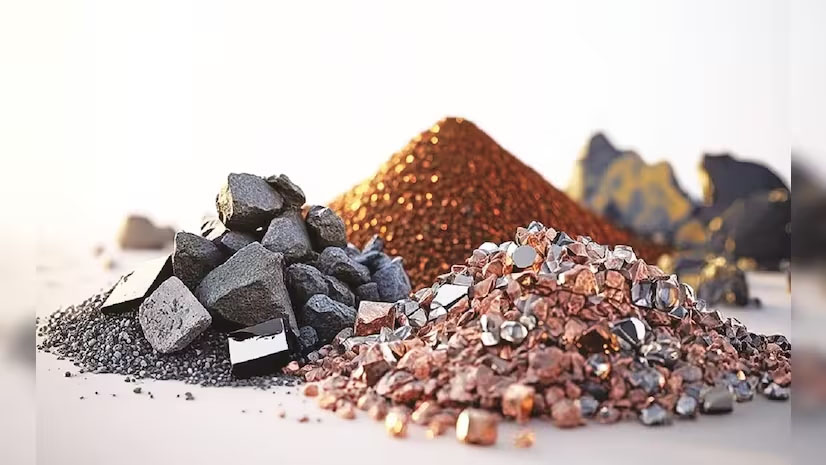
- 29 Apr 2024
Why is it in the News?
Ministry of Mines today organized a summit to foster collaboration, share knowledge, and drive innovation in the field of critical mineral beneficiation and processing in New Delhi.
About Critical Minerals Summit:
- The Critical Minerals Summit was organized by the Ministry of Mines, Government of India, in collaboration with the Shakti Sustainable Energy Foundation (Shakti), the Council on Energy, Environment and Water (CEEW), and the Indian Institute of Sustainable Development (IISD).
- It aims to promote collaboration and innovation in critical mineral beneficiation and processing.
- This event brings together a wide range of stakeholders, including industry leaders, startups, government officials, scientists, academics, and policy experts from both India and abroad.
Key Objectives:
- Tackling Demand: The summit seeks to address the growing demand for Critical Raw Materials (CRMs) needed for renewable energy systems and electric vehicles as part of India's strategic development goals.
- Focus on Key Minerals: The Ministry of Mines has identified eight crucial minerals for focus, including Glauconite (Potash), Lithium – Rare Earth Elements (Laterite), Chromium, Platinum Group, Graphite, Tungsten, Rare Earths (RE), and vanadium-associated with Graphite.
- Diverse Participation: The summit offers a platform for a diverse group of stakeholders to collaborate, share knowledge, and drive innovation in the field of critical minerals.
What are Critical Minerals?
- Critical minerals are metallic or non-metallic elements essential for modern technologies, economies, and national security, with potentially vulnerable supply chains.
- Their 'criticality' changes over time due to shifting supply and societal needs.
- Applications: Critical minerals are vital for manufacturing advanced technologies like mobile phones, computers, semiconductors, and renewable energy systems such as electric vehicles, wind turbines, solar panels, and batteries.
- They are also used in common products like stainless steel and electronics.
- Examples of Critical Minerals are antimony, beryllium, cobalt, copper, gallium, germanium, lithium, vanadium, and more.
- Top Producers: Countries like Chile, Indonesia, Congo, China, Australia, and South Africa lead in critical mineral production.
- Critical Minerals in India: The Indian government has identified 30 critical minerals, including antimony, beryllium, cobalt, copper, gallium, graphite, hafnium, indium, lithium, molybdenum, nickel, niobium, phosphorous, potash, rare earth elements, rhenium, silicon, strontium, tantalum, tellurium, tin, titanium, tungsten, vanadium, zirconium, selenium, and cadmium.
- To meet the rising demand for critical minerals and ensure a stable supply, the Indian government is actively working on auctioning critical mineral blocks and fostering industry partnerships.
- These efforts are crucial for the country's economic development and energy transition goals.
Green Taxonomy
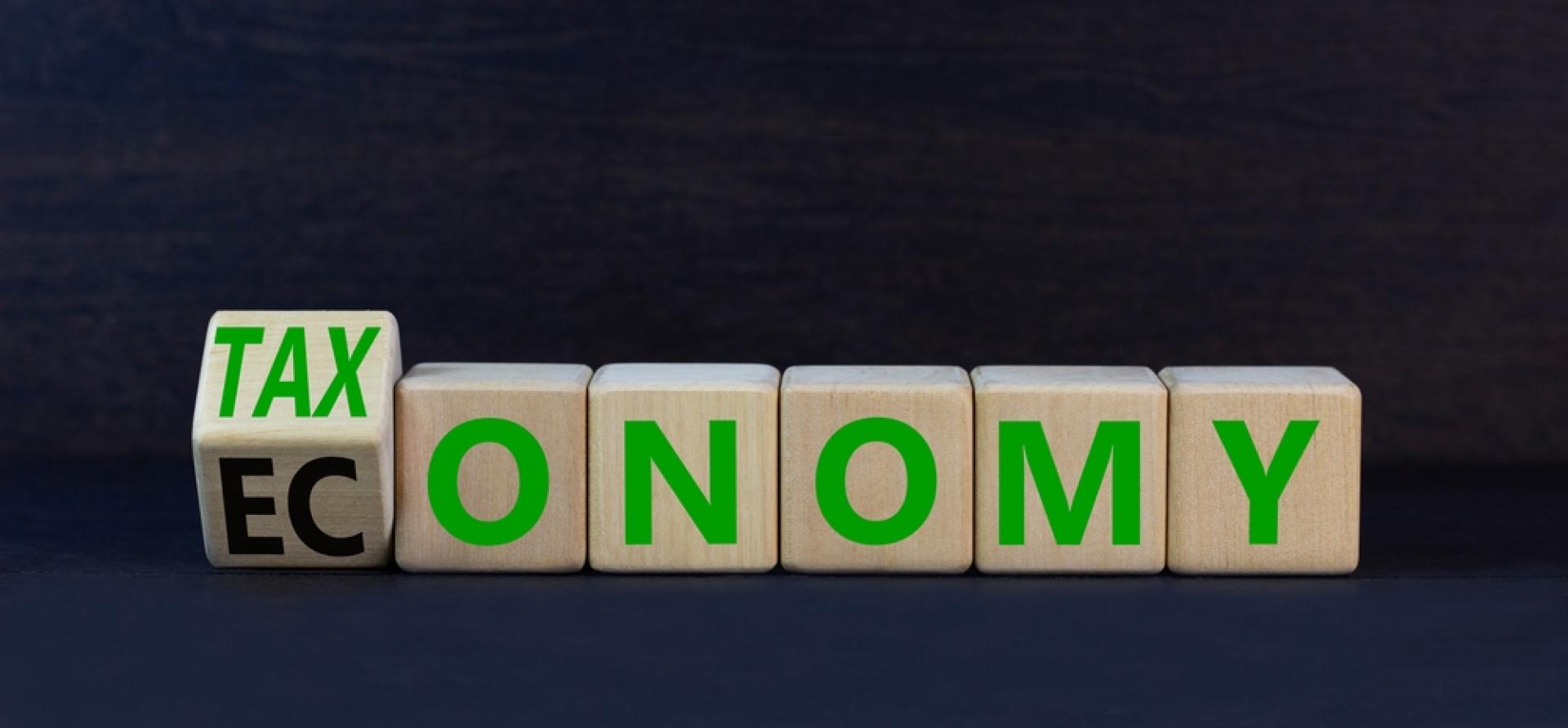
- 29 Apr 2024
Why is it in the News?
The RBI and the Finance Ministry could draw inspiration from the ASEAN region's evolving green taxonomy, continually updated with sectoral insights, to enhance sustainability efforts.
What is Green Taxonomy?
- Green taxonomy is a pivotal framework designed to delineate environmentally sustainable investments, providing clarity on which economic activities and assets qualify as "green" or environmentally sound.
- It plays a crucial role in advancing global sustainability objectives, particularly in the context of combating climate change and transitioning towards a low-carbon economy.
What is Green Taxonomy?
- At its core, green taxonomy serves as a comprehensive tool for classifying economic activities and assets based on their environmental sustainability.
- It is crafted by governments, regulators, and stakeholders with a commitment to achieving net-zero carbon emissions and fostering sustainable development.
Significance of Green Taxonomy:
- The significance of green taxonomy lies in its multifaceted role:
- Preventing Greenwashing: By establishing clear criteria and standards, green taxonomy helps prevent greenwashing, a deceptive practice wherein investments are portrayed as environmentally friendly when they may not be.
- Informing Investment Decisions: Investors are empowered to make informed decisions by utilizing the taxonomy as a guide. It offers transparency and guidance, enabling investors to align their investment strategies with environmental objectives.
- Directing Investments Towards Sustainability: The taxonomy serves as a tool for channeling investments towards sustainable economic activities and assets. By identifying and classifying green investments, it encourages the allocation of capital to projects that contribute positively to environmental goals.
Common Features of Green Taxonomies:
- Green taxonomies typically include objectives related to climate mitigation and adaptation, with some also incorporating additional environmental goals such as biodiversity conservation.
- To qualify as green, an activity must substantially contribute to at least one of these environmental objectives.
- Furthermore, green taxonomies often integrate "do no significant harm" criteria, ensuring that activities considered green do not compromise other environmental objectives.
- Additionally, they emphasize compliance with social safeguards, including human rights considerations.
Nuanced Approaches in Green Taxonomies:
- Some taxonomies adopt a nuanced approach, such as the "traffic light" system utilized by the Indonesian and proposed Singaporean taxonomies.
- Under this approach, economic activities are categorized into different tiers (green, amber, or red) based on their environmental sustainability.
- This system offers a more nuanced understanding of the environmental impact of various activities, allowing for tailored assessments and decision-making.
What Is Greenwashing?
- Greenwashing is the process of conveying a false impression or misleading information about how a company’s products are environmentally sound.
- Greenwashing involves making an unsubstantiated claim to deceive consumers into believing that a company’s products are environmentally friendly or have a greater positive environmental impact than they actually do.
- In addition, greenwashing may occur when a company attempts to emphasize sustainable aspects of a product to overshadow the company’s involvement in environmentally damaging practices.
- Performed through the use of environmental imagery, misleading labels, and hiding tradeoffs, greenwashing is a play on the term “whitewashing,” which means using false information to intentionally hide wrongdoing, error, or an unpleasant situation in an attempt to make it seem less bad than it is.
National Centre for Good Governance (NCGG)
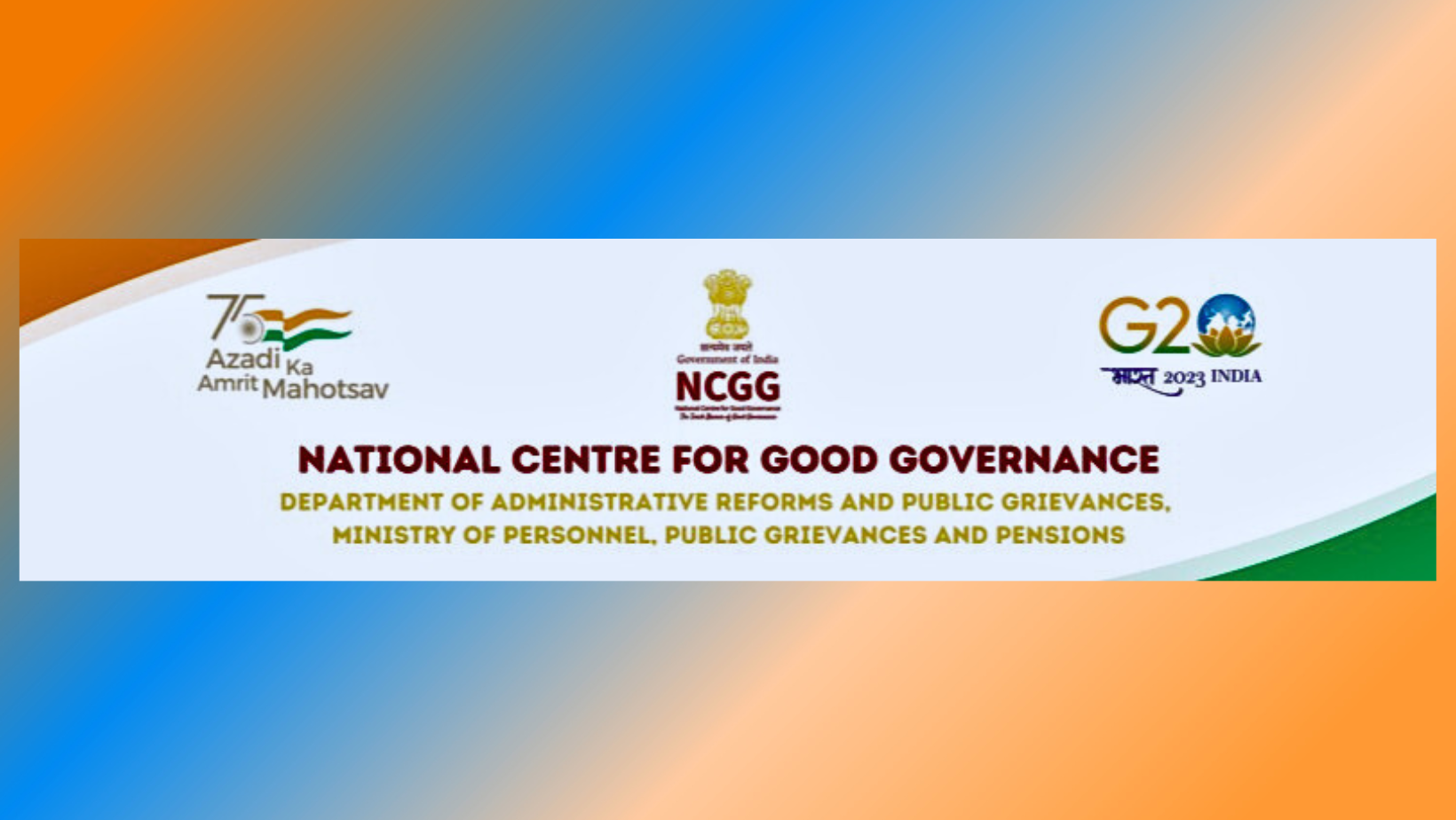
- 29 Apr 2024
Why is it in the News?
A central government delegation is on a three-day visit to Bangladesh beginning Sunday to further boost bilateral ties on governance matters, according to an official statement.
About the National Centre for Good Governance:
- The National Centre for Good Governance (NCGG) was set up in 2014 by the Government of India as an apex–level autonomous institution under the Ministry of Personnel, Public Grievances and Pensions.
- The Centre traces its origin to the National Institute of Administrative Research (NIAR), which was set up in 1995 by the Lal Bahadur Shastri National Academy of Administration (LBSNAA), the Government of India's topmost training institute for civil services.
- NIAR was subsequently rechristened and subsumed into NCGG.
- NCGG deals with a gamut of governance issues from local, state to national levels, across all sectors.
- The Centre is mandated to work in the areas of governance, policy reforms, capacity building, and training of civil servants and technocrats of India and other developing countries.
- It also works as a think tank.
- Since its inception, the Centre has been extensively working in areas such as primary and elementary education, decentralized planning at district and block levels, capacity building of Panchayat Raj Institutions (PRIs), participatory models of learning and action, rural development, cooperatives, and public sector management, etc.
- In addition, it focuses on issues related to good governance, social accountability, water, sanitation, and hygiene (WASH), among other sectors.
- The Centre encapsulates the essence of good governance and weighs on the importance of the rule of law, bringing in transparency, working to promote public participation in governance, service delivery, and reforms, as well as in developing accountable institutions, access to information, etc.
Raja Ravi Varma
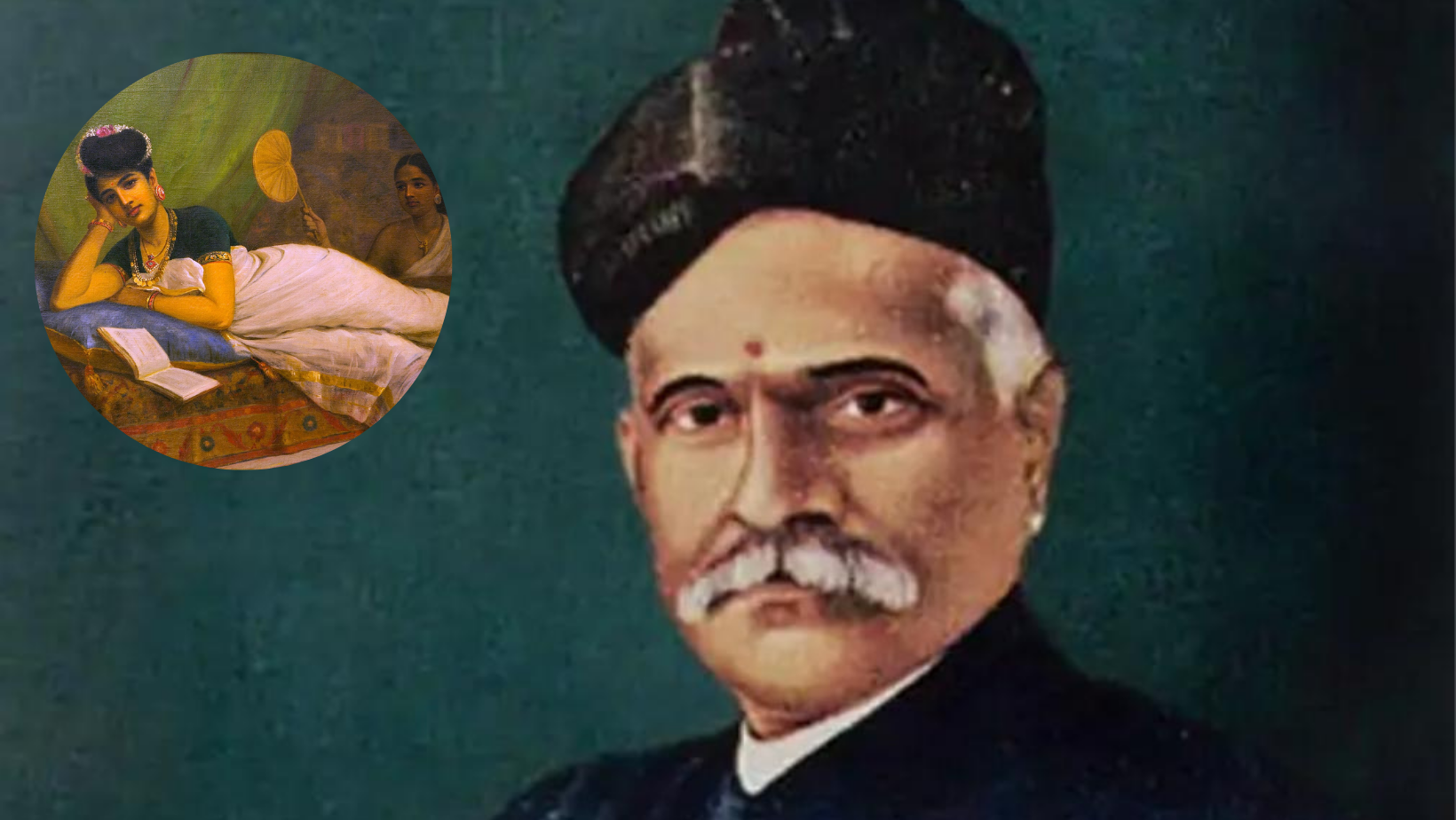
- 29 Apr 2024
Why is it in the News?
The first true copy of the painting Indulekha by legendary artist Raja Ravi Varma will be unveiled at the Kilimanoor Palace, where the eminent artist was born in 1848, on the occasion of his 176th birth anniversary celebrations.
Who was Raja Ravi Varma?
- Raja Ravi Varma was an Indian painter and artist.
- He is considered among the greatest painters in the history of Indian art.
- His works are one of the best examples of the fusion of European academic art with a purely Indian sensibility and iconography.
- Additionally, he was notable for making affordable lithographs of his paintings available to the public, which greatly enhanced his reach and influence as a painter and public figure.
- His lithographs increased the involvement of common people with fine arts and defined artistic tastes among common people.
- He was part of the royal family of erstwhile Parappanad, Malappuram district.
- He is also celebrated for inventing the first oleograph press in Ghatkopar, Mumbai.
- His paintings depicting Hindu gods and goddesses had a significant influence on their portrayal in art and cinema for many years.
- His artworks found popularity not only among Europeans but also among laymen, who appreciated his work for its simplicity.
- In a time when lower castes were barred from temples, they found solace in Varma's work.
- In addition to Indian mythology, he was admired for highlighting the beauty of South Indian women.
- Viceroy Lord Curzon honored him with the 'Kaisar-i-Hind' Gold Medal for his service.
- His paintings can be broadly classified into three categories: portraits, portrait-based compositions, and theatrical compositions based on myths and legends.
- Some of his popular paintings include 'A Family of Beggars,' 'A Lady Playing Swarbat,' 'Draupadi Dreading to Meet Kichaka,' 'Girl in Sage Kanwa's Hermitage (Rishi-Kanya),' 'Jatayu,' and 'Indulekha' among others.
About Indulekha Painting:
- The painting by Raja Ravi Varma draws inspiration from the novel as he creates an oil painting of Indulekha, who is depicted holding a letter addressed to her lover, Madhavan, the hero of the novel, with the salutation 'Dear Madhavan...' dated 1892.
- The painting, characterized by an over-the-top sense of symmetry and precise attention to micro-details, dates back to the 19th century.
- Another belief suggests that the famous painting 'Reclining Lady' by Ravi Varma was modeled on Indulekha.
- Recently, the painting was restored by Madhan S. of the Heritage Conservation and Research Academy.
Expanding Glacial Lakes in the Indian Himalayas: ISRO
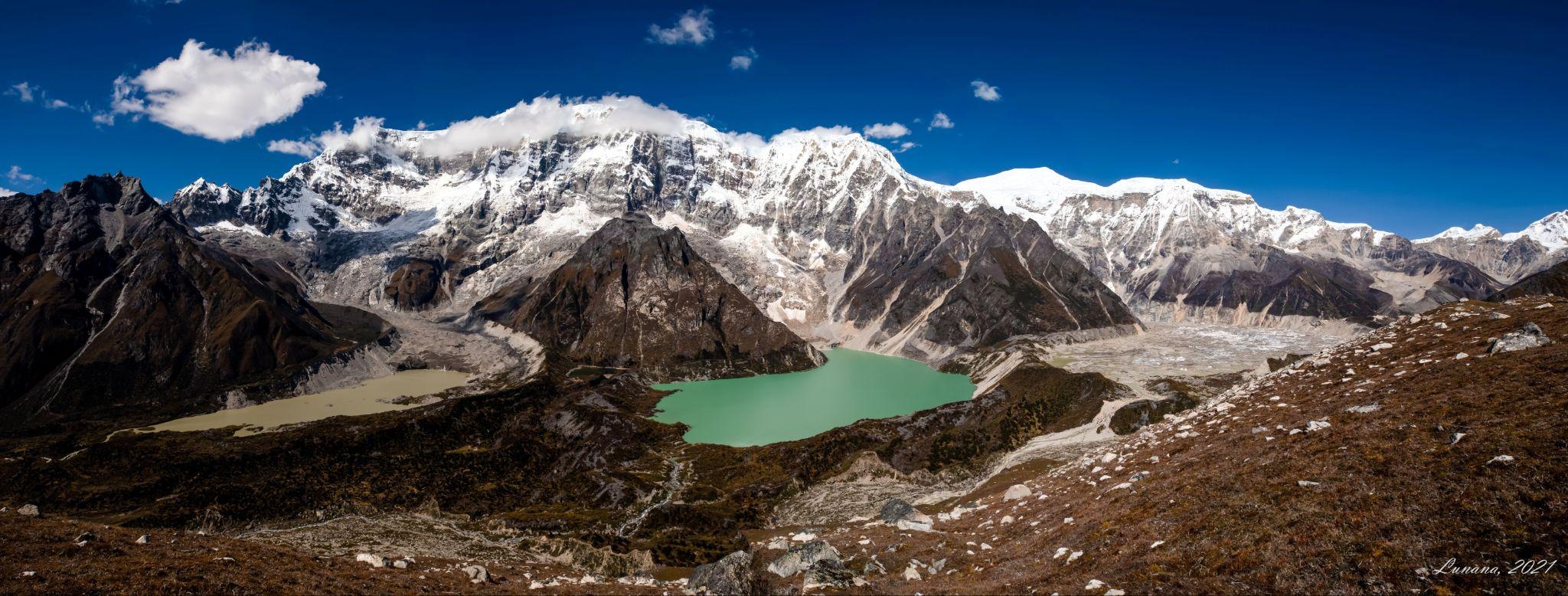
- 27 Apr 2024
Why is it in the News?
Experts express concern over the ISRO analysis findings, indicating that the expansion of glacial lakes due to warming could result in cascading impacts in lower regions.
Highlights of the ISRO Report:
- The ISRO report said 601 glacial lakes, or 89 percent, have expanded more than twice, and 10 lakes have grown between 15 times and double their size. Sixty-five lakes have expanded 1.5 times.
- Of the 2,431 glacial lakes larger than 10 hectares, 676 have significantly expanded, and at least 130 of these lakes are in India 65 (Indus River basin), 7 (Ganga River basin), and 58 (Brahmaputra River basin).
- Elevation-based analysis shows 314 lakes are located in the 4,000 to 5,000 meters range, and 296 lakes are above 5,000 meters elevation.
What are Glacial Lakes?
- Glacial lakes emerge in hollows or basins shaped by glaciers' erosive force and are prevalent in areas where glaciers once existed or persist.
- They vary widely in size and shape, from tiny pools to expansive bodies of water.
- ISRO classifies them into four main types: moraine-dammed, ice-dammed, erosion-based, and 'others'.
- While vital as freshwater sources for rivers, glacial lakes also pose risks, particularly Glacial Lake Outburst Floods (GLOFs).
- GLOFs occur when these lakes discharge large volumes of meltwater, often due to natural dam failures, causing sudden and severe downstream flooding.
Formation Processes:
- Glacial Erosion: Glaciers, moving slowly, sculpt the landscape by eroding bedrock through abrasion and plucking, creating valleys and basins.
- Moraine Deposition: As glaciers move, they transport sediment, depositing it at their edges as moraines, which can act as natural dams, forming lake basins.
- Ice Melting: Rising temperatures or glacier retreat causes ice to melt, filling depressions created by erosion with water, and forming glacial lakes.
- Terminal Moraine Formation: Glaciers may leave behind ridges of sediment at their terminus, creating natural dams that trap water, forming terminal moraine lakes.
Utilization of Remote Sensing for Glacial Lake Monitoring:
- Monitoring glacial lakes in the Himalayan region presents challenges due to rugged terrain, making satellite remote-sensing technology indispensable.
- By analyzing satellite data, changes in glacial lakes can be tracked over time, offering insights into their evolving dynamics.
- This data is vital for understanding their environmental impact and devising strategies to manage risks such as glacial lake outburst floods (GLOFs) and adapt to climate change in glacier-influenced regions.
Mitigating Risks Associated with Glacial Lakes:
- Research suggests that reducing glacial lake levels by 10 to 30 meters can significantly alleviate downstream impacts, albeit not eliminate GLOF risks.
- One effective method involves siphoning off lake water using extended High-Density Polyethylene (HDPE) pipes.
- In 2016, the Sikkim State Disaster Management Authority successfully employed this technique to lower water levels in South Lhonak Lake, showcasing its practicality and efficacy in risk reduction efforts.
Haritha Karma Sena (HKS)
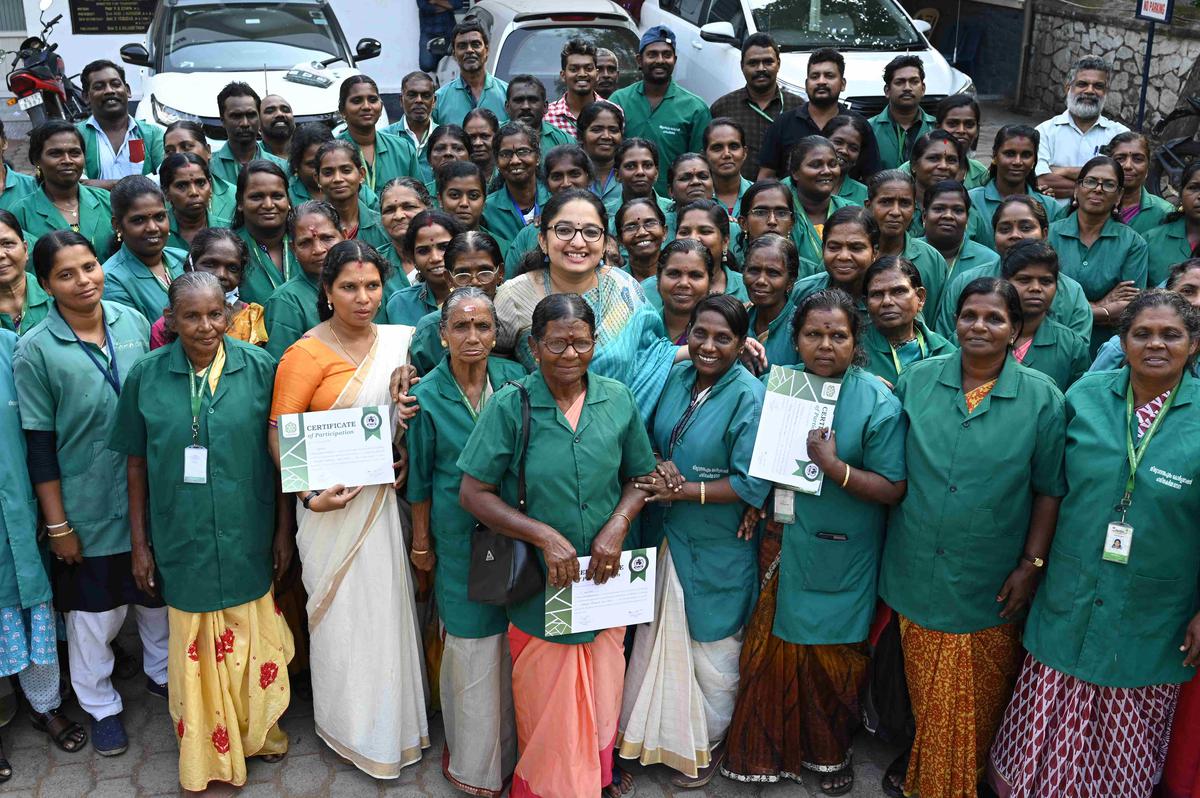
- 27 Apr 2024
Why is it in the News?
Adhering to green protocol, the Haritha Karma Sena workers have to ensure that the polling booths and surroundings are free of plastic and other waste materials in Kerala.
What is Haritha Karma Sena (HKS)?
- Haritha Karma Sena (HKS) is a professional team comprising Green Technicians and Green Supervisors, predominantly composed of Kudumbashree Women.
- Their duties include collecting, transporting, processing, recycling/disposing, and managing waste materials in collaboration with respective Local Self-Governments.
- Launched in 2013 by the Government of Kerala, it is part of the Haritha Keralam Mission.
What is the Haritha Keralam Mission?
- It is a comprehensive initiative aimed at transforming Kerala into a clean and green state.
- The mission strives to eliminate garbage, promote sustainable waste management practices, generate employment in the waste management sector, and raise environmental awareness.
What is the Success Story of the HKS?
- The 35,500 members of the HKS have tirelessly worked to change societal attitudes towards household waste management.
- Waste collection and segregation have become respected and remunerative occupations.
- The transition from centralized waste treatment to decentralized management reflects a community-driven approach to sustainability.
- Kudumbashree's empowerment of women and the government's emphasis on awareness and training are crucial for sustaining these efforts.
What More Needs to be Done?
- Future plans include improving segregation methods, promoting diversification, and expanding waste storage infrastructure.
- These initiatives reflect a holistic approach to waste management and economic development.
Symbol Loading Units (SLUs)

- 27 Apr 2024
Why is it in the News?
Recently, the Supreme Court rejected the plea for full verification of VVPAT slips against EVM counts and directed the ECI to seal the Symbol Loading Unit (SLU) for 45 days post-election results announcement.
What is a Symbol Loading Unit (SLU) and How Does it Work?
- Symbol Loading Units (SLUs) were introduced around the same time as VVPATs, a little over a decade ago.
- VVPATs help voters verify their votes, they see a slip with a printed image of the party symbol they voted for.
- But for the VVPAT to print a symbol correctly, information pertaining to the list of candidates and their symbols must be loaded onto the VVPAT machine in the correct order.
- This is where the Symbol Loading Unit, or SLU, comes in.
- The introduction of VVPATs necessitated the use of SLUs.
- The SLU is used to load the symbols of the candidates onto the VVPAT.
- It is a matchbox-sized device that is first connected to a laptop or personal computer, from where a symbol-loading application is used to load a bitmap file containing the candidates’ names, serial numbers, and symbols.
- The SLU is then connected to the VVPAT to transfer that file onto the paper audit machine.
- This is done under the supervision of a district election officer.
At Which Point in the Election Process Are SLUs Used?
- The SLUs come into the picture only a few days before polling in a particular seat, when the EVMs are being commissioned and the list/ order of contesting candidates is decided and set on the ballot unit and the VVPAT.
- Candidate-setting can happen at any time from five to two days before voting at a seat.
- Once the SLU is used to load symbols onto the VVPAT, the EVM is ready for use.
- After this, the SLU is of no relevance to the actual voting process.
What Happens to an SLU After Symbols Are Loaded?
- Typically, a small number of SLUs are enough to load symbols onto all VVPATs for a seat.
- According to EC officials, it takes an SLU two to three minutes to load each VVPAT.
- Once the symbol-loading is complete, the SLUs are handed over to the concerned district election officer for safekeeping.
- They remain in the officer’s custody until the day after voting. Afterward, the SLUs are released to the engineers of the two EVM manufacturers, Bharat Electronics Ltd (BEL) or Electronics Corporation of India Ltd (ECIL), so they can be used to load symbols onto VVPATs for other seats in subsequent phases.
- Thus, in a multi-phase election like the ongoing one for the 18th Lok Sabha, an SLU is typically reused after one phase of polling to load symbols onto VVPATs meant for other seats in subsequent phases.
Bambi Bucket
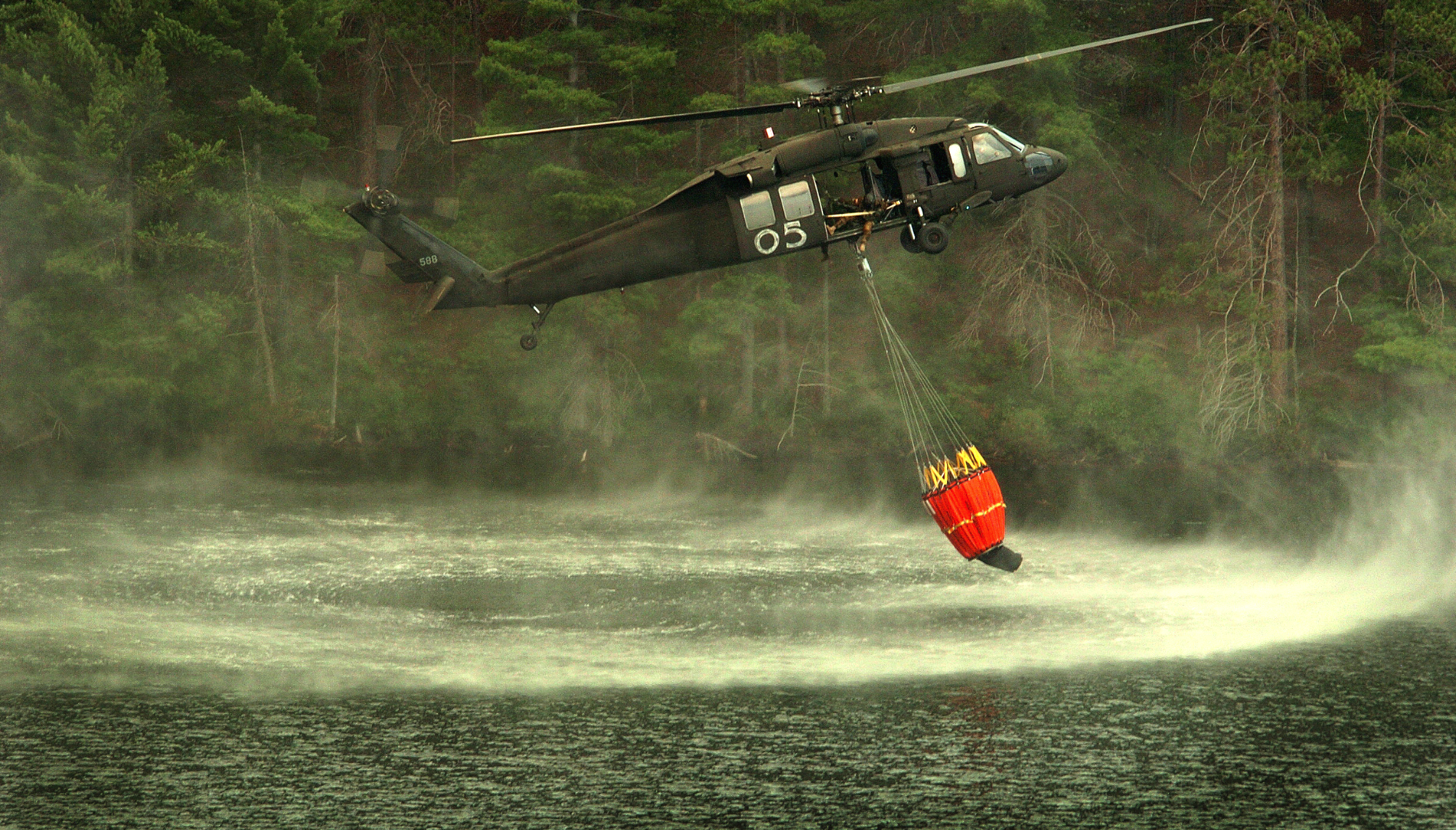
- 27 Apr 2024
Why is it in the News?
Recently, an Indian Air Force MI 17 V5 helicopter, equipped with a Bambi Bucket, was deployed to combat the forest fires in Nainital district, Uttarakhand.
What is a Bambi Bucket?
- Bambi Bucket is a specialised aerial firefighting tool that has been in use since the 1980s.
- It is essentially a lightweight collapsible container that releases water from underneath a helicopter to targeted areas.
- The water is released by using a pilot-controlled valve.
- One of its key features is that it can be quickly and easily filled.
- The bucket can be filled from various sources, including a lake, river, pond, and swimming pool, which allows firefighters to swiftly refill it and return to the target area.
- Bambi Bucket is available in a variety of sizes and models, with capacities ranging from 270 liters to more than 9,840 liters.
How was the Bambi Bucket Invented?
- The Bambi Bucket was invented by Don Arney, a Canadian business, in 1982.
- Arney came up with the idea after he realised that the aerial firefighting water buckets in use at the time were not efficient and had a high failure rate.
- These water buckets were generally made of “solid fiberglass, plastic, or canvas with metal frames” and were “too rigid to fit inside the aircraft” and had to be “trucked to fire sites or flown in on the hook of a helicopter thereby slowing the aircraft down.
- Another issue was that the water dropped from these containers used to get dispersed into a spray thereby reducing impact.
- Bambi Bucket does not have these limitations.
- One, it can be stored within the helicopter until development.
- Two, it discharges a solid column of water, “resulting in a more accurate and effective water dump, less evaporation on the descent, and greater impact force.
- It was an instant success and began to be widely used for firefighting.
- Today, Bambi Bucket is used in more than 115 countries around the world by more than 1,000 helicopter operators.
Carnation Revolution

- 27 Apr 2024
Why is it in the News?
Recently, Portugal commemorated its 50th anniversary of Portugal's Carnation Revolution – the peaceful uprising that toppled a dictatorship and ended a decade of colonial war.
About the Carnation Revolution:
- The Carnation Revolution, also known as the 25th of April, was a pivotal event in Portugal's history that marked the transition from an authoritarian regime to a democratic government.
- On April 25, 1974, a group of military officers orchestrated a nearly bloodless military coup, overthrowing the Estado Novo dictatorship that had ruled Portugal for over four decades.
- The revolution aimed to accelerate decolonization, end ongoing wars through negotiations, and improve socio-economic conditions within Portugal.
- This event not only transformed Portugal's political landscape but also had significant implications for the nation's African colonies.
- Several factors contributed to the success of the Carnation Revolution, including widespread discontent with the authoritarian regime, a costly and unpopular colonial war, and the growing desire for democracy and improved living conditions.
- The coup leaders, known as the Armed Forces Movement (MFA), garnered support from various factions, including the Communist Party, socialists, and moderate democrats.
- The Carnation Revolution was named after a Lisbon flower seller who offered red carnations to soldiers, which were then placed in the barrels of their rifles.
- This iconic gesture symbolized the peaceful nature of the coup and solidified the carnation as a symbol of Portugal's democratic movement.
- The 50th anniversary of the Carnation Revolution celebrated on April 25, 2024, signifies the enduring impact of this historic event on Portugal's political trajectory and its relationship with its former colonies.
Bathymetry
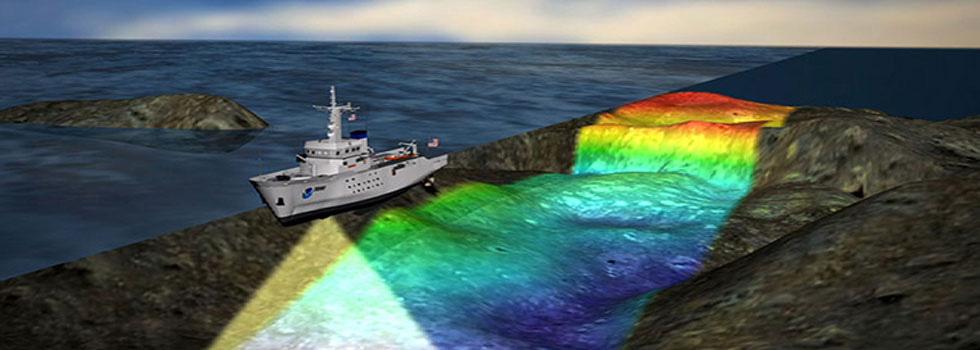
- 26 Apr 2024
Why is it in the News?
Scientists from the Indian National Centre for Ocean Information Services (INCOIS) recently conducted a study of the bathymetry, or ocean floor, in the Indian Ocean.
What is Bathymetry?
- Bathymetry is a technique dedicated to mapping the depths of water bodies, that is, it is the measurement and representation of the topography of the bottom of rivers, seas, and oceans.
- In addition to measuring depth, this study also includes identifying underwater relief and creating three-dimensional maps of the sea floor.
- The word “bathymetry” comes from the Greek "bathýs", meaning deep, and "metron", meaning measure.
- Bathymetry allows for obtaining information about the physical characteristics of the sea floor, such as seamounts, mountain ranges, valleys, abyssal plains, and underwater canyons.
How is Bathymetry Performed?
- To carry out bathymetry, specific equipment is used, such as multibeam sonar (MultiBeam Echosounder), IMU (Inertial Measurement Unit), and high-precision positioning systems (via satellite with RTK correction).
- Multibeam sonar emits sound pulses toward the sea floor and measures the time it takes for the sound to return to the sensor after being reflected by submerged surfaces.
- Based on this sound return time and knowledge of the exact position of the vessel and its attitude (roll, pitch, yaw), it is possible to calculate the depth at a given point.
- The bathymetry service generates charts, blueprints, and digital models (2D and 3D) of the sea floor.
- LiDAR sensors, on the other hand, are used to detect data through beams of light above the waterline, mapping slopes, rockfills, and channel walls.
- The fusion of bathymetry data with Lidar data allows the three-dimensional construction of the environment in very high resolution.
- Allowing the client to plan or verify works and/or assets in the region of interest.
About Indian National Centre for Ocean Information Services (INCOIS):
- Established in 1999, the Indian National Centre for Ocean Information Services (INCOIS) under the Ministry of Earth Science, Govt of India.
- It is mandated to provide ocean information and advisory services to a broad spectrum of users through sustained ocean observations and constant improvements through systematic and focused research.
- The activities include data services, consultancy, and capacity development.
- HQ: Hyderabad
- INCOIS is a permanent member of the Indian delegation to the IOC of UNESCO and a founding member of the Indian Ocean Global Ocean Observing System (IOGOOS) and the Partnership for Observing the Oceans (POGO).
Inflammatory bowel disease (IBD)
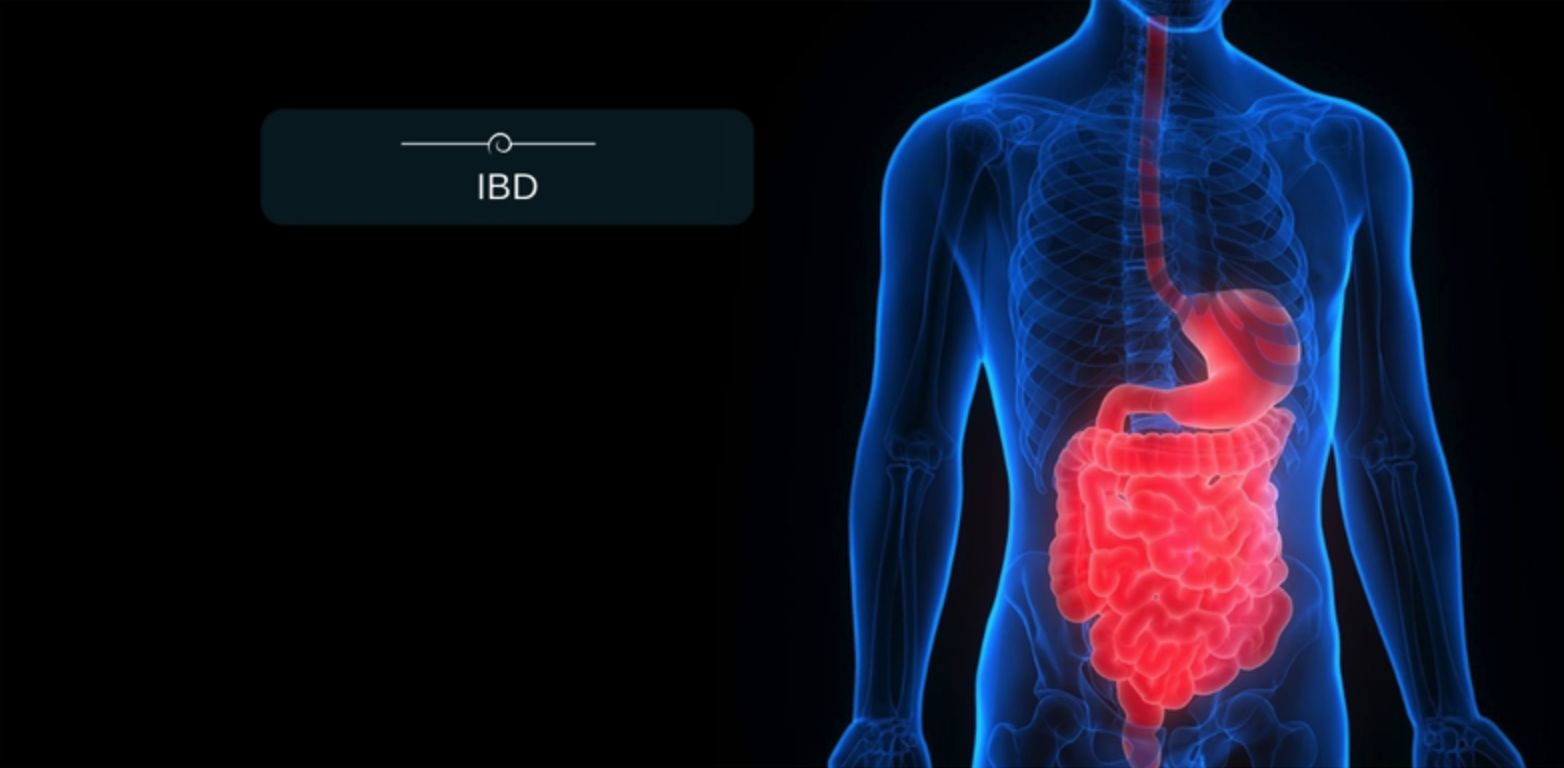
- 26 Apr 2024
Why is it in the News?
The rising incidence of Inflammatory Bowel Disease (IBD) across the globe has become a concern for doctors, while early diagnosis is lacking, diagnosis in itself is challenging considering that other conditions could mimic IBD.
What is IBD?
- Inflammatory bowel disease (IBD) is a recurring and long-term (chronic) condition that affects the digestive tract.
- IBD causes inflammation of the stomach, small intestine, and colon.
- IBD is a progressive disease that can become worse over time and cause other damage if not properly diagnosed and treated.
- There are two types of IBD: Crohn’s disease and ulcerative colitis.
- Crohn’s disease: leads to inflammation anywhere in the gastrointestinal tract, however, it commonly affects the end of the small intestine (the ileum) and the beginning of the large intestine (the right colon).
- Crohn’s disease can also affect the entire thickness or alternating areas of the bowel wall.
- Ulcerative colitis: causes inflammation in the large intestine or colon.
- This form of IBD inflames the innermost lining of the colon and creates tiny open sores (ulcers).
- Crohn’s disease: leads to inflammation anywhere in the gastrointestinal tract, however, it commonly affects the end of the small intestine (the ileum) and the beginning of the large intestine (the right colon).
What causes IBD?
- The exact cause of IBD is unknown, but IBD is the result of a weakened immune system. Possible causes are:
- The immune system responds incorrectly to environmental triggers, such as a virus or bacteria, which causes inflammation of the gastrointestinal tract.
- There also appears to be a genetic component.
- Someone with a family history of IBD is more likely to develop this inappropriate immune response.
Symptoms of IBD:
- Although Crohn's disease and ulcerative colitis are different conditions, IBD conditions have similar symptoms, such as:
- Abdominal pain
- Diarrhea
- Rectal bleeding
- Vomiting
- Weight loss
How Is Inflammatory Bowel Disease (IBD) Treated?
- While there is no curative treatment for IBD, it is managed through medication, dietary changes, and occasionally surgery.
- The treatment aims to alleviate symptoms, mitigate complications, prevent future flare-ups, and potentially promote the healing of inflamed intestines.
Indian Historical Records Commission (IHRC)
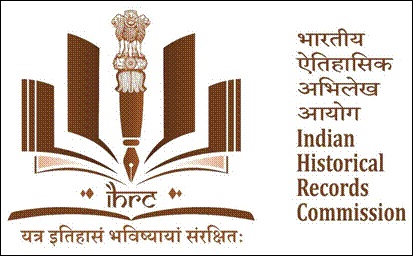
- 26 Apr 2024
Why is it in the News?
Recently, the Indian Historical Records Commission (IHRC) has adopted a new logo and motto.
About Indian Historical Records Committee (IHRC):
- The Indian Historical Records Committee (IHRC) is a national forum established in 1919, comprising creators, custodians, and users of records.
- Its primary purpose is to advise the Government of India on matters related to record management and their utilization for historical research.
Secretariat:
- The National Archives of India, New Delhi, serves as the Secretariat for the IHRC, formerly known as the Indian Historical Records Committee since 1911.
Leadership and Membership:
- Led by the Union Minister of Culture, the IHRC consists of 134 members, including government agencies, government-appointed nominees, representatives from State/UT Archives, universities, and learning institutions.
- Over the years, the IHRC has convened 62 sessions.
Committee Structure: The IHRC operates with two adjunct bodies:
- Editorial Committee: Responsible for reviewing and approving papers based on archival sources for presentation at committee sessions.
- Standing Committee: Tasked with reviewing the implementation of committee recommendations and providing input on meeting agendas.
- The Secretary of the Ministry of Culture chairs the Standing Committee of IHRC.
- The Indian Historical Records Commission (IHRC) has adopted a new logo and motto recently.
- The logo signifies the theme and uniqueness of IHRC entirely.
- The pages in the shape of lotus petals represent IHRC as the resilient nodal institution for maintaining historical records.
- The Sarnath pillar in the middle represents India's glorious past.
- Brown as the colour theme reinforces the organization's mission of preserving, studying, and honouring India's historical records.
- The motto translates as "Where history is preserved for the future."
- The IHRC plays a vital role in identifying, collecting, cataloging, and maintaining historical documents, manuscripts other sources of historical information.
- By doing so the Commission ensures that valuable historical knowledge is conserved for future generations.
- The motto, therefore, reflects the Commission's commitment to ensuring the safeguarding of historical documents and making these accessible for the benefit of present and future generations.
Nephrotic Syndrome
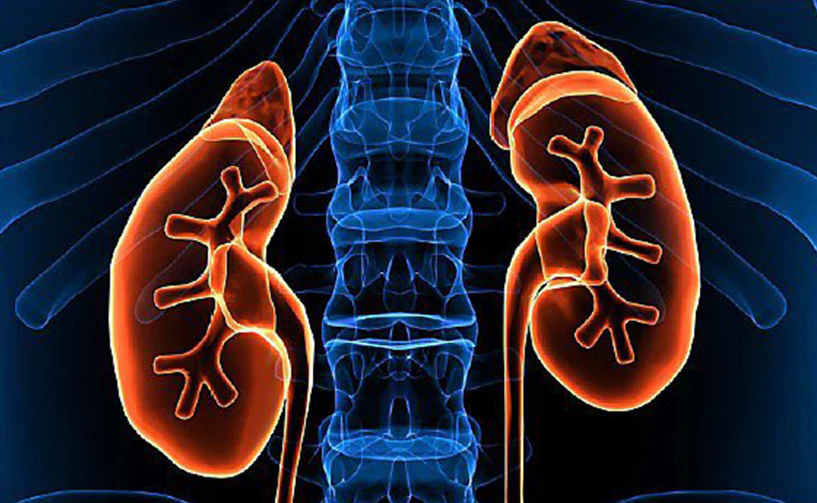
- 26 Apr 2024
Why is it in the News?
On the heels of recent news reports on how keratin-based hair-straightening products containing glycolic acid derivatives led to severe kidney injury in women, researchers from Kerala have reported a series of cases wherein, the use of fairness creams has been linked to nephrotic syndrome.
What is Nephrotic Syndrome?
- Nephrotic syndrome causes scarring or damage to the filtering part of the kidneys (glomeruli).
- This causes too much protein to be lost from the blood into the urine.
People with nephrotic syndrome often have:
-
- Low levels of protein in the blood (hypoalbuminemia)
- Very high levels of protein in the urine (proteinuria)
- Swelling (edema), especially around the eyes, feet, and hands
- High cholesterol
What causes nephrotic syndrome?
- Nephrotic syndrome results from damage to the kidneys' glomeruli.
- These are the tiny blood vessels that filter waste and excess water from the blood and send them to the bladder as urine.
- The glomeruli keep protein in the body. When they are damaged, protein leaks into the urine.
- Healthy kidneys allow less than 1 gram of protein to spill into the urine in a day.
- In nephrotic syndrome, the glomeruli let 3 grams or more of protein leak into the urine during 24 hours.
- Nephrotic syndrome may happen with other health problems, such as kidney disease caused by diabetes and immune disorders.
- It can also develop after damage from viral infections.
- The cause of nephrotic syndrome is not always known.
What are the symptoms of nephrotic syndrome?
- The symptoms of nephrotic syndrome include:
- Swelling or edema, typically in the ankles, feet, or legs
- Fatigue
- Loss of appetite
- Weight gain
- Foamy urine
Treatment:
- The treatment of nephrotic syndrome varies depending on its cause.
- However, it typically includes medications to treat the underlying cause, as well as changes in diet.
- Dietary changes that might help in treating nephrotic syndrome include Source:
- limiting sodium
- eating less protein
- reducing the intake of saturated fat and cholesterol
Complications of nephrotic syndrome:
- Serious complications of nephrotic syndrome include kidney failure or end-stage renal disease (ESRD).
- Dialysis may be needed if kidney failure develops which can happen in extreme cases.
Army Tactical Missile Systems (ATACMS)
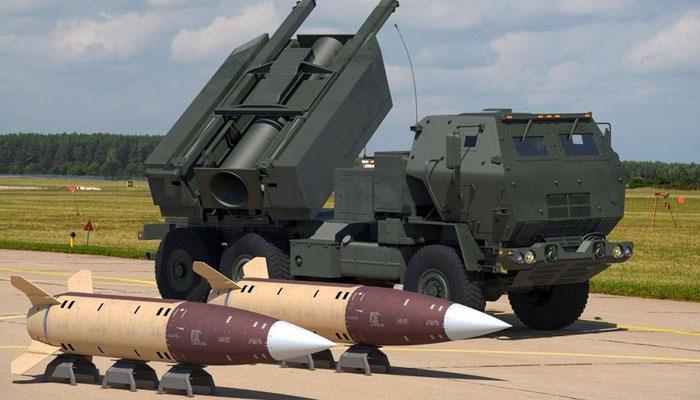
- 26 Apr 2024
Why is it in the News?
The United States has confirmed providing long-range Army Tactical Missile Systems (ATACMS) to Ukraine to aid its war effort against Russia.
What is the ATACMS System?
- The Army Tactical Missile Systems (ATACMS) is one of the most potent missile systems built by US-based arms manufacturer Lockheed Martin.
- This is a surface-to-surface artillery weapon system.
- Its biggest strengths are the long-range of attack, the ability to fire cluster munitions, and the weapon system’s mobility.
- Range: There is a mid-range version of the ATACMS, called Block 1, and a long-range version, Block 1A.
- ATACMS Block 1 has a range of 165 kilometres. Ukraine was provided these systems last year and used them to attack targets in October.
- ATACMS Block 1A, on the other hand, has a maximum range of 300 km. However, this depends on the kind of munition the missile carries.
- With such a range, the long-range ATACMS Block 1A is capable of striking targets well beyond the range of existing Army cannons, rockets, and other missiles.
- Mobility: ATACMS missiles are fired from the High Mobility Artillery Rocket System (HIMARS) and M270 Multiple Launch Rocket System (MLRS) platforms. Both of these launching systems are highly mobile automatic systems.
Why Ukraine can’t use ATACMS to Target Russian Territories?
- Despite territories deep inside Russia now being within the range of the ATACMS, Ukraine cannot use it to hit targets in these locations.
- Ukraine has committed to only use the weapons inside Ukraine, not in Russia.
- The US administration has made it clear that the weapons cannot be used to hit targets inside Russia.
- The Biden administration is concerned that if Ukraine strikes deep into Russian territory, it will anger Moscow and escalate the conflict.
Microsoft Phi-3-Mini

- 25 Apr 2024
Why is it in the News?
A few days after Meta unveiled its Llama 3 Large Language Model (LLM), Microsoft recently unveiled the latest version of its ‘lightweight’ AI model – the Phi-3-Mini.
What is Phi-3-Mini?
- Phi-3 refers to a series of language models developed by Microsoft, with Phi-3-mini being a notable addition.
- Phi-3-mini is a 3.8 billion parameter language model trained on 3.3 trillion tokens, designed to be as powerful as larger models while being small enough to be deployed on a phone.
- Despite its compact size, Phi-3-mini boasts impressive performance, rivaling that of larger models such as ChatGPT-3.5.
- Furthermore, Phi-3-mini can be quantized to 4 bits, occupying approximately 1.8GB of memory, making it suitable for deployment on mobile devices.
- The model’s training data, a scaled-up version of the one used for Phi-2, is composed of heavily filtered web data and synthetic data, contributing to its remarkable capabilities.
Advantages and Challenges of Phi-3-Mini:
- Phi-3-mini exhibits strengths in its compact size, impressive performance, and the ability to be deployed on mobile devices.
- Its training with high-quality data and chat-finetuning contribute to its success. This allows it to rival larger models in language understanding and reasoning.
- However, the model is fundamentally limited by its size for certain tasks.
- It cannot store extensive “factual knowledge,” leading to lower performance on tasks such as TriviaQA.
- Nevertheless, efforts to resolve this weakness are underway, including augmentation with a search engine and exploring multilingual capabilities for Small Language Models.
- Safety: Phi-3-mini was developed with a strong emphasis on safety and responsible AI principles, in alignment with Microsoft’s guidelines.
- The approach to ensuring safety involved various measures such as safety alignment in post-training, red-teaming, and automated testing.
- It also involved evaluations across multiple categories of responsible AI (RAI) harm.
How is Phi-3-Mini Different From LLMs?
- Phi-3-mini is the Small Language Model (SLM). Simply, SLMs are more streamlined versions of large language models.
- When compared to Large Language Model (LLM), smaller AI models are also cost-effective to develop and operate, and they perform better on smaller devices like laptops and smartphones.
- SLMs are great for “resource-constrained environments including on-device and offline inference scenarios.
- Such models are good for scenarios where fast response times are critical, say for chatbots or virtual assistants.
- Moreover, they are ideal for cost-constrained use cases, particularly with simpler tasks.
- While LLMs are trained on massive general data, SLMs stand out with their specialisation.
- Through fine-tuning, SLMs can be customised for specific tasks and achieve accuracy and efficiency in doing them.
- Most SLMs undergo targeted training, demanding considerably less computing power and energy compared to LLMs.
- SLMs also differ when it comes to inference speed and latency.
- Their compact size allows for quicker processing and their cost makes them appealing to smaller organisations and research groups.
Ross Ice Shelf
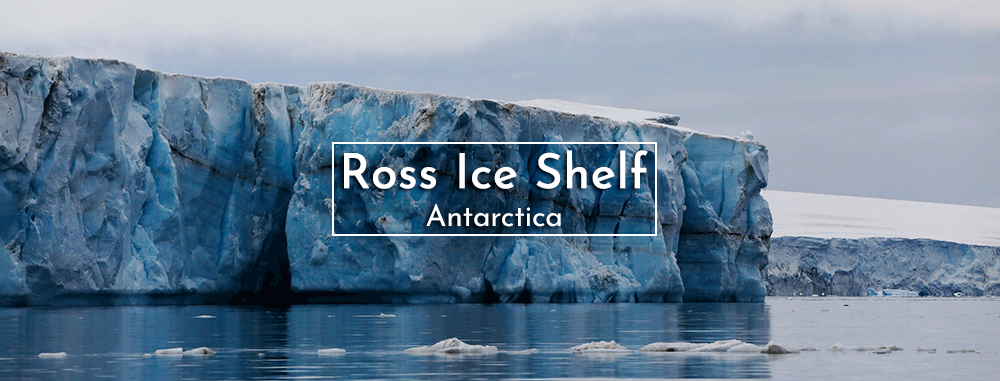
- 25 Apr 2024
Why is it in the News?
New research has found a "missing piece of the puzzle" of West Antarctic Ice Sheet melt, revealing that the collapse of the ice sheet in the Ross Sea region can be prevented—if we keep to a low-emissions pathway.
About Ross Ice Shelf:
- The Ross Ice Shelf is a floating mass of land-ice, with a front between 15 and 50 meters high. ?
- It is the largest ice shelf in Antarctica.
- Situated in the Ross Sea, it extends off the coast into the ocean, covering an impressive 487,000 square kilometers, roughly the size of France.
- Despite its vast surface area, only 10% of the ice shelf is visible above the water, mostly concealed beneath hundreds of meters of ice.
- The thickness of the Ross Ice Shelf varies significantly, ranging from about 100 meters to several hundred meters at its thickest points near the areas where the shelf connects to the Antarctic continent.
- The formation of the Ross Ice Shelf is the result of snow accumulation and compaction over time, which ultimately transforms into ice.
- It is continuously fed by glaciers draining from both the East and West Antarctic Ice Sheets, creating a balance as new ice is added while existing ice is removed through melting at the base and calving at the front.
- This massive ice shelf plays a critical role in stabilizing the Antarctic ice sheet.
About the Ross Sea:
- Location and Size: The Ross Sea is a vast, remote bay located just 320 km from the South Pole, positioned south and slightly east of New Zealand.
- It covers an area of approximately 370,000 square miles (960,000 square km), making it the largest polar marine ecosystem in the world.
- The sea's dynamics are significantly shaped by the coastal East-Wind Drift, which establishes a vast clockwise gyre, complemented by deepwater upwelling phenomena.
- Notably, it holds the distinction of being Antarctica's first protected area, serving as a habitat for a plethora of penguin species and numerous whale species.
- Depth: Despite its vast size, the Ross Sea is relatively shallow, with an average depth of approximately 530 meters.
- Historical Exploration: The sea is named after British explorer Sir James Clark Ross, who first visited the area in 1841 during his expedition to Antarctica.
- The Ross Sea's importance to both the scientific community and global conservation efforts cannot be overstated, as it provides valuable insights into the effects of climate change on polar ecosystems.
Global Tiger Conservation Coalition
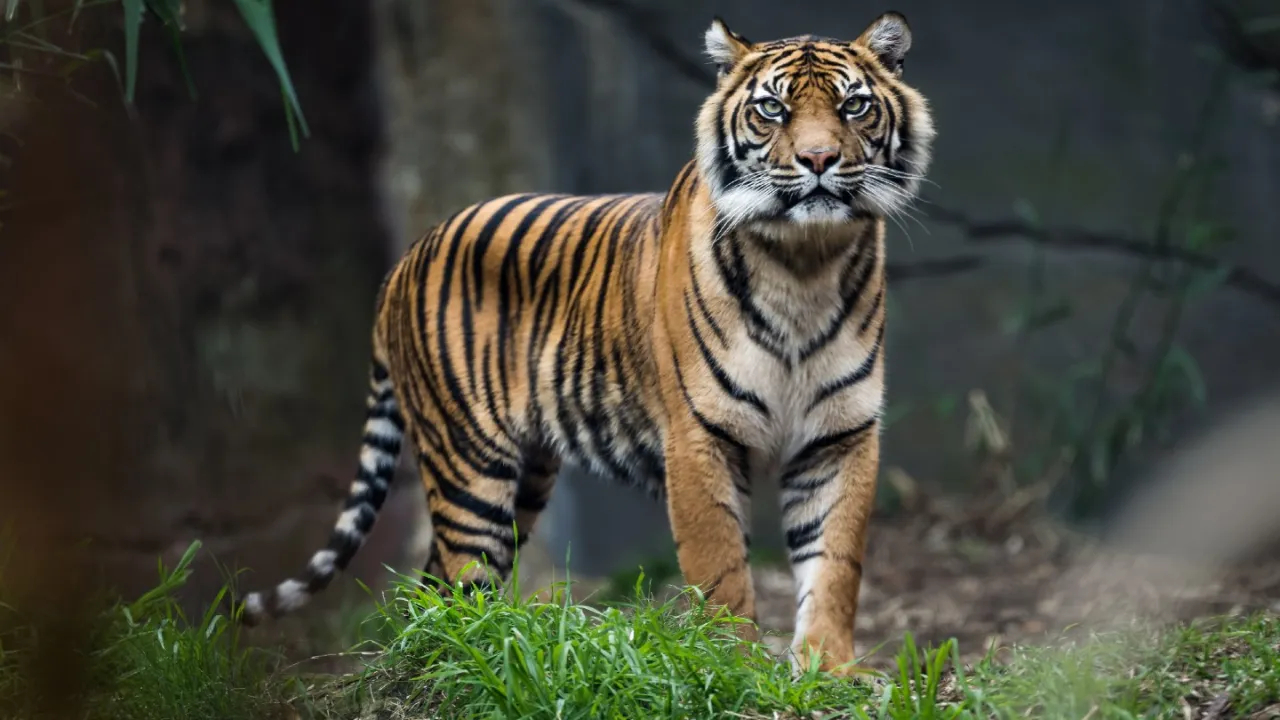
- 25 Apr 2024
Why is it in the News?
At the Sustainable Finance for Tiger Landscapes Conference, Bhutan and the Tiger Conservation Coalition pledged to mobilize $1 billion for tiger conservation efforts.
About the Tiger Conservation Coalition:
- The Tiger Conservation Coalition is a group of non-governmental organizations (NGOs) that have worked for many years with partners to conserve tigers.
- It brings together leading tiger biologists and experts in wildlife crime, human-wildlife coexistence, policy, finance, development, and communications with unprecedented alignment on achieving tiger conservation at scale.
- Its member organizations include the Environmental Investigation Agency (EIA), Fauna & Flora, the International Union for Conservation of Nature and Natural Resources (IUCN), Panthera, TRAFFIC, United Nations Development Programme (UNDP), Wildlife Conservation Society (WCS) and World Wide Fund for Nature (WWF).
- It is an independent group of organizations that combines and shares the vast knowledge, on-the-ground experience, and data of its members and partners to support Tiger Range Countries in developing and implementing effective approaches to tiger conservation.
- The Coalition was founded on strong relationships among eminent tiger experts already working together on major tiger assessments, including the latest assessment by the IUCN Red List of Threatened Species released in 2022, and the forthcoming Green Status Assessment, and coalesced around a common vision for tiger recovery.
- By engaging national and local civil society organizations from the region, and continuing to support the Global Tiger Initiative Council and the Global Tiger Forum, the coalition aims to further strengthen partnerships and impactful outcomes for tigers.
- In January 2022, the Tiger Conservation Coalition released its vision for tiger recovery through 2034, the next Year of the Tiger.
- “Securing a Viable Future for the Tiger” presents a set of measurable goals and high-level strategic approaches to achieve the long-term presence of viable and ecologically functional populations of wild tigers.
- Its suggested actions, grounded in the latest science and results, would lead to increasing numbers of tigers secure in current and expanded protected habitats, with distribution and connectivity across their indigenous range.
- Tiger Conservation Coalition members co-developed Tiger Conservation Landscapes 3.0, an integrated habitat modeling system to measure and monitor changes in tiger habitat at range-wide, national, biome, and landscape scales in near real-time.
- This work serves as a model for objective, range-wide, habitat monitoring as countries work to achieve the goals laid out in the 30x30 agenda, the Sustainable Development Goals, and the Kunming-Montreal Global Biodiversity Framework.
Global Report on Food Crises (GRFC) 2024
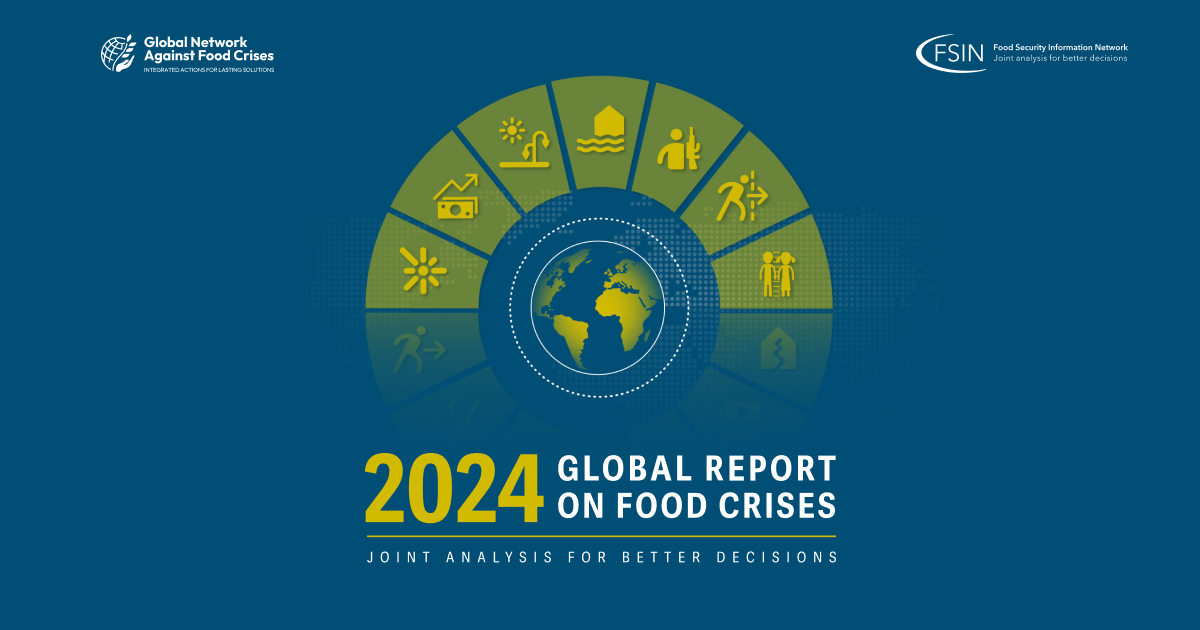
- 25 Apr 2024
Why is it in the News?
Nearly 282 million people faced high levels of acute food insecurity in 59 countries in 2023, with extreme weather being the second most significant factor driving food crisis, revealed the 2024 Global Report on Food Crisis (GRFC) released April 24, 2024.
About Global Report on Food Crises (GRFC) 2024:
- The Global Report on Food Crises (GRFC) 2024, released annually by the Food Security Information Network (FSIN), provides a comprehensive analysis of global food crises and their causes.
- Launched by the Global Network Against Food Crises, a multistakeholder initiative involving United Nations agencies, the European Union, the United States Agency for International Development, and various non-governmental agencies, the report highlights the alarming state of food insecurity worldwide.
Key findings from the GRFC 2024 include:
- Analysis of 1.3 billion people in 59 countries in 2023, with nearly 282 million facing high levels of acute food insecurity.
- Identification of 2023 as the fifth consecutive year of rising numbers of people suffering acute food insecurity, defined as life or livelihood-threatening food deprivation.
- Conflicts, extreme weather events, and economic shocks have been identified as the primary drivers behind worsening food crises globally.
- Conflict hotspots like Palestine's Gaza Strip and Sudan experienced a significant escalation in food crises during 2023, with conflict and insecurity becoming the main drivers in 20 countries, directly affecting 135 million people.
- The Gaza Strip emerged as the area with the most severe food crisis over the past eight years of GRFC reporting, while Sudan is facing one of the worst food crises globally, with nearly one-third of its population in need of emergency food assistance.
- Weather extremes were the main driver in 18 countries, causing over 72 million people to face high levels of acute food insecurity.
- The 10 countries experiencing the largest food crises in 2023 included the Democratic Republic of Congo, Nigeria, Sudan, Afghanistan, Ethiopia, Yemen, Syria, Bangladesh, Pakistan, and Myanmar.
- On a positive note, the food crisis improved in 17 countries, including the Democratic Republic of Congo and Ukraine.
- The GRFC 2024 report emphasizes the urgent need for coordinated global efforts to address the root causes of food crises and enhance the resilience of vulnerable populations.
- By understanding and responding to these challenges, we can work towards a more food-secure future for all.
International Conference on Disaster Resilient Infrastructure (ICDRI)
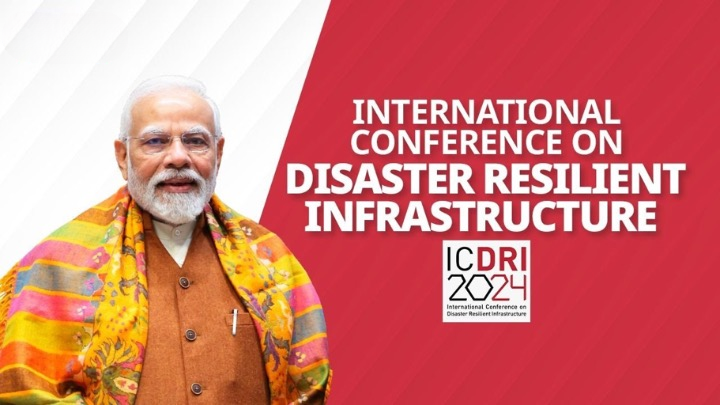
- 25 Apr 2024
Why is it in the News?
Countries must build “resilient infrastructure” against natural disasters that are becoming more frequent and severe, said Prime Minister Narendra Modi recently.
About the Coalition for Disaster-Resilient Infrastructure (CDRI):
- The Coalition for Disaster-Resilient Infrastructure (CDRI) is a global partnership comprising national governments, UN agencies and programs, multilateral development banks, private sector entities, and academic institutions.
- Established during the United Nations Climate Action Summit in 2019 in New York, CDRI is dedicated to addressing the challenges associated with building resilience in infrastructure systems and development processes.
Objectives:
- CDRI aims to enhance the resilience of infrastructure systems to climate and disaster risks, thereby promoting sustainable development.
- It seeks to expedite the development and retrofitting of resilient infrastructure to meet the imperatives of the Sustainable Development Goals, including universal access to basic services and fostering prosperity and decent work.
- Serving as an inclusive multi-stakeholder platform, CDRI is led and managed by national governments. It facilitates the exchange of knowledge on various aspects of infrastructure resilience.
- CDRI brings together diverse stakeholders to create mechanisms assisting countries in upgrading their capacities, systems, standards, regulations, and practices related to infrastructure development, tailored to their risk contexts and economic needs.
Membership:
- Since its inception, 39 countries, 7 international organizations, and 2 private sector organizations joined as members.
- International organizations include:
- The Asian Development Bank (ADB)
- World Bank Group
- United Nations Development Programme (UNDP)
- United Nations Office for Disaster Risk Reduction (UNDRR)
- European Union
- European Investment Bank, and
- The Private Sector Alliance for Disaster-Resilient Societies (ARISE)
- The CDRI is the second major coalition launched by India outside of the UN, the first being the International Solar Alliance.
Secretariat:
- CDRI's secretariat is based in New Delhi, India.
Golden trevally Fish
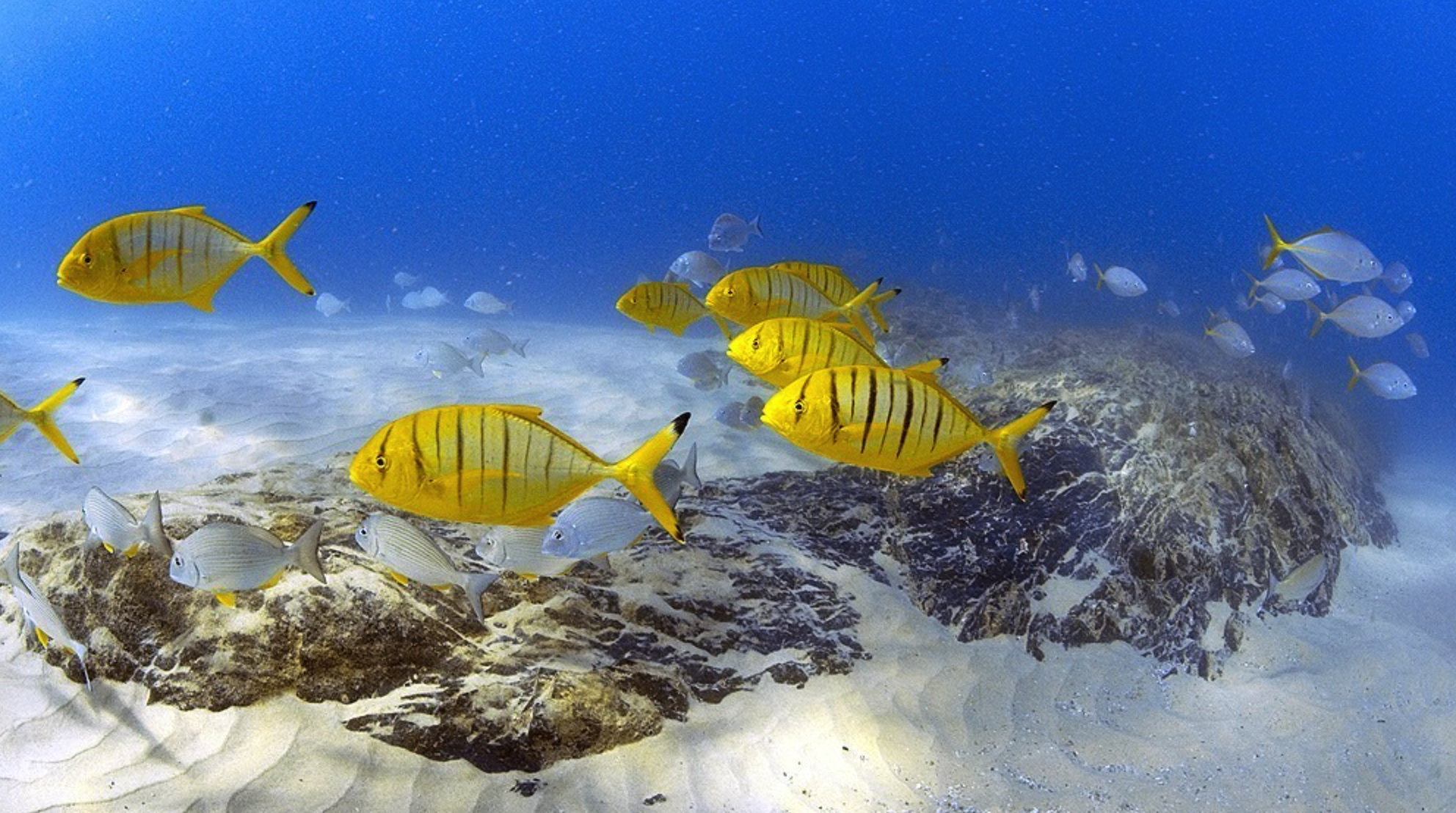
- 24 Apr 2024
Why is it in the News?
The golden trevally, a popular marine fish on Tamil Nadu’s coastline, has been successfully bred in captivity by scientists at ICAR-CMFRI’s Visakhapatnam station.
What is Golden trevally Fish?
- The Golden Trevally (Gnathanodon speciosus), also known as the Golden Kingfish or Banded Trevally, is a popular and fascinating marine fish species found in the Indo-Pacific and Eastern Pacific regions.
- It typically inhabits deep lagoons and seaward reefs, often in association with larger fish species.
- This fish is highly sought-after for both consumption and ornamental purposes due to its faster growth rates, good meat quality, and attractive appearance.
- According to fish landing observations in India, golden trevally are primarily landed at reef area fishing grounds in Tamil Nadu, Puducherry, Kerala, Karnataka, and Gujarat.
About the Central Marine Fisheries Research Institute (CMFRI):
- CMFRI was established in 1947 under India's Ministry of Agriculture and Farmers Welfare.
- It joined the Indian Council of Agricultural Research (ICAR) in 1967.
The institute's primary objectives include:
- Monitoring exploited marine fisheries resources and assessing under-exploited resources within India's Exclusive Economic Zone.
- Understanding fluctuations in marine fisheries resources in response to environmental changes.
- Developing sustainable mariculture technologies for finfish, shellfish, and other organisms to supplement capture fishery production.
- The CMFRI's notable achievements include developing the "Stratified Multistage Random Sampling Method" for estimating fishery catch and effort along India's 8,000 km coastline.
- Headquartered in Kochi, Kerala, the institute continues to contribute significantly to the growth and development of India's marine fisheries sector.
State of the Climate in Asia 2023 Report
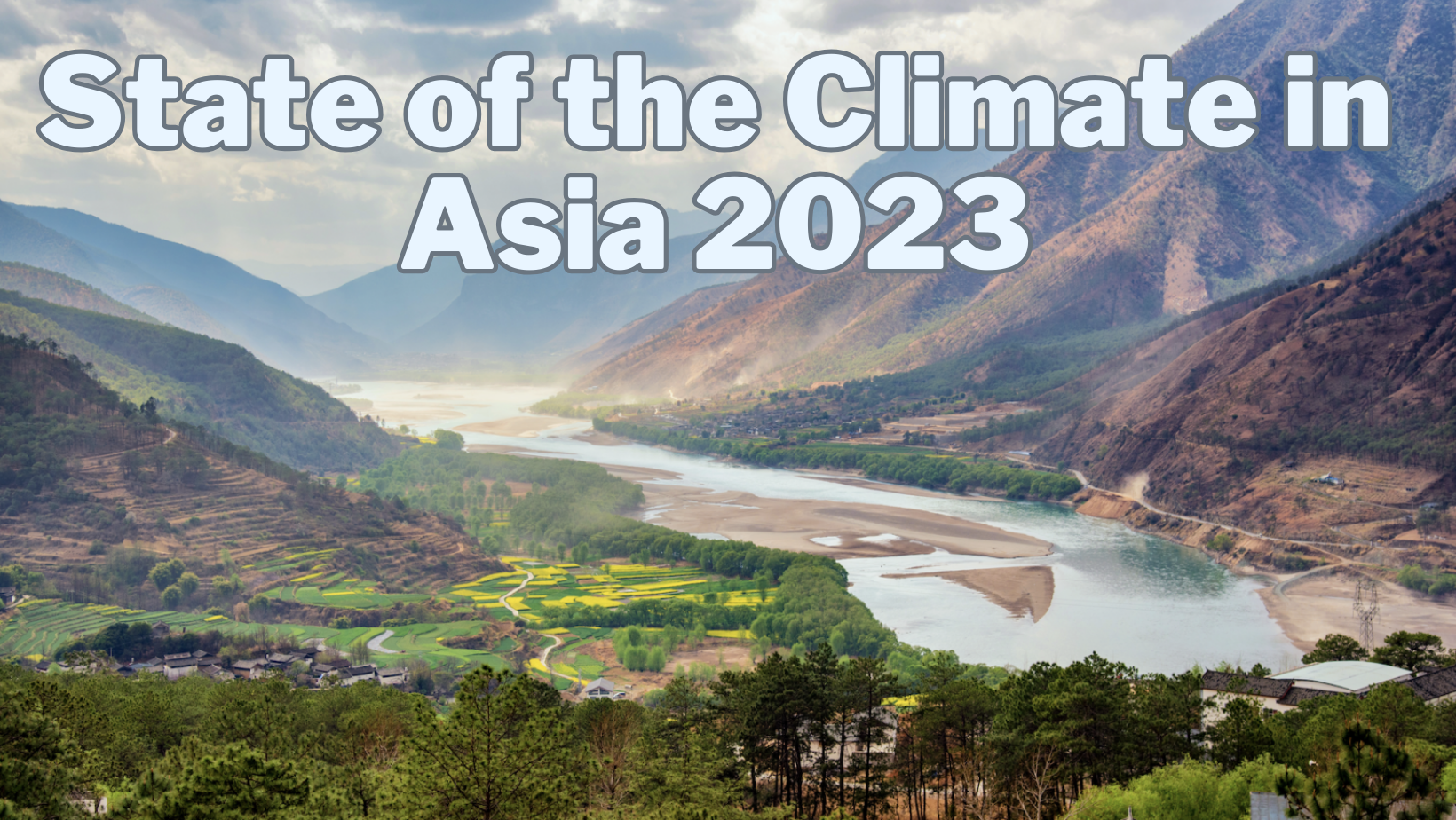
- 24 Apr 2024
Why is it in the News?
As Asia is warming faster than the global average, it is witnessing more extreme weather, climate, and water-related events than any other region across the world.
Highlights of the State of the Climate in Asia 2023 Report:
- The 2023 State of the Climate in Asia Report, spearheaded by the World Meteorological Organization, sheds light on significant climate trends and events across the continent:
- In 2023, Asia witnessed 79 extreme climate events, affecting over nine million individuals, making it the most disaster-affected region.
- Atmospheric concentrations of carbon dioxide, methane, and nitrous oxide soared to unprecedented levels in 2022.
- Oceans have absorbed approximately a quarter of the carbon dioxide emitted annually into the atmosphere since 1960, resulting in record-high ocean heat content in 2023.
- Tropical cyclone activity over the North Indian Ocean surpassed the average.
- 2023 marked Asia's second-highest mean temperature on record, with Japan and Kazakhstan experiencing record warmth.
- Glacial retreat accelerated in 2023, particularly in the East Himalayas and Central Asia's Tian Shan mountains, due to elevated temperatures and arid conditions.
About the World Meteorological Organisation:
- The World Meteorological Organization (WMO) is a specialized agency of the United Nations with a membership of 193 member states and territories.
- It is the UN system's authoritative voice on the state and behavior of the Earth's atmosphere, its interaction with the oceans, the climate it produces, and the resulting distribution of water resources.
- WMO originated from the International Meteorological Organization, the roots of which were planted at the 1873 Vienna International Meteorological Congress.
- Established by the ratification of the WMO Convention on 23 March 1950, WMO became the specialized agency of the United Nations for meteorology (weather and climate), operational hydrology, and related geophysical sciences a year later.
- The Secretariat, headquartered in Geneva, is headed by the Secretary-General.
- Its supreme body is the World Meteorological Congress.
Psychoanalysis
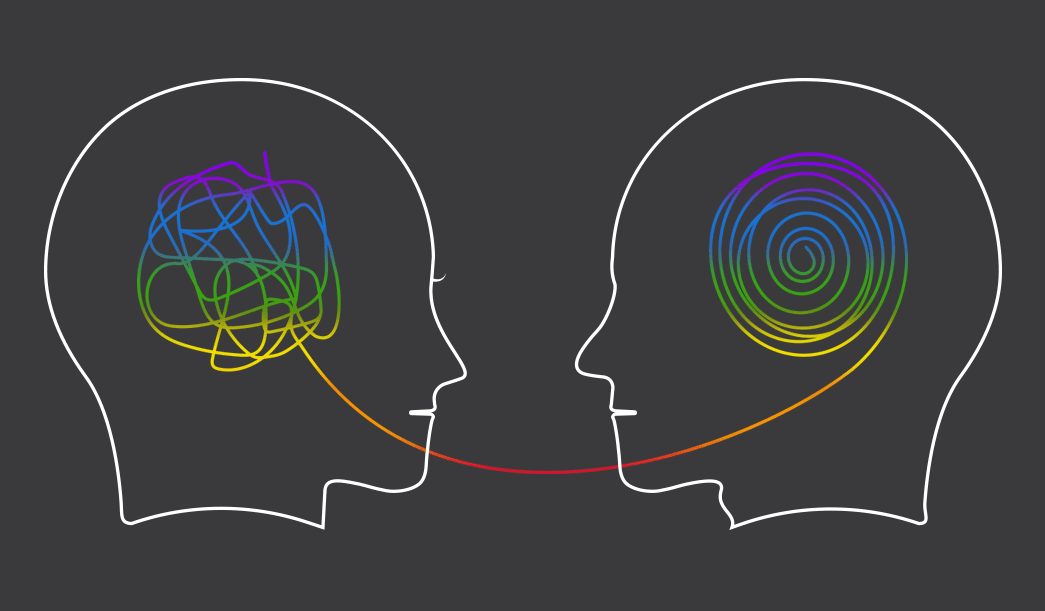
- 24 Apr 2024
Why is it in the News?
Sudhir Kakar, a pioneering Indian psychoanalyst, author, and cultural critic, passed away on Monday at the age of 85.
What is Psychoanalysis?
- Psychoanalysis is a set of psychological theories and therapeutic methods that focus on the unconscious mind, as well as the role of repressed emotions and desires in shaping behavior and mental health.
- Developed by Sigmund Freud in the late 19th and early 20th centuries, psychoanalysis is based on the idea that many of our thoughts, feelings, and actions are influenced by unconscious motives and conflicts, often rooted in childhood experiences.
- Psychoanalysis has three core components:
- A method of investigation of the mind and the way one thinks.
- A systematized set of theories about human behavior.
- A method of treatment for psychological and emotional issues.
- Key concepts in psychoanalysis include the id, ego, and superego (the structural model of the psyche), the Oedipus complex, defense mechanisms (such as repression, denial, and projection), and dream interpretation.
- During psychoanalysis therapy, a patient works closely with a therapist to explore and understand unconscious thoughts and feelings, often by discussing dreams, memories, and other experiences.
- The goal is to bring repressed emotions to the surface and address any underlying conflicts in order to alleviate mental distress and improve overall well-being.
- While psychoanalysis has had a significant influence on psychology and mental health treatment, it remains a controversial approach due to its lack of scientific rigor and emphasis on subjective interpretation.
- Nevertheless, many of its concepts have been adapted or integrated into other forms of therapy, and psychoanalysis remains an important part of the history and development of psychology.
Significance:
- It has profoundly impacted the fields of psychology and mental health treatment, as well as culture, literature, and the arts. Its significance can be understood through the following points:
- Foundational Role: Psychoanalysis provided a groundbreaking approach to understanding the human mind and behavior, shifting the focus from conscious experiences to unconscious mental processes.
- Influence on Psychology: Many concepts introduced by psychoanalysis, such as the unconscious mind, defense mechanisms, and the influence of early childhood experiences, have been adopted and adapted by various schools of psychology, including cognitive-behavioral, humanistic, and psychodynamic approaches.
- Therapeutic Approach: Psychoanalysis revolutionized the way mental health issues were treated, moving away from a purely medical model and emphasizing the importance of talking therapy in addressing psychological problems.
- Cultural Impact: The ideas of psychoanalysis have permeated culture, literature, and the arts, influencing our understanding of human motivations, relationships, and emotions. Concepts like Freudian slips, dream interpretation, and the Oedipus complex have become part of everyday language.
- Interdisciplinary Applications: The principles of psychoanalysis have been applied in fields beyond psychology, including sociology, anthropology, literature, and film studies.
- Despite criticisms and revisions, psychoanalysis remains a significant and influential theory that has shaped our understanding of the human mind and behavior.
- It continues to contribute to the development of psychological theories and therapeutic approaches, enriching our comprehension of mental health and human nature.
Crystal Maze-2 Missile
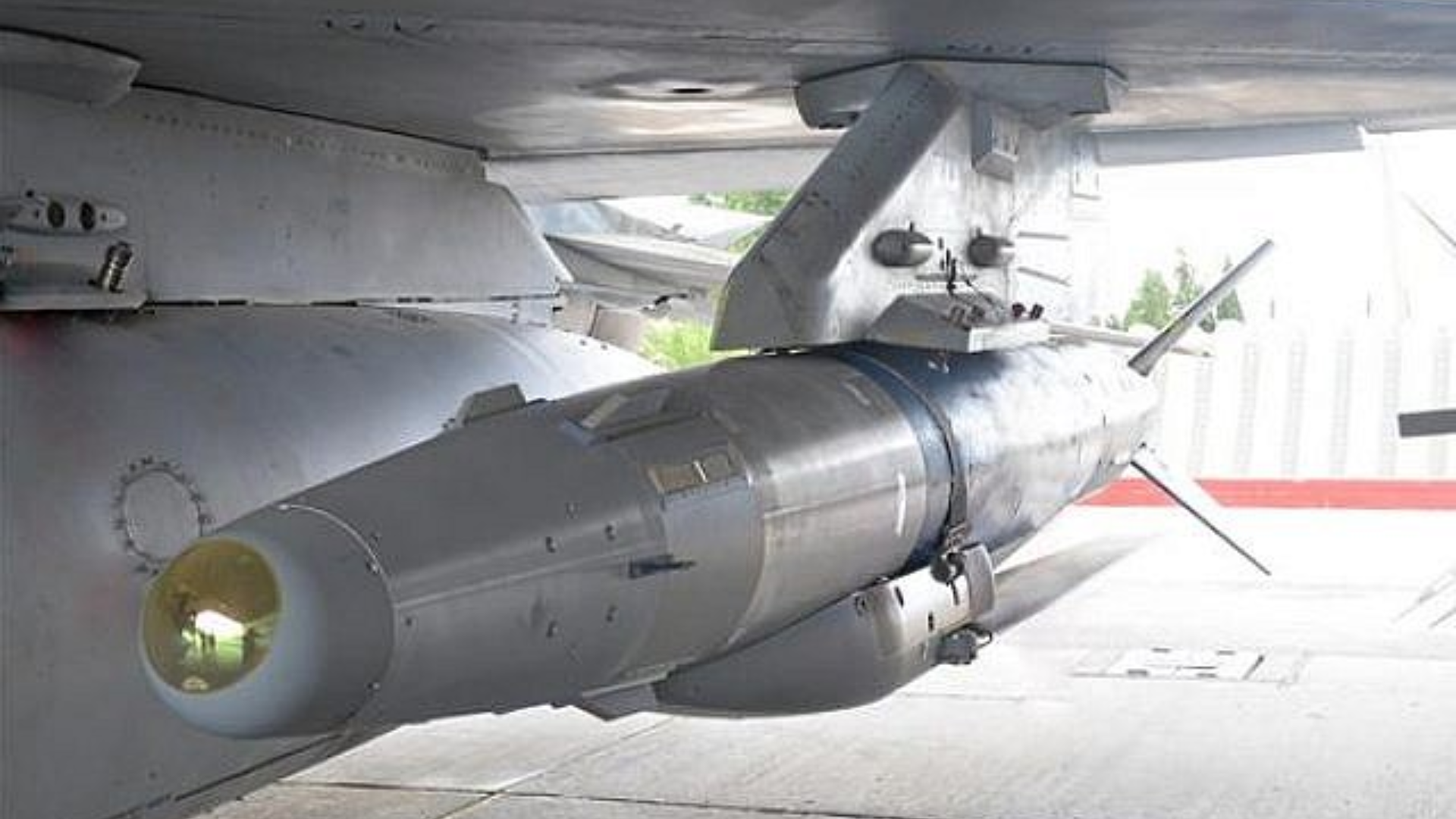
- 24 Apr 2024
Why is it in the News?
The Indian Air Force achieved a milestone by successfully test-firing an air-launched ballistic missile, ROCKS or Crystal Maze 2, capable of hitting targets over 250 kilometers away.
About Crystal Maze-2 Missile:
- Crystal Maze 2 missile also known as ROCKS is an advanced air-launched missile developed by Israel, designed for precision strikes on high-value targets.
- This missile is capable of engaging heavily fortified positions from long distances, ensuring minimal collateral damage.
- It is renowned for its accuracy and reliability in combat scenarios, making it a preferred choice for missions requiring surgical precision.
- The missile’s integration into various platforms enhances its operational flexibility and effectiveness in diverse combat environments.
Features:
- Crystal 2 operates effectively in GPS-denied areas and can breach regions secured by air defense systems.
- This system allows for the choice between penetration or blast fragmentation warheads, making it suitable for targeting both surface and heavily fortified underground facilities.
- With a striking distance of over 250 kilometers, it offers versatility with options for either penetration or blast fragmentation warhead, ensuring the destruction of above-ground or well-protected underground targets.
- India is currently developing the Crystal Maze 2 missile.
- The Indian Air Force (IAF) has successfully conducted tests on this missile and aims to procure it in large numbers under the Make in India initiative.
- This move highlights India’s dedication to achieving self-sufficiency in defense manufacturing.
Marburg virus disease (MVD)

- 24 Apr 2024
Why is it in the News?
The Kitum cave in Mount Elgon National Park, Kenya, is known as the world's deadliest cave which may have some really dangerous viruses inside, like Ebola and Marburg.
What is Marburg Virus Disease (MVD)?
- Marburg virus disease (MVD), formerly known as Marburg hemorrhagic fever, is a severe, often fatal illness in humans.
- It affects both people and non-human primates.
- Marburg and Ebola viruses are both members of the Filoviridae family (filovirus).
- Though caused by different viruses, the two diseases are clinically similar.
- Both diseases are rare and can cause outbreaks with high fatality rates.
- The average MVD case fatality rate is around 50%.
- Rousettus aegyptiacus, fruit bats of the Pteropodidae family, are considered to be natural hosts of the Marburg virus.
Transmission:
- Human infection with MVD typically occurs after prolonged exposure to Rousettus bats inhabiting mines or caves.
- The virus can then spread through human-to-human transmission via direct contact with infected bodily fluids, contaminated materials, or broken skin and mucous membranes.
Symptoms:
- After an incubation period of 2-21 days, symptoms arise abruptly, including fever, chills, headache, and muscle pain.
- A maculopapular rash may appear around day five, most visible on the chest, back, and stomach.
- Other symptoms, such as nausea, vomiting, chest pain, sore throat, abdominal pain, and diarrhea, can manifest, with severity increasing to potentially include jaundice, organ dysfunction, severe weight loss, delirium, and massive hemorrhaging.
- The average MVD case fatality rate is around 50%, varying between 24% and 88% in past outbreaks.
Treatment:
- There is currently no specific treatment for MVD, but early supportive care involving rehydration and symptom management improves survival rates.
Viral Hemorrhagic Fevers (VHFs):
- Viral Hemorrhagic Fever (VHFs) is a group of diseases caused by several distinct families of viruses that affect multiple organ systems in the body.
- These illnesses range from mild to severe and life-threatening, with many having no known cure or vaccine.
- VHFs negatively impact the cardiovascular system and reduce overall bodily function.
Project Nimbus
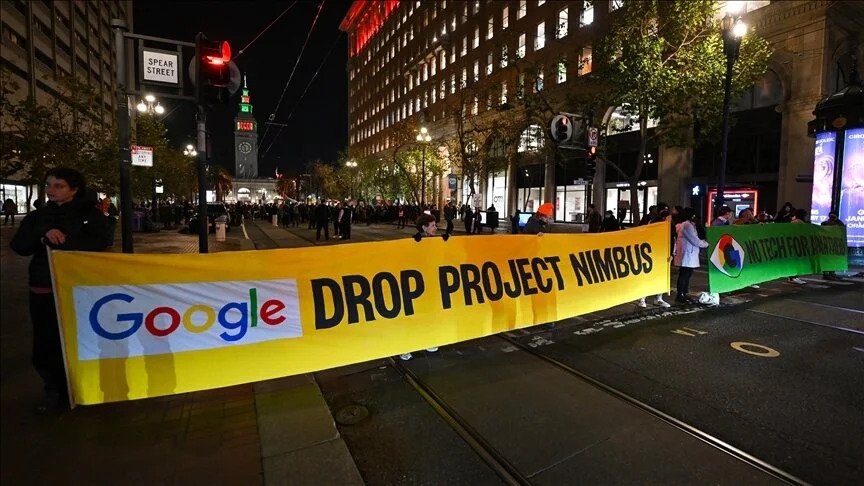
- 23 Apr 2024
Why is it in the News?
Google's employees staged protests against the company's collaboration with the Israeli government on "Project Nimbus", a $1.2 billion cloud computing initiative.
What is Project Nimbus?
- Google’s Project Nimbus is a $1.2 billion cloud computing initiative with the Israeli government.
- The project aims to provide public cloud services to address challenges within various sectors in Israel, including healthcare, transportation, and education in Israel.
- However, the project has sparked controversy leading to protests and layoffs within the company.
- Project Nimbus involves Google establishing a secure instance of Google Cloud on Israeli soil.
- This would allow the Israeli government to perform large-scale data analysis, AI training, database hosting, and other forms of powerful computing using Google’s technology.
- The project is a joint contract between Google and Amazon signed in 2021.
- As part of the agreement, Google Cloud will work with the public sector on the formulation of best practices for cloud migration, integration, and optimization of cloud services.
- According to the official announcement in the year 2021, Google Cloud will also provide training to the country’s technical government employees and senior leaders to enhance digital skills.
What is the Controversy Surrounding Project Nimbus?
- Despite the potential benefits, Project Nimbus has sparked controversy due to concerns about the potential misuse of AI and other technologies.
- Employees fear that the technology developed under Project Nimbus could be used in harmful ways.
- There have been reports suggesting that Israel is using AI to eliminate its targets.
- Israeli outlets +972 Magazine and Local Call claimed that two AI systems, "Lavender" and "Where's Daddy?" were used to identify 37,000 Hamas operatives.
- However, there's no official confirmation regarding any connection between Project Nimbus and these AI systems.
- The use of AI also causes concern as it is still a relatively new technology on the battlefield and is yet to be regulated by governments across the globe.
Google Response to the Accusations Regarding Project Nimbus?
- Google clarified that the project is intended for use by Israeli government ministries in areas such as finance, healthcare, transportation, and education, emphasizing that it is not aimed at handling highly sensitive or classified military operations related to weaponry or intelligence services.
Netzah Yehuda Battalion

- 23 Apr 2024
Why is it in the News?
The US government may soon sanction a battalion of the Israeli Defence Forces (IDF) over alleged human rights violations, marking the first such move in the history of the two countries’ relations.
What is the Netzah Yehuda Battalion?
- The Netzah Yehuda battalion was set up in 1999 to accommodate the religious beliefs of ultra-Orthodox Jews and other religious nationalist recruits in the army.
- It was established to facilitate military service for these communities, accommodating their religious observances by scheduling prayer and study times, and restricting their interactions with female soldiers.
- The battalion is historically stationed in the occupied West Bank region and faces intense scrutiny for allegedly committing human rights violations against Palestinians.
- Netzah Yehuda came on the radar of United States agencies after the death of an elderly Palestinian-American man, who was detained by the battalion.
What is the Unit Accused Of?
- The United States called for a criminal investigation after Netzah Yehuda soldiers were accused of being involved in the death of a 78-year-old Palestinian-American, Omar Assad, who died of a heart attack in 2022 after he was detained and was later found abandoned at a building site.
- A Palestinian autopsy found Assad died from a stress-induced heart attack brought on by being manhandled.
- The case attracted unusual attention because of his dual nationality, his age, and a demand by the U.S. State Department for an investigation into his death.
- There have been several other incidents in recent years, some captured on video, in which Netzah Yehuda soldiers were accused of, or charged with, abusing Palestinian detainees.
- The battalion primarily operated in the West Bank before it was moved out of the territory in late 2022 after U.S. criticism.
- The unit has recently been serving in Gaza.
Star Campaigners
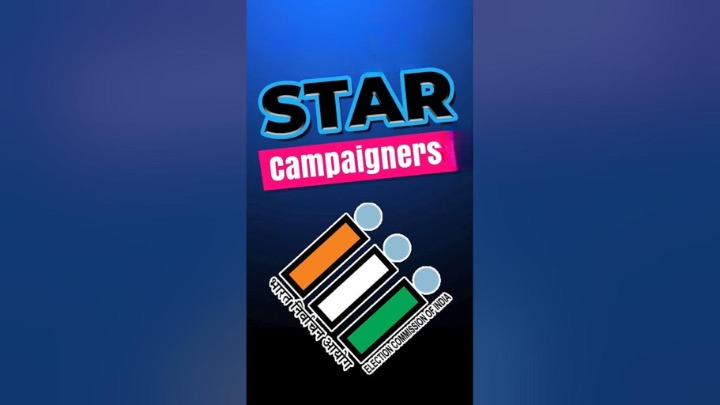
- 23 Apr 2024
Why is it in the News?
In the current general elections, political parties are selecting 'star campaigners' to lead their campaigns.
What are Star Campaigners in Election?
- Star campaigners are popular individuals with significant fan followings and are chosen by political parties to contest or campaign during elections.
Legal Provisions:
- The Representation of the People Act, 1951 (RPA) governs the expenditure incurred by 'leaders of a political party,' commonly referred to as star campaigners.
- A recognized political party (National or State) can appoint a maximum of 40-star campaigners.
- A registered unrecognized political party can appoint up to 20.
- The names of star campaigners must be communicated to the Election Commission (EC) and Chief Electoral Officer (CEO) within seven days from the date of election notification.
- For multi-phase elections, political parties can submit separate lists of star campaigners for different phases.
Expenses and Apportionment:
- If a star campaigner seeks votes for contesting candidates or shares the dais with them, rally/meeting expenses are apportioned to the election expenditure of those candidates.
- Boarding/lodging expenses incurred by the star campaigner while campaigning for candidates are included in the expenditure accounts of those candidates.
- If candidates travel with the star campaigner, 50% of the star campaigner's travel expenditure is apportioned to those candidates.
Special Cases:
- When a Prime Minister or former Prime Minister serves as a star campaigner, the government bears the expenditure on security, including bullet-proof vehicles.
- However, if the Prime Minister is accompanied by another star campaigner, the candidate must bear 50% of the expenditure on security arrangements.
Tundra Ecosystem
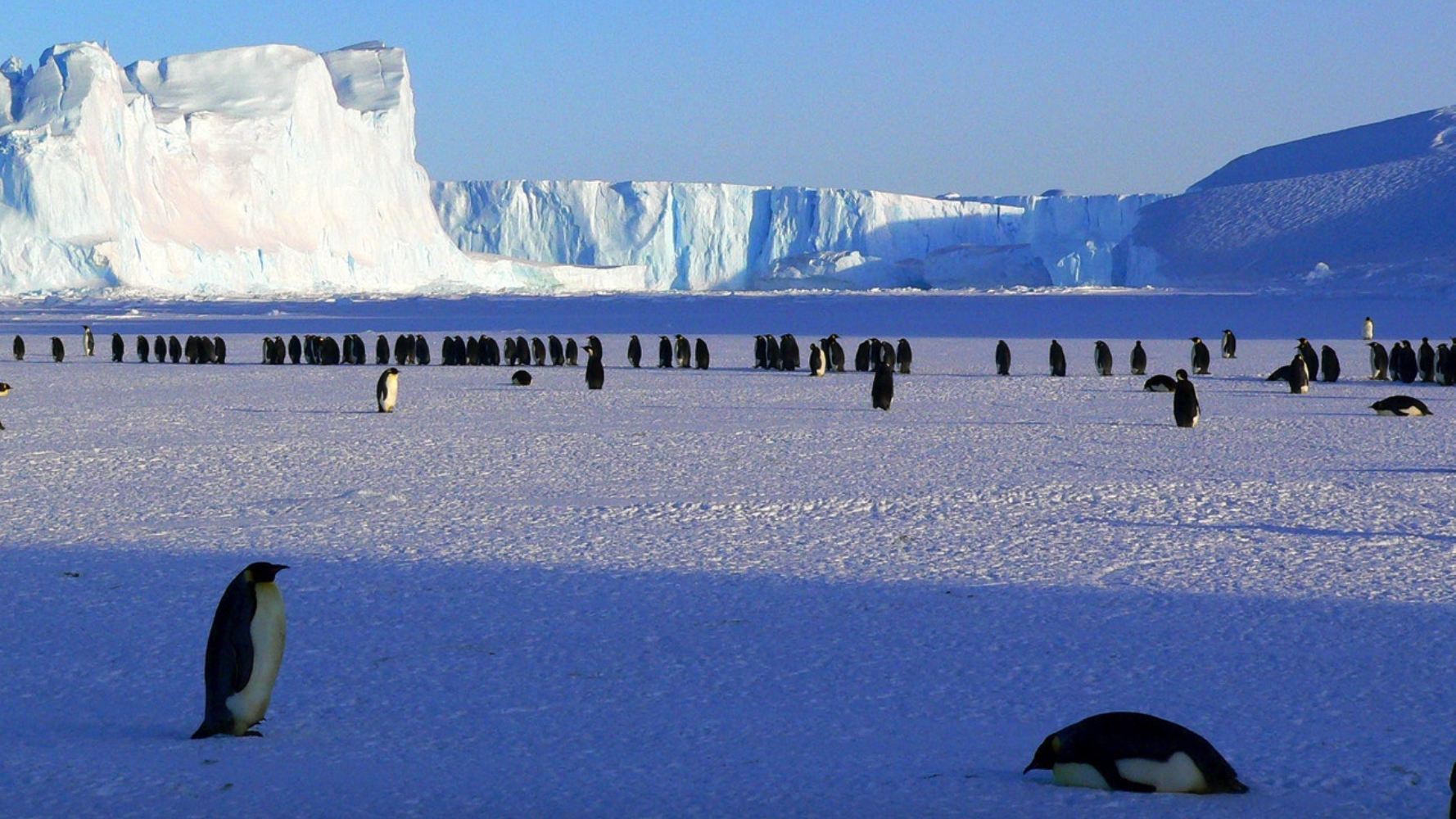
- 23 Apr 2024
Why is it in the News?
A recent study has warned that the warming planet may alter the characteristics of tundra environments and could transform them from carbon sinks to carbon sources.
About Tundra Ecosystem:
- The Tundra ecosystem is one of the unique ecosystems of the planet.
- The adverse climatic conditions of tundra regions like dry winds, meager precipitation, and extreme cold make it a unique and desert-like ecosystem with treeless fields.
- These harsh climatic conditions of the tundra region make the survival of plant and animal species quite severe.
Key Characteristics of Tundra Regions:
- Low Temperatures: Tundra areas experience frigid temperatures, ranging from -34 to -6 degrees Celsius (-30 to 20 degrees Fahrenheit).
- Short Growing Seasons: The tundra's summer growth period lasts merely 50 to 60 days, with sunlight persisting up to 24 hours a day.
- Permafrost: Below the surface lies a layer of permanently frozen soil, varying from a few inches to several feet thick.
- Minimal Precipitation: Despite being likened to deserts in terms of moisture, tundra regions receive low precipitation levels, primarily in the form of snow.
- Limited Biodiversity: Harsh conditions in the tundra support fewer plant and animal species compared to other biomes.
- Carbon Sink: Tundras serve as significant carbon storage areas due to the slow decomposition rates in their cold environments.
Types of Tundra:
- Arctic Tundra: Found north of the taiga belt in the far Northern Hemisphere, encompassing regions between the North Pole and the boreal forest, including parts of Canada, Russia, Greenland, Iceland, Norway, Sweden, and Finland.
- Alpine Tundra: Prevails above the tree line in mountain ranges worldwide, such as the Rockies, the Andes, the Himalayas, and the Alps.
- Antarctic Tundra: Encompasses several sub-Antarctic islands and portions of the Antarctic continent.
Flora and Fauna:
- Flora: Common plant species in tundra regions include mosses, lichens, sedges, cotton grass, and birches.
- Fauna: Wildlife in tundra ecosystems includes Arctic foxes, snow geese, polar bears, and other cold-adapted species.
Survey of India (SoI)
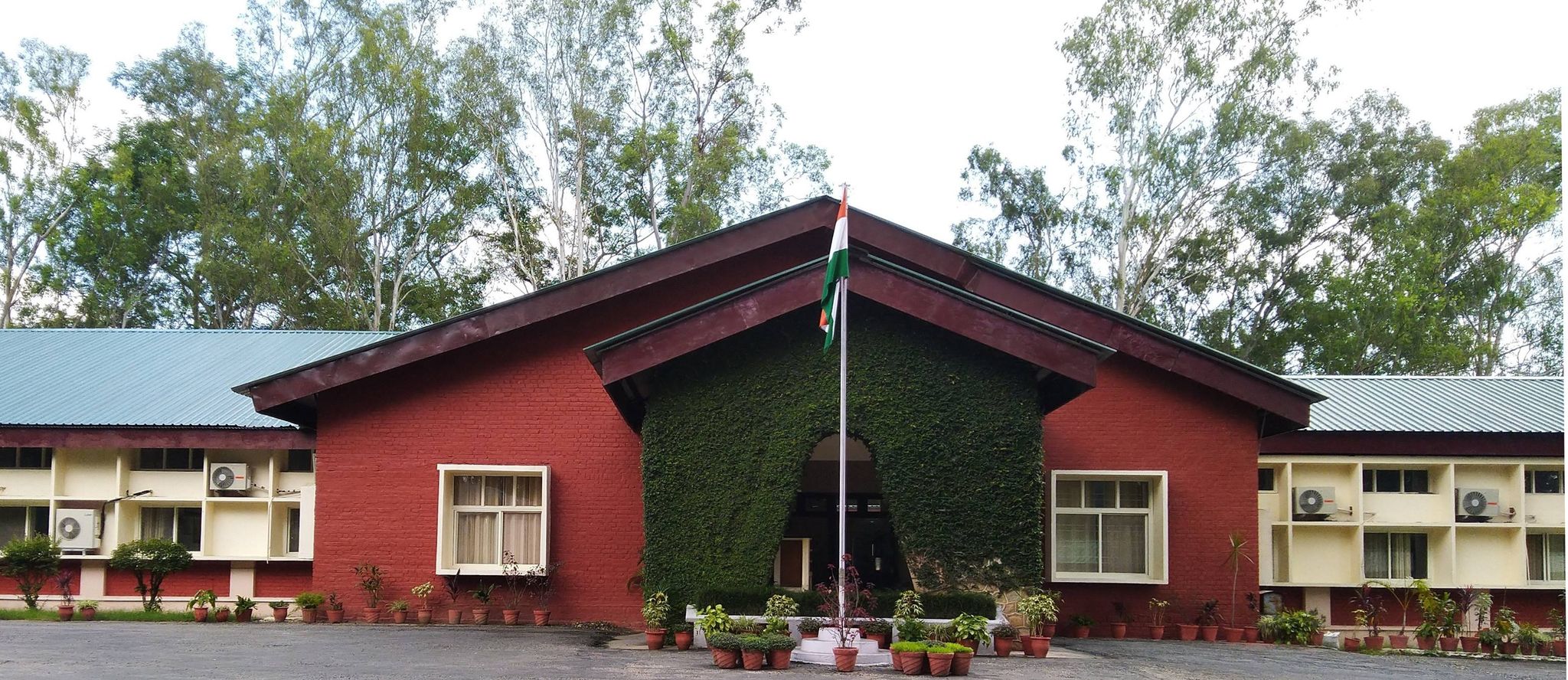
- 23 Apr 2024
Why is it in the News?
The Tamil Nadu government filed its objections in the Supreme Court recently, about the Survey of India (SOI) report on the construction of the mega car parking project near the Mullaiperiyar dam, and sought rejection of the report.
What is the Survey of India (SoI)?
- The Survey of India (SoI) serves as the National Survey and Mapping Organization of India, operating under the Department of Science and Technology.
- Established in 1767, it holds the distinction of being the oldest scientific department within the Government of India.
- Tasked with the critical role of being the country's primary mapping agency, SoI bears the responsibility of thoroughly exploring and mapping India's terrain to furnish foundational maps for comprehensive and efficient development initiatives.
- Originally comprising only five directorates in 1950, primarily focused on catering to the mapping requirements of the Defense Forces in the Northwest and Northeast regions, the department has since expanded to encompass 18 directorates spread across the nation, ensuring comprehensive map coverage essential for national development.
- SoI's expertise is widely utilized by various ministries and government undertakings for diverse purposes, including delineating international borders, and state boundaries, and facilitating the planned development of previously underserved areas.
- Moreover, SoI actively contributes to numerous national scientific endeavors in fields such as geophysics, remote sensing, and digital data transmission.
- Functioning as a key advisor to the Government of India on all survey-related matters, including geodesy, photogrammetry, mapping, and map reproduction, SoI fulfills a multitude of duties and responsibilities, which include:
- Conducting all geodetic control, geodetic, and geophysical surveys.
- Undertaking topographical control, surveys, and mapping within India.
- Producing geographical maps and aeronautical charts.
- Conducting surveys for developmental projects.
- Mapping forests, cantonments, large-scale city surveys, guide maps, cadastral surveys, etc.
- Engaging in surveys and mapping for specialized purposes.
- Demarcating India's external boundaries, depicting them on published maps, and advising on inter-state boundary demarcation.
- Conducting research and development in cartography, printing, geodesy, photogrammetry, topographical surveys, and indigenization.
- Predicting tides at 44 ports, including 14 foreign ports, and publishing tide tables one year in advance to support navigational activities.
- Reviewing and certifying India's external boundaries and coastline on maps published by other entities, including private publishers.
- Headquartered: Dehradun (Uttarakhand)
Zero Shadow Day
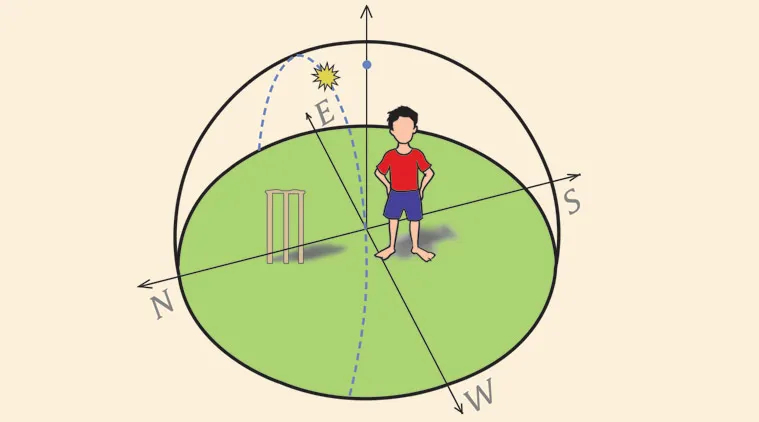
- 22 Apr 2024
Why is it in the News?
A group of students was provided a first-hand experience of the Zero Shadow Day (ZSD) phenomenon at an event organized by the Pondicherry Science Forum (PSF).
What is Zero Shadow Day?
- Zero Shadow Day occurs twice every year in locations between the Tropics of Cancer and Capricorn, where the Sun is positioned directly overhead at noon.
- The shadow typically appears elongated on the ground while being observed under normal circumstances.
- However, when the shadow perfectly aligns under the object, during a short period of time, it remains absent on the ground.
- This happens when the sun reaches the zenith, its highest point of revolution.
- The dates of the occurrence may vary depending on the specific location and its latitude.
Why does Zero Shadow Day occur?
- Zero Shadow Day is caused due to Earth's axial tilt of approximately 23.5 degrees and its orbit around the Sun.
- The Sun is never overhead causing it to maintain a slightly lower altitude either north or south.
- The tilting position is also responsible for different seasons on Earth.
- As the Earth orbits the sun, the angle at which the sun's rays hit the Earth's surface changes, causing shadows to be cast in different directions.
- In regions falling between the Tropic of Cancer (about 23.5 degrees north of the equator) and the Tropic of Capricorn (about 23.5 degrees south of the equator), there are instances when the Sun is exactly overhead.
- Since the sun's rays come down almost vertically, there is no or little shadow on vertical objects.
National Organ and Tissue Transplant Organization (NOTTO)
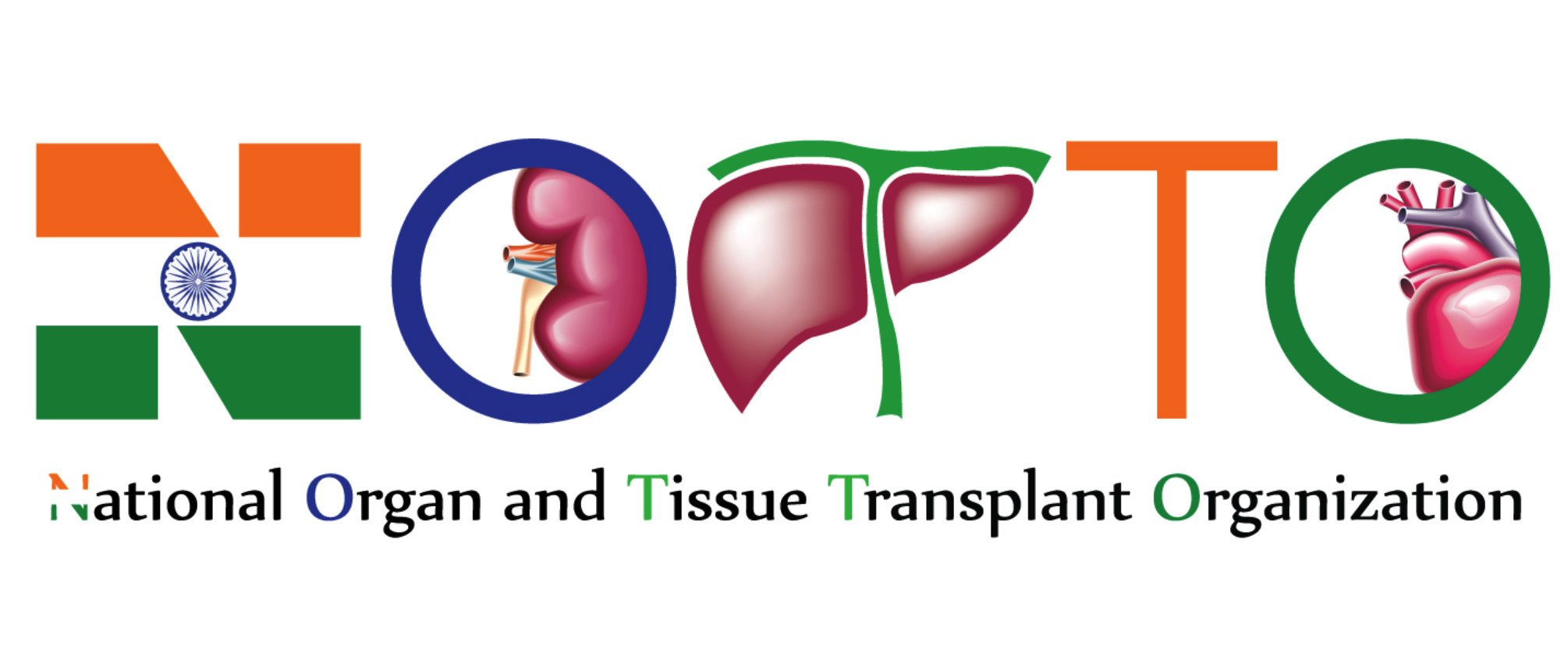
- 22 Apr 2024
Why is it in the News?
Each organ transplant case will receive a distinctive National Organ and Tissue Transplant Organisation (NOTTO) ID assigned to both the donor and the recipient.
Highlights of the News:
- The Union Health Ministry has mandated the cessation of commercial organ transactions, particularly those involving foreign nationals, and emphasized the need for stringent oversight by local authorities.
- For deceased donor transplants, a NOTTO-ID is required for organ allocation, while in living donor transplants, the ID must be generated within 48 hours post-surgery through the NOTTO website by the hospital.
What is the National Organ and Tissue Transplant Organization (NOTTO)?
- NOTTO is a national organization established under the Directorate General of Health Services, Ministry of Health and Family Welfare, Government of India.
It serves as the central coordinating hub for:
- Organ and tissue procurement and distribution.
- Maintaining a registry of organ and tissue donation and transplantation activities across the country.
NOTTO comprises two divisions:
- National Human Organ and Tissue Removal and Storage Network:
- Acts as the primary center for nationwide coordination of organ and tissue procurement, distribution, and registry.
- Established in accordance with the Transplantation of Human Organs (Amendment) Act 2011.
- National Biomaterial Centre (National Tissue Bank):
- This center focuses on filling the gap between demand and supply while ensuring quality assurance in tissue availability.
- The Transplantation of Human Organs (Amendment) Act 2011 has expanded NOTTO's scope to include tissue donation and registration of tissue banks.
Activities performed by NOTTO include:
-
- Coordinating tissue procurement and distribution
- Donor tissue screening
- Tissue removal and storage
- Tissue preservation
- Laboratory screening of tissues
- Tissue tracking
- Sterilization
- Record maintenance
- Data protection and confidentiality
- Quality management in tissues
- Patient information on tissues
- Developing guidelines, protocols, and standard operating procedures
- Training and assistance in registering other tissue banks
BFI Biome Virtual Network Program
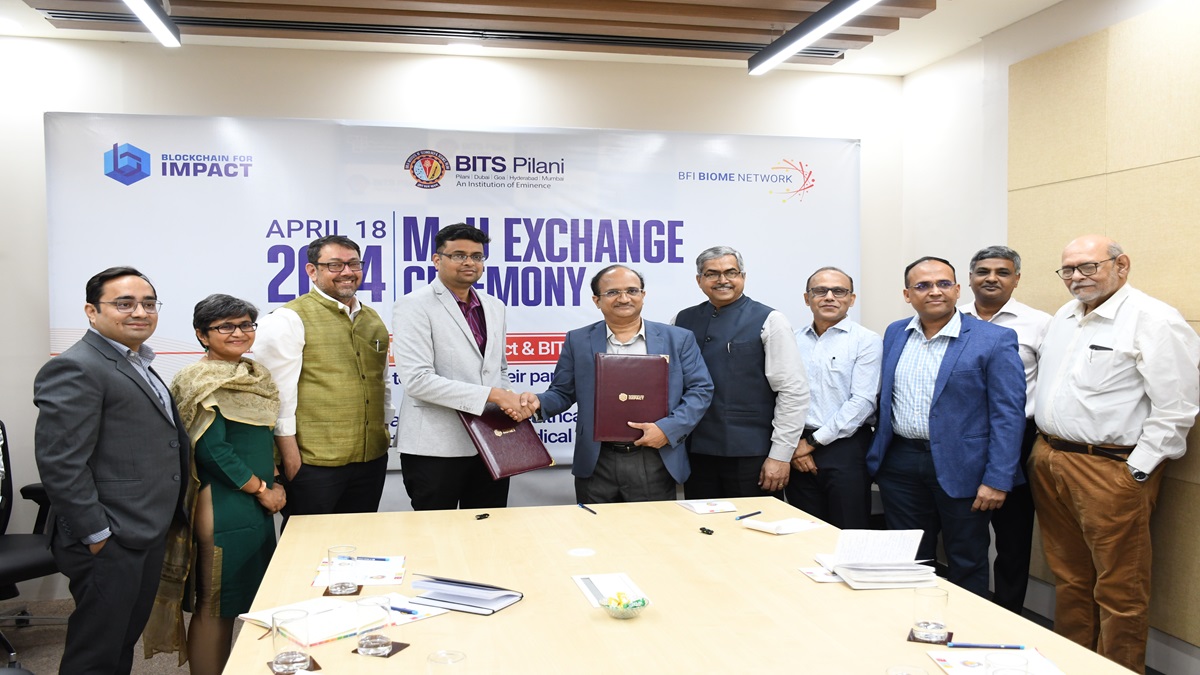
- 22 Apr 2024
Why is it in the News?
Centre for Cellular and Molecular Platforms (C-CAMP) has joined the Blockchain for Impact (BFI) Biome Virtual Network Program to accelerate transformative healthcare solutions through biomedical innovation.
About BFI Biome Virtual Network Program:
- The BFI-Biome Virtual Network Program is a pioneering initiative uniting incubators and research institutes under a single umbrella.
- This fosters collaborations among the stakeholders in the translational pipeline, the process of transforming research discoveries into real-world applications.
- Through this program, BFI will allocate over 200,000 USD over the course of three years, leveraging C-CAMP’s expertise to develop essential programs for healthcare-based startups.
- C-CAMP being an organization to foster deep science research and innovation for societal impact, the goals and mandates of both partners naturally align and complement each other.
- The partnership is expected to blur disciplinary boundaries in approaching biotech R&D, promote cross-integration of expertise and infrastructure, and provide multidisciplinary insights into need identification, problem-solving, and solution implementation.
What is C-CAMP?
- Centre for Cellular And Molecular Platforms (C-CAMP) is an initiative of the Dept of Biotechnology, Ministry of Science and Technology, Govt. of India, with a mandate to be an enabler of cutting edge Life Science Research and Innovation.
- C-CAMP is also a member of the Bangalore Life Sciences Cluster (BLiSC).
- It facilitates Bioscience Research and Entrepreneurship by providing Research, Development, Training, and Services in state-of-the-art Technology Platforms.
- As a part of C-CAMP's mandate of promoting entrepreneurship and innovation, C-CAMP has created and fostered an entrepreneur-friendly culture in and around the Academic/Research environment through its involvement in Seed Funding Schemes for Startups, Entrepreneur Mentorship program, and Bio-Incubation facility.
- It has established State-Of-The-Art Platform Technologies which are essential requirements for success and leadership in the field of Life Sciences.
- C-CAMP allows Investigators to use Techniques as tools and not be limited by Technological barriers while pursuing challenging scientific questions.
Global Financial Stability Report (GFSR)
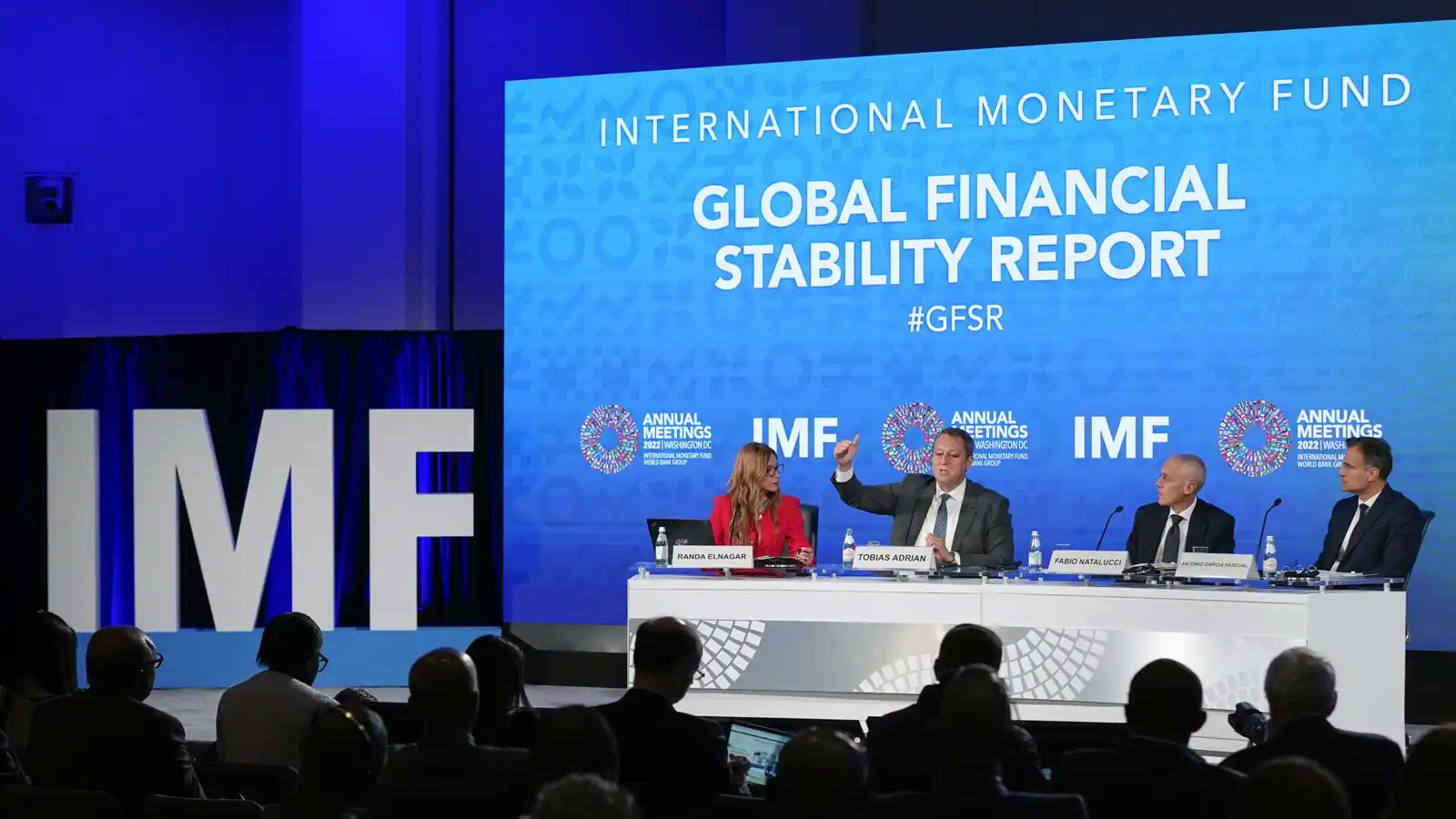
- 22 Apr 2024
Why is it in the News?
The International Monetary Fund (IMF) released the latest global financial stability.
About Global Financial Stability Report (GFSR):
- The Global Financial Stability Report (GFSR) is a semiannual report by the International Monetary Fund (IMF).
- It is released twice per year, in April and October.
- The GFSR provides an assessment of the global financial system and markets and addresses emerging market financing in a global context.
- It focuses on current market conditions, highlighting systemic issues that could pose a risk to financial stability and sustained market access by emerging market borrowers.
Key Points from the Report:
- The report highlights significant risks facing the global financial system, including persistent high inflation, increased lending in unregulated credit markets, and a rise in cyber-attacks targeting financial institutions.
- It underscores geopolitical tensions, such as conflicts in West Asia and Ukraine, as potential factors disrupting aggregate supply and driving up prices, possibly constraining central banks from lowering interest rates.
- India emerged as the second-largest recipient of foreign capital in 2023, following the United States, though this trend could shift rapidly if Western central banks signal prolonged high-interest rates.
- Of concern is the expansion of the unregulated private credit market, where non-bank financial institutions extend credit to corporate borrowers, posing potential threats to the broader financial system.
- Many borrowers in this market lack financial stability, with numerous entities unable to cover interest costs with current earnings, highlighting underlying risks.
World Earth Day 2024
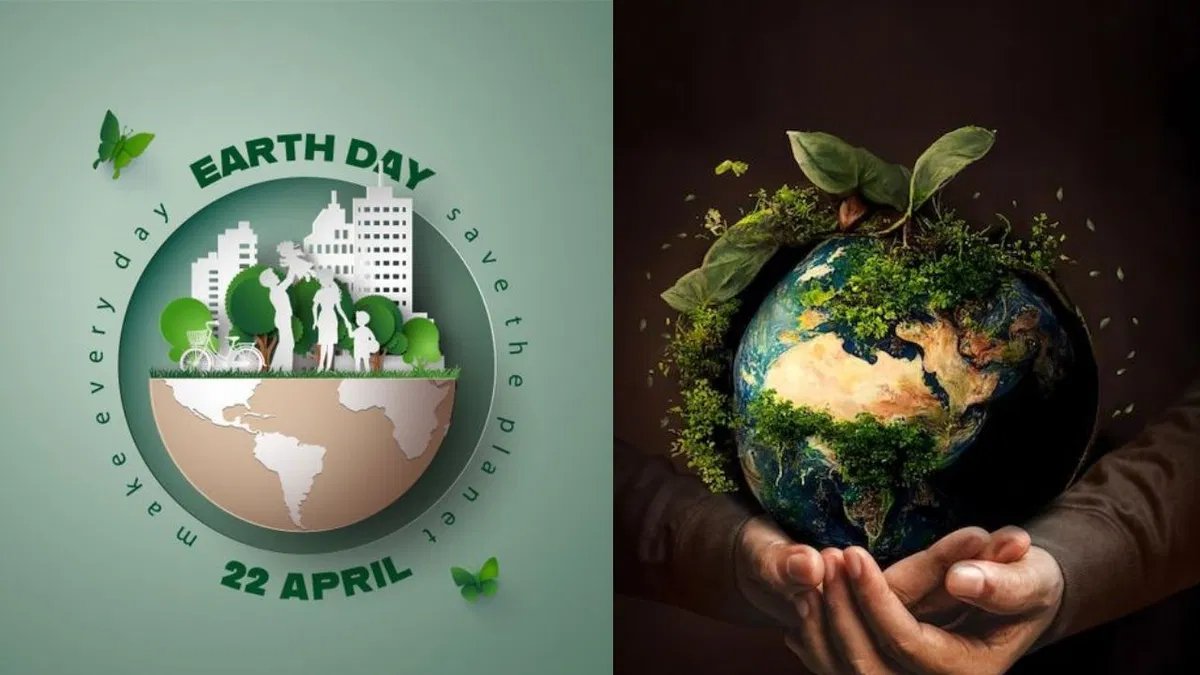
- 22 Apr 2024
Why is it in the News?
On World Earth Day 2024, a global network promoting local food and traditional cooking has called for practical measures to cut down on plastic use in the food chain and to safeguard the environment.
About World Earth Day:
- World Earth Day, also known as International Mother Earth Day, is a globally recognized event dedicated to raising awareness and promoting the sustainability of our planet.
- Earth Day is celebrated on April 22 in the United States and on either April 22 or the day the spring equinox occurs throughout the rest of the world.
- Theme: The theme for World Earth Day 2024 is “Planet vs Plastics”.
- The theme aims to bring attention to the serious issue of plastic pollution and how it harms nature.
Earth Day History:
- The origin of Earth Day can be traced back to 1970.
- The idea behind the event originated from Gaylord Nelson, a US senator, and Denis Hayes, a Harvard student.
- They were both deeply disturbed by the deteriorating environment in the United States and the massive January 1969 oil spill in Santa Barbara, California.
- Deeply disturbed by the environmental impacts, Gaylord Nelson wanted to infuse the energy of student protests into an emerging public consciousness about air and water pollution.
- He recruited Denis Hayes, a young activist, to manage the campus teach-ins and to scale the idea of environment conservation to a broader public.
- They choose April 22, a weekday between Spring Break and Final Exams, to increase student participation.
- Its immediate success was evident with a massive turnout of 20 million people across the US.
- By 1990, Earth Day became a global event transcending national borders.
Earth Day Significance:
- Earth Day symbolizes the need to protect our mother nature.
- The day encourages every individual to think about environmental conservation and act accordingly.
- It speaks about the need to reduce carbon footprints, conserve natural resources, and protect wildlife and natural habitats.
- The day also serves as a platform to advocate for policy changes that can have a positive impact on the environment.
Ethylene Oxide
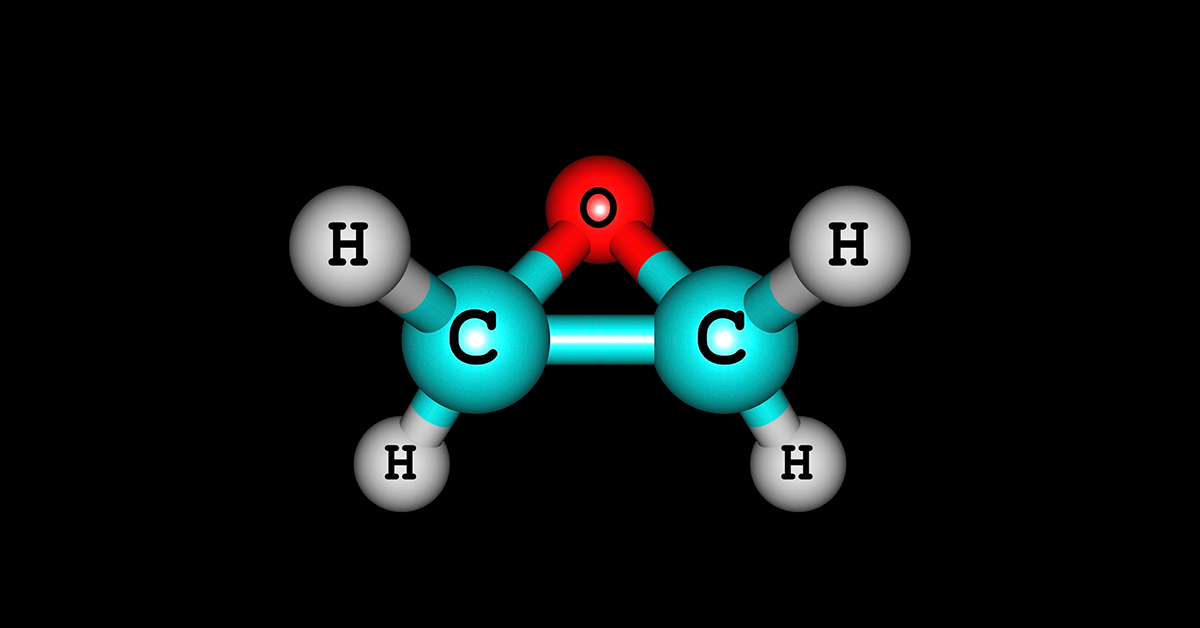
- 20 Apr 2024
Why is it in the News?
The Singapore Food Agency (SFA) has issued a recall on Indian spice brand Everest’s fish curry masala after detecting an ‘excessive’ amount of ethylene oxide–a pesticide–in it.
What is Ethylene Oxide?
- Ethylene oxide is a colorless and flammable gas with a slightly sweet odor and It dissolves easily in water.
- It is widely used in various industries due to its versatile properties.
- Its primary applications include the production of other chemicals, such as ethylene glycol for antifreeze and polyester, as well as the sterilization of medical equipment.
- It also has minor applications in agriculture.
- In this sector, it's used as a fumigant to control insect pests in stored agricultural goods, such as food commodities, to protect them from infestation.
- This usage makes up less than 1% of its applications, and it is combined with other gases to minimize potential toxicity to humans and the environment.
- While ethylene oxide plays a significant role in many industrial processes, it also poses health risks to those exposed to it.
- Potential health effects range from mild symptoms like headaches, nausea, and respiratory issues, to more severe problems such as cancer and reproductive harm.
- To minimize exposure risks, industries and facilities that use ethylene oxide are subject to environmental regulations and required to implement safety measures.
- These measures include emission-reducing and monitoring devices, on-site testing, site-specific operating parameters, and regular reporting and record-keeping.
- Despite these precautions, workers in factories that produce or use ethylene oxide, as well as people living near these facilities, may still face potential health risks.
How Do Pesticides Harm Our Bodies if Present in Food?
- Pesticides, designed to ward off unwanted organisms in agriculture, can pose extensive risks to human health if they find their way into our food chain.
- Even a brief exposure to some of them can cause acute poisoning and symptoms, including diarrhea, dehydration, and skin irritation.
- Some insecticides like Resmethrin, Cypermethrin, and Fenvalerate have been connected to chronic health issues, which include reproductive complications, immune system disruption, pores, and skin infection, and interference with the endocrine system.
- Even low-level exposure over the years can cause critical health implications.
How Long-term Issues Can be Combated?
- Some steps can be taken to mitigate the risks associated with pesticides and ethylene oxide exposure.
- It’s critical to prevent the runoff of insecticides into storm drains, which can contaminate water sources.
- While using insecticides, it’s essential to consider the characteristics of the application site to minimize unintended exposure.
- Attention to the geological factors and groundwater depth can prevent pesticide seepage into water reservoirs.
- By implementing these measures and maintaining strict regulations, we can minimize the health risks posed by these chemical substances.
Salas y Gómez
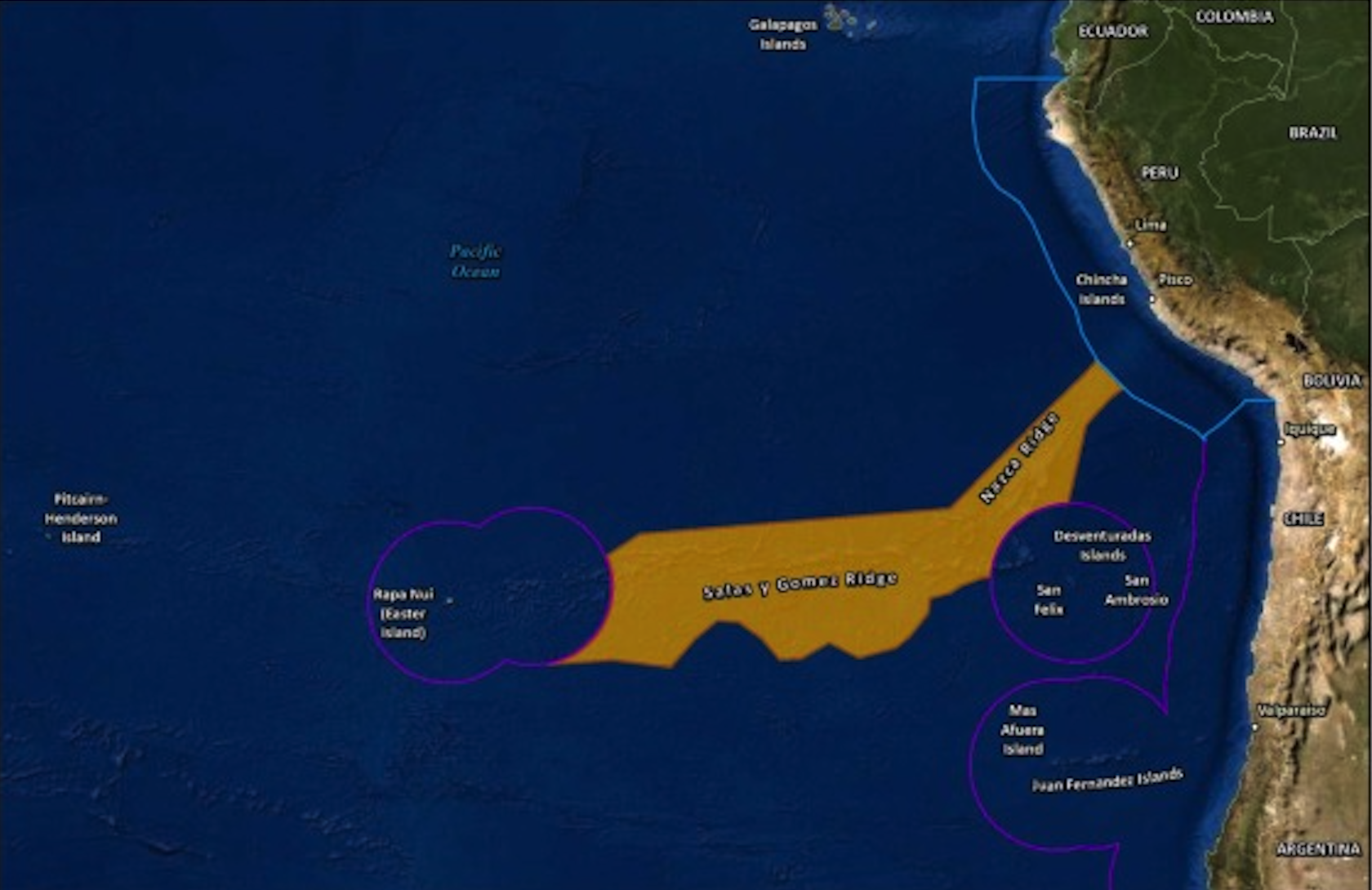
- 20 Apr 2024
Why is it in the News?
An international team of scientists last week announced they discovered 160 species when exploring 10 seamounts and two islands on the 2,900-kilometre-long ocean ridge Salas y Gómez.
What is ‘Salas y Gomez’?
- Salas y Gómez is a remarkable underwater mountain chain in the Southeastern Pacific Ocean.
- This 2,900-kilometer-long range stretches in a west-east orientation, connecting the East Pacific Rise and the Nazca Ridge.
- The western end of the chain lies within Chile's Exclusive Economic Zone near the Easter Islands, while the eastern part extends into areas beyond national jurisdiction and touches upon the national waters of Chile and Peru.
- The region is characterized by unique ecosystems isolated by the Atacama Trench, the Humboldt Current System, and an extreme oxygen minimum zone.
- Salas y Gómez and Nazca ridges are known for their extraordinary biodiversity, hosting some of the highest levels of marine endemism on Earth.
- Given the ecological significance of this underwater mountain range, there is a growing interest in designating Salas y Gómez and its surrounding areas as high-seas marine protected areas upon the ratification of the UN High Seas Treaty.
- This initiative aims to safeguard the region's unique ecosystems and contribute to global marine conservation efforts.
About the United Nations High Seas Treaty:
- The United Nations High Seas Treaty is a legal framework, or a set of legal tools, designed to protect the oceans that are beyond any country’s territory.
- The high seas are defined as the waters that are 200 nautical miles from any national jurisdiction; they are international open waters that all countries can use for marine business such as shipping, fishing, and marine research.
- The treaty’s formal name is the Biodiversity Beyond National Jurisdiction Treaty, or BBNJ Treaty for short.
Key Facts About the High Seas Treaty:
- The treaty was to be negotiated under the United Nations Convention on Laws of the Sea (UNCLOS) of 1982.
- It took 19 years to reach an agreement on it.
- Before now, laws to protect ocean waters and biodiversity beyond countries’ territorial boundaries only protected 1.2% of the high seas.
World Craft Council International

- 20 Apr 2024
Why is it in the News?
The World Crafts Council International (WCCI), a Kuwait-based organization working on the recognition and preservation of traditional crafts across the globe, has picked Srinagar for mapping its craft clusters before its final nomination as the World Craft City (WCC) from India this year.
About World Crafts Council:
- World Crafts Council AISBL is an international non-profit organization dedicated to fostering the preservation, promotion, and advancement of global craftsmanship and traditional crafts.
- It was founded by Ms. Aileen Osborn Vanderbilt Webb, Ms. Margaret M. Patch, and Smt Kamaladevi Chattopadhyay at the 1st World Crafts Council General Assembly in New York on June 12, 1964.
- Since its inception, the World Crafts Council AISBL has been affiliated with UNESCO under Consultative Status for many years.
- Its mission is to empower artisans, celebrate cultural diversity, and contribute to sustainable development by supporting the rich tapestry of global craftsmanship and preserving languishing crafts from extinction.
- Headquarters: The current headquarters for the term (2021-2024) is located in Kuwait.
Objectives:
- The main objective of the World Crafts Council AISBL is to strengthen the status of crafts in cultural and economic life.
- The Council aims to promote fellowship among craftspersons by offering them encouragement, help, and advice.
- It fosters and assists cultural exchange through conferences, international visits, research studies, lectures, workshops, exhibitions, and other activities.
- The WCC also seeks to foster wider knowledge and recognition of the craftspeople's work with due regard to the diversified cultural and national backgrounds and traditions of its members.
- In carrying out these principles, the Council shall consult with governments, national and international institutions, societies, and individuals.?
India has only 3 cities designated as World Craft City:
- Mysuru (Kinnal paintings, Sandalwood carvings, Rosewood Inlay, etc.)
- Mamallapuram (Stone Carving continuing since the Pallava dynasty (275 CE to 897 CE)
- Jaipur (Kundan Jadai (Gem setting), Meenakari Jewellery, Lac-based craft, Gotta Patti Work, etc.)
About the World Craft City Programme:
- The World Craft City Programme, initiated in 2014 by the World Crafts Council AISBL (WCC-International), recognizes the significance of local authorities, artisans, and communities in global cultural, economic, and social advancement.
- By establishing a vibrant network of craft cities worldwide, it embraces the ideals of the creative economy and acknowledges the valuable contributions of local entities to comprehensive development.
- Notably, Jaipur (Rajasthan), Mamallapuram (Tamil Nadu), and Mysore have already been designated as craft cities under this initiative in India.
National Curriculum for Early Childhood Care and Education 2024
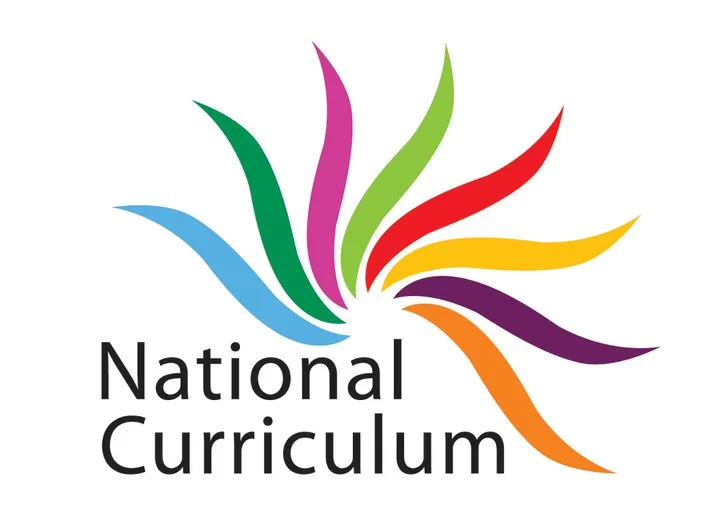
- 20 Apr 2024
Why is it in the News?
For the first time ever, the Central government has released a curriculum advisable to be taught to children aged three to six years old, thus giving an impetus to pre-school learning in 14 lakh anganwadis across the country.
About National Curriculum for Early Childhood Care and Education 2024:
- The National Curriculum for Early Childhood Care and Education 2024 introduces Aadharshila, a comprehensive 48-week curriculum tailored for children aged three to six years attending anganwadis.
- Developed through collaboration among the Ministry of Women and Child Development, the Ministry of Health and Family Welfare, the Department of School Education and Literacy, the Ministry of Education, the NCERT, the Institute of Home Economics at Delhi University, and civil society organizations, Aadharshila serves as a foundational learning framework.
??Key Features:
- The curriculum introduces a weekly play calendar, initiating with four weeks of academic activities facilitating the transition from home to Anganwadi centers through engaging play.
- Over the subsequent 36 weeks, children engage in diverse activities such as storytelling, rhymes, arts, and crafts, fostering exploration, free play, conversation, creation, and appreciation.
- Storytelling themes promote values like conflict resolution, responsibility, and cooperation.
- Children delve into topics including colors, shapes, numbers, senses, family, and friends, enhancing skills in listening, following instructions, counting, and recognizing sounds, alongside exploring themes like seasons and festivals.
- The final eight weeks focus on reinforcing previous learnings through worksheets and performance observation.
- Activities and timetables are age-specific, with detailed material requirements, variations, teacher notes, curricular goals, and competency assessments.
- The curriculum spans three years, targeting at least 48 weeks of learning, fostering skills crucial for Grade 1 transition such as listening, vocabulary, imagination, and social development.
- Special provisions ensure screening, inclusion, and referrals for children with disabilities in all activities.
- The national framework lays the foundation for states to develop culturally relevant curricula, addressing future schooling challenges effectively.
Vasuki Indicus
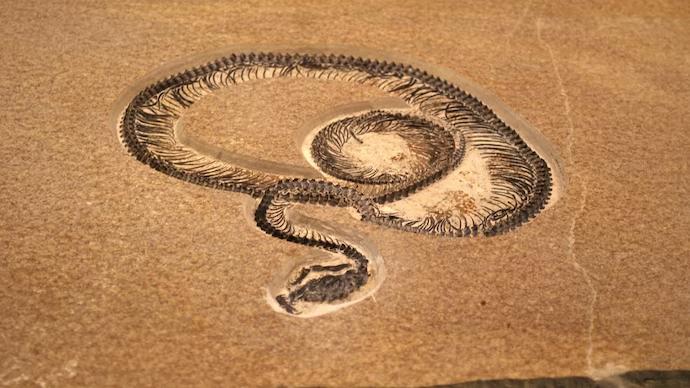
- 20 Apr 2024
Why is it in the News?
Fossils recovered from Kutch in Gujarat may have belonged to the spine of one of the largest snakes to have ever lived, according to new research from the Indian Institute of Technology Roorkee.
Highlights of the Vasuki Indicus Discovery:
- A nearly 50-foot-long snake species, one of the longest and largest in recorded history, once existed in the Indian subcontinent.
- The reptile, Vasuki indicus, lived in India nearly 47 million years ago, fossil remains found from Gujarat’s Panandhro Lignite Mine in Kutch suggest.
- This giant snake, named Vasuki indicus, is estimated to have reached 15 meters in length, exceeding even a T-Rex.
- Scientists found 27 vertebrae, some even in their original position within the spine. They believe Vasuki resembled a large python and lacked venom.
- The species was given the specific name of Vasuki indicus in acknowledgment of the country of its origin, India.
- Vasuki is revered as the king of the snakes in Hindu mythology and is worshiped on special days like Nag Panchami.
About Vasuki Indicus:
- Vasuki indicus belongs to the Madtsoiidae family, and thrived during a “warm geological interval".
- Researchers suggest that the warm tropical temperatures of Gondwanaland, averaging around 28°C, may have contributed to the substantial size and growth of this giant reptile.
- There is a recognized correlation suggesting that higher ambient temperatures can enable larger growth in animals.
- Madtsoiids were also found in Europe and Africa, besides Asia.
- Vasuki indicus represents a large lineage of Madtsoiidae that originated in the Indian subcontinent and then spread to southern Eurasia, before reaching North Africa around 50 million years ago, that’s nearly 15 million years after the dinosaurs went extinct.
- Madtsoiidae, an extinct lineage of terrestrial snakes, thrived on the Indian subcontinent over a span of approximately 100 million years, from the Late Cretaceous to the Late Pleistocene, dating from roughly 98 million to 11,000 years ago.
- During the Late Cretaceous period, the supercontinent Pangea had fragmented into two major landmasses:
- Laurasia, encompassing North America, Europe, and Northern Asia to the north; and
- Gondwanaland to the south, which included present-day Africa, Antarctica, South America, Australia, and the Indian subcontinent.
- The fossils of Vasuki indicus extracted from the early Lutetian grey shale layers of the Naredi Formation at the Kutch mine include an “excellently preserved, partial vertebral column”.
- The discovery sheds light on the biogeographic patterns of dispersion and diversification within the Madtsoiidae, particularly across the Gondwanan continents.
- The presence of this giant snake in the Eocene of India indicates a complex history of faunal exchanges between the Indian subcontinent and other landmasses prior to complete integration into the Eurasian plate.
Coral Bleaching
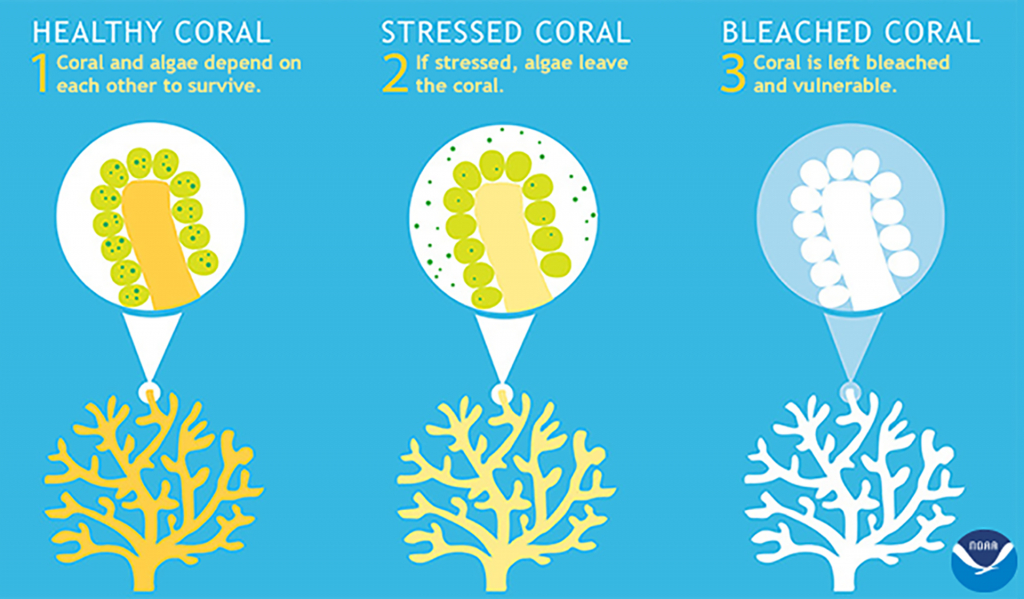
- 19 Apr 2024
Why is it in the News?
The fourth global mass coral bleaching event has been triggered by extraordinary ocean temperatures, the US National Oceanic and Atmospheric Administration (NOAA) said recently.
What are Corals and Coral Reefs?
- Corals are essentially animals, which are sessile, meaning they permanently attach themselves to the ocean floor.
- They use their tiny tentacle-like hands to catch food from the water and sweep it into their mouth.
- Each individual coral animal is known as a polyp and it lives in groups of hundreds to thousands of genetically identical polyps that form a ‘colony’.
- Corals are largely classified as either hard coral or soft coral.
- It is the hard corals that are the architects of coral reefs — complex three-dimensional structures built up over thousands of years.
- Unlike soft corals, hard corals have stony skeletons made out of limestone that are produced by coral polyps.
- When polyps die, their skeletons are left behind and used as foundations for new polyps.
- Coral reefs, also referred to as “rainforests of the sea”, have existed on the Earth for nearly 450 million years.
- Australia’s Great Barrier Reef is the largest in the world, stretching across 2,028 kilometers.
What is the Significance of Corals?
- Coral reefs have a crucial role in marine ecosystems.
- Thousands of marine species can be found living on one reef.
- For instance, “the Great Barrier Reef contains over 400 coral species, 1,500 fish species, 4,000 mollusc species and six of the world’s seven sea turtle species”.
- Research has shown that there could be millions of undiscovered species of organisms living in and around reefs.
- These massive structures also provide economic goods and services worth about $375 billion each year.
- More than 500 million people across the world depend on coral reefs for food, income, and coastal protection from storms and floods.
- Coral reefs can absorb up to 97% of the energy from waves, storms, and floods, which prevents loss of life, property damage, and soil erosion.
- Therefore, the absence of coral reefs would not only result in severe ramifications for marine life but also for humans.
What is Coral Bleaching?
- Most corals contain algae called zooxanthellae ( plant-like organisms) in their tissues.
- Corals and zooxanthellae have a symbiotic relationship.
- While corals provide zooxanthellae a safe place to live, zooxanthellae provide oxygen and organic products of photosynthesis that help corals to grow and thrive.
- Zooxanthellae also give bright and unique colors to corals.
- Corals are very sensitive to light and temperature and even a small change in their living conditions can stress them.
- When stressed, they expel zooxanthellae and turn entirely white.
- This is called coral bleaching.
- Coral bleaching doesn’t immediately lead to the death of corals.
- They rather go under more stress and are subject to mortality.
- Coral bleaching reduces the reproductivity of corals and makes them more vulnerable to fatal diseases.
- If the bleaching is not too severe, corals have been known to recover.
- Global mass bleaching of coral reefs is when significant coral bleaching is confirmed in the Atlantic, Indian, and Pacific oceans.
- Such events are a relatively new phenomenon.
- The first one took place in 1998 in which 20% of the world’s reef areas suffered bleaching-level heat stress.
- The next two global bleaching events occurred in 2010 (35% of reefs affected) and between 2014 and 2017 (56% of reefs affected).
What can be the impact of the event?
- As the global mass bleaching event is still unfolding, its full impact will not be known for a while.
- With global temperatures soaring, such events are expected to become more frequent and longer.
- As a result, the world may lose the vast majority of its coral reefs at 1.5 degrees Celsius of warming, and virtually all at 2 degrees.
- Currently, the average global temperature of the Earth has increased by at least 1.1 degree Celsius since 1850.
- To curb global warming to no more than 1.5 degrees Celsius, countries need to bring GHG emissions to a net zero by 2050, according to the Paris Agreement.
The goal, however, is unlikely to be achieved as record levels of GHG emissions have continued to be emitted into the atmosphere.
Mount Ruang
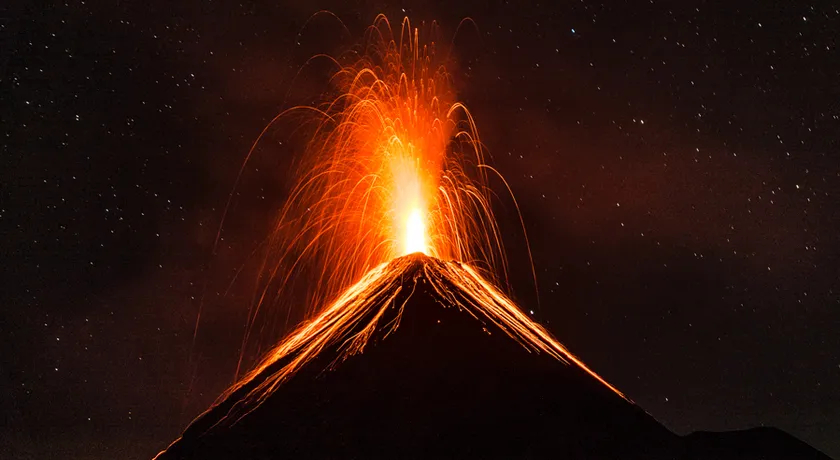
- 19 Apr 2024
Why is it in the News?
A remote volcano in Indonesia’s outermost region erupted again on April 19 after the crater threw up columns of smoke and lava multiple times this week and forced thousands to evacuate.
About Mount Ruang:
- Mount Ruang is an active stratovolcano located in the Sangihe Islands arc, North Sulawesi, Indonesia.
- It is the southernmost volcano in the region, situated on an island that measures 4 by 5 kilometers wide.
- The summit features a partial lava dome and reaches an altitude of 725 meters.
- Mount Ruang has experienced multiple eruptions throughout its history, with the most recent ongoing eruption starting on April 18, 2024.
- The volcano's eruptions often generate ash columns, lava flows, and gas emissions, posing risks to nearby communities.
What is a Stratovolcano?
- A stratovolcano is a tall volcano shaped like a cone, formed by various layers of materials such as volcanic ash, hardened lava, pumice, and tephra.
- Stratovolcanoes are steep and have periodic explosive and effusive eruptions, although some have calderas, which are collapsed craters.
- The highly viscous lava that flows from this type of volcano cools and hardens and in turn, does not spread far.
- The magma that forms this lava is generally felsic.
- Stratovolcanoes are more common than shield volcanoes.
- One of the famous stratovolcanoes is Vesuvius which destroyed Herculaneum and Pompeii in 79 CE.
Formation Of Stratovolcanoes:
- Stratovolcanoes occur mostly in subduction zones, where the oceanic crust slides under continental crust.
- The descent of the oceanic plate causes the release of trapped water from hydrated minerals and porous rock, into the mantle rock in the area above the oceanic slab.
- This process occurs at different pressures depending on the minerals.
- The water lowers the mantle rock’s melting point, causing partial melting and its rise to the lithosphere forming a temporary pool.
- The magma then continues to rise through the crust collecting rock rich in silica.
- The magma finally pools in the magma chamber which is either within or under the volcano.
- The low pressure at this point causes the volatile compounds such as water, carbon dioxide, and sulfur dioxide dissolved in the magma to escape.
- When the magma and gas accumulate to a critical level, they overcome the rock blockage of the volcanic cone and erupt violently.
Global Alliance for Incinerator Alternatives (GAIA)
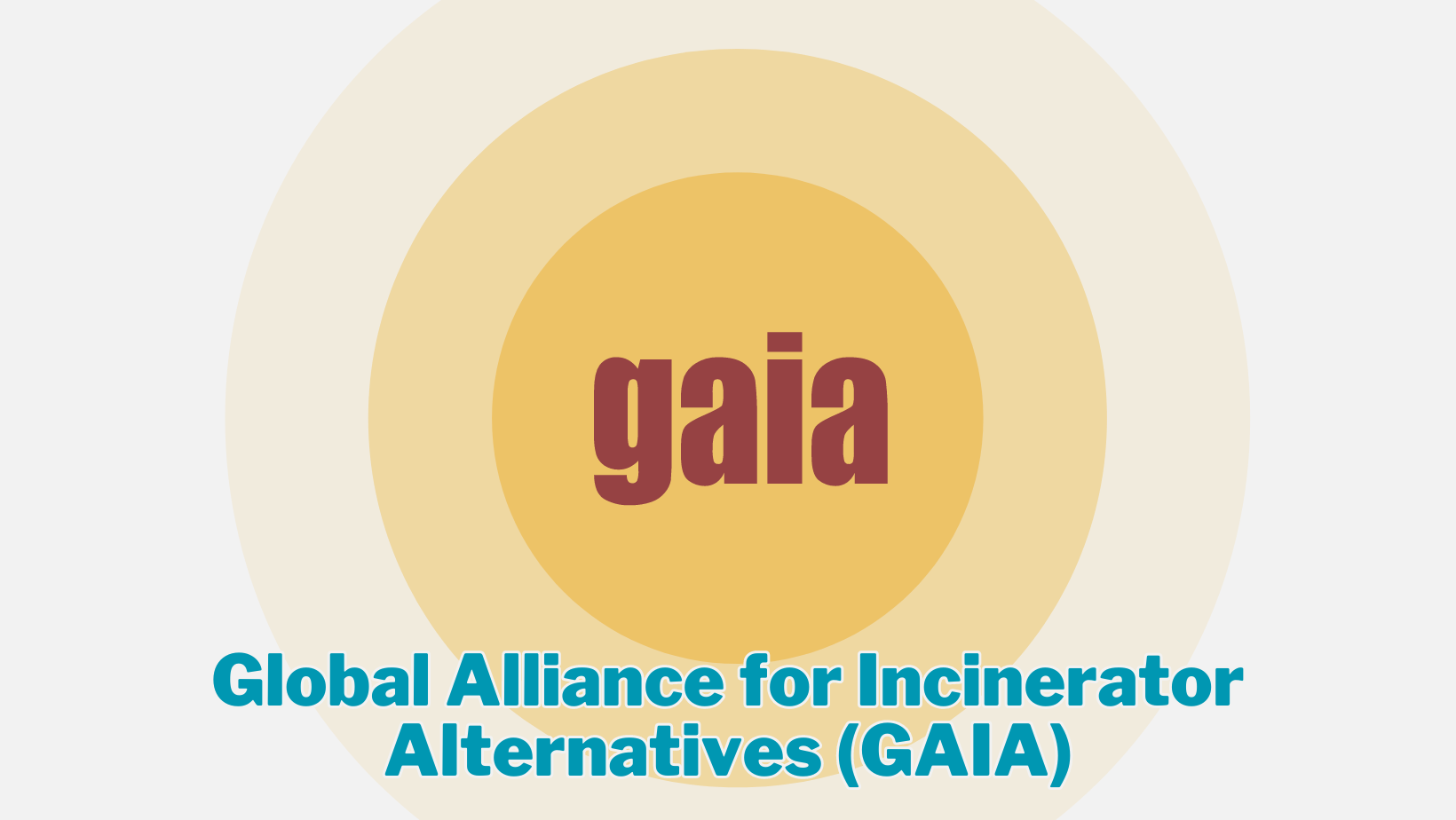
- 19 Apr 2024
Why is it in the News?
The Global Alliance for Incinerator Alternatives (GAIA) Asia Pacific, in collaboration with other environmental organizations, has called on the Association of Southeast Asian Nations (ASEAN) to take decisive action in response to plastic pollution.
About Global Alliance for Incinerator Alternatives (GAIA):
- The Global Alliance for Incinerator Alternatives (GAIA) is an alliance of over 1,000 grassroots groups, NGOs, and individuals working towards a transition from a linear, extractive economy to a circular system.
- GAIA's primary objective is to create a world that prioritizes people's right to a safe and healthy environment, free from toxic pollution and resource depletion.
- GAIA envisions a just, zero-waste world where communities' rights are respected, and ecological limits are acknowledged. To achieve this vision, the alliance focuses on:
- Eliminating Incineration: GAIA advocates for alternatives to incineration and promotes waste management practices that protect the environment and public health.
- Promoting Zero Waste: The alliance supports the adoption of zero-waste strategies, emphasizing waste reduction, reuse, and recycling to conserve resources and reduce pollution.
- Addressing Plastic Pollution: GAIA recognizes the global plastic pollution crisis and works on initiatives to reduce plastic waste and promote sustainable alternatives.
- Mitigating Climate Change: GAIA advocates for climate-friendly waste management practices, emphasizing the importance of reducing greenhouse gas emissions from waste disposal.
What is Incineration?
- Incineration is a waste treatment process that involves burning hazardous materials at high temperatures to destroy contaminants.
- This process takes place in an "incinerator," a furnace specifically designed to safely burn hazardous materials within a combustion chamber.
- Various types of hazardous materials can be treated through incineration, including soil, sludge, liquids, and gases.
- While incineration effectively destroys many harmful chemicals such as solvents, polychlorinated biphenyls (PCBs), and pesticides, it does not destroy metals like lead and chromium.
- Modern incinerators are equipped with air pollution control mechanisms, such as fabric filters, scrubbers, and electrostatic precipitators.
- These technologies help remove fly ash and gaseous contaminants generated during the incineration process, mitigating its environmental impact.
- Despite its benefits in waste treatment, incineration remains a topic of debate due to concerns about residual pollutants and the potential for contributing to greenhouse gas emissions.
Wigner Crystals

- 19 Apr 2024
Why is it in the News?
In new peer-reviewed research, physicists from Princeton University have confirmed that electrons don’t even need atoms to party together.
What are Wigner Crystals?
- Wigner Crystals are composed entirely of electrons, unlike the common crystals which are formed by atoms or molecules.
- These negatively charged particles, which are known for their role in electricity and chemical bonding, can, under specific circumstances, arrange themselves into a lattice structure, creating a crystal made purely of electrons.
- The conditions required for the formation of Wigner Crystals are quite stringent.
- They occur at very low electron densities, where the repulsive Coulomb forces between the electrons dominate over their kinetic energy.
- This means that the electrons must be spread out enough so that their mutual repulsion causes them to settle into a fixed pattern, minimizing their potential energy.
- The discovery was made possible by cooling a two-dimensional electron system to near absolute zero and reducing the electron density to a critical level.
- Under these conditions, the electrons crystallized into a lattice, much like the atoms in a solid.
- The visualization of this electron lattice marks a monumental step in our understanding of the quantum phases of matter.
- The implications of this discovery are profound.
- Wigner Crystals could provide insights into the behavior of electrons in low-density environments, such as those found in semiconductors and other electronic materials.
- This could lead to the development of new technologies and materials with unique electronic properties.
- Moreover, the study of Wigner Crystals could shed light on other exotic states of matter and the fundamental principles of quantum mechanics.
- The confirmation of Wigner Crystals underscores the importance of theoretical physics and how ideas that once seemed purely speculative can lead to tangible discoveries.
- The realization of Wigner Crystals opens up a new chapter in the study of condensed matter physics.
- It stands as a bridge between the abstract world of quantum mechanics and the tangible reality of material science.
- As we continue to explore the quantum landscape, Wigner Crystals will undoubtedly play a pivotal role in unraveling the mysteries of the electron and the intricate dance of particles that constitute the fabric of our universe.
Added Sugars/Free Sugars

- 19 Apr 2024
Why is it in the News?
Nestlé’s products for babies in Asia, Africa, and Latin America were found to contain added sugars, while the same products sold in Europe did not have it, according to a recent report.
Highlights of the Report on Nestle:
- A report by the Swiss organization Public Eye titled 'How Nestlé gets children hooked on sugar in lower-income countries' scrutinized Nestlé for employing varying nutritional standards across its products depending on the country, with unclear sugar content labeling.
- The report highlighted Nestlé's Cerelac, the world's largest baby cereal brand, which contains significantly higher sugar levels in markets like India, Ethiopia, and Thailand compared to Germany and the UK.
- Despite sugar not being recommended for infants, Nestlé's baby food products with added sugars are allowed under some countries' national legislation, conflicting with WHO guidelines.
- WHO recommends reducing daily free sugar intake to less than 10% of total energy intake, preferably less than 5% (around 25 grams per person per day), for better health.
- Nestlé India claims to have reduced added sugars by up to 30% in their infant cereals portfolio over the last five years, depending on the variant.
What are Added Sugars?
- Sugar is a simple carbohydrate.
- Some food items have sugar that is naturally occurring.
- It is “found in milk (lactose) and fruit (fructose) or any product that contains milk (such as yogurt, milk, or cream) or fruit (fresh, dried) contains some natural sugars.
- Free sugar or added sugar is added separately to a food item during preparation or processing.
- It can “include natural sugars such as white sugar, brown sugar, and honey, as well as other caloric sweeteners that are chemically manufactured (such as high fructose corn syrup).
Why is Added Sugar Bad?
- Excessive consumption of added sugars poses several health risks.
- Limiting sugar intake is essential for maintaining a healthy diet and preventing various diseases.
The following are some reasons why added sugars can be harmful:
- Poor Nutritional Balance: Consuming too much-added sugar can lead to increased overall energy intake, often replacing nutritionally adequate calories from healthier food sources.
- This results in an unbalanced diet lacking essential nutrients, increasing the risk of malnutrition and other health problems.
- Increased Risk of Non-Communicable Diseases: Excessive sugar consumption is associated with a higher risk of developing non-communicable diseases such as diabetes, obesity, and cardiovascular ailments.
- These diseases can have severe long-term consequences on overall health and well-being.
- Unnecessary for Infants and Children: Adding sugar to foods offered to babies and young children is unnecessary and can be highly addictive, establishing unhealthy eating habits that continue into adulthood.
- Early exposure to sugar is also associated with tooth decay and can contribute to nutrition-based disorders later in life.
Cloud Seeding
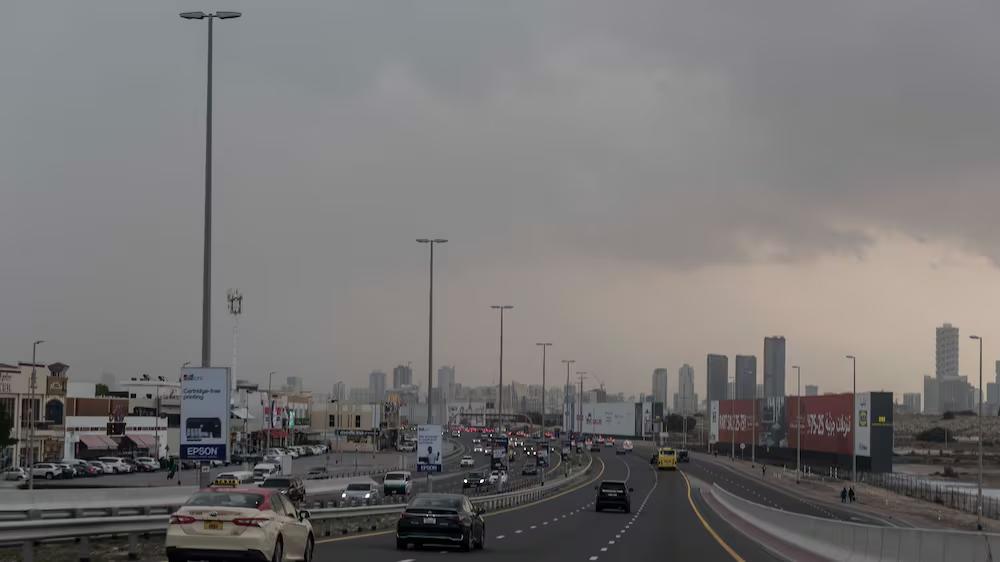
- 18 Apr 2024
Why is it in the News?
The UAE recorded the heaviest rain ever after a severe thunderstorm hit the country on April 15, killing at least one person, causing damage to homes and businesses, and bringing air travel to a standstill in Dubai.
What Led to the Heavy Rains in Dubai?
- The primary reason for these heavy rains was a storm system, which was passing through the Arabian peninsula and moving across the Gulf of Oman.
- According to a different report, rains could have been exacerbated by cloud seeding, a process of spraying salt mixtures in clouds that would result in condensation of the cloud and eventually cause rainfall.
- Several reports quoted meteorologists at the National Center for Meteorology as saying they flew six or seven cloud-seeding flights before the rains.
Is climate change responsible for the event?
- Some experts have suggested that the soaring global temperatures could also be behind the event.
- Higher temperatures cause evaporation of water not only from land but also oceans and other water bodies, meaning a warmer atmosphere holds more moisture.
- Studies have found that for every 1 degree Celsius rise in average temperature, the atmosphere can hold about 7% more moisture.
- This makes storms more dangerous as it leads to an increase in precipitation intensity, duration, and/or frequency, which ultimately can cause severe flooding.
- While the average global temperature on the Earth has increased by at least 1.1 degrees Celsius since 1850, the UAE has witnessed an increase of almost 1.5 degrees Celsius in the past 60 years.
- The increase in temperatures is mainly caused by the rise of heat-trapping greenhouse gas (GHG) emissions since the Industrial Revolution.
- However, it is extremely difficult to attribute any particular extreme weather event to climate change.
- It is because there are multiple factors, like patterns of natural climate variability, such as El Niño and La Niña, that contribute to such events.
What is Cloud Seeding?
- Cloud seeding is a type of weather modification where substances like silver iodide or dry ice are dispersed into clouds to encourage precipitation, such as rain or snow.
- In countries like the UAE, where temperatures are high and annual rainfall is minimal, cloud seeding is employed to alleviate pressure on limited groundwater sources by enhancing precipitation.
What is UAE's cloud seeding programme?
- The UAE initiated its cloud seeding program in the late 1990s, making it one of the first Middle Eastern countries to use this technique.
- Collaborative research with institutions like the National Center for Atmospheric Research (NCAR) and NASA has bolstered their efforts.
How does cloud seeding work?
- Cloud seeding is a technique where “seeding agents" such as silver iodide or salt are introduced into clouds to stimulate condensation and trigger rainfall.
- Weather forecasters monitor atmospheric conditions and identify suitable clouds for seeding based on precipitation patterns.
- This technique can increase rainfall by up to 30-35 percent in clear conditions and 10-15 percent in more humid conditions.
What is the environmental impact of cloud seeding?
- Cloud seeding alters the precipitation patterns of a region/locality.
- This may negatively impact neighboring ecosystems, which were to receive rain for the seeded clouds originally.
- Introducing seeding agents might impact the natural hydrological cycle as it may change the natural soil moisture levels, groundwater recharge, and river flows.
- Some experts worry about the potential for silver toxicity if cloud seeding becomes widespread.
- Silver iodide is a common seeding agent.
- Silver toxicity could pose risks to aquatic life and soil health.
- Therefore, even with the promise cloud seeding holds, responsible stewardship and thorough evaluation of its environmental impacts are crucial.
Green Credit Programme (GCP)

- 18 Apr 2024
Why is it in the News?
The Environment Ministry recently has made significant changes to the Norms of the Green Credit Programme.
What is the Green Credit Programme (GCP)?
- An innovative initiative by the Ministry of Environment, Forest and Climate Change (MoEF&CC).
- Announced under the 'Lifestyle for Environment' (LiFE) movement.
- It aims to establish a market-based mechanism to incentivize voluntary environmental actions by individuals, urban local bodies, communities, and the private sector.
Target Sectors and Stakeholders:
- Designed to encourage voluntary environmental actions across various sectors.
- Engages diverse stakeholders, including individuals, communities, private sector industries, and companies.
Initial Focus Areas:
- Water conservation: Encourages efficient use and management of water resources.
- Afforestation: Promotes tree planting and forest restoration to enhance carbon sequestration and biodiversity.
Programme Implementation:
- The GCP's governance structure is overseen by an inter-ministerial Steering Committee, with the Indian Council of Forestry Research and Education (ICFRE) serving as the program administrator.
- ICFRE manages the implementation, monitoring, and operation of the program.
- A user-friendly digital platform will simplify project registration, verification, and issuance of Green Credits.
- ICFRE, in collaboration with experts, is developing the Green Credit Registry and trading platform to facilitate the registration and trading of Green Credits.
- Entities and individuals must register their activities with the government to earn Green Credits.
- Verification of activities will be conducted by a designated agency, with self-verification available for small projects.
Programme Impact:
- The GCP strives to encourage environmentally beneficial actions by creating tradable green credits through a market-oriented approach.
- These green credits can be traded on a domestic market platform, providing further incentives for positive environmental actions.
- Additionally, if the generation of green credits results in measurable reductions or removals of carbon emissions, they may also qualify for carbon credits.
Programme Adjustments:
- In response to concerns regarding the potential misuse of the GCP for profit-driven tree planting, the government has emphasized the importance of prioritizing ecosystem restoration over mere tree planting.
- Indigenous species will be preferred, and naturally occurring seedlings will be preserved.
- The previous requirement of a minimum of 1,100 trees per hectare to qualify as a reforested area has been revised, with States now tasked to define specific criteria.
- State forest departments will be responsible for the actual implementation of afforestation efforts.
United Nations Entity for Gender Equality and the Empowerment of Women (UN Women)
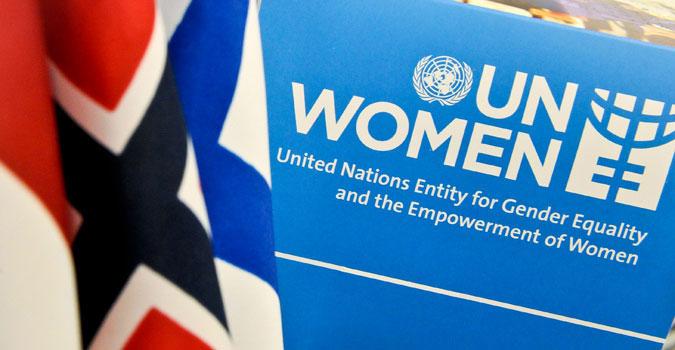
- 18 Apr 2024
Why is it in the News?
According to a recent report by UN Women, six months into the war, Gaza is facing a humanitarian crisis disproportionately impacting women and girls.
What is UN Women?
- Founded in 2010 by the United Nations General Assembly as part of the UN reform agenda.
- Merges resources and mandates to create a more significant impact on gender equality and women's empowerment.
- Serves as a global advocate for women and girls, addressing their needs and accelerating progress.
Key Roles:
- Supports intergovernmental bodies like the Commission on the Status of Women in developing policies, global standards, and norms for gender equality.
- Assists member states in implementing these standards and offers technical and financial support upon request.
- Builds effective partnerships with civil society organizations.
- Leads and coordinates the UN system's work on gender equality while promoting accountability through regular monitoring of progress.
Sustainable Development Goals (SDGs):
- Works globally to realize the SDGs for women and girls.
- Promotes women's equal participation in all aspects of life.
Country-level Support:
- Collaborates with government and non-governmental partners in countries that request assistance.
- Helps implement policies, laws, services, and resources to advance gender equality.
Grant-making Funds:
- Fund for Gender Equality: Provides grants to support innovative, high-impact programs by government agencies and civil society groups.
- UN Trust Fund to End Violence against Women: Finances initiatives that address violence against women and girls.
Commission on the Status of Women (CSW):
- A global policy-making body focused on gender equality and women's advancement.
- Operates as a functional commission of the United Nations Economic and Social Council (ECOSOC).
Information and Advocacy:
- Regularly provides information on women's rights issues to the General Assembly, ECOSOC, and the Security Council.
- Maintains the UN Secretary-General's database on violence against women, tracking measures taken by UN Member States and organizations.
- UN Women plays a vital role in advancing gender equality and women's empowerment worldwide by providing crucial support, resources, and advocacy through its various initiatives and collaborations.
Submersible Platform for Acoustic Characterisation and Evaluation (Space)
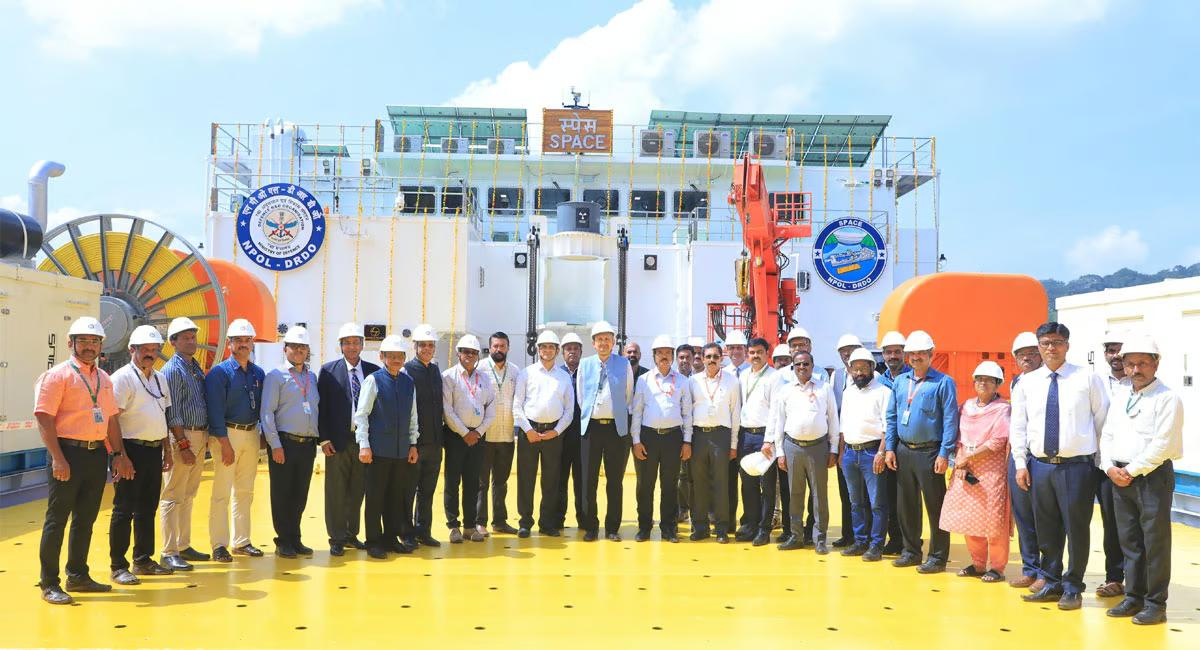
- 18 Apr 2024
Why is it in the News?
A state-of-the-art Submersible Platform for Acoustic Characterisation and Evaluation (Space) was inaugurated by Secretary, Department of Defence (R&D) and DRDO Chairman Samir V Kamat at Underwater Acoustic Research Facility, Kulamavu in Idukki district of Kerala recently.
About Submersible Platform for Acoustic Characterisation and Evaluation (SPACE):
- Developed by the Naval Physical & Oceanographic Laboratory of the Defence Research and Development Organisation (DRDO), SPACE is a premier testing and evaluation hub for sonar systems used by the Indian Navy across various platforms, including ships, submarines, and helicopters.
Key Features:
- Two primary components:
- A floating platform on the water's surface and
- A submersible platform that can be lowered up to 100 meters using winch systems.
- Facilitates quick deployment and recovery of scientific packages like sensors and transducers.
- Suitable for surveying, sampling, and data collection of air, surface, mid-water, and reservoir floor parameters using advanced scientific instrumentation.
- Well-equipped scientific laboratories cater to data processing and sample analysis requirements.
Uses:
- Evaluating complete sonar systems, enhancing research capabilities in Anti-Submarine Warfare.
- SPACE enables researchers to explore innovative solutions for underwater acoustic challenges, improve naval capabilities, and ensure the security of Indian waters.
What is Sonar?
- SONAR, which stands for Sound Navigation And Ranging, is a technology that uses sound waves to detect, locate, and map objects underwater.
- It operates on the principle of echolocation, similar to how bats and dolphins use sound to navigate and find their prey.
- The Sonar system consists of a transmitter, a receiver, and a display.
- The transmitter sends out sound waves, which travel through water and reflect off objects in their path.
- These reflected waves, or echoes, are then received by the receiver.
- By measuring the time it takes for the echoes to return and the strength of the received signal, the system can determine the distance, direction, size, and shape of the underwater object.
Sonar has various applications, including:
- Maritime navigation: Commercial ships and submarines use sonar to navigate through unfamiliar waters, avoid obstacles, and create underwater maps.
- Military applications: Sonar plays a crucial role in military operations for detecting and tracking enemy submarines, underwater mines, and other threats.
- Fishing and underwater research: Sonar helps fishermen locate schools of fish and is also used by scientists and researchers to study marine life, underwater topography, and archaeological sites.
Iron Age Archaeological Sites Discovered in Telangana
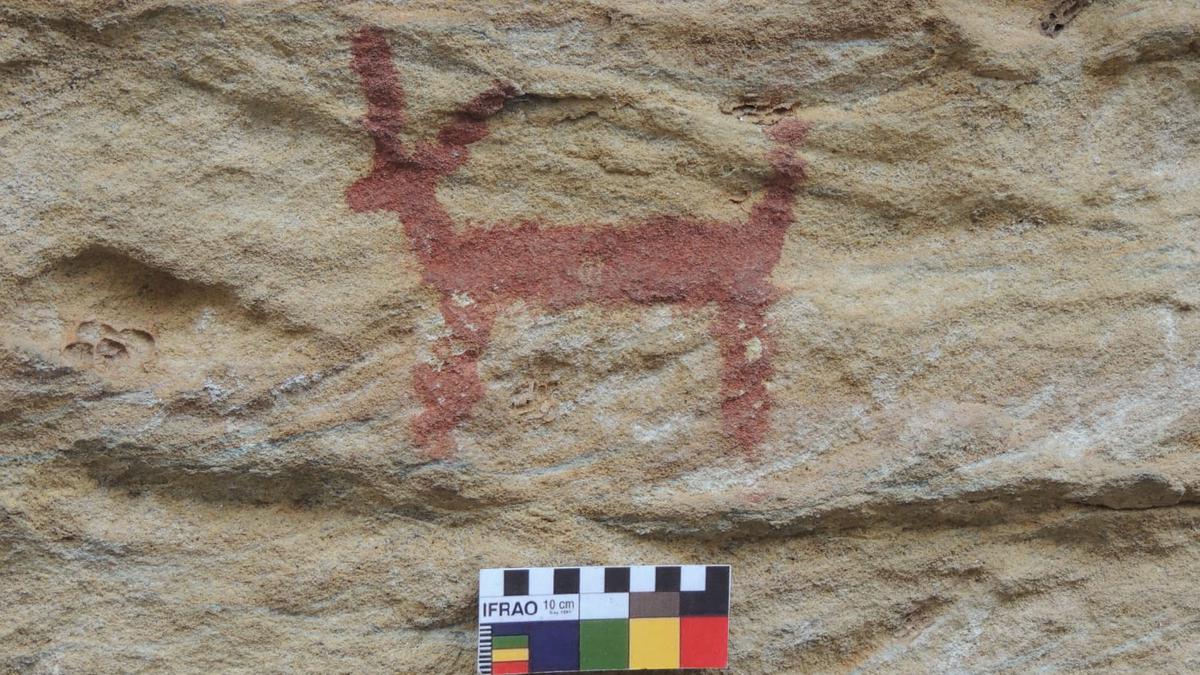
- 18 Apr 2024
Why is it in the News?
A team of archaeologists claimed to have discovered a unique Iron Age megalithic site at Ooragutta near Bandala village in SS Tadvai mandal of Mulugu district, Telangana.
Recent Archaeological Discoveries in Telangana:
Ooragutta Iron Age Megalithic Site:
- Situated near Bandala village, SS Tadvai Mandal, Mulugu district, and boasts over 200 megalithic structures dating back to 1,000 BCE.
- Notable for its 'Dolmenoid Cists' featuring cap-stone-shaped side slabs, a rarity in India.
- Resembles European 'Passage Chambers', possibly influencing the design of squarish and rectangular monuments.
Rock Art Sites at Damaratogu:
- Two new sites were discovered in Gundala mandal of Bhadradri Kothagudem district.
- 'Devarlabanda Mula' site contains animal depictions, possibly dating back to the Mesolithic Age (8,000 - 3,000 BCE).
- No weapons or domestic animals are shown, suggesting the paintings may be from a pre-agricultural era.
About the Iron Age:
Timeframe:
- Began between 1200 BCE and 600 BCE, following the Stone Age and Bronze Age.
- Spanned across Africa, Europe, and Asia during prehistoric times in the Old World.
Discovery and Use of Iron:
- Iron replaced bronze as the preferred choice of metal in metalworking.
- First discovered in Turkey before spreading to other European countries.
- Used for making strong tools, enhancing agriculture through the development of the iron plow, and creating powerful weapons for armies.
Technological Advancements:
- Construction of large forts, bridges, and deep mines to extract valuable minerals.
- Improvements in pottery and weaving techniques.
Social and Political Impacts:
- Rulers gained significant power through the use of iron weapons and the ability to conquer other lands.
- The transition from prehistory to history as writing became widespread, marking the end of the Iron Age.
- Iron remains popular for various applications today, such as tools, building materials, and machinery.
- The Iron Age was a transformative period in human history, characterized by the discovery of iron, advancements in technology, and shifts in social and political structures. The use of iron revolutionized agriculture, warfare, and everyday life, leaving a lasting impact on human civilization.
B virus
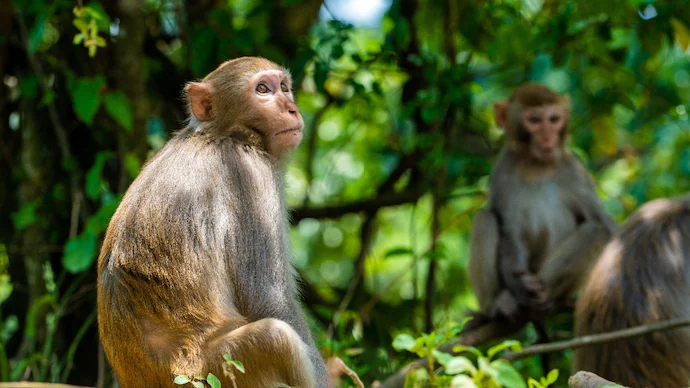
- 17 Apr 2024
Why is it in the News?
A 37-year-old man wounded by a wild monkey in Hong Kong is in intensive care suffering from infection with B virus.
What is B virus?
- B virus, also known as herpes B virus or Macacine herpesvirus 1 (McHV-1), is a type of herpesvirus found in macaque monkeys, particularly rhesus macaques.
- While asymptomatic in these animals, it can cause severe neurological complications, including encephalitis, in humans if transmitted through bites, scratches, or contact with infected bodily fluids.
Is B virus infection fatal??
- B virus infections in humans are rare but potentially fatal, with symptoms ranging from fever and headache to neurological dysfunction and death.
- Of the 50 cases reported in the US, 21 have died.
- Prompt treatment with antiviral medication is essential if exposure to B virus occurs, and preventive measures are crucial for individuals working with or handling macaques.
How does it spread??
- The transmission of this virus among humans is rare.
- So far, only one case of human-to-human transmission has been recorded.
What are the symptoms of B virus infection??
- Disease onset typically occurs within 1 month of exposure, although the actual incubation period can be as short as 3–7 days.
- The common symptoms seen during the infection are:
- Fever, headache, myalgia, and localized neurologic symptoms (e.g., pain, numbness, itching) might occur near the wound site.
- Lymphadenitis, lymphangitis, nausea, vomiting, and abdominal pain also can occur.
Treatment:
- The treatment for B virus includes providing antiviral medications.
Green Bonds (SGrBs)

- 17 Apr 2024
Why is it in the News?
Recently, the RBI approved FIIs such as insurance companies, pension funds, and sovereign wealth funds to invest in India's Sovereign Green Bonds (SGrBs), which finance projects aiming to advance India's shift to a low-carbon economy.
What are Green Bonds?
- Green bonds are bonds issued by any sovereign entity, inter-governmental groups or alliances, and corporates with the aim that the proceeds of the bonds are utilised for projects classified as environmentally sustainable.
- The framework for the sovereign green bond was issued by the government on November 9, 2022.
Why are these bonds important?
- Over the last few years, Green Bonds have emerged as an important financial instrument to deal with the threats of climate change and related challenges.
- According to the International Finance Corporation (IFC), a World Bank Group’s institution, climate change threatens communities and economies, and it poses risks to agriculture, food, and water supplies.
- A lot of financing is needed to address these challenges.
- It’s critical to connect environmental projects with capital markets and investors and channel capital towards sustainable development – and Green Bonds are a way to make that connection.
When did Govt plan these bonds?
- In August 2022, the government said it stands committed to reducing the Emissions Intensity of GDP by 45 percent from the 2005 level by 2030 and achieving about 50 percent cumulative electric power installed capacity from non-fossil fuel-based energy resources by the same year.
- In line with the commitment to significantly reduce the carbon intensity of the economy, the Union Budget 2022-23 announced to issue of Sovereign Green Bonds.
- The country’s climate actions have so far been largely financed from domestic resources and it is now targeting the generation of additional global financial resources.
- The issuance of the Sovereign Green Bonds will help the Indian government in tapping the requisite finance from potential investors for deployment in public sector projects aimed at reducing the carbon intensity of the economy.
Where will the proceeds go?
- The government will use the proceeds raised from SGrBs to finance or refinance expenditure (in parts or whole) for various green projects, including renewable energy, clean transportation, energy efficiency, climate change adaptation, sustainable water and waste management, pollution and prevention control, and green buildings.
- In renewable energy, investments will be made in solar, wind, biomass, and hydropower energy projects.
Combined Maritime Forces (CMF)
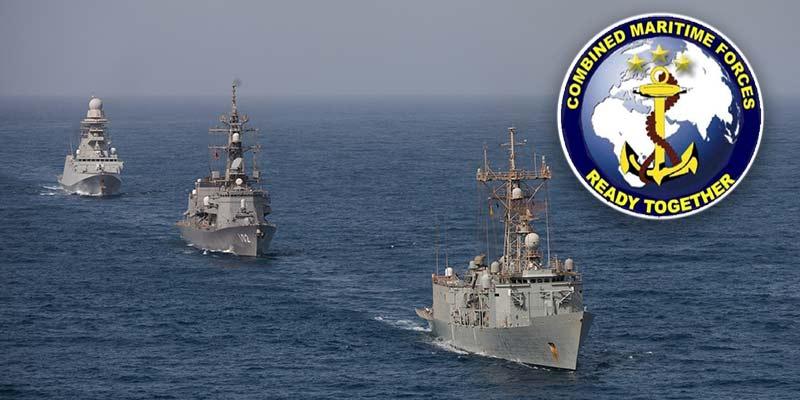
- 17 Apr 2024
Why is it in the News?
The Indian Navy successfully intercepted and apprehended a dhow in the Western Arabian Sea recently and seized 940 kilograms of contraband narcotics.
About the Combined Maritime Forces (CMF):
- The Combined Maritime Forces (CMF) is a Bahrain-based multinational naval partnership dedicated to fostering security, stability, and prosperity throughout vital international waterways.
- Comprised of five task forces, CMF's primary objectives include countering terrorism, preventing piracy, enhancing regional cooperation, and maintaining a safe maritime environment.
- CMF's efforts focus on eliminating violent extremism and terrorist networks in its operational areas, collaborating with regional and global partners to bolster security and stability, assisting in capacity-building for regional maritime capabilities, and responding to environmental and humanitarian crises when needed.
- The five task forces within CMF are:
- CTF 150: Gulf of Oman Security and Counter-Terrorism
- CTF 151: Counter-piracy operations
- CTF 152: Arabian Gulf Security and Cooperation
- CTF 153: Red Sea and Gulf of Aden security and cooperation
- CTF 154: Maritime security training
- CMF comprises a diverse group of nations, each voluntarily contributing to the organization's efforts to maintain security and stability in international waters.
- Participating nations include:
- Australia, Bahrain, Belgium, Brazil, Canada, Colombia, Denmark, Ecuador, Egypt, France, Germany, Greece, India, Iraq, Italy, Japan, Jordan, Kenya, Republic of Korea, Kuwait, Malaysia, the Netherlands, New Zealand, Norway, Pakistan, the Philippines, Poland, Portugal, Qatar, Saudi Arabia, Seychelles, Singapore, Spain, Thailand, Türkiye, UAE, United Kingdom, United States, and Yemen.
- Members have the flexibility to contribute in various ways, from providing liaison officers at CMF's headquarters in Bahrain to supplying warships, support vessels, and maritime reconnaissance aircraft.
- CMF can also request support from warships not explicitly assigned to the organization.
- The headquarters of CMF is co-located with the US Naval Central Command and US Navy Fifth Fleet at Naval Support Activity (NSA) Bahrain.
- CMF is commanded by a US Navy Vice Admiral, with a UK Royal Navy Commodore serving as the Deputy Commander. Senior staff roles at CMF's headquarters are filled by personnel from member nations, ensuring a diverse and collaborative environment.
- Together, these task forces enable CMF to effectively address a wide range of challenges and promote a more secure maritime domain for all nations.
Gaia-BH3
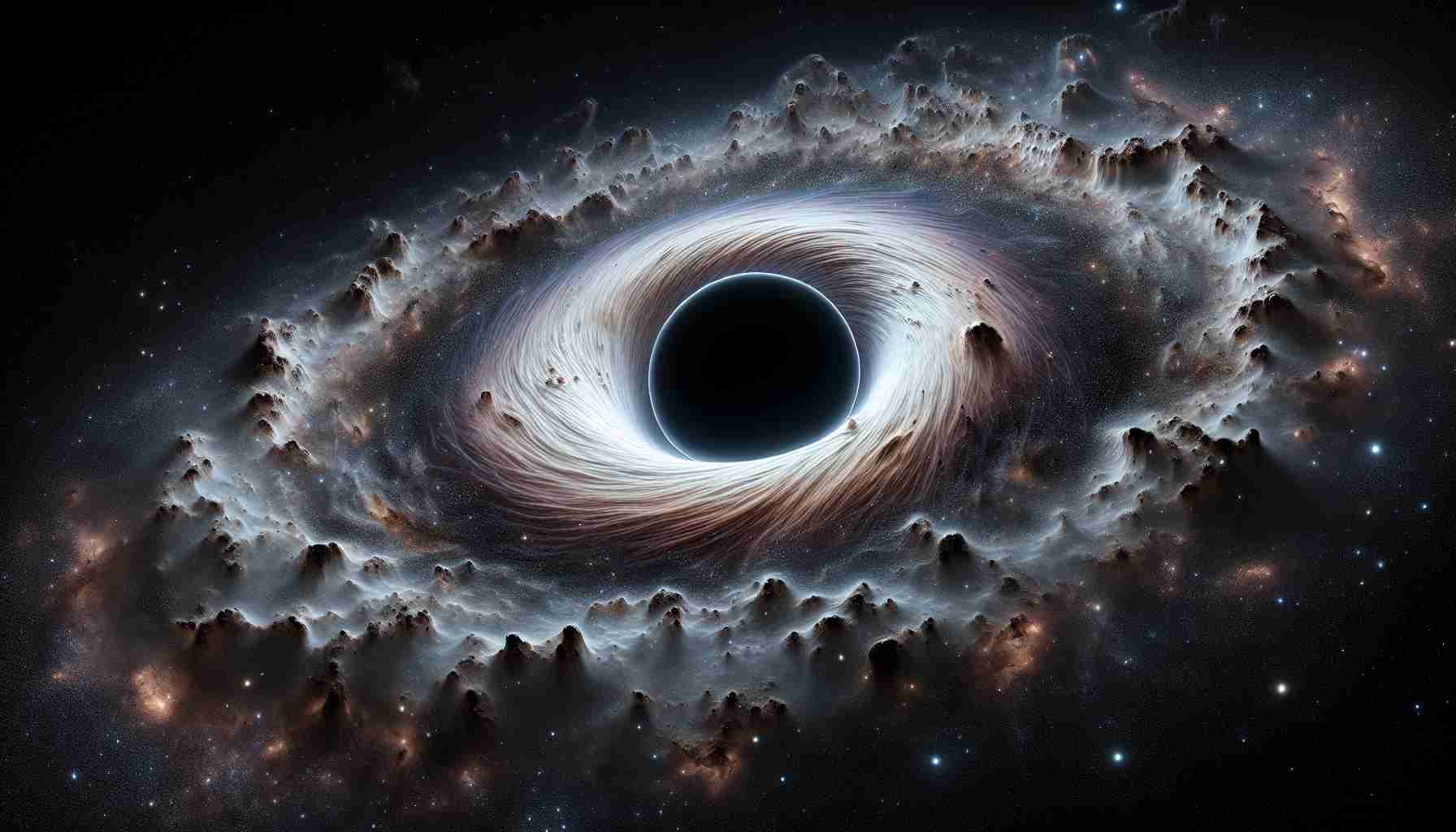
- 17 Apr 2024
Why is it in the News?
European astronomers have made a groundbreaking discovery by identifying Gaia-BH3, a colossal black hole located just 2,000 light years away from Earth within the Milky Way, revolutionizing our comprehension of star formation.
What Is Gaia-BH3?
- Gaia-BH3, a stellar black hole in the Milky Way galaxy, has been identified as the most massive one discovered to date.
- The European Space Agency's Gaia mission detected Gaia-BH3 due to its distinctive 'wobbling' effect on a companion star orbiting it.
- Through the use of the Very Large Telescope at the European Southern Observatory in Chile's Atacama Desert and other ground-based observatories, researchers confirmed its enormous mass.
- With a mass 33 times greater than our sun, Gaia-BH3 is situated in the Aquila constellation at a distance of 1,926 light-years from Earth, earning it the title of the second-closest known black hole.
- Gaia BH1, located about 1,500 light-years away, remains the closest known black hole to Earth with a mass approximately 10 times that of our sun.
- While Gaia-BH3 holds the distinction of being the most massive stellar black hole in our galaxy, it pales in comparison to Sagittarius A*, the supermassive black hole at the Milky Way's center, which boasts a staggering mass of roughly 4 million times that of the sun.
Difference Between Stellar and Supermassive Black Holes:
- Stellar and supermassive black holes are two distinct types of cosmic phenomena, each with unique characteristics and origins.
- Stellar-mass black holes result from the gravitational collapse of a single star or the merger of two neutron stars, resulting in masses comparable to stars.
- Their mass typically ranges from three to fifty times that of our sun.
- In contrast, supermassive black holes boast a mass exceeding 50,000 times the solar mass, often reaching into the millions or billions.
- The formation of supermassive black holes remains a mystery to scientists, as they are too massive to have formed from a single star's collapse.
- Their consistent presence at the center of galaxies suggests a potential connection to galactic formation.
- While our understanding of these cosmic giants continues to evolve, one thing is clear: both stellar and supermassive black holes are awe-inspiring fixtures in our universe.
United Nations Conference on Trade and Development (UNCTAD)
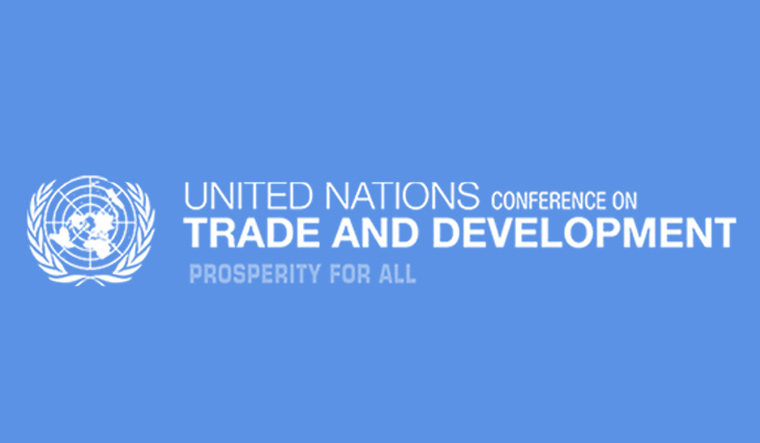
- 17 Apr 2024
Why is it in the News?
Global trade dynamics are expected to remain sluggish in 2024, the United Nations Conference on Trade and Development (UNCTAD) has warned.
Key Highlights of the Report:
- UNCTAD’s latest projections indicate global growth of 2.6 percent in 2024, slightly slower than in 2023.
- This marks the third consecutive year in which the global economy will grow at a slower pace than before the pandemic when the average rate for 2015–2019 was 3.2 percent.
India’s growth is expected to be marginally lower than in 2023:
- Regarding India, the report stated that the economy grew at 6.7 percent in 2023 and is expected to be marginally lower at 6.5 percent in 2024.
- It noted that the expansion in 2023 was influenced by strong public investment and the services sector, which received a boost from robust local demand for consumer services along with assured external demand for business services exports.
- The Reserve Bank of India (RBI) is expected to keep interest rates constant in the near term, while strong public investment expenditures will offset restrained public consumption spending.
About the United Nations Conference on Trade and Development (UNCTAD):
- The United Nations Conference on Trade and Development (UNCTAD) is an intergovernmental organization established in 1964 to promote the interests of developing countries in global trade.
- With its headquarters in Geneva, Switzerland, UNCTAD has 195 member states and collaborates with numerous nongovernmental organizations worldwide.
- The organization focuses on formulating policies related to various aspects of development, including trade, aid, transport, finance, and technology.
- UNCTAD plays a crucial role in addressing the concerns of developing countries regarding international institutions, such as the World Trade Organization (WTO), the International Monetary Fund (IMF), and the World Bank.
- By providing a platform for these countries to discuss and tackle their unique challenges, UNCTAD contributes to global economic development and reduces inequalities.
- Some notable achievements of UNCTAD include the establishment of the Global System of Trade Preferences (now replaced by the World Trade Organization), which reduces tariffs and removes non-tariff trade barriers, the Common Fund for Commodities, providing financial assistance to countries dependent on commodity exports, and various agreements for debt relief.
- In recent years, UNCTAD has focused on addressing globalization challenges and helping the least developed countries integrate into the global economy.
Hydrocarbon Extraction: Processes, Methods, Environmental Impact
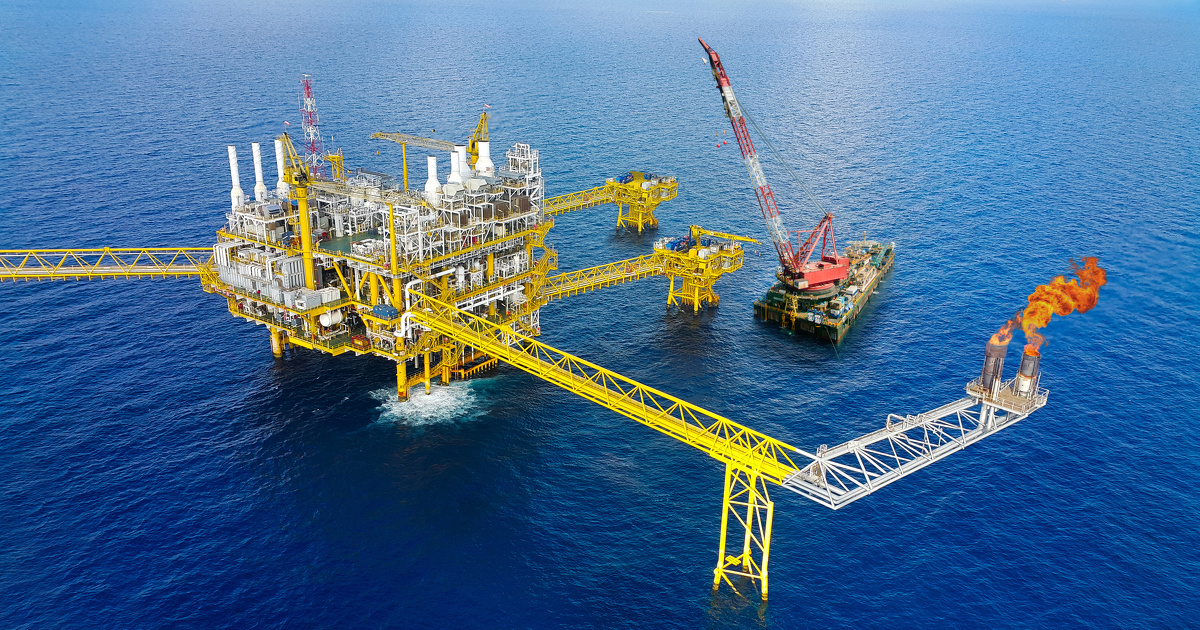
- 16 Apr 2024
Why is it in the News?
Over millennia, mighty geological processes in the earth’s crust heated and compressed together pieces of life forms that had been dead for a while.
What Is a Hydrocarbon?
- The term hydrocarbon refers to an organic chemical compound that is composed exclusively of hydrogen and carbon atoms.
- Hydrocarbons are naturally occurring and form the basis of crude oil, natural gas, coal, and other important energy sources.
- They are highly combustible and produce carbon dioxide, water, and heat when they are burned.
- As such, hydrocarbons are highly effective as a source of fuel.
Where are Hydrocarbons Located?
- Hydrocarbons, such as natural gas, coal, crude oil, and petroleum, are typically found in underground rock formations within reservoirs.
- These reservoirs form when less resistant rocks are overlayed by more resistant ones, creating a lid that traps hydrocarbons beneath.
- Petroleum geology tools, methods, and techniques are used to assess these rocks for their porosity and permeability, determining how much hydrocarbons they can hold and how easily they can flow through them.
- Kerogen, lumps of organic matter, is the primary source of hydrocarbons within these subterranean rocks.
- Kerogen can be deposited from lacustrine, marine, or terrestrial ecosystems.
- Over time, surrounding rocks can become warmer and more compactified, exerting forces on kerogen that cause it to break down into various hydrocarbons, such as waxy oils, light oils, gas, and coal.
- Petroleum geologists locate and characterize kerogen-containing source rocks, studying their geophysical and thermal properties.
- They conduct modeling activities, analyze observational data, and dig exploration wells to estimate hydrocarbon quantities.
- Once a profitable hydrocarbon source is identified, drilling can commence.
How are the Hydrocarbons Accessed?
- Drilling and reservoir engineers employ various methods to extract hydrocarbons efficiently without damaging the reservoir.
- The process begins with creating a production well, strategically positioned to maximize drainage.
- A drilling machine, consisting of a drill pipe, drill collars, and a drill bit, is used to create the well.
- As drilling progresses, steel casings are lowered into the tunnel, and cement slurry is pumped into the gap between the casings and the tunnel's outer edge.
- The solidifying cement prevents cave-ins and blocks surrounding fluids from entering the well.
- The tunnel is filled with drilling fluid, which cools the drill bit and carries rock fragments to the surface for removal.
- Controlling drilling fluid pressure is crucial to prevent hydrocarbon eruptions. Modern drilling setups use blowout preventers to manage such events.
- Meanwhile, mud-logging records rock properties at different depths, aiding the process.
- Drill pipes can be extended or replaced as needed during the drilling process, which is now conducted by advanced drilling rigs equipped with power sources.
- Offshore rigs feature additional facilities to ensure stability and facilitate extraction through the water column.
How are the Hydrocarbons Extracted?
- Upon drilling the production well, it must be prepared for hydrocarbon drainage, called completion.
- Engineers remove the drill string and perforate the casing, allowing hydrocarbons to flow into the well and rise to the surface.
- A narrower tube encourages one-directional flow and controls outflow using valves.
- When pressure differences are insufficient for natural fluid ascent, pump jacks or other artificial lift methods can aid extraction.
- Workovers may be required to maintain or improve production efficiency over time.
- Extraction phases include primary (relying on natural processes), secondary (inducing artificial pressure), and tertiary (enhanced recovery methods, like steam injection) phases, each contributing to the total hydrocarbon yield.
What Happens When a Well is Depleted?
- Wells may cease extraction before depletion if operations become unprofitable.
- Properly plugging abandoned wells prevents hydrocarbon and gas leakage into surrounding environments, yet deterioration and failure of plugs remain concerns.
- Decommissioning is the most thorough but often expensive solution.
- Improperly abandoned wells contribute significantly to methane emissions, alongside emissions from extraction and component use.
- A 2018 study estimated that 9,000 oilfields in 90 countries released 1.7 billion tonnes of carbon dioxide in 2015 alone.
- Overall, the pursuit of subterranean hydrocarbons, including natural gas, coal, crude oil, and petroleum, employs various extraction methods.
- However, it is essential to consider the environmental impact and sustainability of these operations.
Thiruvalluvar
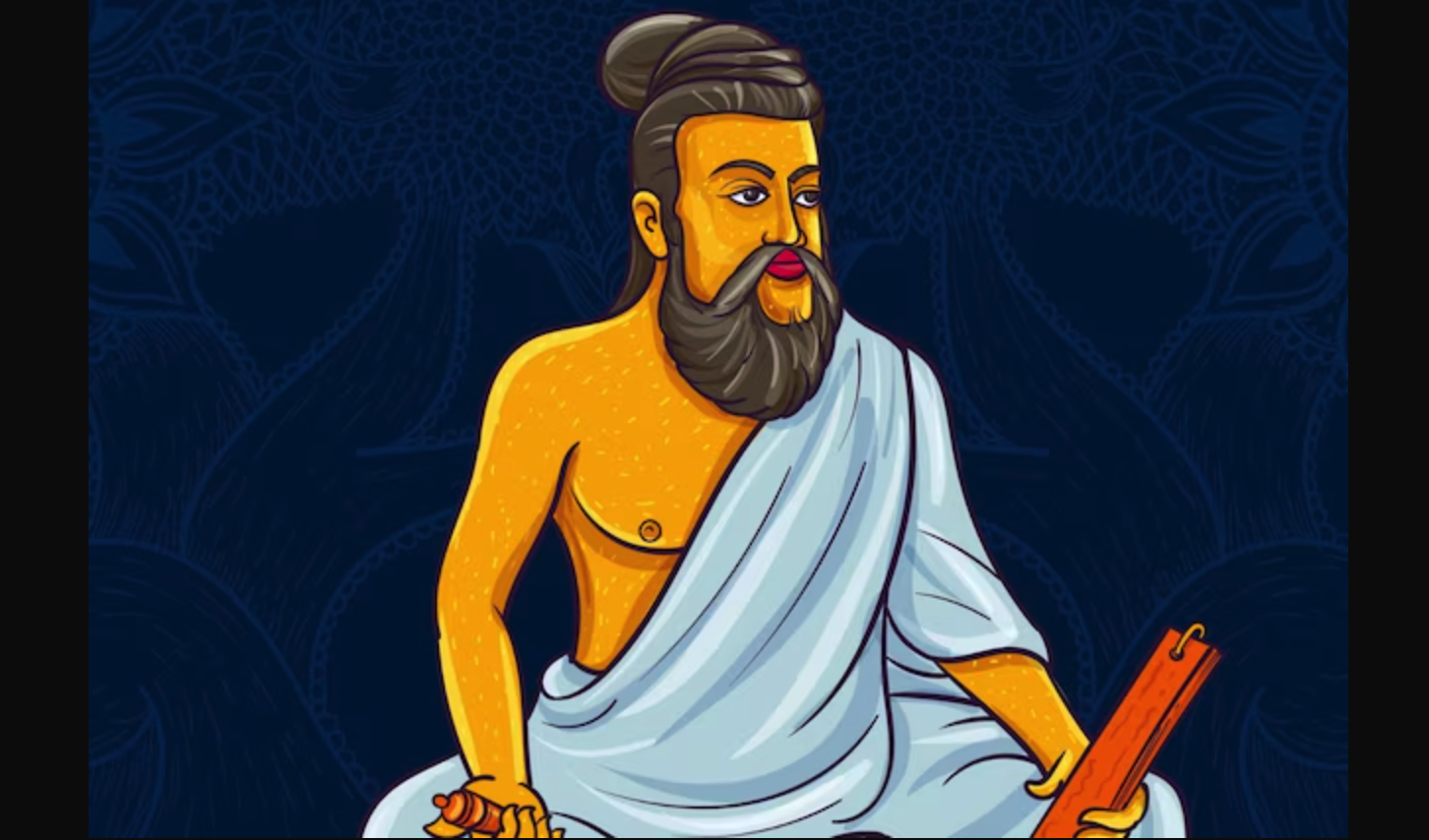
- 16 Apr 2024
Why is it in the News?
Seeking to connect with the people of Tamil Nadu where his party is trying to gain a foothold, Prime Minister Narendra Modi recently announced that the BJP will work towards building Thiruvalluvar cultural centers all over the world.
Who was Thiruvalluvar?
- Thiruvalluvar, the author of the revered 'Thirukkural' or 'Sacred Couplets', remains a figure of historical debate.
- His exact period and religious affiliation are uncertain, with proposed dates ranging from the 3rd or 4th century CE to the 8th or 9th century.
- Various groups regard him as a Hindu sage, a Jain sage, or a Dravidian saint with no religious identifiers except his Dravidian heritage.
- Accounts of Thiruvalluvar's origins are diverse.
- In Edward Jewitt Robinson's 1873 book, 'Tamil Wisdom: Traditions Concerning Hindu Sages and Selections from their Writings', he described Thiruvalluvar as a "Pariah" with a mother from "the low class" and a possibly Brahmin father.
- According to this narrative, Thiruvalluvar was found in a grove near a Shiva temple in Mayilapur and was taken in by the wife of a high-ranking Velalan before being entrusted to a "Pariah family."
- Despite the ambiguity surrounding Thiruvalluvar's identity, his wisdom-laden verses in 'Thirukkural' continue to influence and inspire generations across religious and cultural divides.
Why does Thiruvalluvar matter?
- Thiruvalluvar, affectionately called Valluvar by Tamils, is revered as a cultural and moral icon across caste and religious lines.
- His 'Thirukkural', a compilation of 1,330 couplets, is an integral part of Tamil culture, comparable to the Bhagavad Gita or Ramayana in North Indian Hindu households.
- It serves as a foundational text for ethical living and tracing Tamil cultural roots.
- Beyond Tamil Nadu, Thiruvalluvar's wisdom is celebrated in the context of ancient India's rich philosophical heritage, emphasizing morality and ethics.
- His enduring influence is evident as successive Indian finance ministers reference his teachings in annual Budget speeches.
- However, competing claims to Thiruvalluvar's legacy have sparked controversy, such as the 2019 debate surrounding the BJP's depiction of him in saffron robes instead of traditional white garments.
- Despite these disputes, the profound impact of Thiruvalluvar's teachings continues to resonate across various cultures and languages, fostering unity and moral guidance.
Why Are Political Parties Asserting Thiruvalluvar's Legacy?
- Political parties, both national and regional, have long vied for ownership of Thiruvalluvar's legacy. For instance, the BJP, with a limited grassroots presence in Tamil Nadu, seeks to bolster its standing through the appropriation of Tamil saints and icons.
Trade and Economic Partnership Agreement (TEPA)
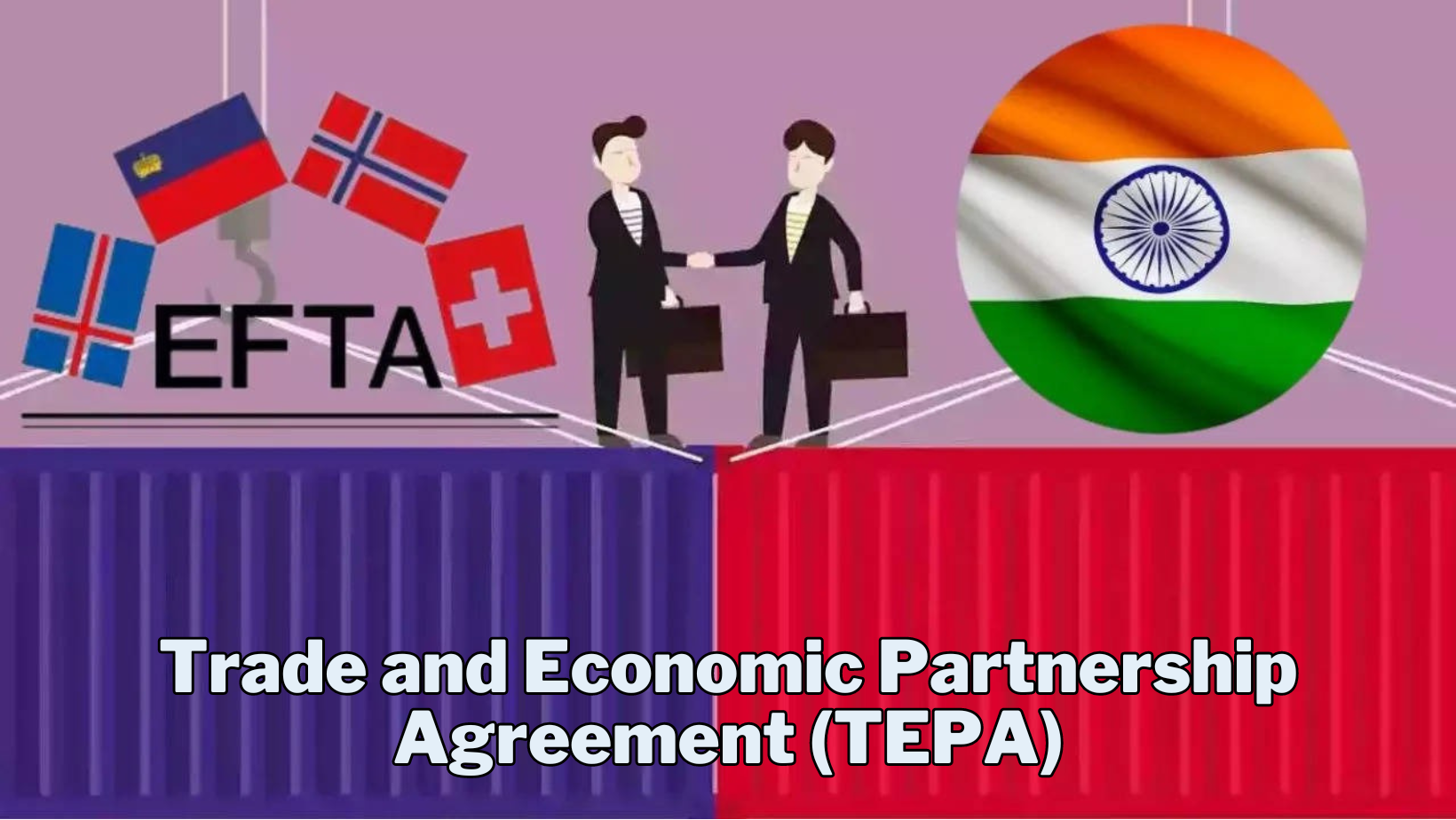
- 16 Apr 2024
Why is it in the News?
The new approach to intellectual property and investment through FTAs accepts an IP maximalist agenda of the United States Trade Representative; it threatens to upset the fine balance between public and private interests and push India away from essential innovations.
What is the Trade and Economic Partnership Agreement (TEPA)?
- The TEPA is a pact designed to foster trade and investment opportunities between India and the European Free Trade Association (EFTA).
- It endeavors to diminish or eliminate tariffs and non-tariff barriers across various product categories.
Objectives:
- Facilitate trade and investment by reducing tariffs and non-tariff barriers.
- Ensure equitable and transparent market access for service providers and investors.
- Enhance cooperation concerning the protection and enforcement of intellectual property rights.
- Streamline trade procedures, promote customs cooperation, and establish effective mechanisms for dispute resolution.
Coverage:
- The agreement encompasses 14 chapters, addressing key areas such as:
- Trade in goods
- Rules of origin
- Intellectual property rights (IPRs)
- Trade in services
- Investment promotion and cooperation
- Government procurement
- Technical barriers to trade
- Trade facilitation
- By addressing these comprehensive aspects, the TEPA seeks to bolster economic collaboration and foster mutually beneficial outcomes for both India and EFTA member states.
What is the European Free Trade Association (EFTA)?
- EFTA is an intergovernmental organization of four member countries that are not part of the European Union (EU): Iceland, Liechtenstein, Norway, and Switzerland.
- The association was set up in 1960 to promote closer economic cooperation and free trade in Europe.
How important is EFTA?
- Iceland, Liechtenstein, Norway, and Switzerland have a combined population of less than 14 million.
- But their association punches above its weight in terms of trade figures.
- In 2021, EFTA was the tenth-largest trader in the world in merchandise trade and the eighth-largest in trade in services.
What is EFTA’s history?
- EFTA was established in 1960 by seven countries: Austria, Denmark, Norway, Portugal, Sweden, Switzerland, and the United Kingdom.
- Iceland and Liechtenstein joined EFTA in 1970 and 1991, respectively.
- Denmark, the UK, Portugal, Austria, and Sweden then left EFTA to join the EU between 1973 and 1995.
UN Permanent Forum on Indigenous Issues
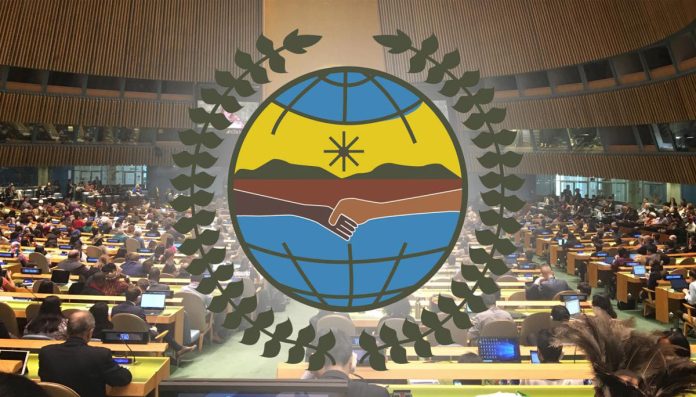
- 16 Apr 2024
Why is it in the News?
As the 23rd session of the UN Permanent Forum on Indigenous Issues begins in New York, United States on April 15, participants pointed out that though recognition of indigenous territories is increasing, it is not happening at the pace the planet needs.
About the UN Permanent Forum on Indigenous Issues:
- Established in 2000, the UNPFII serves as an advisory body to the United Nations Economic and Social Council (ECOSOC), focusing on indigenous issues related to economic and social development, culture, environment, education, health, and human rights.
- Alongside the Expert Mechanism on the Rights of Indigenous Peoples and the Special Rapporteur on the Rights of Indigenous Peoples, the UNPFII is one of three UN entities mandated to address Indigenous Peoples' issues.
The Permanent Forum's primary objectives include:
-
- Providing expert advice and recommendations to the Council, United Nations programs, funds, and agencies.
- Raising awareness and fostering integration and coordination of indigenous issues within the UN system.
- Preparing and disseminating information on indigenous issues.
Membership and Structure
- The UNPFII consists of sixteen independent experts who serve three-year terms and may be re-elected or re-appointed for one additional term.
- Eight members are nominated by governments, while the remaining eight are nominated directly by indigenous organizations from their respective regions.
- Following each session, the UNPFII submits a report containing recommendations and draft decisions to the ECOSOC, contributing to global efforts to address and improve the well-being of Indigenous Peoples worldwide.
Long Period Average (LPA) Rainfall
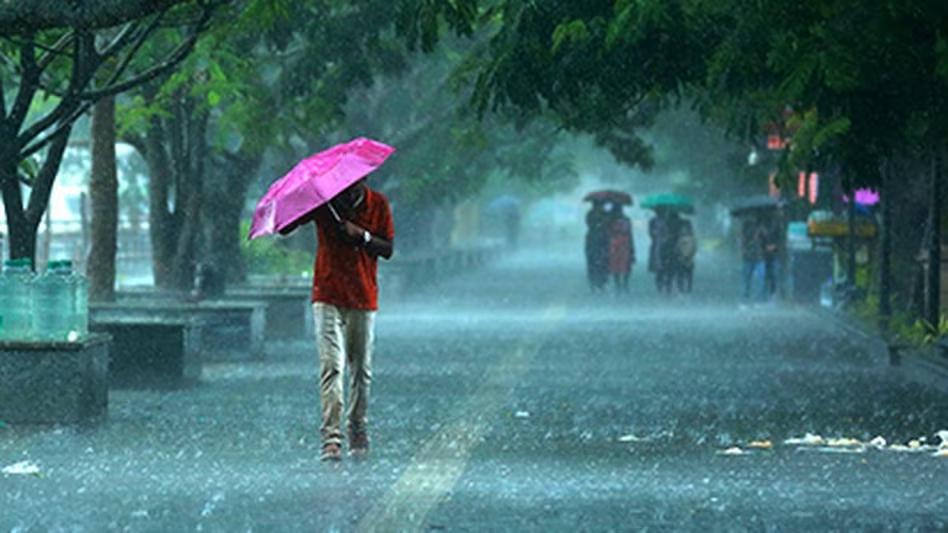
- 16 Apr 2024
Why is it in the News?
Ministry of Earth Sciences announced recently that the country as a whole is likely to receive above-normal rainfall during the southwest monsoon from June to September 2024.
What is the Long Period Average (LPA) of Rainfall?
- The India Meteorological Department (IMD) predicts a “normal”, “below normal”, or “above normal” monsoon in relation to a benchmark “long period average” (LPA).
- According to the IMD, the “LPA of rainfall is the rainfall recorded over a particular region for a given interval (like month or season) average over a long period like 30 years, 50 years, etc”.
- While this quantitative benchmark refers to the average rainfall recorded from June to September for the entire country, the amount of rain that falls every year varies from region to region and from month to month.
- Therefore, along with the countrywide figure, the IMD also maintains LPAs for every meteorological region of the country — this number ranges from around 61 cm for the drier Northwest India to more than 143 cm for the wetter East and Northeast India.
Why LPA is Needed?
- The IMD records rainfall data at more than 2,400 locations and 3,500 rain-gauge stations.
- Because annual rainfall can vary greatly not just from region to region and from month to month, but also from year to year within a particular region or month, an LPA is needed to smooth out trends so that a reasonably accurate prediction can be made.
- A 50-year LPA covers for large variations in either direction caused by freak years of unusually high or low rainfall (as a result of events such as El Nino or La Nina), as well as for the periodic drought years and the increasingly common extreme weather events caused by climate change.
What is the Range of Normal Rainfall?
- The IMD maintains five rainfall distribution categories on an all-India scale. These are:
- Normal or near normal, when the percentage departure of actual rainfall is +/-10% of LPA, that is, between 96-104% of LPA;
- Below normal, when the departure of actual rainfall is less than 10% of LPA, that is 90-96% of LPA;
- Above normal, when actual rainfall is 104-110% of LPA;
- Deficient, when the departure of actual rainfall is less than 90% of LPA; and
- Excess, when the departure of actual rainfall is more than 110% of LPA.
Space Tourism

- 15 Apr 2024
Why is it in the News?
Entrepreneur and pilot on the NS-25 mission of Blue Origin — a company founded by Jeff Bezos, who is also Gopi Thotakura is set to become the first Indian to venture into space as a tourist the founder of Amazon.
Context:
- In recent years, space tourism has grown by leaps and bounds.
- The space tourism market was valued at $848.28 million.
- It is expected to grow to $27,861.99 million by 2032.
- However, there are several challenges, such as high cost, and environmental concerns, that may limit the industry’s growth.
- The NS-25 mission, which Gopi Thotakura is a part of, is a sub-orbital mission. Thotakura and his other crew members will be taken to outer space via New Shepard, a fully reusable sub-orbital launch vehicle developed specifically for space tourism by Blue Origin.
What is Space Tourism?
- Space tourism is essentially a section of the aviation sector that seeks to provide tourists with the opportunity to become astronauts and experience space travel for recreational, leisure, or business purposes.
- There are two main types of space tourism, sub-orbital and orbital.
- The sub-orbital spacecraft takes passengers just beyond the Kármán line (it lies nearly 100 kilometers above our heads and is considered to be the boundary between Earth’s atmosphere and outer space).
- The passengers get to spend a few minutes in outer space and then come back to Earth.
- The orbital spacecraft, on the other hand, takes passengers much further than the Kármán line.
- Usually, passengers can spend from a couple of days to more than a week at an altitude of nearly 1.3 million feet.
- In September 2021, Space X’s Falcon 9 took four passengers to an altitude of 160 km where they spent three days orbiting the Earth.
What are the Challenges?
- Currently, space tourism is expensive as a passenger generally has to pay at least a million dollars to reach outer space.
- This amount is out of reach for almost everyone.
- Moreover, several studies have pointed out that space tourism may lead to environmental damage as rockets emit gaseous and solid chemicals directly into the upper atmosphere.
- A 2022 study done by researchers found that the soot emissions from rocket launches are far more effective at warming the atmosphere compared to other sources.
- Safety is also a concern when it comes to space tourism.
- Despite high safety standards, a total of 676 people have flown into space and 19 of them have died, as of November 2023, according to a report by Astronomy Magazine.
- This means that approximately 3% of astronauts died during their space flight which is quite a high fatality rate.
Special Olympics Bharat

- 15 Apr 2024
Why is it in the News?
Special Olympics Bharat (SOB), a National Sports Federation of India is forming district units across Tamil Nadu through elections on April 22.
About Special Olympics Bharat:
- Special Olympics Bharat is a National Sports Federation also registered under the Indian Trust Act 1882 in 2001 and is accredited by Special Olympics International to conduct Special Olympics Programs in India.
- It is recognized by the Ministry of Youth Affairs & Sports, Government of India as a National Sports Federation in the Priority Category, for the development of Sports for Persons with Intellectual Disabilities.
- It is a designated Nodal Agency for all disabilities on account of its national presence and experience, especially in rural areas which account for nearly 75 percent of the disabled population in India.
- Mission: The mission of Special Olympics is to provide year-round sports training and athletic competition in a variety of Olympic-type sports for children and adults with intellectual disabilities, giving them continuing opportunities to develop physical fitness, demonstrate courage, experience joy, and participate in a sharing of gifts, skills, and friendship with their families, other Special Olympics athletes and the community.
- Special Olympics Bharat works towards the social acceptance of people with intellectual disabilities, whereby they are respected and given equal chances to become productive citizens.
- They encourage athletes to move from the Special Olympics training and competition into school and community programs where they can compete in regular sports activities.
Special Olympics Bharat strives to:
- Focus on holistic development and training that goes beyond the classrooms into the playing fields, cultural and community centers, to motivate children with disabilities to join and remain in school
- Create role models who will inspire the children and also motivate parents to send their children to school and to participate in sports and other extra-curricular activities
- Train teachers to sensitize them to the needs of special children, and create a cadre of physical education teachers from among the disabled who can work with schools and community centers
- Ensure maximum involvement of the community for greater public understanding and acceptance of people with intellectual disabilities.
- Ensure all Special Olympics Bharat activities local, state, national, and international reflect the Olympic movement values, standards, ceremonies, and events.
What is Intellectual Disability?
- Intellectual disability is a lifelong condition that affects a person’s intellectual skills and their behaviour in different situations.
- It can include difficulties in communication, memory, understanding, problem-solving, self-care, social and emotional skills, and physical skills.
- People with intellectual disability have the same feelings, rights, and aspirations as everyone else.
- Intellectual disability does not define who a person is, how they should be treated, or how they want to live.
- An IQ test determines whether a person has an intellectual disability. IQ scores lower than 70 indicate an intellectual disability.
Precautionary Principle
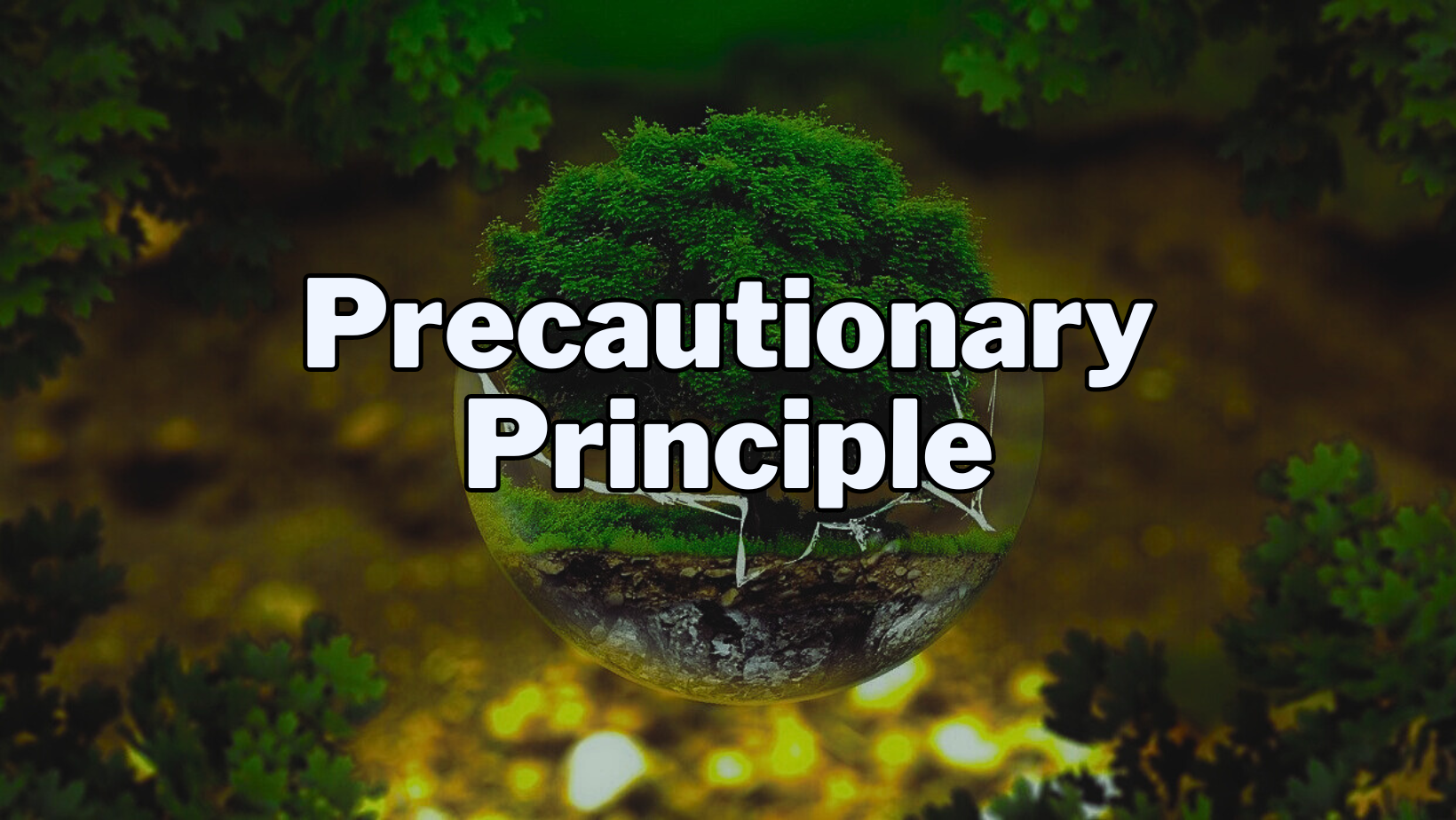
- 15 Apr 2024
Why is it in the News?
The precautionary principle is becoming an established guideline for policymakers tackling environmental problems according to British environmentalist Norman Myers
What is the Precautionary Principle?
- The Precautionary Principle serves as a foundational concept in policymaking, advocating for the adoption of proactive measures to mitigate potential risks to public health or the environment:
- Proactive Risk Management: The principle legitimizes the implementation of preventative measures in situations where there are uncertainties regarding the extent of harm posed by certain activities or policies.
- Rather than waiting for conclusive scientific evidence, decision-makers are encouraged to take preemptive action to prevent serious or irreversible damage.
- Scientific Uncertainty: It acknowledges that in cases where scientific certainty is lacking, waiting for conclusive evidence before taking action may result in significant harm.
- Therefore, the principle emphasizes the importance of not using the absence of full scientific certainty as a justification for delaying necessary measures to prevent environmental degradation or protect public health.
- Risk-Averse Approach: By advocating for precautionary action, even in the absence of absolute certainty about potential harm, the principle prioritizes safety and prudence.
- It underscores the importance of erring on the side of caution to safeguard against potential risks, thus emphasizing a preventive rather than reactive approach.
- International Recognition: Originating in the 1970s, the Precautionary Principle has gained international recognition and has been enshrined in various international treaties and conventions related to environmental protection.
- It has been incorporated into the legal frameworks of organizations such as the European Union and has influenced decisions on issues ranging from climate change to biodiversity conservation.
- Application in Policy: The principle has influenced the development of laws and regulations worldwide, shaping policies related to endangered species, climate change, and genetically modified organisms (GMOs).
- Notably, it has played a significant role in determining the European Union's stance on GMOs and has been integral to the formulation of EU environmental law.
- The Precautionary Principle emphasizes the importance of taking proactive measures to address potential risks, particularly in situations where scientific evidence is uncertain but the potential consequences are significant.
- It embodies a proactive and risk-aware approach to policymaking, intending to prevent harm and promote sustainable development.
About Jim Corbett National Park:
- Jim Corbett National Park, named after the renowned naturalist and conservationist Jim Corbett, is situated in Uttarakhand's Nainital district.
- As the oldest national park in India, it was initially established as Hailey National Park in 1936 to protect the endangered Bengal tiger.
- The park is an integral part of the larger Corbett Tiger Reserve, with the Patli Dun Valley forming its core area.
- The Ramganga River flows through the park, contributing to its diverse ecosystem.
- Not only is it known for its rich biodiversity, but also for being the first area to come under the Project Tiger initiative in 1973.
Hubble Tension
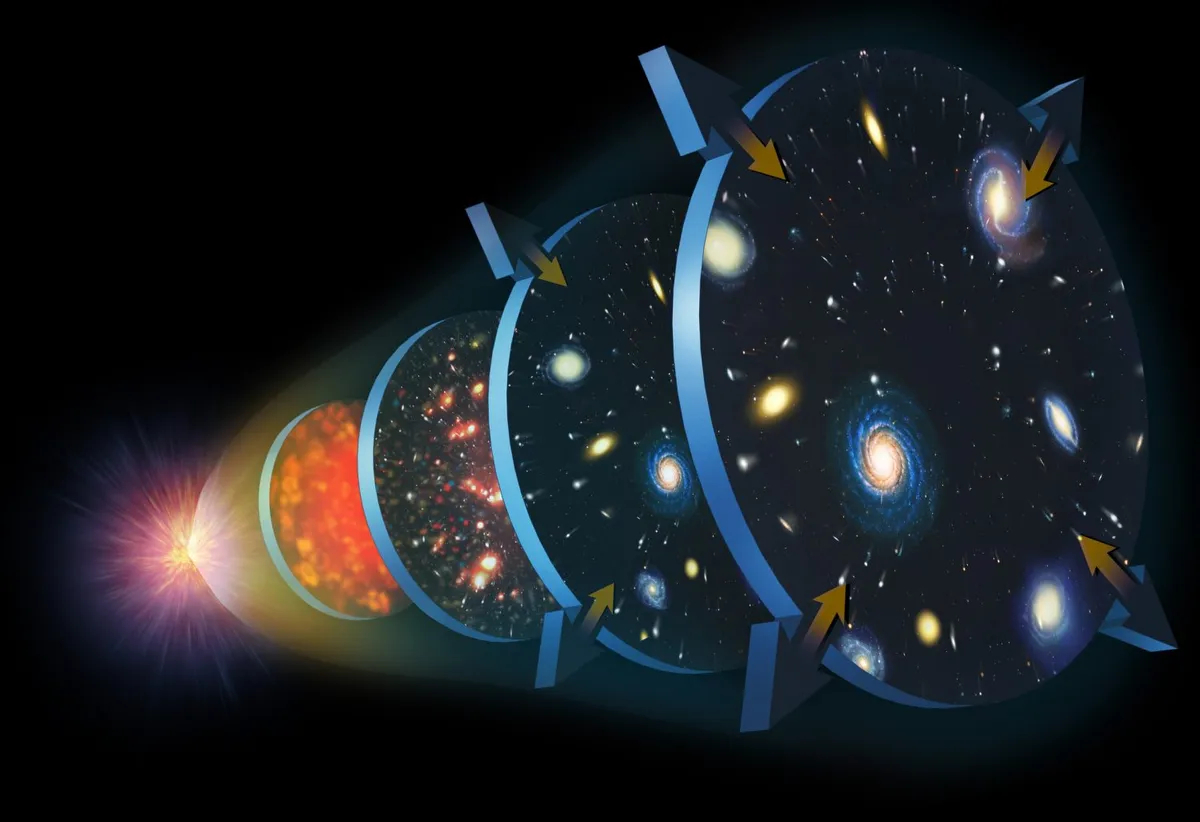
- 15 Apr 2024
Why is it in the News?
One of the biggest mysteries in cosmology is the ‘Hubble tension’, the puzzle that the expansion of the Universe we see today doesn’t match what we think it should be from looking at the early cosmos.
What is Hubble Tension?
- The Hubble tension refers to a puzzling disagreement between two methods of measuring the universe's expansion rate, represented by the Hubble constant (H0).
- The Hubble constant describes how fast galaxies move away from each other due to cosmic expansion.
- Researchers employ two primary approaches to estimate H0: the cosmic distance ladder and analysis of the cosmic microwave background (CMB).
Cosmic Microwave Background (CMB):
- CMB constitutes a ubiquitous sea of photons, remnants of the Big Bang's aftermath.
- Scientists scrutinize CMB for temperature variations and employ intricate trigonometric techniques to analyze its large-scale properties.
- This analysis culminates in an estimation of cosmic expansion at approximately 68 (km/s)/Mpc.
Cosmic Distance Ladder:
- This method facilitates the measurement of distances to celestial objects spanning various proximity ranges.
- Notably, Cepheid variable stars, which exhibit predictable luminosity fluctuations over time, serve as crucial distance indicators.
- By gauging the brightness of Cepheid variables, researchers can infer their distances, leading to an estimation of H0 around 73 (km/s)/Mpc.
Discrepancy and Hubble Tension:
- The utilization of these two distinct measurement methods yields slightly divergent values for H0, resulting in the emergence of the Hubble tension.
Significance of the Hubble Tension:
- The presence of the Hubble tension suggests potential implications, including unexplored physical phenomena or systematic errors in measurement techniques.
- Resolving this tension is imperative to enhance our comprehension of the universe's expansion dynamics and the fundamental laws governing it.
Operation Meghdoot
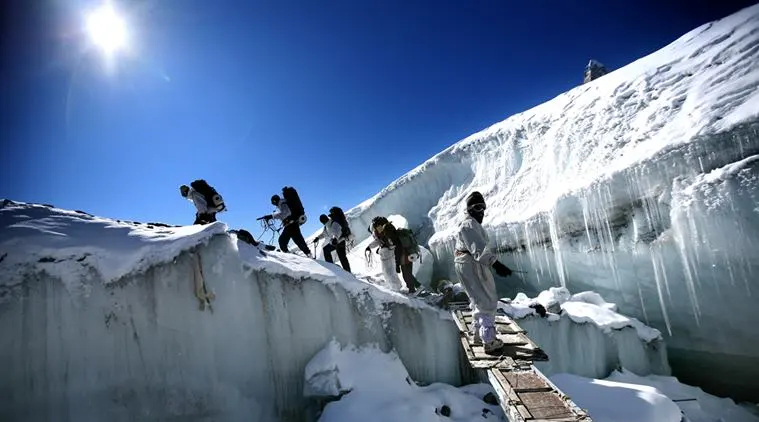
- 15 Apr 2024
Why is it in the News?
India commemorates 40 years since the launch of Operation Meghdoot, a critical mission to secure the strategic heights of the Siachen glacier, acknowledged as the highest battlefield in the world.
About Operation Meghdoot:
- Operation Meghdoot was the codename for the Indian Army operation to take full control of the (Siachen Glacier in Ladakh).
- It was launched in 1984 and it was unique as it involved the first assault on the world's highest battlefield.
- This operation was launched on April 13, 1984, by the Indian Army and Indian Air Force (IAF), marking a pivotal moment in securing the Siachen Glacier, a strategically crucial region dominating Northern Ladakh.
- The operation involved airlifting Indian Army soldiers, with IAF helicopters operating in the area since 1978, including the first landing of an IAF helicopter on the glacier in October 1978.
- The need for Operation Meghdoot arose due to Pakistan's cartographic aggression in Ladakh, allowing foreign mountaineering expeditions in Siachen.
- Intelligence inputs about impending Pakistani military action prompted India to secure strategic heights on Siachen, deploying troops via airlifts and air-dropping supplies to high-altitude airfields.
What was IAF's Role and Evolution in Operation Meghdoot?
- The IAF played a crucial role in supporting Operation Meghdoot, initially focusing on transport and helicopter aircraft for troop and material transport.
- Gradually, the IAF expanded its role, deploying fighter aircraft like the Hunter, MiG-23s, and MiG-29s, operating from high-altitude airfields at Leh and Thoise.
- This expanded role included fighter sweeps and simulated strikes over the glacier, boosting morale and deterring adversaries.
- Operating on the highest battlefield globally, IAF helicopters are the lifeline for Indian troops, providing crucial support in emergencies, logistics supply, and evacuating the sick and wounded from the glacier.
- As the Indian Army celebrates 40 years on the Siachen Glacier, it reflects not only on the progress made in technological advancements and logistical improvements but also on the sacrifices and dedication of its personnel.
- 'Operation Meghdoot' stands as a testament to India's commitment to safeguarding its borders and ensuring the well-being of its troops in one of the world's most challenging terrains.
About Siachen Glacier:
- The Siachen Glacier, situated in the Eastern Karakoram range of the Himalayas, is located just northeast of Point NJ9842, where the Line of Control (LOC) between India and Pakistan ends.
- Administered by India since Operation Meghdoot in 1984, the glacier spans from northwest to southeast, originating at the Indira Col West and descending from an altitude of 6,115 meters to 3,570 meters.
- As the second-longest glacier in the world's non-polar areas, the Siachen Glacier is surpassed only by Tajikistan's Fedchenko Glacier.
- It lies south of the significant drainage divide separating the Eurasian Plate from the Indian subcontinent in the glaciated Karakoram region, sometimes referred to as the "Third Pole."
- The Nubra River finds its source in the Siachen Glacier, highlighting the glacier's ecological importance.
GRB 221009A - Gamma-ray Bursts (GRBs)

- 13 Apr 2024
Why is it in the News?
Northwestern University recently confirmed that the brightest gamma-ray burst ever recorded, GRB 221009A, was caused by the collapse and explosion of a massive star.
About GRB 221009A:
- GRB 221009A, also known as Swift J1913.1+1946, is the brightest gamma-ray burst ever detected, estimated to be ten times brighter than the previous record holder.
- The burst itself lasted around seven minutes, but its effects were observable for over ten hours.
- GRB 221009A originated from a galaxy estimated to be 2.4 billion light-years away, yet it was powerful enough to influence Earth's atmosphere.
- This exceptionally bright burst emitted across a vast range of the electromagnetic spectrum, providing a unique opportunity for scientists to study this rare phenomenon in detail.
- The cause of the burst is attributed to the collapse of a massive star, but scientists are still investigating why it was so much brighter than other gamma-ray bursts.
What are Gamma-ray Bursts?
- Gamma-ray bursts (GRBs) are the most powerful explosions in the universe.
- These brief flashes of high-energy light result from some of the universe's most explosive events, including the birth of black holes and collisions between neutron stars.
- Lasting a few milliseconds to several minutes, GRBs can be hundreds of times brighter than an average supernova, making them as luminous as a million trillion suns.
- Thus, when a GRB erupts, it briefly becomes the brightest source of electromagnetic radiation in the observable universe.
- Gamma Ray Bursts are difficult to study because they are so short-lived.
- They were first detected by the Vela satellites, which were designed to detect nuclear tests during the Cold War.
- It was only years after their detection that they were declassified.
- The location of gamma-ray bursts within their host galaxy and their surrounding environment informs us as to the formation and evolution of the progenitor system, providing insight into stellar evolution and star formation across the age of the universe.
What causes a gamma-ray burst?
- The cause of a gamma-ray burst depends on how long it lasts.
- GRBs that last less than two seconds are caused by the merger of two neutron stars or the merger of a neutron star and a black hole.
- Longer GRBs, which can last hours, are triggered when a massive star collapses and births a black hole.
- In both cases, GRBs result from jets of particles accelerated to around 99.9% of the speed of light.
How powerful are gamma-ray bursts?
- In just a few seconds, a gamma-ray burst can emit as much energy as the sun will put out over its entire 9 billion-year lifetime
Do gamma-ray bursts happen in the Milky Way?
- GRBs seem to be most closely associated with galaxies that are in the midst of intense star formation, a period that our galaxy seems to have matured out of 2 billion to 3 billion years ago.
- However, the Milky Way is filled with the supernova remnants that mark the deaths of massive stars, indicating that our galaxy was once home to GRBs.
Defence Attaché (DA)

- 13 Apr 2024
Why is it in the News?
As India expands its presence in defense diplomacy and plans to deploy Defense Attachés to Indian missions in Africa, Armenia, and the Philippines, experts and experienced diplomats advise against simply "rationalizing" their numbers.
What’s a Defense Attaché?
- According to the Geneva Centre for the Democratic Control of Armed Forces (DCAF), a defence attaché is a member of the armed forces serving at an embassy as a “representative of his/her country’s defence establishment abroad and in this capacity enjoys the diplomatic status and immunity.
- The defence attaché’s work usually concerns bilateral military and defence relations.
- Some countries send attachés for security issues, such as migration or matters relating to police and justice.
- The defence attachés are also responsible for facilitating communication and cooperation between their home nation’s armed forces and the host country’s military.
- They act as military and/or security advisors to their country’s ambassador and embassy staff.
- They can also promote their home nation’s military weapons industry.
- Defence attachés collect and examine military intelligence, facilitate military cooperation pacts, and give an evaluation of security issues to their home country’s government.
- They also act as a link between diplomats and the military.
India to Send Defence Attachés to New Countries:
- India has started dispatching defence attachés to many new countries, while reportedly downsizing the military personnel at its missions in some other nations.
- 15-16 new attaches from the Indian Navy, the Indian Air Force (IAF), and the Indian Army are being posted to Poland, the Philippines, Armenia, and the African countries of Tanzania, Mozambique, Djibouti, Ethiopia, and Ivory Coast.
- In the next phase, 10 entirely new defence wings will be created in different countries, with a particular focus on nations to which arms can be exported.
Why the Other Countries Matter?
- India dispatching a defense attaché to Poland, which is a part of the European Union (EU) and has emerged as an important security partner in Europe in recent years, is also significant.
- The EU posted a military attaché to its mission in India for the first time last year. India’s move to do the same in Poland is “reflective of the desire to expand two-way defence ties.
- Armenia has become a major exporter of India’s arms.
- India has already inked deals with the Asian country for Pinaka rockets, Akash missiles, ammunition, and multi-barrel rocket launchers, with some of them coming amid Armenia’s clash with Azerbaijan over Nagorno-Karabakh.
- Armenia has shown interest in expanding its defence ties with India.
- China’s military assertiveness in the South China Sea has prompted India to grow military ties with ASEAN countries.
- India’s decision to send defence attachés for the first time to the Philippines comes in the wake of the sale of Indian arms to Manila.
- India signed a $375 million deal with the Philippines in 2022 to supply three batteries of the BrahMos missile and will soon start the delivery of the missiles to the Southeast Asian country.
Science Based Targets Initiative (SBTi)
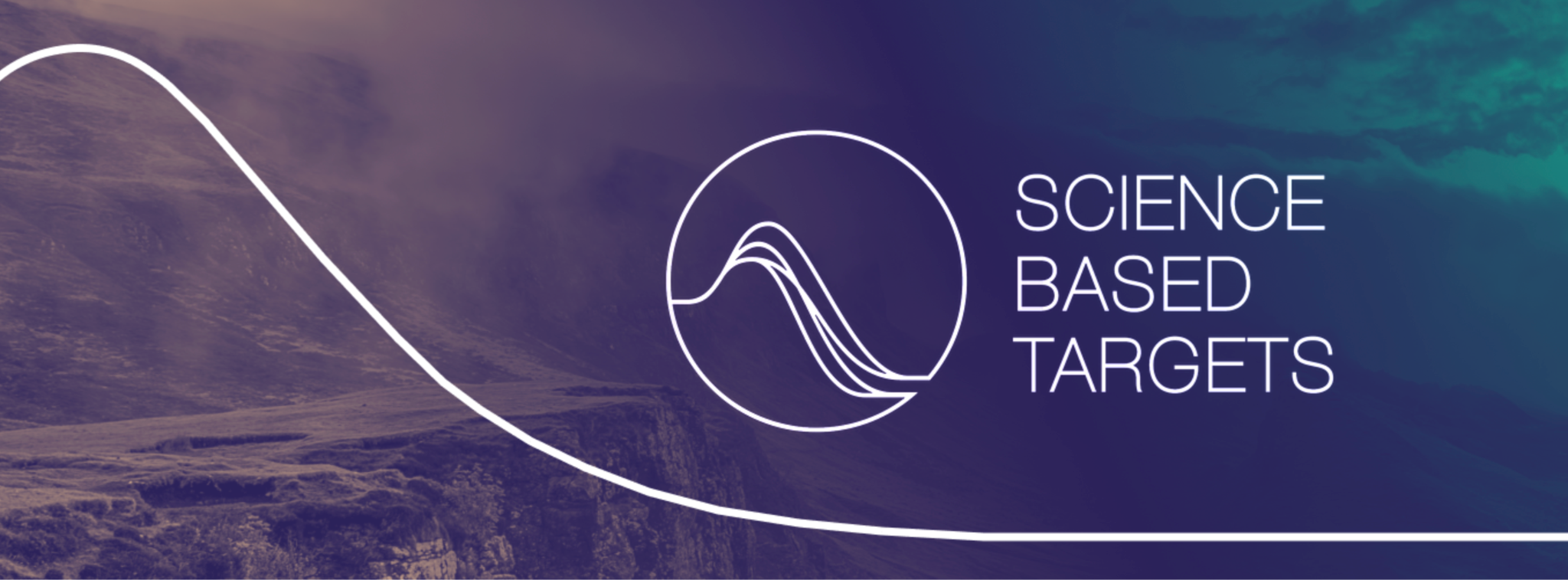
- 13 Apr 2024
Why is it in the News?
A contentious recent decision by the Science Based Targets Initiative (SBTi), permitting carbon offsetting for Scope 3 emissions of businesses with SBTi-based climate targets, has stirred controversy and skepticism.
About Science Based Targets Initiative (SBTi):
- The Science-based Targets Initiative (SBTi) is a global movement launched post the 2015 Paris Climate Agreement to mobilize companies in combating climate change.
- SBTi supports businesses in their decarbonization projects, ensuring compatibility with limiting global temperature rise to 1.5C° and achieving carbon neutrality by 2050.
- Backed by a scientific method, SBTi verifies company objectives are aligned with COP21 goals.
- SBTi was initiated by four international organizations:
- United Nations Global Compact (UNGC)
- World Wildlife Fund (WWF)
- Carbon Disclosure Project (CDP)
- World Resource Institute (WRI)
- The primary objective of SBTi is to guide businesses in setting greenhouse gas (GHG) emission reduction targets that align with the Paris Agreement, are scientifically valid, and contribute significantly to reducing global emissions.
To determine a 1.5C° trajectory compatibility, SBTi uses science-based targets that account for the following factors:
-
- A carbon budget focused on achieving the 1.5C° global warming limit.
- GHG emission scenarios from the IPCC or the IEA.
- Emission allocation method: emission intensity reduction, absolute emission reduction, or emission intensity convergence toward a sector-specific reference level
- Through this methodology, companies can establish clear and science-based GHG reduction targets, effectively contributing to global emission reduction efforts.
SBTi's Net Zero objective:
- In October 2021, SBTi introduced its "Net Zero" benchmark, challenging committed companies to achieve long-term reduction targets up to carbon neutrality.
The Net Zero goal builds upon the initial SBT approach and focuses on four essential components:
-
- Short-term targets: To align with the 1.5°C objective, companies must set targets for reducing their total emissions (Scopes 1, 2, and 3) within a maximum of 5 to 10 years.
- Long-term objectives: Alongside short-term targets, Net Zero requires companies to define long-term goals compatible with limiting global warming to 1.5°C and achieve them by 2050 (or 2040 for the energy sector).
- Carbon finance for short-term contributions: Companies are encouraged to invest in external carbon sequestration or avoidance projects by purchasing carbon credits, complementing their GHG reduction efforts. SBTi prioritizes sequestered emissions over avoided emissions, considering the latter's carbon credits less reliable.
- Neutralization: As the final stage in reaching carbon neutrality, companies must minimize residual emissions and then offset them through carbon sequestration actions.
- The SBTi movement has rapidly gained international recognition for its rigor, reliability, and the credibility of the people behind it.
- Several thousand companies of all sizes have rapidly adopted the scientific approach it promotes. To date, nearly 6,800 companies worldwide have signed up to the SBTi.
Gujarat Freedom of Religion Act
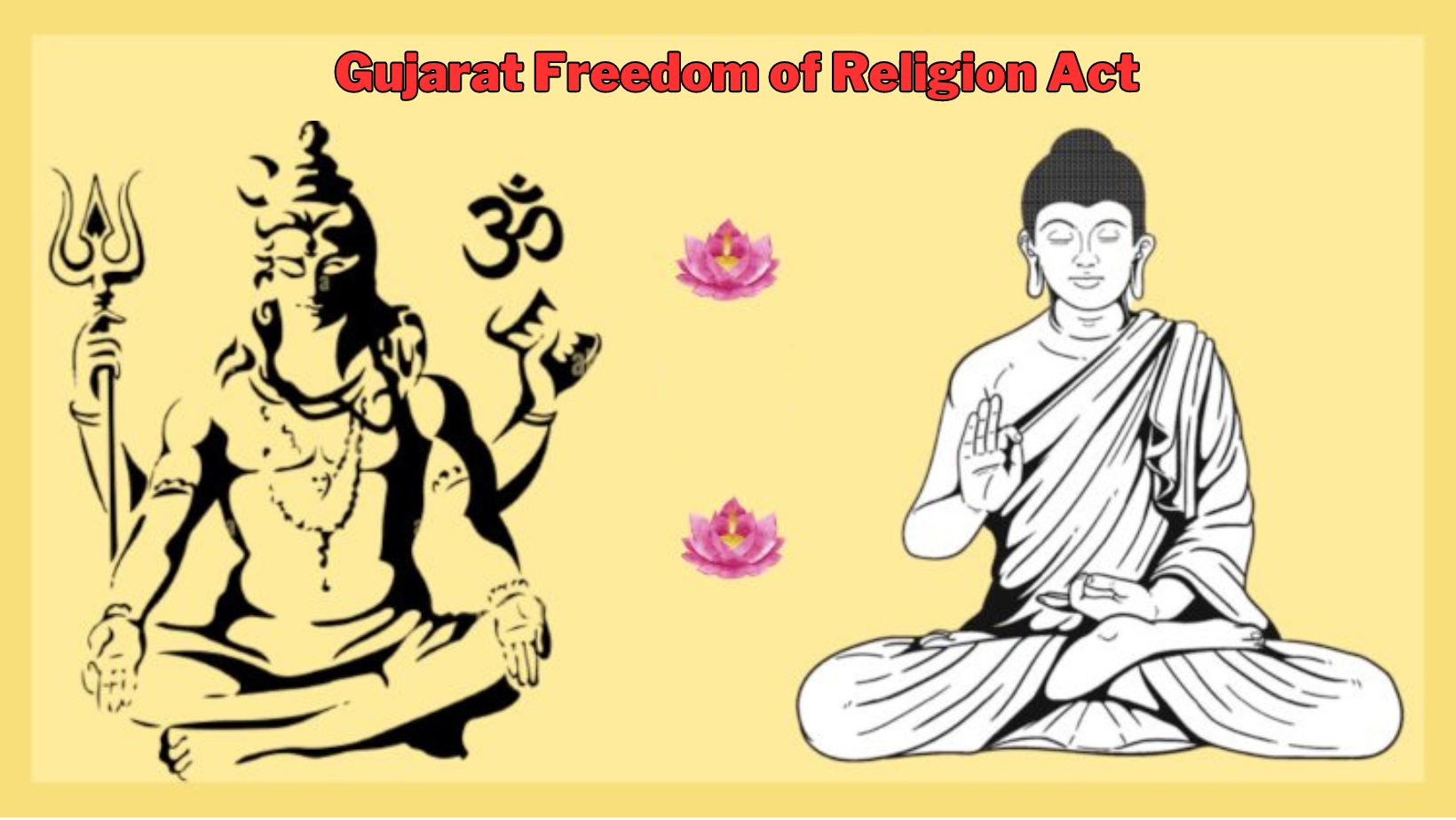
- 13 Apr 2024
Why is it in the News?
The Gujarat government recently clarified that Buddhism and Hinduism must be considered as two separate religions for religious conversions in the state.
Why did the Gujarat Government Issue the Circular?
- The Gujarat government issued the circular to address an issue regarding the application process for converting from Hinduism to Buddhism.
- The circular, issued by the Home Department highlights that the proper procedures outlined in the Gujarat Freedom of Religion Act (GFR Act) are not being followed.
- The circular points out that some offices are rejecting these conversion applications, arguing that under Article 25(2) of the Constitution, Sikhism, Jainism, and Buddhism are considered part of Hinduism.
- Therefore, applicants are told they don't need permission for religious conversion.
- This interpretation refers to Article 25, which guarantees religious freedom.
- Article 25(2)(b) allows laws for social welfare or reform for Hindus, which includes Sikhs, Jains, and Buddhists.
- Notably, the circular contrasts with a proposed 2006 amendment to the GFR Act, which suggested considering Jainism and Buddhism as part of Hinduism.
- However, the circular clarifies that, according to the GFR Act, Buddhism must be seen as a separate religion.
How does the GFR Act Govern Religious Conversions in Gujarat?
- The Gujarat Freedom of Religion Act (GFR Act) controls how people change their religion in Gujarat.
- According to the state government, this law aims to stop religious conversion by offering rewards, using force, lying, or tricking people.
- One part of the law, Section 3, makes it a crime to force or persuade someone to change their religion, whether by using force, offering rewards, trickery, or arranging marriages.
- Another part, Section 3A, added in 2021, lets anyone who feels harmed or their relatives report these crimes to the police.
- People who break Section 3 can be sent to jail for up to three years and fined up to Rs 50,000.
- If the person affected is a woman, a child, or from certain communities, the punishment is harsher – up to four years in jail and a fine of Rs 1 lakh.
- For a religious conversion to be legal, Section 5 says the person leading the ceremony must get permission from the District Magistrate beforehand.
- And the person who changes their religion must tell the District Magistrate afterward.
- Not doing this can result in a one-year jail term or a fine of up to Rs 1,000.
- In 2021, the GFR Act was changed to include more rules.
- It now makes it a crime to change religion through marriage (Section 4A) and says marriages are void if one person converts before or after getting married (Section 4B).
- It also punishes people involved in organizations that unlawfully convert others (Section 4C). The accused now have to prove that the conversion was legal (Section 6A).
Asian Development Bank (ADB)
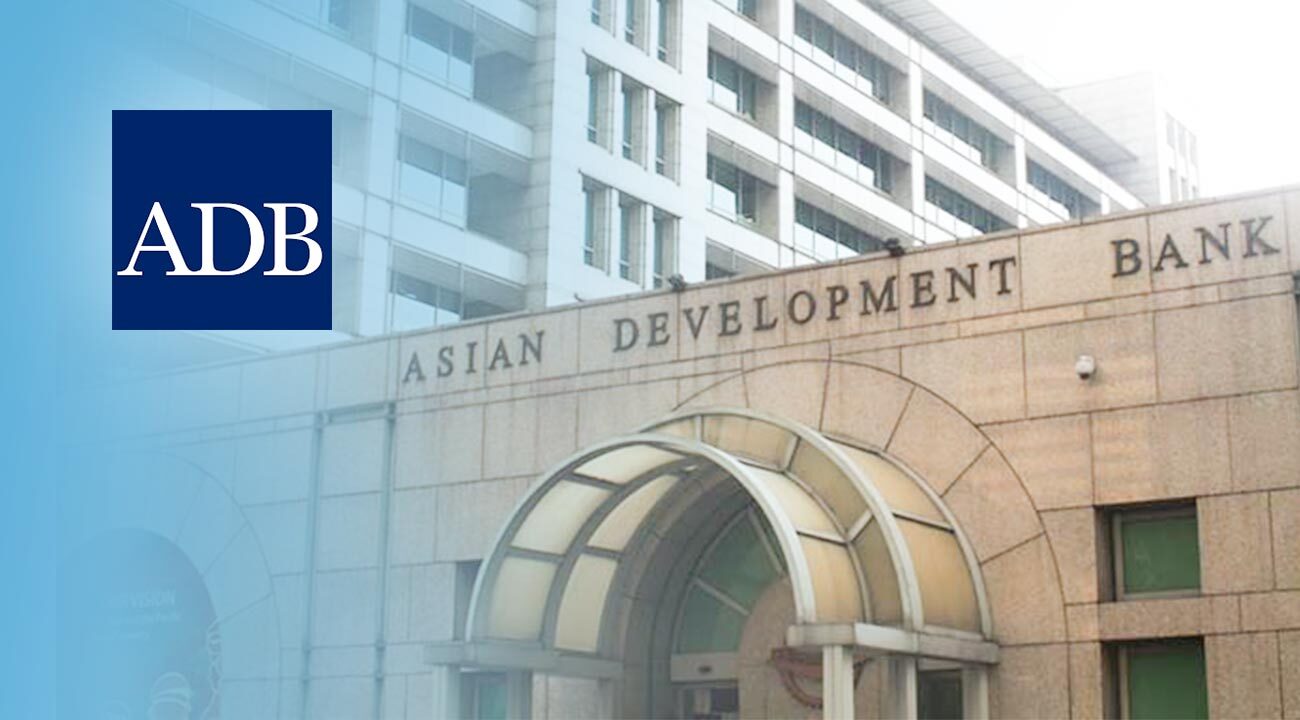
- 13 Apr 2024
Why is it in the News?
The Asian Development Bank (ADB) recently raised its forecast for India’s GDP growth in the current fiscal year ending on March 31, 2025, to 7%, from 6.7% earlier, citing robust public and private investment as well as expectations of a gradual improvement in consumer demand as the rural economy recovers.
What is the Asian Development Bank?
- The Asian Development Bank (ADB) is a global development finance agency whose aim is to help developing member countries in reducing poverty and improving people’s quality of life.
- It came into existence in 1966 and it is headquartered in Manila, Philippines.
- It aids in pushing social and economic development by providing loans, technical assistance, grants, and equity investments.
- ADB is owned and financed by its 68 members, 49 of whom are from the Asia-Pacific region.
- ADB’s key partners are governments, the commercial sector, non-government organizations, development agencies, community-based groups, and foundations.
- ADB will follow three complementing strategic agendas: inclusive growth, ecologically sustainable growth, and regional integration, as outlined in Strategy 2020, a long-term strategic framework approved in 2008.
- The major objective of the Asian Development Bank is to ensure market prosperity and enhance collaboration among Asia-Pacific countries.
- The ADB oversees significant projects within the region and sometimes raises funding through international bond markets.
- To promote development, the Asian Development Bank provides grants, loans, technical support, and equity investments to its developing member nations, the private sector, and public-private partnerships.
- They also use co-financing activities to supply support while tapping official, commercial, and export finance sources.
- Members and associate members of the international organization Economic Commission for Asia and the Far East are eligible to affix the ADB.
- Other regional and non-regional developed countries that are members of the United Nations or any of its specialized agencies are eligible.
Who Controls the Asian Development Bank?
- The ADB is run by a board of governors, which represents the member countries of the ADB.
- As of 2022, ADB's five largest shareholders are Japan and the United States (each with 15.6% of total shares), the People's Republic of China (6.4%), India (6.3%), and Australia (5.8%).
Funding Sources:
- The ADB sustains its operations through various channels, including member contributions, earnings from lending activities, and the repayment of loans.
Volcanic Vortex Rings
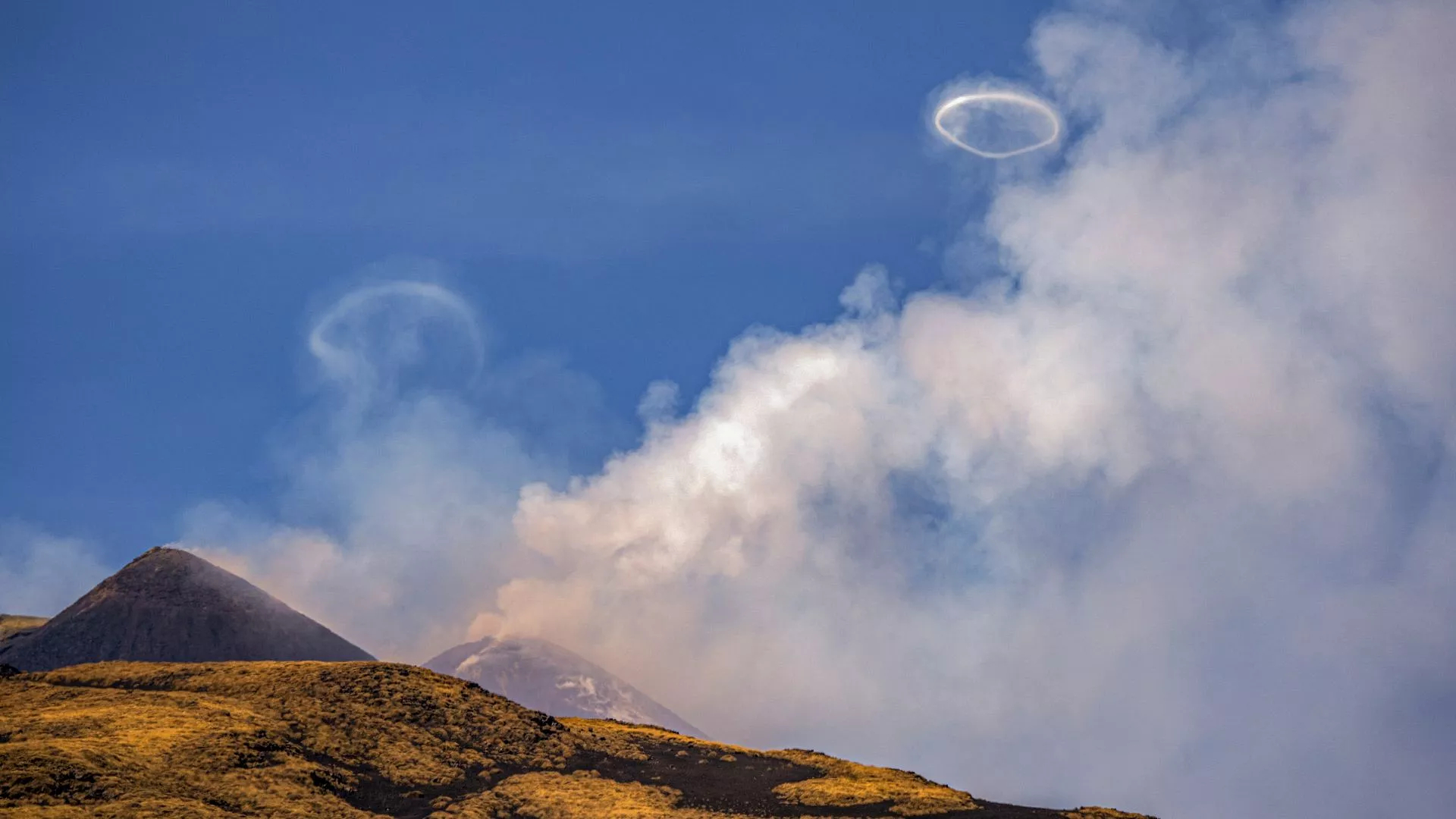
- 12 Apr 2024
Why is it in the News?
Since last week, Mount Etna has been sending up almost perfect rings of smoke into the air which are a rare phenomenon that scientists refer to as volcanic vortex rings.
What are Volcanic Vortex Rings?
- Vortex rings are generated when gas, predominantly water vapor, is released rapidly through a vent in the crater.
- The vent that has opened up in the crater is almost perfectly circular so the rings.
- The phenomenon was first observed at Mt. Etna and Mt. Vesuvius in Italy in 1724 and has been documented in an engraved plate from 1755.
- In more recent times, volcanic vortex rings have been observed at volcanoes such as Redoubt in Alaska, Tungurahua in Ecuador, Pacaya in Guatemala, Eyjafjallajökull and Hekla in Iceland, Stromboli in Italy, Sakurajima in Japan, Yasur in Vanuatu, Whakaari in New Zealand, and Momotombo in Nicaragua.
- According to the report, the rings can remain in the air for up to 10 minutes but tend to disintegrate quickly if conditions are windy and turbulent.
About Mount Etna:
- Mount Etna, sometimes referred to simply as Etna, is an active volcano on the east coast of Sicily, the largest island in the Mediterranean Sea, lying just off the toe of the Italian “boot”.
- Etna’s peak is the highest in Italy south of the Alps, and it is Europe’s largest and one of the most active volcanoes.
- Etna’s summit has five craters, which are responsible for most of the volcano’s eruptions; there are also “flank” eruptions that occur out of 300-odd vents of varying sizes along the slopes of the mountain.
- Etna is in almost constant activity and has seen, since the year 1600, at least 60 flank eruptions and many more summit eruptions.
- In recent years, summit eruptions have occurred in 2006, 2007-08, on two occasions in 2012, 2018, and 2021; flank eruptions have taken place in 2001, 2002-03, 2004-05, and 2008-09.
- Etna has been a World Heritage Site since 2013, and according to UNESCO, the volcano’s eruptive history can be traced back 500,000 years.
- At least 2,700 years of this activity have been documented.
Apple Warns Users of "Mercenary Spyware"

- 12 Apr 2024
Why is it in the News?
Apple has cautioned its users in India and 91 other countries that their iPhone may have come under attack from “mercenary spyware”, including Pegasus, a malware developed by the Israeli company NSO Group.
What are Mercenary Spyware Attacks?
- Mercenary spyware attacks represent an elevated level of cyber threat, characterized by their intricate nature and highly targeted approach.
- These attacks, surpassing typical cybercriminal activity and consumer malware, are meticulously crafted to infiltrate specific individuals with significant resources.
- Due to their sophisticated design and substantial investment, mercenary spyware attacks pose a formidable challenge in terms of detection and prevention.
- Despite their potency, they have primarily targeted select users, leaving the majority relatively unaffected.
- This breed of cyber threat stands as one of the most advanced and elusive globally, prompting tech giant Apple to refrain from attributing them to specific perpetrators or regions.
- The primary objective of mercenary spyware is to clandestinely infiltrate smartphones and other devices, operating without the user's knowledge or consent.
- These surveillance tools are capable of monitoring movements, intercepting communications, and pilfering sensitive data.
- In troubling instances, reports indicate that governments, intelligence agencies, and law enforcement bodies have procured mercenary spyware for surveillance purposes, often targeting political dissidents and activists.
- Key players in the production of mercenary spyware include the NSO Group, FinFisher, and Hacking Team.
- The NSO Group's flagship spyware, Pegasus, facilitates remote infiltration of devices, granting access to calls, emails, messages, and various files.
- Similarly, FinFisher's FinSpy can intercept keystrokes, access data, and activate microphones and cameras without authorization.
- The Hacking Team's Galileo, also known as the Remote Control System (RCS), possesses similar capabilities, including keystroke capture, video call recording, and unauthorized access to device components like the camera and microphone.
About Pegasus Spyware:
- Pegasus Spyware, crafted by Israel's NSO Group, represents a potent cyber threat.
- This sophisticated malware is engineered to exploit zero-click vulnerabilities, granting it access to smartphones without any interaction from the user.
- Once infiltrated, Pegasus gains full control over the targeted device, enabling it to extract a wealth of data, including emails, texts, and phone calls.
- Additionally, it possesses the capability to remotely activate the smartphone's camera and microphone, further compromising the user's privacy.
What are Spyware and Malware?
Spyware:
- Spyware is a type of software that secretly collects information about a user's activities on their computer or device without their knowledge or consent.
- It may track keystrokes, capture browsing habits, record personal information, or monitor online activities.
- Spyware often operates stealthily in the background, making it difficult for users to detect.
Malware:
- Malware, short for malicious software, is a broad term that encompasses various types of harmful software designed to disrupt, damage, or gain unauthorized access to computer systems or networks.
- Malware includes viruses, worms, trojans, ransomware, and other malicious programs.
- Unlike spyware, which focuses on gathering information covertly, malware may aim to corrupt files, steal data, spread across networks, or carry out other harmful actions.
- Malware can enter a system through email attachments, infected websites, removable media, or software downloads from untrusted sources.
World Cybercrime Index

- 12 Apr 2024
Why is it in the News?
A new World Cybercrime Index developed by researchers shows that a majority of cybercriminals come from just a few countries.
About World Cybercrime Index:
- The World Cybercrime Index is a collaborative effort between the University of Oxford and UNSW Canberra that identifies global cybercrime hotspots by ranking countries based on their contribution to cybercrime.
- Data is collected from a survey of 92 cybercrime experts involved in intelligence gathering and investigations.
- The index ranks around 100 countries and identifies key hotspots for various cybercrime categories, such as ransomware, credit card theft, and scams.
Key Findings:
- Russia tops the list, followed by Ukraine, China, the USA, Nigeria, and Romania.
- India ranks 10th in the index, with a balanced distribution of cybercrime types but a notable specialization in scams.
- Certain countries were associated with specific types of cybercrime, like data and identity theft in the United States and technical products or services-related crimes in China.
- These insights highlight the need for international cooperation in addressing cybercrime and its various manifestations across different countries.
According to the Oxford University, the five major categories of cybercrime assessed by the study were:
-
- Technical products/services (e.g. malware coding, botnet access, access to compromised systems, tool production).
- Attacks and extortion (e.g. denial-of-service attacks, ransomware).
- Data/identity theft (e.g. hacking, phishing, account compromises, credit card comprises).
- Scams (e.g. advance fee fraud, business email compromise, online auction fraud).
- Cashing out/money laundering (e.g. credit card fraud, money mules, illicit virtual currency platforms).
Mange Disease

- 12 Apr 2024
Why is it in the News?
The forest department is monitoring an outbreak of mange among a pack of Asiatic wild dogs in the Mudumalai Tiger Reserve (MTR) in the Nilgiris, which they strongly suspect has spread to the animals through the local feral dog population.
What is Mange Disease?
- Mange is a distressing skin condition that affects dogs and is caused by microscopic parasites and different types of mites that infest the dog's skin and coat.
- The two most common forms of mange in dogs are Sarcoptic mange (caused by Sarcoptic scabies mites) and Demodectic mange (caused by Demodex Canis mites).
- Sarcoptic Mange- Scabies: Sarcoptic mange is highly contagious and can spread from dog to dog through direct contact. These microscopic mites burrow into the dog's skin, leading to intense itching and discomfort.
- Demodectic Mange: Demodectic mange, on the other hand, is not usually contagious and often results from an overgrowth of naturally occurring Demodex mites. A weakened immune system or genetic factors can contribute to the development of this form of mange.
- Common Symptoms of Mange in Dogs include:
- Intense Itching
- Skin Infections
- Crusty or Scaly Skin
- Ear Problems
- Mange in dogs is a treatable condition when detected early and managed appropriately.
About Mudumalai Tiger Reserve (MTR):
- The Mudumalai Tiger Reserve, nestled in Tamil Nadu's Nilgiris District at the tri-junction of Karnataka, Kerala, and Tamil Nadu, holds ancient significance, dating back 65 million years to the formation of the Western Ghats.
- It shares borders with the Wayanad Wildlife Sanctuary (Kerala) to the West and the Bandipur Tiger Reserve (Karnataka) to the.
- The Theppakadu Elephant Camp within the reserve is a popular tourist spot, boasting a rich variety of flora and fauna, including Elephants, Gaurs, Tigers, Panthers, and various deer species.
- This historic elephant camp, established over a century ago, sits on the banks of the Moyar River, serving vital roles in human-wildlife conflict resolution, monsoon patrolling, eco-tourism, elephant conservation, and education.
Sungrazing Comet

- 12 Apr 2024
Why is it in the News?
A tiny "sungrazer" comet was discovered, photographed, and destroyed during the recent total solar eclipse — all within 24 hours.
What is a Sungrazing Comet?
- Sungrazing comets are a special class of comets that come very close to the sun at their nearest approach, a point called perihelion.
- To be considered a sungrazer, a comet needs to get within about 850,000 miles from the sun at perihelion.
- Many come even closer, even to within a few thousand miles.
- Being so close to the sun is very hard on comets for many reasons.
- They are subjected to a lot of solar radiation which boils off their water or other volatiles.
- The physical push of the radiation and the solar wind also help form the tails. As they get closer to the sun, the comets experience extremely strong tidal forces or gravitational stress.
- In this hostile environment, many sungrazers do not survive their trip around the sun.
- Although they don't crash into the solar surface, the sun can destroy them anyway.
- Many sungrazing comets follow a similar orbit, called the Kreutz Path, and collectively belong to a population called the Kreutz Group.
- Close to 85% of the sungrazers seen by the SOHO satellite are on this orbital highway.
- Scientists think one extremely large sungrazing comet broke up hundreds, or even thousands, of years ago, and the current comets on the Kreutz Path are the leftover fragments of it.
- Comet Lovejoy, which reached perihelion on December 15, 2011, is the best-known recent Kreutz-group sungrazer.
- And so far, it is the only one that NASA's solar-observing fleet has seen survive its trip around the sun.
What is a Comet?
- A comet is a small celestial body made primarily of ice, dust, and rocky material that orbits the sun in an elongated path.
- When a comet approaches the sun, the heat causes the ice to vaporize, releasing dust and gas into a glowing coma, or halo, around the comet's nucleus.
- This glowing coma often forms a tail that stretches away from the sun due to the solar wind and radiation pressure.
- Comets are often referred to as "dirty snowballs" or "icy dirtballs" because of their composition.
- They are believed to be remnants from the early formation of the solar system and carry important information about its history.
- Comets can have highly elliptical orbits, sometimes taking thousands or even millions of years to complete a single orbit around the sun.
Invasive Alien Species
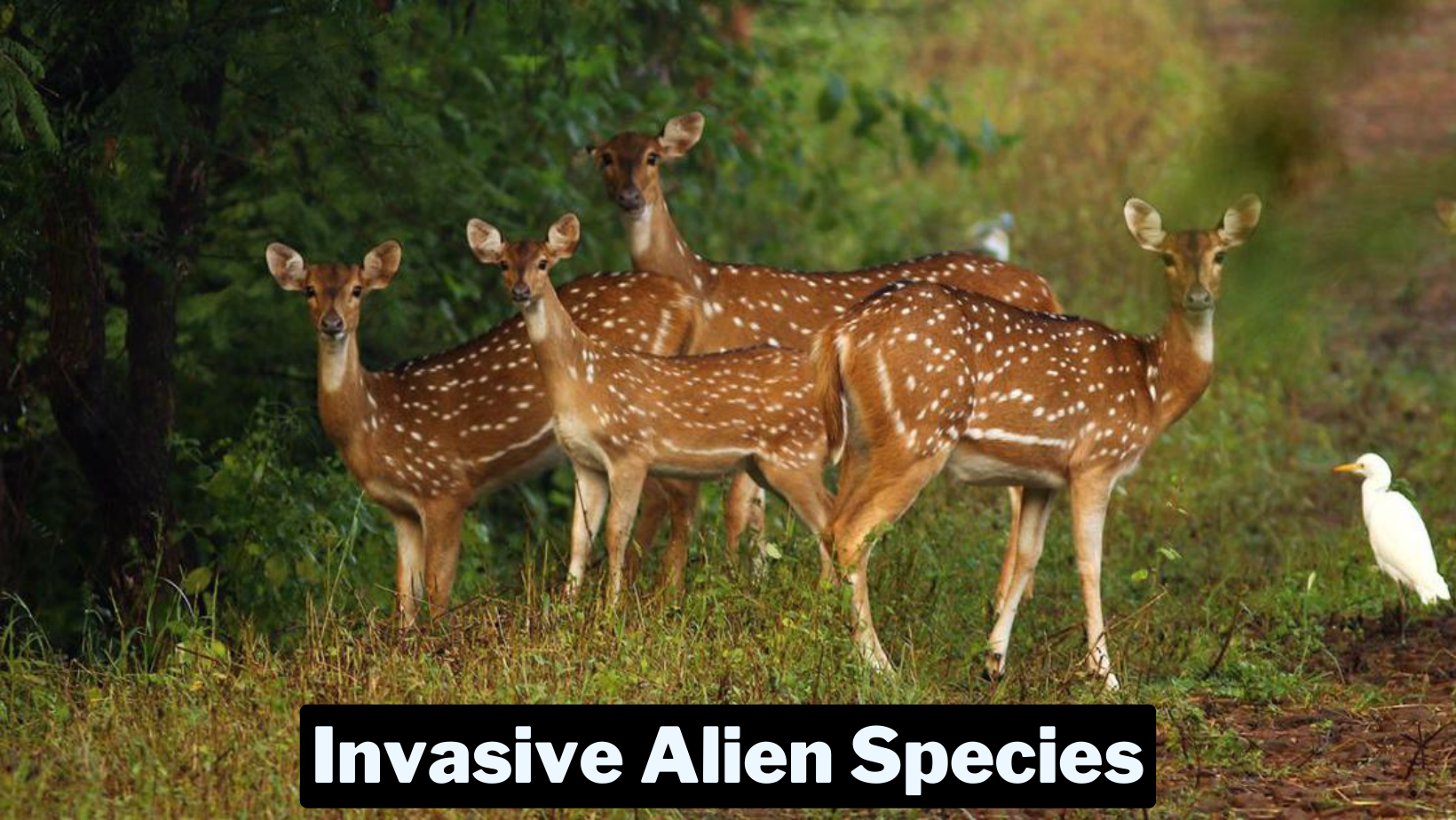
- 11 Apr 2024
Why is it in the News?
In a bid to manage the teeming population of chital (spotted deer) in Ross Island (officially known as the Netaji Subhash Chandra Bose Island), the Andaman and Nicobar Islands administration recently sought help from the Wildlife Institute of India.
What are Invasive Alien Species (IAS)?
- According to the Convention on Biological Diversity (CBD), Invasive alien species are plants, animals, pathogens, and other organisms that are non-native to an ecosystem, and which may cause economic or environmental harm or adversely affect human health.
- In particular, they impact adversely upon biodiversity, including the decline or elimination of native species - through competition, predation, or transmission of pathogens - and the disruption of local ecosystems and ecosystem functions.
- Invasive alien species, introduced and/or spread outside their natural habitats, have affected native biodiversity in almost every ecosystem type on Earth and are one of the greatest threats to biodiversity.
- Since the 17th century, invasive alien species have contributed to nearly 40% of all animal extinctions for which the cause is known (CBD, 2006).
- The problem continues to grow at great socio-economic, health, and ecological costs around the world.
- Invasive alien species exacerbate poverty and threaten development through their impact on agriculture, forestry, fisheries, and natural systems, which are an important basis of people’s livelihoods in developing countries.
- This damage is aggravated by climate change, pollution, habitat loss, and human-induced disturbance.
What are Some Examples of Invasive Wildlife in India?
- The list of invasive wildlife in India is dominated by certain species of fish such as the African catfish, Nile tilapia, red-bellied piranha, and alligator gar, and turtle species such as the red-eared slider.
- The red-eared slider, for instance, is a favorite among India’s exotic pet owners, and many have been abandoned in local water bodies.
- This turtle, native to North America, notoriously edges out local freshwater species, owing to its fast rates of reproduction, and the following competition for food.
- With regards to species of fish, many were introduced in India to feed the demand for those maintaining aquariums.
- For instance, the African catfish was brought over from Bangladesh specifically for aquaculture purposes. “
- The occurrence of C gariepinus (the species’ scientific name) has been reported from several inland systems of India including the mighty rivers like Ganga, Yamuna, Sutlej, Godavari, Periyar River, and the lakes like Vembanad Lake.
How do IAS Impact Native Flora and Fauna?
- The invasive species act as disruptors in the food chain and disturb the balance of the ecosystem.
- In habitats where there is no competition, invasive species can dominate the entire ecosystem
- For instance, “in Keoladeo Park, Bharatpur in Rajasthan, which is a UNESCO World Heritage site, the African catfish have been known to prey on waterfowls and migratory birds as well.
- Studies have shown that the proliferation of chital in the Andamans has affected the regeneration of native vegetation, as the deer are known to consume seeds and seedlings.
National Investment and Infrastructure Fund (NIIF)
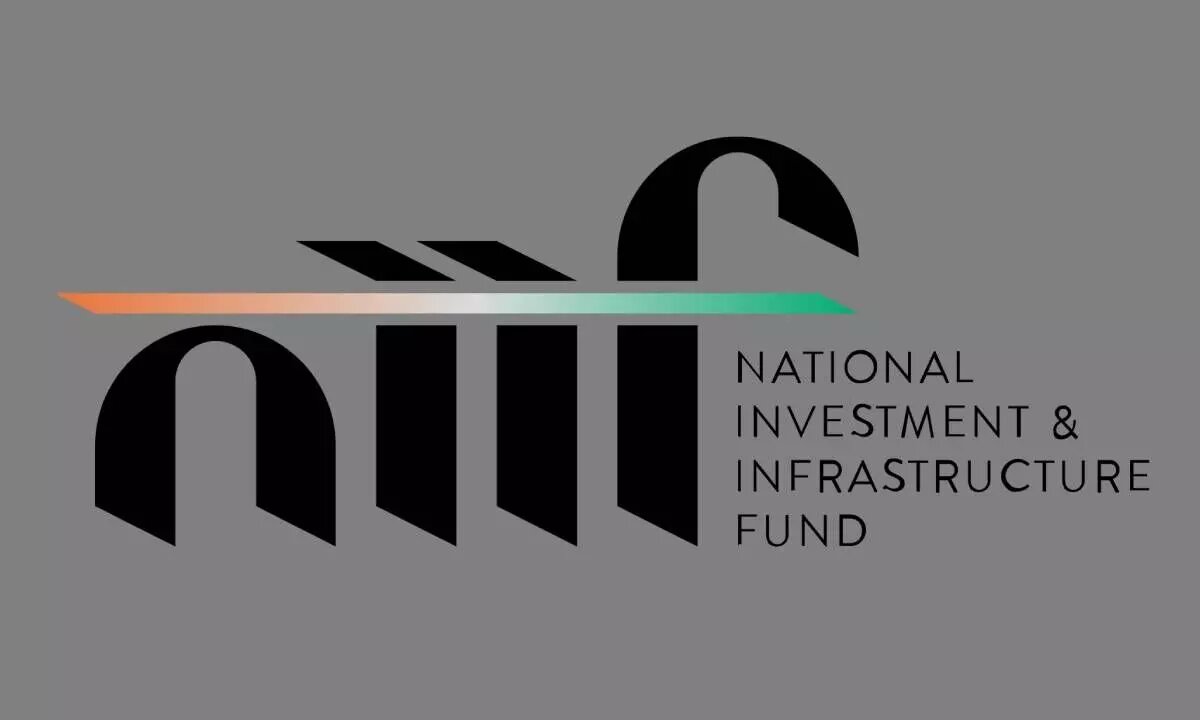
- 11 Apr 2024
Why is it in the News?
iBUS, a digital infrastructure solutions company, said recently it has raised $200 million from the government-backed National Investment and Infrastructure Fund Limited (NIIF).
What is the National Investment and Infrastructure Fund (NIIF)?
- The National Investment and Infrastructure Fund (NIIF) stands as a pioneering fund manager dedicated to investing in India's infrastructure and related sectors.
- Established in 2015, NIIF marks India's inaugural sovereign wealth fund (SWF), embodying a collaborative investment platform for both international and domestic investors.
Key Aspects of NIIF:
- Investment Mandate: NIIF operates with a mandate to deploy equity capital into domestic infrastructure projects, spanning greenfield, brownfield, and stalled ventures.
- Its investment horizon extends across diverse asset classes, including infrastructure, private equity, and other sectors, all aimed at delivering attractive risk-adjusted returns.
- Ownership and Independence: With 49% ownership by the Indian government, NIIF boasts over $4.9 billion in assets under management, solidifying its status as the nation's largest infrastructure fund.
- Despite its close ties with the government, NIIF maintains autonomy in its investment decisions, ensuring a professional and impartial approach to its operations.
- Professional Management: The fund is predominantly owned by institutional investors and managed by a proficient team with expertise in both investments and infrastructure.
- This professional oversight ensures the strategic deployment of capital and efficient management of investments.
- Regulatory Compliance: NIIF operates within the regulatory framework as an Alternative Investment Fund (AIF) registered with the Securities Exchange Board of India (SEBI).
- It actively raises capital from a spectrum of domestic and international institutional investors, further bolstering its financial resources.
NIIF manages capital through four distinct funds:
- NIIF Master Fund: Focused on infrastructural projects such as roads, ports, airports, and power, it stands as India's largest infrastructure fund.
- NIIF Private Markets Fund: Invests in infrastructure and associated sectors through third-party managed funds.
- NIIF Strategic Opportunities Fund: Devoted to developing large-scale businesses and greenfield projects deemed strategically significant for the nation.
- India-Japan Fund: NIIF's bilateral initiative aimed at environmental preservation in India, with contributions from both the Indian government and the Japan Bank for International Cooperation.
- NIIF catalyzes fostering sustainable infrastructure development in India while facilitating fruitful collaborations between Indian and international stakeholders, exemplifying a robust model for investment-driven growth.
QS World University Rankings
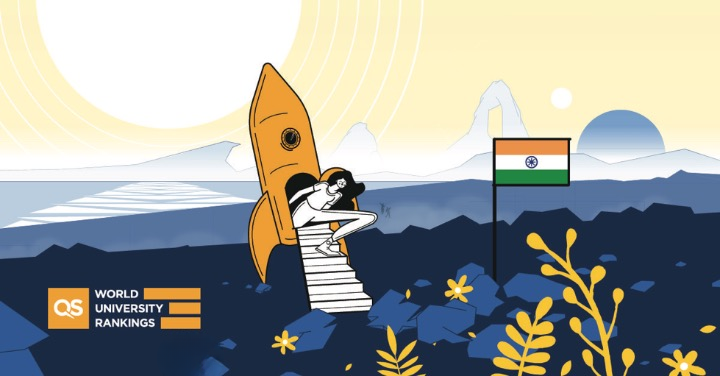
- 11 Apr 2024
Why is it in the News?
Sixty-nine Indian universities made it to the rankings with 424 entries in the 2024 QS World University Rankings by Subject. This marks a 19.4 percent rise from the previous year’s 355 entries.
About QS World University Rankings:
- The QS World University Rankings, curated annually by Quacquarelli Symonds, are a comprehensive assessment of the world's top 1,000 universities.
- In the latest 2024 edition, universities were meticulously evaluated across 55 specific subjects and five broader subject areas, offering a nuanced perspective on academic excellence.
Key Highlights from the 2024 Rankings:
- Massachusetts Institute of Technology (MIT) maintains its prestigious position as the top-ranked university globally for the 12th consecutive year, a testament to its enduring academic prowess.
- The Indian Institute of Technology Bombay (IITB) shines as the leading Indian institution, securing the 149th spot on the global stage.
- Noteworthy Progress: India demonstrates remarkable advancement with a total of 69 universities making their mark in the QS rankings, showcasing a notable 19.4% increase from the previous year.
- India stands as the second most represented country in Asia, highlighting its growing significance in the global academic landscape.
- Jawaharlal Nehru University (JNU) emerges as a standout, clinching the 20th position globally in development studies, reaffirming its commitment to excellence in specialized fields.
- India's Rise in Research: The nation exhibits a commendable 20% improvement in the Citations per Paper indicator, underscoring its burgeoning research capabilities.
- With a staggering 1.3 million academic papers produced, India emerges as the world's fourth-largest contributor to research, trailing only behind academic powerhouses like China, the United States, and the United Kingdom.
- Challenges Ahead: Despite significant strides, India grapples with the challenge of securing citations in premier global journals, with only 15% of its research receiving recognition in these esteemed publications between 2017 and 2021.
- Overall, India's journey in the QS World University Rankings reflects a narrative of progress, innovation, and resilience, while also highlighting areas for continued growth and enhancement in the global academic arena.
African Baobab Tree

- 11 Apr 2024
Why is it in the News?
In a groundbreaking conservation endeavor, the Global Society for the Preservation of Baobabs and Mangroves (GSPBM) has initiated a mission to rejuvenate the iconic Baobab trees.
About the African Baobab Tree:
- African baobab trees, scientifically known as Adansonia Digitata, are some of the oldest living organisms in the world.
- Baobab trees originated millions of years ago in West Africa and spread over time to other parts of the world, creating new species.
- There are 9 baobab species, of which 6 have originated in Madagascar, 2 in Australia, and 1 in Africa.
- These trees range in height from 5 to 20 meters and are typically found in deciduous forests composed primarily of broad-leaved trees that shed their leaves during one season.
- It is one of nine species of baobab, is native to mainland Africa, and also thrives in the African savanna ecosystem.
- The savanna features warm temperatures year-round and experiences its highest seasonal rainfall in the summer.
- It is characterized by grasses and dispersed trees, allowing ample sunlight to reach the ground.
- Age Record: Carbon-14 dating has revealed that an African baobab specimen in Namibia is approximately 1,275 years old, making it the oldest known angiosperm tree.
- Tree of Life: African baobabs, being succulents, absorb and store water in their expansive trunks during the rainy season.
- This unique adaptation enables them to produce nutrient-dense fruit during the dry season, even in arid environments.
- Utilization: Baobab trees, with lifespans exceeding a thousand years, offer a multitude of benefits including food, fodder for livestock, medicinal compounds, and raw materials for various purposes.
- Threats: Since 2005, nine of the thirteen oldest African baobab specimens and five of the six largest trees have either perished or experienced significant decline, possibly due to the impacts of climate change.
What are Angiosperms?
- Angiosperms, a taxonomic class of plants, are characterized by seeds enclosed within an ovule, such as those found in apples.
- This group is commonly known as hardwoods.
- Angiosperms typically comprise trees with broad leaves that undergo color changes and shed annually during autumn.
- Examples of deciduous angiosperms include oaks, maples, and dogwoods. However, certain angiosperms, such as rhododendrons, live oaks, and sweet bay magnolias, retain their leaves.
Gymnosperms:
- Gymnosperms, another taxonomic class, encompass plants with seeds not enclosed in an ovule, as seen in pine cones.
- The term "gymnosperm" translates to "naked seed," and this group is often referred to as softwoods.
- Gymnosperms commonly feature needle-like leaves that remain green throughout the year. Examples include pines, cedars, spruces, and firs.
- While many gymnosperms maintain their foliage year-round, some, like ginkgos, dawn redwoods, and bald cypresses, do shed their leaves.
Sulthan Bathery
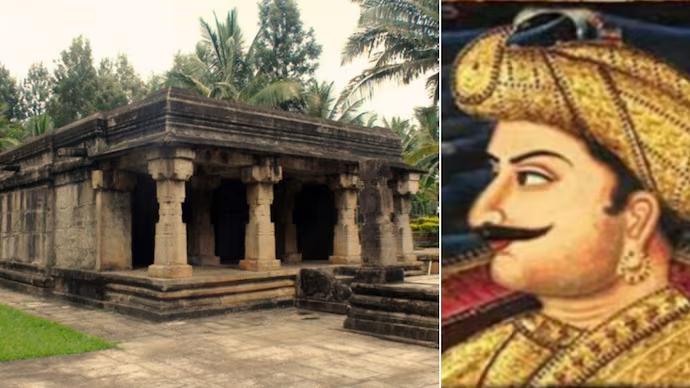
- 11 Apr 2024
Why is it in the News?
BJP suggests renaming Sulthan Bathery to Ganapathivattam due to historical identity alteration by Tipu Sultan.
Where Does the Name Ganapathyvattam Come From?
- Sulthan Bathery, one of the three municipal towns in Wayanad has a stone temple that was once known as Ganapathyvattam.
- The temple, built in the prevalent architectural style of the Vijayanagar dynasty, was constructed by Jains who migrated to Wayanad from areas in present-day Tamil Nadu and Karnataka in the 13th century.
- The temple was partly destroyed during the invasions of Tipu Sultan, the ruler of Mysuru in the second half of the 18th century.
- Between 1750 and 1790, today’s northern Kerala was invaded several times by the rulers of Mysuru, Hyder Ali and his son Tipu.
- It remained abandoned for nearly 150 years.
- Later, it was taken over by the Archaeological Survey of India, which declared it as a monument of national importance.
- The town of Ganapathyvattam, on the route between Mysore and the ports of the Arabian Sea, also gained prominence as a trading center and a stopover.
The History of Sultan Bathery:
- The armies of Tipu destroyed temples and churches and forced many in the path of the invasion to flee to escape forced religious conversion.
- Tipu Sultan used the Maha Ganapathy temple in Sulthan Bathery as a battery or store for weapons for his army in the Malabar region (today’s North Kerala, including Wayanad).
- This led to the British recording Ganapathyvattam as “[Tipu] Sultan’s Battery”, and the name survived as Sulthan Bathery.
Higgs Boson

- 10 Apr 2024
Why is it in the News?
Peter Higgs, the eminent theoretical physicist who first proposed the idea of what we now know as the “Higgs Boson,” died at the age of 94 on April 8.
What is the Higgs Boson?
- Particles make up everything in the universe but they did not have any mass when the universe began.
- They all sped around at the speed of light, according to the European Council for Nuclear Research (CERN).
- CERN, the European Council for Nuclear Research, is where the Large Hadron Collider (LHC) is located, and it's where the discovery of the Higgs Boson was made in 2012 through experiments conducted at the LHC.
- Everything we see like planets, stars, and life, emerged after particles gained their mass from a fundamental field associated with the particle known as the Higgs boson.
- The particle has a mass of 125 billion electron volts making it 130 times bigger than a proton?, according to CERN.
- Interestingly, the subatomic particles known as bosons are named after Indian Physicist Satyendra Nath Bose.
How does the Higgs Boson Work?
- The Higgs boson is a fundamental component of a theory formulated by Higgs and colleagues in the 1960s to elucidate how particles acquire mass.
- According to this theory, a pervasive Higgs energy field permeates the universe.
- As particles traverse this field, they interact with and draw in Higgs bosons, which congregate around the particles in varying quantities.
- Likewise, envision the universe akin to a party: less prominent guests can swiftly traverse the room without notice, while more popular guests attract clusters of people (the Higgs bosons), thus decelerating their movement through the room.
- Similarly, particles navigating the Higgs field experience a comparable phenomenon.
- Certain particles attract larger assemblies of Higgs bosons, and the more Higgs bosons a particle draws in, the greater its mass becomes.
Why is the Higgs Boson Called the “God Particle?”
- The Higgs boson is popularly known as the "God Particle".
- The name originated from Nobel Prize-winning physicist Leon Lederman's book on the particle which he titled the "Goddamn Particle", owing to frustration over how difficult it was to detect.
- However, his publishers changed the name to "The God Particle", which often draws ire from religious communities.
Who was Peter Higgs?
- Born in UK's Newcastle upon Tyne in 1929, Mr Higgs studied at King's College in London and has taught at the University of Edinburgh since the 1950s.
- Described as a modest man who published only a few scientific papers, he disliked his sudden fame calling it "a bit of a nuisance", even cringing when the term "Higgs boson" was used.
- Even as a lifelong atheist, he disliked the name "God particle".
- In 2013, Higgs and Francois Englert won the Physics Nobel Prize for their work on the particle which was thought to be a key to explaining the universe.
CDP-SURAKSHA
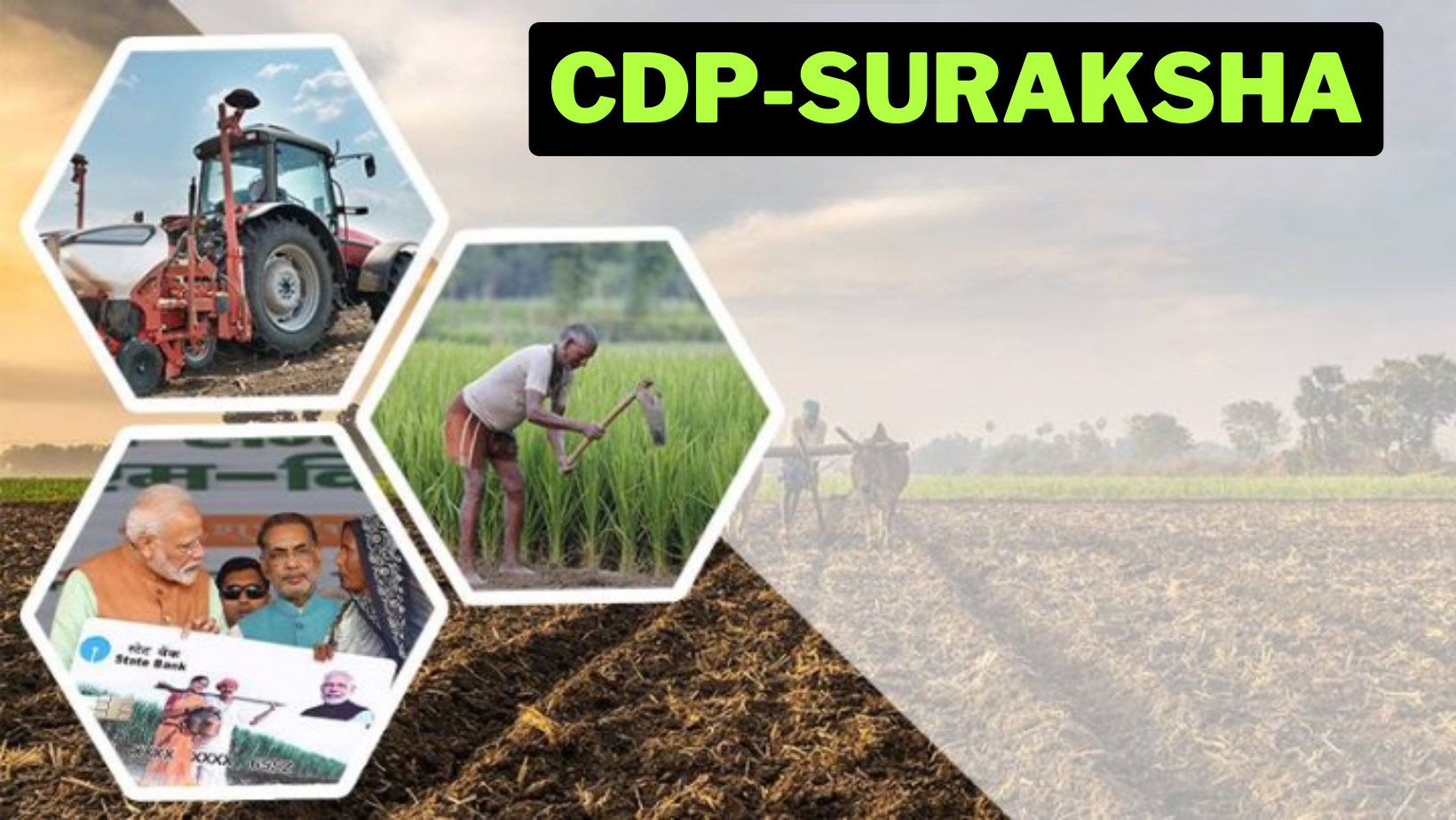
- 10 Apr 2024
Why is it in the News?
The government has come up with a new platform to disburse subsidies to horticulture farmers under the Cluster Development Programme (CDP) — the Centre’s initiative to promote horticulture crops.
What is the CDP-SURAKSHA?
- The CDP-SURAKSHA is essentially a digital platform.
- SURAKSHA stands for “System for Unified Resource Allocation, Knowledge, and Secure Horticulture Assistance.”
- The platform will allow an instant disbursal of subsidies to farmers in their bank accounts by utilizing the e-RUPI voucher from the National Payments Corporation of India (NPCI).
- The CDP-SURAKSHA has features such as database integration with PM-KISAN, cloud-based server space from NIC, UIDAI validation, eRUPI integration, local government directory (LGD), content management system, geotagging, and geo-fencing.
How does the CDP-SURAKSHA work?
- The platform allows access to farmers, vendors, implementing agencies (IA), cluster development agencies (CDAs), and officials of the National Horticulture Board (NHB).
- A farmer can log in using their mobile number and place an order for planting materials such as seeds, seedlings, and plants based on their requirement.
- Once the demand has been raised by the farmer, the system will ask them to contribute their share of the cost of planting material.
- The subsidy amount paid by the government will appear on the screen automatically.
- After the farmer pays their contribution, an e-RUPI voucher will be generated.
- This voucher will then be received by a vendor, who will provide the required planting material to the farmer.
- Once the ordered planting material is delivered to the farmer, they have to verify the delivery through geo-tagged photos and videos of their field.
- It is only after the verification that the IA will release the money to the vendor for the e-RUPI voucher.
- The vendor will be required to upload an invoice for the payment on the portal.
- The IA will collect all the documents and share them with the CDA for subsidy release, then only the subsidy will be released to the IA.
- However, the farmer, who raised the demand for the plant material using the platform, can avail of the subsidy at the first stage only.
What is e-RUPI?
- The CDP-SURAKSHA platform uses e-RUPI vouchers from the NPCI.
- The voucher is a one-time payment mechanism that can be redeemed without a card, digital payments app, or internet banking access, at the merchants accepting e-RUPI.
- According to the NPCI, the e-RUPI can be shared with the beneficiaries for a specific purpose or activity by organizations or government via SMS or QR code.
What is the Cluster Development Program (CDP)?
- The CDP is a component of the central sector scheme of NHB.
- It is aimed at leveraging “the geographical specialization of horticulture clusters and promoting integrated and market-led development of pre-production, production, post-harvest, logistics, branding, and marketing activities.”
- So far, 55 horticulture clusters have been identified, out of which 12 have been selected for the pilot.
- These clusters are in different stages of development.
- Four more clusters:
- A floriculture cluster in West Bengal
- Coconut clusters in Kerala and Tamil Nadu, and
- White onion clusters in Gujarat
- Each cluster will have an implementing agency and a cluster development agency (CDA).
- According to the government, about 9 lakh hectares of area will be covered through all 55 clusters, covering 10 lakh farmers.
- It is estimated that the initiative will attract private investment of Rs 8,250 crore, in addition to the government’s assistance, which is fixed according to the size of the cluster, up to Rs 25 crore for mini cluster (size up to 5,000 ha), up to Rs 50 crore for medium clusters (5,000 to 15,000), and up to Rs 100 crore for mega clusters (more than 15,000 ha).
C-Dome Defense System
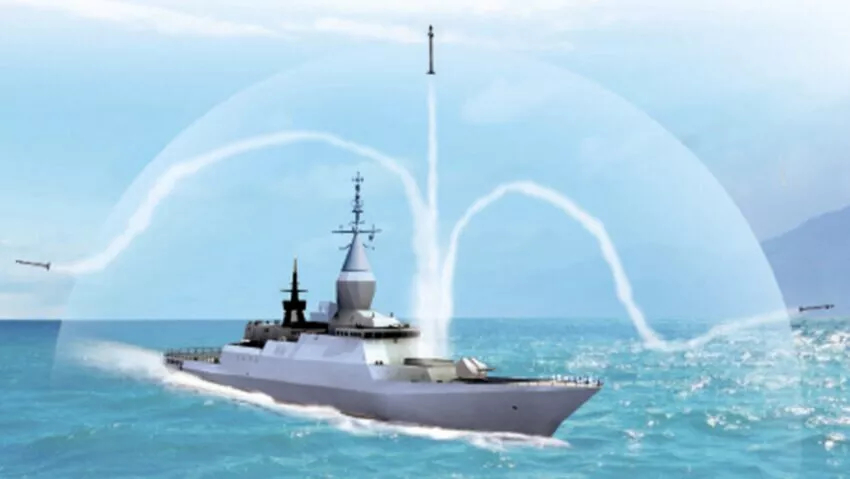
- 10 Apr 2024
Why is it in the News?
Israel for the first time used a seaborne missile defense system to shoot down a drone approaching from the Red Sea that had set off sirens in the port city of Eilat.
What is the C-Dome Defense System?
- The C-Dome is a naval version of Israel's Iron Dome air defense system, designed to protect against rocket and missile attacks.
- Drawing from Iron Dome's technology, C-Dome shares its 90% effectiveness rate and utilizes radars to detect and destroy short-range rockets with its missiles.
Operational Deployment and Integration:
- First unveiled in 2014 and declared operational in 2022, the C-Dome is mounted on Sa'ar 6-class corvettes and German-made warships.
- It employs the same interceptor as the Iron Dome but differs in its integration with the ship's radar for target detection, ensuring full-circular vessel protection.
Combatting Modern Threats:
- C-Dome's primary objective is to counter a wide range of modern maritime and coastal threats with high kill probability.
- Its successful deployment and performance underscore its pivotal role in safeguarding Israel's naval interests and assets against evolving security challenges.
About Iron Dome:
- Developed by Rafael Advanced Defense Systems and Israel Aerospace Industries, the Iron Dome is a cutting-edge air missile defense system that offers protection against short-range rockets by intercepting them above Israeli territory.
- With its multi-rocket handling capacity, Iron Dome became operational in 2011 and features:
- All-weather capabilities for day and night functionality
- Launching versatility with various interceptor missiles
- A range of approximately 40 miles
- Portable design for deployment on ships or land
- Adaptive defense through reloadable interceptors
Iron Dome consists of three key elements:
-
- Radar system for detecting incoming rockets
- Command-and-control mechanism to evaluate threat levels
- Interceptors are designed to neutralize incoming rockets before impact
- These components work in tandem to provide Israel with a robust and reliable defense against aerial threats.
India Imposed Import Restrictions on Solar PV Cells
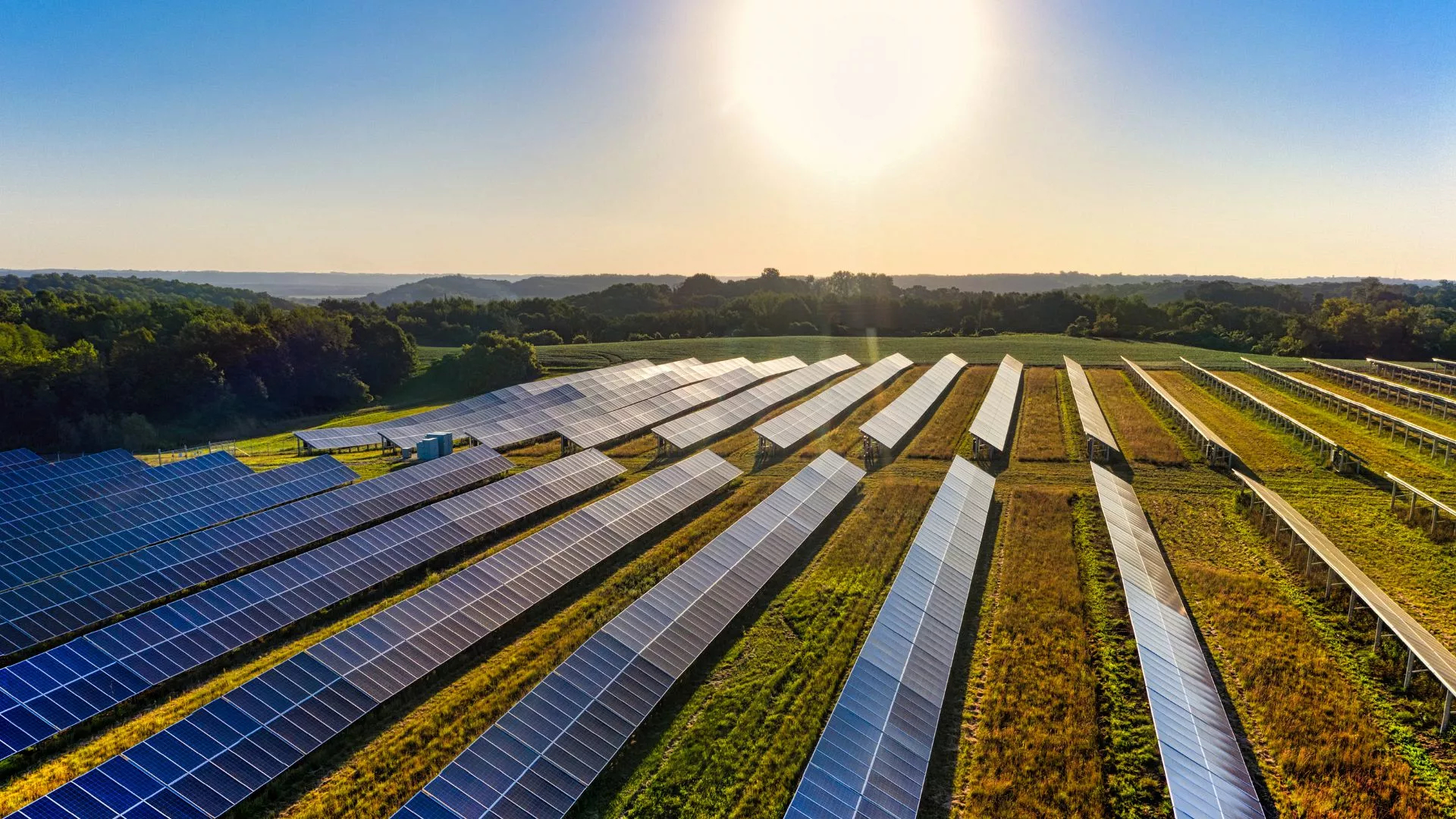
- 10 Apr 2024
Why is it in the News?
Recent government orders on attempts to increase local sourcing of solar modules to support India’s renewables manufacturing ecosystem have been widely reported in the media as ‘import restrictions’.
What is the Approved List of Models and Manufacturers (ALMM) List?
- The Approved List of Models and Manufacturers of Solar Photovoltaic Modules (ALMM) comprises government-approved manufacturers eligible for use in government projects, government-assisted projects, and schemes.
- ALMM aims to boost the domestic solar industry and reduce dependence on imports, particularly from China.
ALMM's Suspension and Reinstatement:
- The ALMM was kept in abeyance for two years to address concerns raised by renewable energy producers with pre-existing government contracts.
- During this period, India's domestic solar industry struggled to compete with cheap Chinese imports.
- To support local manufacturers, the government launched initiatives like the Production Linked Incentive (PLI) scheme under the Atmanirbhar Bharat ('Self-Reliant India') Programme.
- With the PLI scheme enhancing the competitiveness of Indian manufacturers, the ALMM was reinstated in March 2024.
- The government believes that domestic companies can now meet India's solar equipment demand, making the ALMM an essential tool for promoting import substitution and self-reliance in the renewable energy sector.
Solar PV Imports:
- India heavily relies on solar cell and module imports, with China and Vietnam being the primary suppliers.
- Government data reveals that India imported approximately $11.17 billion worth of solar cells and modules over the past five years.
- As of 2023-24, China accounted for 53% of solar cell imports and 63% of solar PV modules.
China's Competitive Edge:
- Several factors contribute to China's dominance in solar PV exports:
- Cost-effective manufacturing due to lower power costs
- Government policies prioritizing the solar PV sector
- Economies of scale and continuous innovation driven by growing domestic demand
- These advantages have made China the most cost-competitive location for producing solar PV components, making it challenging for other countries to match their production capabilities.
What is the Scope of Solar Energy in India?
- India's solar sector holds immense potential, driven by the government's target of achieving 500 GW of installed non-fossil fuel capacity by 2030.
- Moreover, the country's rapid growth in electricity demand, fueled by economic activities and climate adaptation measures, positions solar power as a critical resource.
- Solar energy accounted for one-third of renewable energy generation from April 2023 to February 2024, showcasing its significance in India's energy mix.
- Despite an estimated solar power potential of 748.99 GW, the country has yet to fully exploit this resource.
- To harness this potential, the government is implementing various schemes and programs, paving the way for a sustainable and prosperous solar future.
Coordinated Lunar Time (LTC)

- 10 Apr 2024
Why is it in the News?
Recently, the US White House has officially instructed NASA to create a lunar time standard for international and private sector coordination on the Moon.
What is Coordinated Lunar Time (LTC)?
- Coordinated Lunar Time (LTC) is a lunar-based time system being developed by NASA in collaboration with other government agencies to establish a standardized time zone for the Moon.
- LTC aims to provide a precise timekeeping benchmark for lunar spacecraft and satellites, synchronizing communication between astronauts, bases, and Earth.
Importance of LTC:
- As lunar exploration and commerce expand, a unified time standard becomes essential for managing operations, ensuring transaction reliability, and coordinating logistics.
- Furthermore, LTC addresses the discrepancy in timekeeping between Earth and the Moon due to differences in gravity, as time ticks faster on the Moon, causing Earth-based clocks to lose an average of 58.7 microseconds per day.
- Establishing LTC will prevent potential problems in spacecraft docking, data transfer, communication, and navigation.
How Will a Lunar Time Standard Be Established?
- Like on Earth, atomic clocks can be deployed on the lunar surface to set a time standard.
- These clocks have to be placed on the Moon at different locations since the Moon’s rotation and even local lumps of mass, called mascons, beneath the crust of the Moon affect the flow of time ever so slightly.
- Mascons or mass concentrations are so dense that they alter the Moon’s local gravity field.
- These effects are minor but the output from these clocks can be synthesized to give the Moon its own independent time, which can be tied back to UTC for seamless operations from Earth as well.
How Does Earth’s Time Standard Work?
- Most of the clocks and time zones of the world are based on Coordinated Universal Time (UTC), set by the International Bureau of Weights and Measures in Paris, France.
- UTC is essentially an internationally agreed-upon standard for world time.
- It is tracked by a weighted average of more than 400 atomic clocks placed in different parts of the globe.
- Atomic clocks measure time in terms of the resonant frequencies — the natural frequency of an object where it tends to vibrate at a higher amplitude — of atoms such as cesium-133.
- In atomic time, a second is defined as the period in which a cesium atom vibrates 9,192,631,770 times.
- As the vibration rates at which atoms absorb energy are highly stable and ultra-accurate, atomic clocks make for an excellent device for gauging the passage of time.
- To obtain their local time, countries must subtract or add a certain number of hours from UTC depending on how many time zones they are away from 0 degree longitude meridian, also known as the Greenwich meridian.
- If a country lies on the west of the Greenwich meridian, it has to subtract from the UTC, and if a country is located on the east of the meridian, it has to add.
Black Swan Event
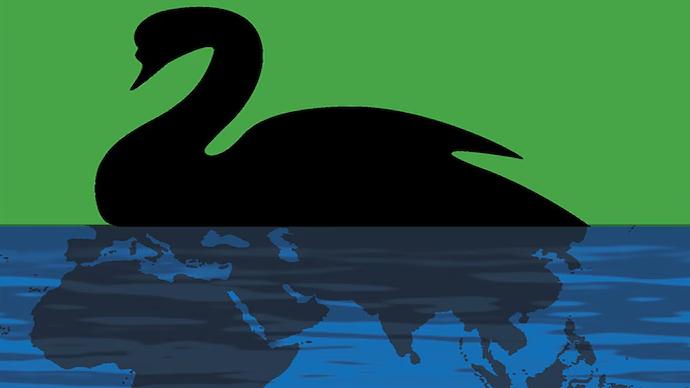
- 09 Apr 2024
Why is it in the News?
Army Chief Gen Manoj Pande on Monday called upon the force to be always prepared for 'black swan' events and "expect the unexpected" even as he identified technology as the new area for strategic competition among nations.
What is the Black Swan Event?
- A black swan is a rare, unpredictable event that comes as a surprise and has a significant impact on society or the world.
- These events are said to have three distinguishing characteristics:
- They are extremely rare and outside the realm of regular expectations
- They have a severe impact after they hit; and
- They seem probable in hindsight when plausible explanations appear.
When did the Term Originate?
- The black swan theory was put forward by author and investor Nassim Nicholas Taleb in 2001 and later popularised in his 2007 book – The Black Swan: The Impact of the Highly Improbable.
- In his book, Taleb does not try to lay out a method to predict such events but instead stresses building “robustness” in systems and strategies to deal with black swan occurrences and withstand their impact.
- The term itself is linked to the discovery of black swans.
- Europeans believed all swans to be white until 1697 when a Dutch explorer spotted the first black swan in Australia.
- The metaphor ‘black swan event’ is derived from this unprecedented spotting from the 17th century, and how it upended the West’s understanding of swans.
Implications of Black Swan Events:
- Black Swan events are characterized by their extreme rarity, severe impact, and widespread implications across various sectors.
- These unanticipated occurrences can trigger substantial disruptions, unveiling vulnerabilities in systems once thought resilient and prompting reassessments of risk management practices.
- Disruption: Black Swan events have the potential to disrupt economies, industries, and societies on a global scale.
- Their unforeseen nature can cause sudden shifts in financial markets, business operations, and everyday life, leaving lasting effects on the overall landscape.
- Uncertainty: The inability to predict Black Swan events using traditional methods injects considerable uncertainty into decision-making and planning for individuals, organizations, and governments.
- Navigating through such unpredictable circumstances can pose significant challenges for all affected parties.
- Vulnerability: These rare events can expose vulnerabilities in systems that were previously thought to be impervious or resilient.
- By doing so, Black Swan events emphasize the importance of preparedness and encourage the development of more robust risk management practices.
- Reassessment of Risk: In the aftermath of a Black Swan event, there is often a renewed focus on identifying and mitigating previously overlooked risks.
- This heightened awareness can lead to changes in investment strategies, regulatory policies, and overall risk management practices.
- Regulatory and Policy Responses: Governments and regulatory bodies may implement new regulations or policies in response to Black Swan events.
- These measures are designed to prevent or mitigate the impact of similar occurrences in the future, ultimately shaping the economic and social landscape.
- Behavioral and Attitude Changes: Black Swan events can significantly alter behaviors and attitudes as individuals and organizations adapt to the new reality.
- These shifts may include changes in consumer behavior, investment strategies, and approaches to risk management.
Examples of Black Swan Events:
- The Dot-com Bubble: In 2000, the valuation of many internet-based companies plummeted after a period of rapid growth.
- The 9/11 Terrorist Attacks: The events of September 11, 2001, had far-reaching consequences on global security, politics, and economies.
- The 2008 Financial Crisis: A series of shocks to Wall Street due to the unraveling of subprime lending practices caused significant economic turmoil.
- Brexit: The unexpected decision of the United Kingdom to leave the European Union in June 2016 caught many by surprise and caused the British pound to plummet against the US dollar.
- COVID-19 Pandemic: The ongoing global health crisis continues to significantly affect economies and markets worldwide.
- These instances illustrate the profound and widespread implications of Black Swan events, underscoring the importance of adaptability and resilience in an ever-changing global landscape.
Imposition of Anti-Dumping Duty on Sodium Cyanide

- 09 Apr 2024
Why is it in the News?
The Directorate General of Trade Remedies (DGTR) has now recommended the imposition of anti-dumping duty on sodium cyanide (NaCN) imported from China, the European Union, Japan, and Korea.
Key Facts About Sodium Cyanide:
- Sodium cyanide (NaCN) is a highly toxic, inorganic compound with a white, crystalline appearance.
- It is a solid at room temperature and has a high affinity for metals, making it useful in various industrial processes.
- Due to its toxic nature, proper handling and safety protocols must be followed when working with sodium cyanide.
Applications of Sodium Cyanide:
- Mining and Metallurgy: Sodium cyanide is widely used in the extraction of gold and silver from ores. It is employed in a technique called "cyanide heap leaching," where a dilute sodium cyanide solution is sprayed onto crushed ore.
- The cyanide forms a water-soluble complex with the precious metals, enabling their recovery from the ore.
- Electroplating: NaCN is utilized as an electrolyte in electroplating processes, particularly for the deposition of silver, gold, and other metals on various surfaces to improve their appearance, durability, or conductivity.
- Synthetic Fiber Production: Sodium cyanide is used in the manufacturing of synthetic fibers such as acrylic and nylon.
- It serves as a catalyst in the polymerization process, promoting the formation of long-chain polymers that make up the fibers.
- Pesticides: Due to its toxicity, sodium cyanide has been used as a fumigant to control pests and rodents.
- However, its use in this field has been largely phased out in many countries due to safety concerns and the development of safer alternatives.
- Dye and Pigment Production: NaCN can be used in the production of certain dyes and pigments, particularly those containing nitrogen.
- It acts as a precursor for the synthesis of these compounds.
What is Anti-Dumping Duty?
- An anti-dumping duty is a tariff imposed by a domestic government on foreign imports suspected of being sold at prices lower than those in the exporter's domestic market.
- This measure aims to prevent these products from undercutting local businesses and harming the local economy.
- The World Trade Organization (WTO) oversees a framework of international trade rules governing anti-dumping measures.
- Under this agreement, governments are permitted to address dumping practices if they pose a threat of significant harm to a domestic industry.
Calculation of Anti-Dumping Duty:
- The calculation of anti-dumping duty involves determining the difference between the normal value and the export value of the product.
- The normal value represents the market value of the product in the exporter's domestic market, while the export value denotes the price at which the product is sold when exported to India.
- The anti-dumping duty is levied to neutralize this price disparity and safeguard the domestic industry from the adverse effects of inexpensive imports.
Anti-Dumping Mechanism in India:
- India's anti-dumping mechanism is overseen by the Directorate General of Anti-Dumping and Allied Duties (DGAD) under the Ministry of Finance.
- The legal framework for anti-dumping in India is established by the Customs Tariff Act of 1975 and the Customs Tariff Rules of 1995.
- The DGAD conducts investigations to assess whether a surge in below-cost imports has negatively impacted the domestic industry.
Mangal Pandey
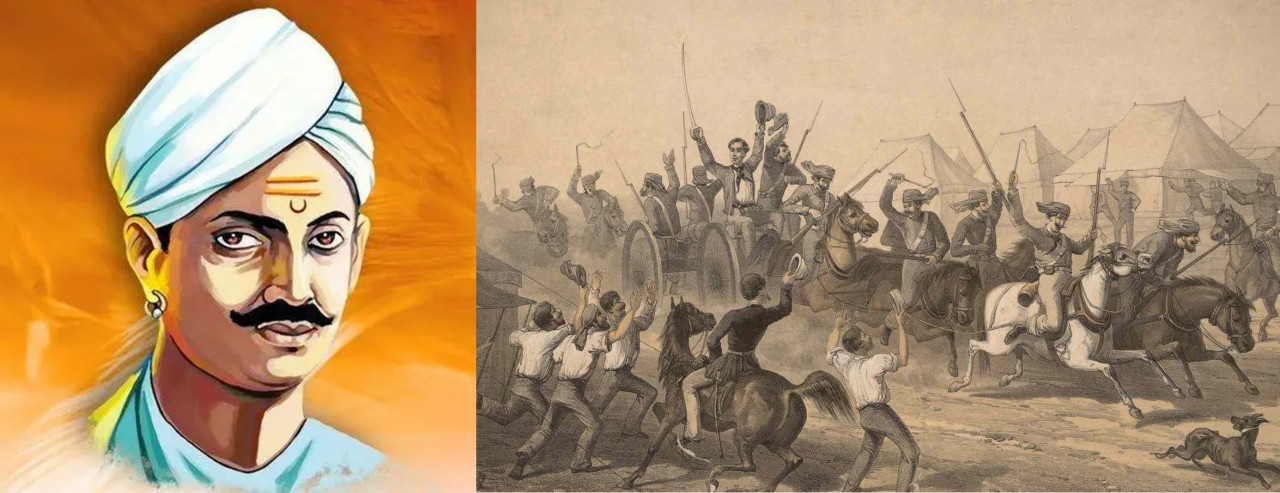
- 09 Apr 2024
Why is it in the News?
Sepoy Mangal Pandey likely didn't anticipate that his shot at the Sergeant Major of his regiment near Kolkata on March 29, 1857, would ignite a significant event in Modern Indian history—the Revolt of 1857, also known as the Sepoy Mutiny or the First War of Indian Independence.
Who was Mangal Pandey?
- Mangal Pandey was a prominent historical figure who played a pivotal role in India's struggle for independence from British colonial rule.
- Born in the kingdom of Awadh, which contributed significantly to the East India Company's army, Mangal Pandey joined the 34th Bengal Native Infantry at the age of 22.
Annexation of Awadh:
- In 1856, the British annexed Awadh in a treacherous act that provoked widespread anger and resentment among the local population.
- The deposition of the Nawab and the subsequent confiscation of villages from the taluqdars during the land revenue settlement of 1856 only exacerbated the situation.
Mangal Pandey's Mutiny and Execution:
- The introduction of the Enfield rifle, which used animal fat (beef and pork) in its cartridges, was met with fierce resistance from soldiers like Mangal Pandey.
- They perceived the use of these cartridges as a direct affront to their religious beliefs.
- On March 29, 1857, Mangal Pandey openly revolted, firing at his Senior Sergeant Major in protest.
- His act of defiance led to his capture, and he was subsequently hanged by order of a Court Martial at Lal Bagan in Barrackpore.
- Mangal Pandey's sacrifice and bravery in the face of British oppression have earned him a lasting place in India's history as a symbol of resistance against colonial tyranny.
The Expansion of the 1857 Revolt and Its Lasting Impact:
- The bravery exhibited by Mangal Pandey inspired a wave of resistance among other soldiers, notably those of the 7th Awadh Regiment.
- On May 11, 1857, a group of Sepoys from Meerut refused to use the new cartridges and killed their European officers, marching to the Red Fort in an act of defiance.
The Legacy of the 1857 Revolt:
- The revolt of 1857 had far-reaching consequences and reshaped the dynamics of British rule in India.
- In response to the growing unrest, the British Parliament passed the Government of India Act in 1858, effectively transferring all powers of the East India Company to the Crown.
- Queen Victoria was subsequently declared the Sovereign of British India.
- The Queen's Proclamation, announced by Lord Canning in 1858, introduced a new policy of perpetual support for the native Princes and pledged non-intervention in matters of religious beliefs in India.
- This policy was further reinforced in 1877 during the Delhi Durbar, where Queen Victoria assumed the title of Qaiser-e-Hind, reflecting her position as the Empress of India.
- The 1857 revolt, sparked by Mangal Pandey's actions, marked a turning point in India's struggle for independence and continues to be remembered as a pivotal moment in the nation's history.
ISRO’s ‘Zero Orbital Debris’ Milestone

- 09 Apr 2024
Why is it in the News?
The rise in satellite launches has led to a new crisis for spacefaring nations: space debris, which ISRO's recent mission successfully mitigated by leaving 'zero orbital debris'.
Context:
- Recently, ISRO announced that its PSLV-C58/XPoSat mission effectively minimized debris in Earth's orbit.
- This achievement was made possible by repurposing the final stage of the PSLV into a novel orbital station termed PSLV Orbital Experimental Module-3 (POEM-3), as outlined by ISRO.
What is POEM?
- POEM, developed by the Vikram Sarabhai Space Centre (VSSC) is a cost-effective space platform, that repurposes the spent fourth stage of a PSLV rocket into an orbital platform.
- It made its debut during the PSLV-C53 mission in 2022, serving as a stabilized platform for conducting in-orbit scientific experiments with various payloads.
- POEM-3, deployed during ISRO's PSLV C-58 mission in 2024, successfully positioned the XPoSat satellite into its targeted 650 km orbit.
- Subsequently, the fourth stage of the PSLV, functioning as POEM-3, was maneuvered to a circular orbit at 350 km altitude.
- Upon completing all payload objectives, POEM-3 re-entered Earth's atmosphere.
Significance of POEM-3's Achievement:
- The significance of POEM-3's achievement lies in its contribution to mitigating space debris, a pressing concern highlighted in ISRO's Space Situational Assessment Report 2022.
- With the world witnessing a surge in space object placement, reaching 2,533 in 179 launches in 2022, the proliferation of space debris poses substantial risks to space assets.
- Furthermore, it exacerbates the 'Kessler syndrome,' wherein cascading collisions from a single event generate additional debris, intensifying the threat to space operations.
International Law Pertaining to Space Debris:
- Regarding international regulation on space debris, presently, there exists no specific international law governing debris in Low Earth Orbit (LEO).
- However, the majority of spacefaring nations adhere to the Space Debris Mitigation Guidelines of 2002, which received endorsement from the UN in 2007.
How are Space Agencies Dealing with Debris?
- Various space agencies are actively addressing the issue of space debris.
- NASA initiated its Orbital Debris Program in 1979, while the European Space Agency (ESA) has committed to a 'Zero Debris charter,' aiming for the elimination of space debris by 2030.
- Japan has launched the Commercial Removal of Debris Demonstration (CRD2) project to confront space junk.
- Additionally, an Indian startup named Manastu Space is developing technologies such as in-space refueling, deorbiting of defunct satellites, and satellite life extension to contribute to debris mitigation efforts.
TSAT-1A Satellite
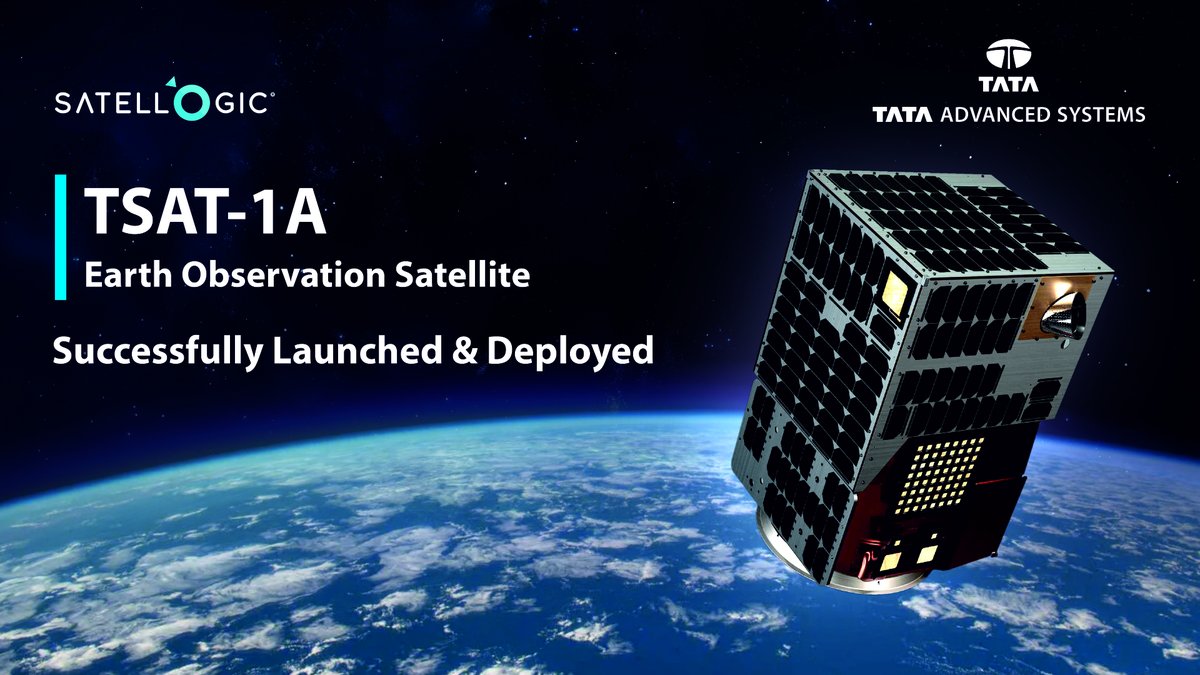
- 09 Apr 2024
Why is it in the News?
SpaceX successfully launched and deployed the TSAT-1A satellite developed by Tata Advanced Systems Limited (TASL) in partnership with Satellogic Inc.
About TSAT-1A Satellite:
- TSAT-1A is a groundbreaking optical sub-meter resolution Earth observation satellite developed by Tata Advanced Systems Limited (TASL) in collaboration with Latin American company Satellogic Inc.
- This collaboration began in late 2023, culminating in TSAT-1A's assembly at TASL's Assembly, Integration, and Testing (AIT) plant in Karnataka, India.
- Launched from the Kennedy Space Center in Florida, United States, via SpaceX's Falcon 9 rocket, TSAT-1A has since garnered attention for its advanced capabilities and strategic significance.
Key Features of TSAT-1A:
- Sub-meter resolution imagery: TSAT-1A's primary strength lies in its ability to capture high-resolution military-grade imagery of Earth's surface, providing precision of less than one meter per pixel.
- Multispectral and hyperspectral imaging: This technology enables TSAT-1A to gather data across a wide range of wavelengths in the electromagnetic spectrum, offering a detailed and nuanced understanding of land, water, and other natural resources.
- Enhanced performance: TSAT-1A offers improved collection capacity, a wider dynamic range, and low-latency data delivery, ensuring efficient and reliable intelligence gathering.
Strategic Applications and Implications:
- Designed for use by Indian defense forces, TSAT-1A is set to play a pivotal role in discreet information gathering, with the potential for data-sharing among friendly nations.
- By enhancing defense forces' preparedness, response capabilities, and strategic decision-making, TSAT-1A represents a significant milestone in India's space industry and a potential game-changer in the realm of defense and security.
About SpaceX's Falcon 9 rocket:
- The Falcon 9 is a partially reusable, two-stage rocket designed and manufactured by SpaceX.
- Known for its reliable and safe transportation capabilities, Falcon 9 is primarily used to launch payloads and crew into Earth orbit.
- Since its first launch in 2010, Falcon 9 has made significant strides in the aerospace industry, becoming the first commercial rocket to launch humans to orbit in 2020 and maintaining a strong safety record with only one flight failure to date.
Solar Eclipse

- 08 Apr 2024
Why is it in the News?
On Monday (April 8), a total solar eclipse will cross North America, passing over Mexico, the United States, and Canada. This type of solar eclipse is a rare event for any particular spot.
What is a Solar Eclipse?
- A solar eclipse takes place when the Moon moves in the middle of Earth and the Sun.
- The Moon blocks the light of the Sun, either fully or partially, which casts a huge shadow on some parts of the world.
There are four different types of solar eclipses, including:
- Total solar eclipse: When the Moon blocks the Sun entirely, the areas in the center of the Moon’s shadow at the time witness a total solar eclipse.
- The sky darkens and people who are in the path of a total solar eclipse can get a glimpse of the Sun’s corona — the outer atmosphere — which is usually not visible due to the bright face of the Sun.
- Annual solar eclipse: When the Moon passes in front of the Sun but is at or near the farthest point from Earth, an annular solar eclipse occurs.
- In this scenario, the Moon covers the Sun in such a way that only the periphery of the Sun remains visible — looking like a ring of fire.
- Partial solar eclipse: A partial solar eclipse takes place when the Moon blocks just a part of the Sun, giving it a crescent shape.
- During both partial and annular eclipses, the regions outside the area covered by the Moon’s umbra — the middle and the darkest part of the lunar shadow — will see a partial solar eclipse.
- Partial solar eclipse is the most common type of solar eclipse.
- Hybrid solar eclipse: A hybrid solar eclipse — the rarest type of solar eclipse — is witnessed when an eclipse shifts between annular and total as the shadow of the Moon moves across the globe.
- In this case, some parts of the world see a total solar eclipse, while others observe an annular solar eclipse.
How Often Does a Solar Eclipse Take Place?
- A solar eclipse is witnessed only during the new moon — when the Moon and Sun are aligned on the same side of Earth.
- A new moon occurs about 29.5 days because that is how long it takes the Moon to orbit Earth.
- This, however, does not mean that a solar eclipse happens every month. It takes place only between two to five times annually, because the Moon does not orbit Earth in the same plane as the Earth orbits the Sun.
- In fact, the Moon is tilted by about five degrees with respect to Earth.
- As a result, most of the time when the Moon is in between the Sun and Earth, its shadow is either too high or too low to fall on the Earth.
Why is a Total Solar Eclipse so Rare?
- While there can be between two and five solar eclipses every year, total eclipses only happen about once every 18 months or so.
- This is because a total eclipse is only visible if one is standing in the umbra — the other part of the shadow is called the penumbra, which is not as dark as the umbra.
- The umbral shadow is very small, covering only a small part of Earth.
- In fact, the entire path of the umbral shadow during a solar eclipse will only cover less than one percent of the globe.
- This is why only very few people will get to see a total eclipse at a time.
- Moreover, about 70 percent of the globe is underwater and half of the land is considered uninhabited.
- That’s why, it is quite rare when a total solar eclipse happens and a lot of people get to see it.
Umbra and Penumbra:
- During a solar eclipse, the Moon comes between the Earth and the Sun, casting a shadow on the Earth's surface.
- This shadow consists of two main parts: the umbra and the penumbra.
- The umbra is the central, darkest part of a shadow, such as during a total solar eclipse when the Moon completely covers the Sun.
- The penumbra is the outer part of the shadow where the obscuration is partial, resulting in a partial solar eclipse.
Consumer Confidence Survey (CCS)

- 08 Apr 2024
Why is it in the News?
Consumer confidence for the year ahead has improved further on the back of higher optimism, which resulted in the Future Expectations Index (FEI) rising by 2.1 points to 125.2, the highest level since mid-2019, according to a Reserve Bank of India survey conducted in March 2024.
What is the Consumer Confidence Survey (CCS)?
- The Consumer Confidence Survey (CCS) is a comprehensive assessment conducted by the Reserve Bank of India (RBI) to gauge consumer perceptions of the current economic landscape.
- Administered across various cities, the CCS measures consumer confidence based on key indicators such as economic conditions, employment prospects, price levels, income, and spending patterns.
- The survey collects valuable insights into consumer sentiments by posing a series of questions about both present and future economic scenarios.
- These responses offer a glimpse into consumers' perceptions of the prevailing financial environment, shedding light on economic trends, opportunities, and potential challenges.
- As a vital tool for policymakers, the Consumer Confidence Survey contributes to shaping effective strategies aimed at fostering sustainable economic growth and improving overall financial stability.
Highlights of the Survey:
- The survey revealed optimistic consumer sentiments across all parameters, reflecting a positive outlook on the current and future economic landscape.
- Key indicators, such as the Current Situation Index (CSI) and Future Expectations Index (FEI), showcased significant improvements, reaching their highest levels since mid-2019.
- Current Situation Index (CSI): Measuring overall consumer perception of the present economic situation, the CSI experienced a notable increase of 3.4 points compared to the previous survey, currently standing at 98.5.
- Future Expectations Index (FEI): Evaluating consumer sentiment for the next 12 months, the FEI witnessed a substantial surge, reaching its highest point since mid-2019 and indicating a positive outlook for the upcoming year.
- The CSI and FEI are calculated based on net responses concerning the economic situation, income, spending, employment, and price levels, comparing the current period with one year ago and the anticipated changes in the year ahead, respectively.
- Households’ Inflation Expectation Survey: There was a slight increase in the proportion of households anticipating an overall rise in prices and inflation within the next three months and one year, as observed across general prices and most product categories when compared to the previous survey round.
- Additionally, the survey results revealed noteworthy enhancements in households' perceptions regarding the general economic situation and employment prospects, signaling a sense of optimism for both the current period and the years ahead.
Oceanic Niño Index (ONI)
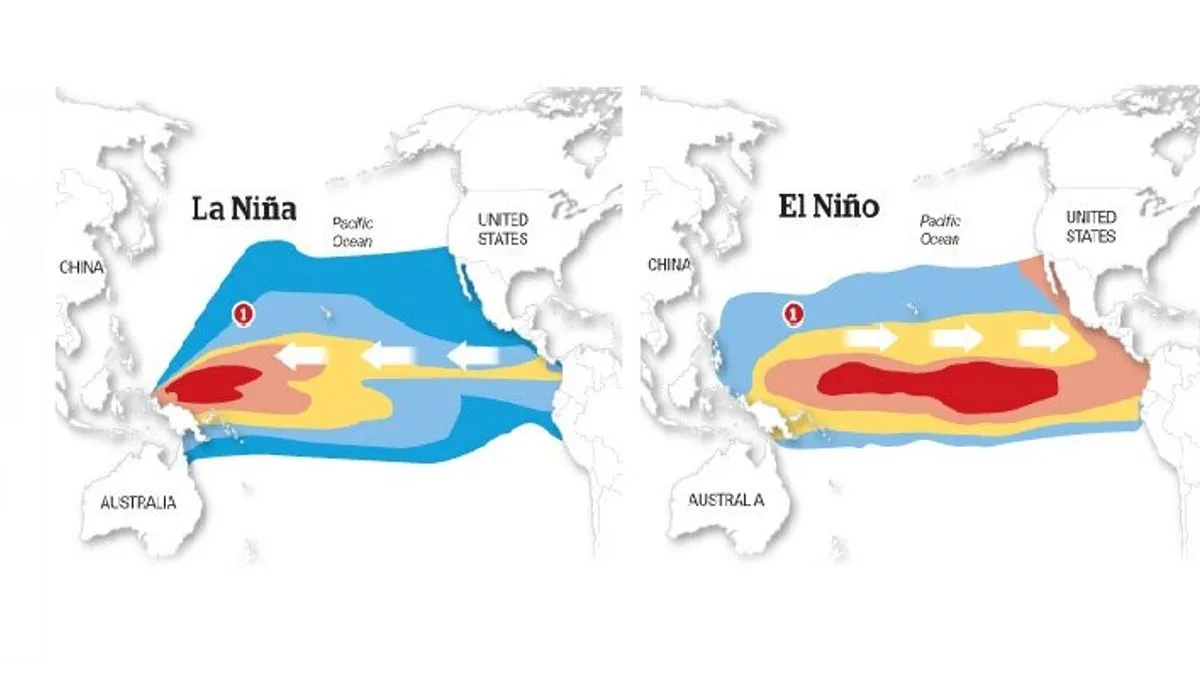
- 08 Apr 2024
Why is it in the News?
The US National Oceanic and Atmospheric Administration (NOAA) has recently forecasted an 83% likelihood that the Oceanic Niño Index (ONI) will move into a neutral range between April and June 2024.
What is the Oceanic Niño Index?
- The Oceanic Niño Index (ONI) is the National Oceanic and Atmospheric Administration's (NOAA) primary indicator for monitoring El Niño and La Niña, which are opposite phases of the climate pattern called the El Niño-Southern Oscillation, or “ENSO” for short.
- NOAA is a US governmental agency responsible for monitoring and researching the Earth's oceans, atmosphere, and climate, and providing weather forecasts and environmental data.
- The ONI is the difference between a three-month running average of the sea surface temperature averaged over an area of the ocean from 120 West to 170 West longitude along the equator and the long-term average for the same three months.
- NOAA considers El Niño conditions to be present when the Oceanic Niño Index is +0.5 or higher, indicating the east-central tropical Pacific is significantly warmer than usual.
- La Niña conditions exist when the Oceanic Niño Index is -0.5 or lower, indicating the region is cooler than usual.
What is El Niño and La Niña?
- El Niño and La Niña are two natural climate phenomena that occur in the Pacific Ocean, characterized by fluctuations in ocean surface temperatures.
- They are part of the El Niño-Southern Oscillation (ENSO) cycle, which impacts global weather patterns.
- El Niño refers to the warming of ocean surface temperatures in the eastern tropical Pacific.
- This warming causes changes in atmospheric pressure and wind patterns, which can lead to drought conditions in parts of South America and heavy rainfall in other regions, such as the southern United States.
- La Niña is the opposite phase of the ENSO cycle, characterized by cooler-than-average ocean surface temperatures in the eastern tropical Pacific.
- This results in the strengthening of normal trade winds, causing increased rainfall in some regions, such as Indonesia and northern Australia, and drier conditions in other areas, including the southwestern United States.
- El Niño refers to the warming of ocean surface temperatures in the eastern tropical Pacific.
Effects of El Niño and La Niña on India:
- Both El Niño and La Niña have significant impacts on India's climate, particularly during the monsoon season.
- El Niño events often lead to weaker monsoon winds and reduced rainfall in India, causing droughts and impacting agricultural production.
- On the other hand, La Niña events typically result in stronger monsoon winds and higher rainfall, leading to better agricultural yields.
- However, excessive rainfall can also cause floods and landslides in some regions.
- Monitoring and predicting the occurrence of El Niño and La Niña events is crucial for India's weather forecasting and agricultural planning.
- Accurate predictions enable authorities to take necessary measures to mitigate potential adverse effects on agriculture and infrastructure.
SUVIDHA Portal

- 08 Apr 2024
Why is it in the News?
The Election Commission said that over 73 thousand applications had been received on the Suvidha Portal in just 20 days since the announcement of General Elections 2024.
About SUVIDHA Portal:
- The Suvidha portal is a technological solution developed by the Election Commission of India (ECI) to ensure a level playing field upholding the democratic principles of free, fair, and transparent elections.
- Suvidha's robust track record showcases its ability to streamline requests for permissions and facilities during election campaigns, catering to diverse needs such as rallies, canvassing, and temporary party offices.
- The Suvidha portal offers both online and offline submission options, ensuring inclusivity and equal opportunity for all stakeholders.
- Permission requests can be processed efficiently through a robust IT platform managed by nodal officers from various state departments.
- The portal's user-friendly design allows political parties and candidates to submit requests from anywhere, at any time.
- To enhance transparency and convenience, Suvidha also provides a companion app for real-time tracking of application statuses.
- Available on both iOS and Android platforms, the app ensures a seamless user experience.
- Moreover, the Suvidha portal promotes accountability by offering features such as real-time tracking, status updates, timestamped submissions, and SMS communication.
- Data collected on the Suvidha platform serves as a valuable resource for scrutinizing election expenditures, thereby promoting greater integrity in the electoral process.
- With Suvidha, the Election Commission of India demonstrates its commitment to facilitating a fair, efficient, and transparent electoral environment, granting equal access to all political parties and candidates seeking permissions and clearances during election campaigns.
Prevention of Money Laundering Act (PMLA)

- 08 Apr 2024
Why is it in the News?
In its manifesto for the Lok Sabha election, the primary opposition party pledged to cease the weaponization of the Prevention of Money Laundering Act (PMLA) if entrusted with power.
About the Prevention of Money Laundering Act:
- The Prevention of Money Laundering Act (PMLA) constitutes the cornerstone of India's legal framework aimed at combating money laundering, with its enactment and enforcement starting from July 1, 2005.
- Enacted by India's Parliament under Article 253, which authorizes legislation for implementing international conventions, the Act has three primary objectives:
- Prevention and control of money laundering
- Confiscation of proceeds derived from laundering, and
- Addressing related issues within India.
- The Act empowers the Director of the Financial Intelligence Unit-India (FIU-IND) and the Director (Enforcement) with exclusive and concurrent powers to enforce its provisions.
- Subsequent amendments were made in 2009 and 2012 through the Prevention of Money Laundering (Amendment) Acts.
What is Money Laundering?
- Money laundering is defined as the process through which an illegal fund, such as black money, is obtained from illegal activities and disguised as legal money, eventually portrayed as white money.
- The money laundered is passed on through various channels or phases of conversions and transfers to make it legal and eventually reach a legally acceptable institution, like a bank.
Brief History of the PMLA:
- In response to the emergence of global terrorism in the 1990s and the subsequent imperative to curb illicit financial flows, international efforts intensified, culminating in the establishment of the Financial Action Task Force (FATF) in 1989 to coordinate anti-money laundering endeavors worldwide.
Legislative Response:
- Against this backdrop, India, as a member of FATF, was prompted to enact domestic legislation to combat money laundering following the United Nations General Assembly's political declaration in 1998 urging member states to implement national anti-money laundering measures.
Enactment Process:
- The initial iteration of the Prevention of Money-Laundering Bill in 1998 was introduced by the NDA government, aiming to address various aspects such as the prevention of money laundering, confiscation of illicit proceeds, and establishment of coordinating agencies.
- However, concerns regarding potential misuse of the proposed law led to bipartisan opposition, prompting referral to the Department-related Standing Committee on Finance.
- Despite deliberations and amendments, the bill was eventually passed by Parliament in 2002, with enforcement commencing in 2005 following the formulation of accompanying rules under the subsequent UPA government.
Significant Amendments in the PMLA:
- Over the years, the Prevention of Money Laundering Act (PMLA) has undergone various revisions, but it was the amendments introduced in 2009 and 2012 that notably empowered the Enforcement Directorate (ED) to take coercive measures against politicians.
- In 2009, amendments expanded the PMLA's scope to include 'Criminal conspiracy' under Section 120B of the Indian Penal Code (IPC), enabling the ED to intervene in cases alleging conspiracy, even if the primary offense isn't listed in the PMLA.
- For instance, this broadening facilitated the ED's pursuit of cases like the land-grabbing accusations against a former Jharkhand CM, currently incarcerated in Ranchi.
- Furthermore, the 2009 amendments granted the ED international jurisdiction for tracking laundered money, enhancing its global reach.
- In 2012, the PMLA was amended to elevate the Prevention of Corruption Act, 1988 (PC Act) to Part A of the statute's schedule from Part B.
- This move imposed stricter bail conditions on corruption suspects, requiring courts to ascertain substantial evidence of guilt if bail opposition arises from the public prosecutor.
- Part A of the schedule encompassed various serious offenses, including acts like waging war against the nation, drug trafficking, and violations of the PC Act, among others.
Supreme Court's Verdicts on the Constitutionality of PMLA:
- In the case of Vijay Madanlal Choudhary & Ors vs Union of India (2022), a three-judge Bench of the Supreme Court upheld the constitutional validity of the Prevention of Money Laundering Act (PMLA), which faced challenges in over 200 individual petitions.
- One of the primary challenges was regarding the creation of an alternative criminal law system by the PMLA, as the Enforcement Directorate (ED) operates outside the ambit of the Code of Criminal Procedure (CrPC).
- Not being classified as 'police', the ED is not bound by CrPC provisions for searches, seizures, arrests, and property attachments.
- The judgment affirmed the ED's expansive powers, including the admissibility of statements made to it in court.
- In Nikesh Tarachand Shah v Union of India (2017), the PMLA, akin to the Unlawful Activities (Prevention) Act (UAPA), imposed stringent bail conditions, requiring accused individuals to prove the absence of a "prima facie" case against them and their commitment to refraining from future offenses.
- The Supreme Court initially struck down these provisions as unconstitutional.
- However, Parliament reintroduced them through an amendment to the PMLA via the Finance Act, of 2018, which the Supreme Court upheld in 2021.
- While certain aspects of the 2021 ruling, such as the ED's non-obligation to disclose the ECIR (similar to an FIR in criminal cases), are currently under review, the ruling stands as the prevailing law of the land.
Use of Green Hydrogen in the Transport Sector
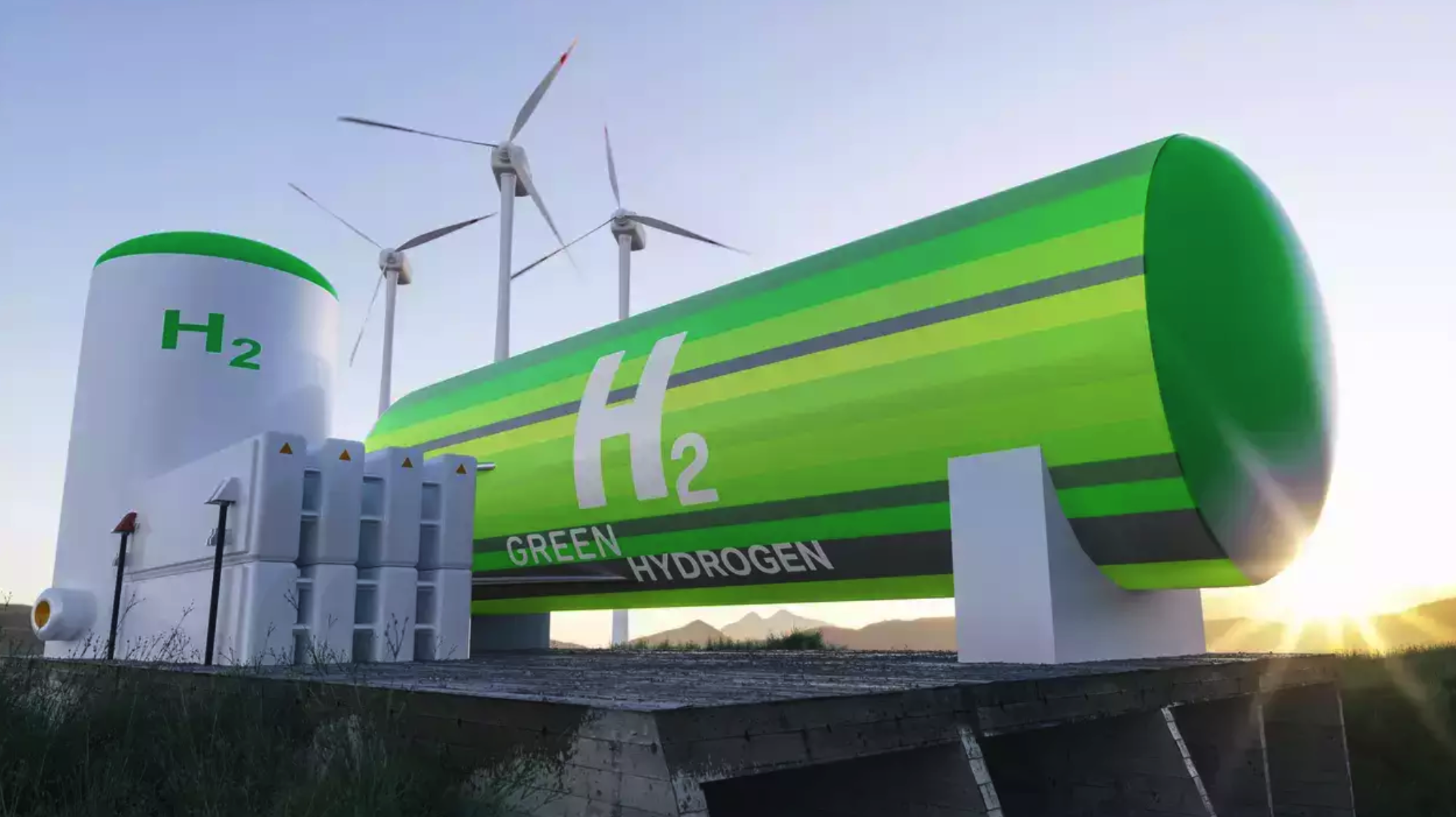
- 06 Apr 2024
Why is it in the News?
The Ministry of New and Renewable Energy (MNRE) has announced a Rs-496-crore (until 2025-26) scheme to support pilot projects that either test the viability of green hydrogen as a vehicle fuel or develop secure supporting infrastructure such as refueling stations.
What is Green Hydrogen?
- Green hydrogen is a form of hydrogen gas produced through a process called electrolysis, where water (H2O) is split into hydrogen (H2) and oxygen (O2) using electricity.
- The electricity used in this process is generated from renewable sources such as solar, wind, or hydroelectric power, hence the term "green" hydrogen.
- Unlike conventional methods of hydrogen production, which often rely on fossil fuels and emit greenhouse gases, green hydrogen production is considered environmentally friendly because it doesn't generate carbon dioxide emissions.
- It can be used as a clean energy carrier in various sectors, including transportation, industry, and energy storage.
- The production of green hydrogen is still relatively expensive compared to other forms of hydrogen production, but ongoing advancements in renewable energy technologies and electrolysis processes are expected to reduce costs and increase the viability of green hydrogen as a sustainable energy source in the future.
India's Push for Green Hydrogen in the Transportation Sector:
- India is aggressively pushing for the adoption of green hydrogen in its transportation sector:
- Major Indian commercial vehicle manufacturers like Tata Motors, Volvo Eicher, and Ashok Leyland are intensifying their efforts to develop hydrogen-powered trucks and buses.
- Simultaneously, Indian energy companies are ramping up efforts to increase the production of green hydrogen while striving to decrease costs, making it competitive with other fuels.
- Given its vast and expanding market for both vehicles and energy, India stands poised to reap substantial benefits from widespread green hydrogen adoption as a vehicular fuel.
- India anticipates numerous advantages from this transition, including mitigating pollution, achieving climate objectives, and reducing reliance on expensive fossil fuel imports.
- Moreover, India views this shift as a significant business opportunity, aiming to establish itself as a global hub for the production and export of green hydrogen.
Scheme for Use of Green Hydrogen in the Transport Sector:
- The Scheme for Use of Green Hydrogen in the Transport Sector focuses on several key objectives:
- Validating the technical feasibility and performance of green hydrogen as a transportation fuel.
- Evaluating the economic viability of vehicles powered by green hydrogen.
- Demonstrating the safe operation of hydrogen-powered vehicles and refueling stations.
- Under the scheme, the Ministry of Road Transport & Highways will designate a scheme implementation agency responsible for inviting proposals for pilot projects.
- Once selected, the chosen company or consortium will serve as the project's executing agency and must complete the pilot project within a two-year timeframe.
- To support these initiatives, the Ministry of New and Renewable Energy (MNRE) will consider approving viability gap funding (VGF) based on the recommendations of a Project Appraisal Committee.
- The VGF amount will be determined by assessing the specific needs, merits, and feasibility of each project.
Advantages of Green Hydrogen in the Transportation Sector:
- Hydrogen Internal Combustion Engine (ICE) vehicles utilize hydrogen through combustion, akin to traditional diesel and petrol vehicles, but without emitting carbon.
- Hydrogen Fuel Cell Electric Vehicles (FCEVs) convert hydrogen electrochemically into electricity, leaving water as the sole byproduct, offering a clean and efficient alternative.
- While hydrogen ICE vehicles emit no carbon, studies indicate that converting hydrogen into electricity in a fuel cell is more energy efficient than burning it.
- Unlike Battery Electric Vehicles (BEVs) where the battery is heavy, hydrogen FCEVs are typically lighter due to hydrogen being a lighter element.
- This lightweight characteristic of hydrogen fuel cell technology makes it particularly promising for heavy-duty trucks, providing a viable alternative to EV battery technology.
- Green hydrogen presents a significant opportunity to reduce carbon emissions in the transportation sector without compromising revenue-generating payload capacity, addressing both environmental and economic concerns.
Challenges to the Large-Scale Adoption of Green Hydrogen in the Transportation Sector:
- Cost Prohibitions: The production cost of green hydrogen remains high, posing challenges to its viability as a fuel option.
- To compete with Battery Electric Vehicles (BEVs), the cost of green hydrogen needs to be reduced to between $3 and $6.5 per kilogram by 2030.
- Retail green hydrogen prices in California reached as high as $30 per kilogram in 2023, underscoring the current cost disparity.
- However, ongoing technological innovations and scale-up efforts are expected to drive cost reductions soon.
- Insufficient Infrastructure: Building hydrogen fueling stations for trucks can cost up to 72% more than those for battery electric trucks, according to the California Transportation Commission.
- Challenges with supply complications and market factors have led to the closure of hydrogen refueling stations, exemplified by Shell's recent decision in California.
- Storage and Transportation Challenges: Hydrogen storage requires high-pressure cylinders, which are costly and pose technical challenges.
- Existing natural gas pipeline infrastructure is unsuitable for transporting hydrogen.
- Specialized cylinders capable of safely storing green hydrogen are under discussion, necessitating infrastructure development.
- Handling and Safety Concerns: Hydrogen's flammability necessitates stringent safety protocols and infrastructure at refueling stations.
- Developing robust safety standards is imperative before widespread adoption can occur.
- Long-Term Viability: Advancements in battery technologies are continuously improving the weight and efficiency of EV batteries, potentially challenging the long-term viability of green hydrogen-powered vehicles, particularly in heavy-duty commercial applications.
World Anti-Doping Agency (WADA)

- 06 Apr 2024
Why is it in the News?
According to the recently released 2022 statistics by the World Anti-Doping Agency (WADA), out of 3865 samples handled by the National Anti-Doping Agency (NADA), 125 (3.2 percent) tested positive — the most in any country.
About World Anti-Doping Agency (WADA):
- WADA, or the World Anti-Doping Agency, is an international independent organization established in 1999.
- It operates with equal funding from both the global sports community and governments worldwide.
- WADA's primary objectives encompass scientific research, education, capacity-building in anti-doping measures, and oversight of the World Anti-Doping Code (Code), which standardizes anti-doping policies across all sports and nations.
- Headquartered in Montreal, Canada, WADA comprises various governing bodies, including a foundation board, executive committee, and several specialized committees.
- The foundation board, consisting of 42 members, holds the highest decision-making authority within WADA.
- It comprises equal representation from both the Olympic Movement and governments.
- Responsibilities for day-to-day operations and policy implementation are delegated by the foundation board to the executive committee, which comprises 12 members, also equally distributed between the Olympic Movement and governments.
- WADA's presidency is a voluntary role that alternates between representatives from the Olympic Movement and governments.
- Additionally, WADA's committees serve as advisory bodies, offering guidance and expertise to support the organization's programs and initiatives.
About National Anti-Doping Agency (NADA):
- The National Anti-Doping Agency (NADA) was established on November 24, 2005, under the Societies Registration Act of 1890.
- NADA operates to foster a culture of doping-free sports in India.
- NADA's key objectives include implementing anti-doping regulations in alignment with the World Anti-Doping Agency (WADA) code, regulating the doping control program, promoting education and research, and raising awareness about the detrimental effects of doping.
The primary functions of NADA are as follows:
- Enforcing the Anti-Doping Code to ensure compliance by all sports organizations in the country.
- Coordinating dope testing programs in collaboration with all relevant stakeholders.
- Facilitating anti-doping research and educational initiatives to instill the values of drug-free sports.
- Adopting best practices and quality standards to enhance the effectiveness and continual improvement of the anti-doping program.
Hydroponic Farming
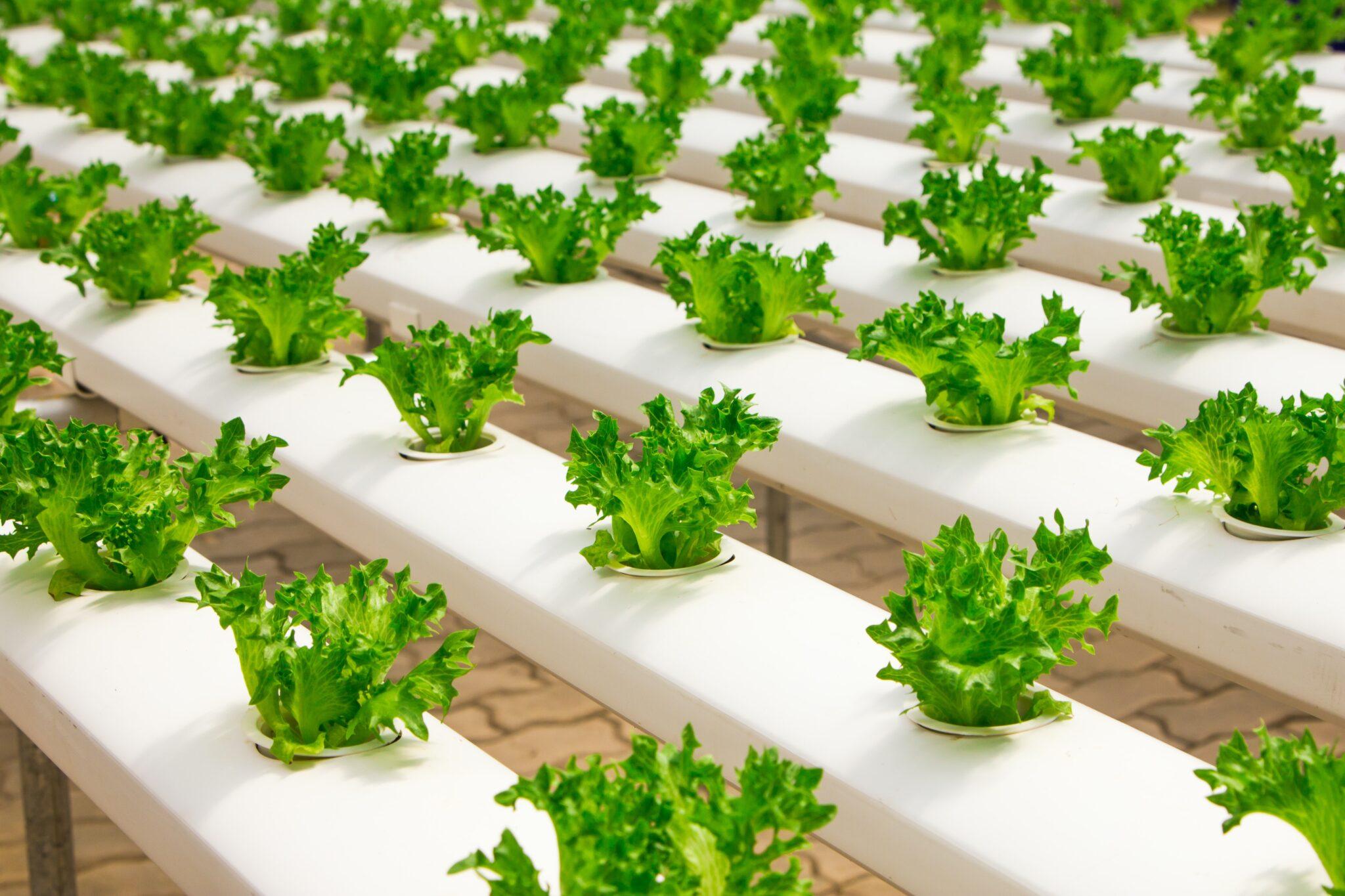
- 06 Apr 2024
Why is it in the News?
In the wake of evolving consumer preferences, India is at the forefront of an agricultural transformation, pivoting towards sustainable farming with an emphasis on health.
What is Hydroponics?
- Hydroponics is a method of growing plants without soil, utilizing nutrient-rich water as the primary source of essential minerals and elements.
- The technique involves the circulation of nutrient-enriched water through a network of pipes or channels, directly supplying the roots of plants with the necessary nourishment for their growth and development.
Key Features and Benefits:
- Soilless Cultivation: Hydroponics eliminates the need for soil by providing an alternative substrate or a soil-like medium, such as rock wool, perlite, or vermiculite, to support the plants' roots.
- Nutrient Control: This technique enables precise control over the nutrient composition, concentration, and pH levels in the water, ensuring optimal nutrient availability for plants.
- Water Efficiency: Hydroponics recirculates and reuses water, significantly reducing water consumption compared to traditional soil-based farming.
- Space Optimization: Due to the compact nature of hydroponic systems, they can be used in urban areas, greenhouses, and indoor facilities, maximizing yield per unit area.
- Year-round Cultivation: With controlled environmental conditions, hydroponics allows for continuous cultivation, regardless of seasonal changes or weather fluctuations.
- Hydroponics provides a sustainable, efficient, and adaptable approach to agriculture, with potential benefits in resource conservation, food security, and sustainable urban food production.
Hydroponics in India:
- According to a report by Datamintelligence, India’s hydroponic market is poised for a remarkable growth trajectory, with a projected Compound Annual Growth Rate (CAGR) of 13.53% by 2027, outpacing the global industry’s estimated growth of 6.8%.
- This surge underscores the vast potential of hydroponics in meeting the rising demand for sustainable food produce, particularly in metros and tier 1 cities where health-conscious consumers are willing to pay a premium for fresh, safe, and sustainably grown products.
- This transformative shift is not just a response to changing consumer preferences for fresh produce but also an adaptation to the geographical and environmental challenges that face traditional farming methods.
Suitable Regions for Hydroponic Farming:
- Hydroponic farming presents a viable solution in regions where traditional farming faces significant barriers:
- Areas with Limited Water Supply: Hydroponics drastically reduces water usage, making it ideal for drought-prone areas.
- Rocky Regions: In places where the terrain is unsuitable for soil-based agriculture, hydroponics offers a practical alternative.
- Low Soil Fertility Areas: Hydroponics bypasses the need for fertile soil, allowing cultivation in regions with poor soil quality.
- Demand-Driven Areas: Regions with a high demand for fresh products are perfect for hydroponic farms, catering to health-conscious consumers in urban and semi-urban locales
The Edge with Hydroponic Farming in India:
- Hydroponic farming’s ascendancy in India is attributed to several compelling benefits, underpinned by technological advancements that lower operational costs and facilitate scalability:
- Versatility in Location: It enables agriculture in environments traditionally deemed unsuitable, such as deserts or cold climates.
- Controlled Conditions: Farmers have precise control over nutrients, pH, and the growing environment, optimizing plant health and yield.
- Resource Efficiency: The recycling of water and nutrients significantly cuts down on input costs and environmental impact.
- Enhanced Growth Rates: Increased oxygen availability accelerates plant growth, leading to quicker harvest cycles.
- Pest and Disease Reduction: By eliminating soil, hydroponics reduces the risk of soil-borne diseases and pests.
- Higher Yields: The efficiency and controlled environment of hydroponic systems result in substantially higher crop yields.
- Labour and Maintenance Savings: The absence of weeding and traditional cultivation reduces labour requirements and costs.
- Improved Working Conditions: Elevating crops to a more accessible height improves ergonomics for farm workers, further reducing labour costs.
- No Need for Crop Rotation: Hydroponics eliminates the necessity for crop rotation, simplifying farm management.
- Reduced Transplant Shock: Plants grown hydroponically experience less stress when transplanted, enhancing survival rates.
Rakhigarhi
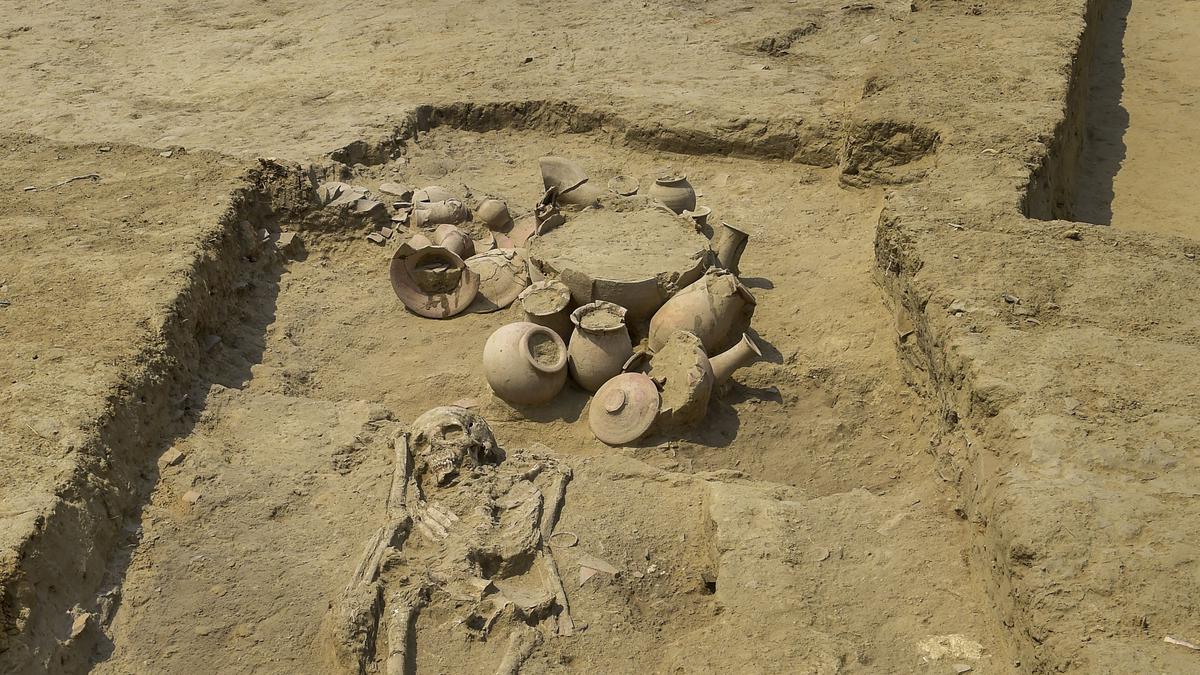
- 06 Apr 2024
Why is it in the News?
The NCERT has proposed updates to school textbooks, including adding findings from DNA analysis of skeletal remains at the Rakhigarhi archaeological site in Haryana and removing references to the Narmada Dam project's impact on tribals, leading to displacement and destitution.
About the Ancient Site of Rakhigarhi:
- The site of Rakhigarhi is one of the five known biggest townships of the Harappan civilization on the Indian subcontinent.
- The other four are:
- Harappa
- Mohenjodaro and Ganveriwala in Pakistan and
- Dholavira (Gujrat) in India
- Five interconnected mounds spread over a huge area from the Rakhigarhi's unique site.
- Two mounds, out of five, were thickly populated.
- This site was excavated by Shri Amarendra Nath of Archeological Survey of India.
- The archaeological excavations revealed a mature Harappan phase represented by a planned township having mud-brick as well as burnt-brick houses with proper drainage systems.
- The ceramic industry is represented by redware, which includes dish-on-stands, vases, jars, bowls, beakers, perforated jars, goblets, and hands.
- Animal sacrificial pits lined with mud brick and triangular and circular fire alters on the mud floor have also been excavated signifying the ritual system of Harappans.
- A cylindrical seal with five Harappan characters on one side and a symbol of an alligator on the other is an important find from this site.
- Other antiquities included blades; terracotta and shell bangles; beads of semiprecious stones, terracotta, shell, and copper objects; animal figurines, toy cart frame and wheel of terracotta; bone points; inscribed steatite seals and sealings.
- The excavations have yielded a few extended burials, which certainly belong to a very late stage, maybe the medieval times.
About Harappan Civilization:
- The Harappan civilization is believed to be one of the oldest world civilizations together with Egypt and Mesopotamia.
- It flourished around 2,500 BC, in the western part of South Asia, in contemporary Pakistan and Western India.
- The Harappan civilization developed along the mighty river, the Indus, and for that reason, it is also known as the Indus Valley Civilization.
- The Harappan civilization is identified as a Bronze-age civilization because many objects have been found that are made up of copper-based alloys.
- For example, the famous ‘dancing girl,’ a bronze figurine that provides an insight into the advances made in art and metallurgy, as well as the hairstyle and ornaments prevalent during the period.
- In the 1920s, the Archaeological Department of India carried out excavations in the Indus Valley wherein the ruins of the two old cities, viz. Mohenjodaro and Harappa were unearthed.
India Abstains from UNHRC Resolution on Gaza Ceasefire
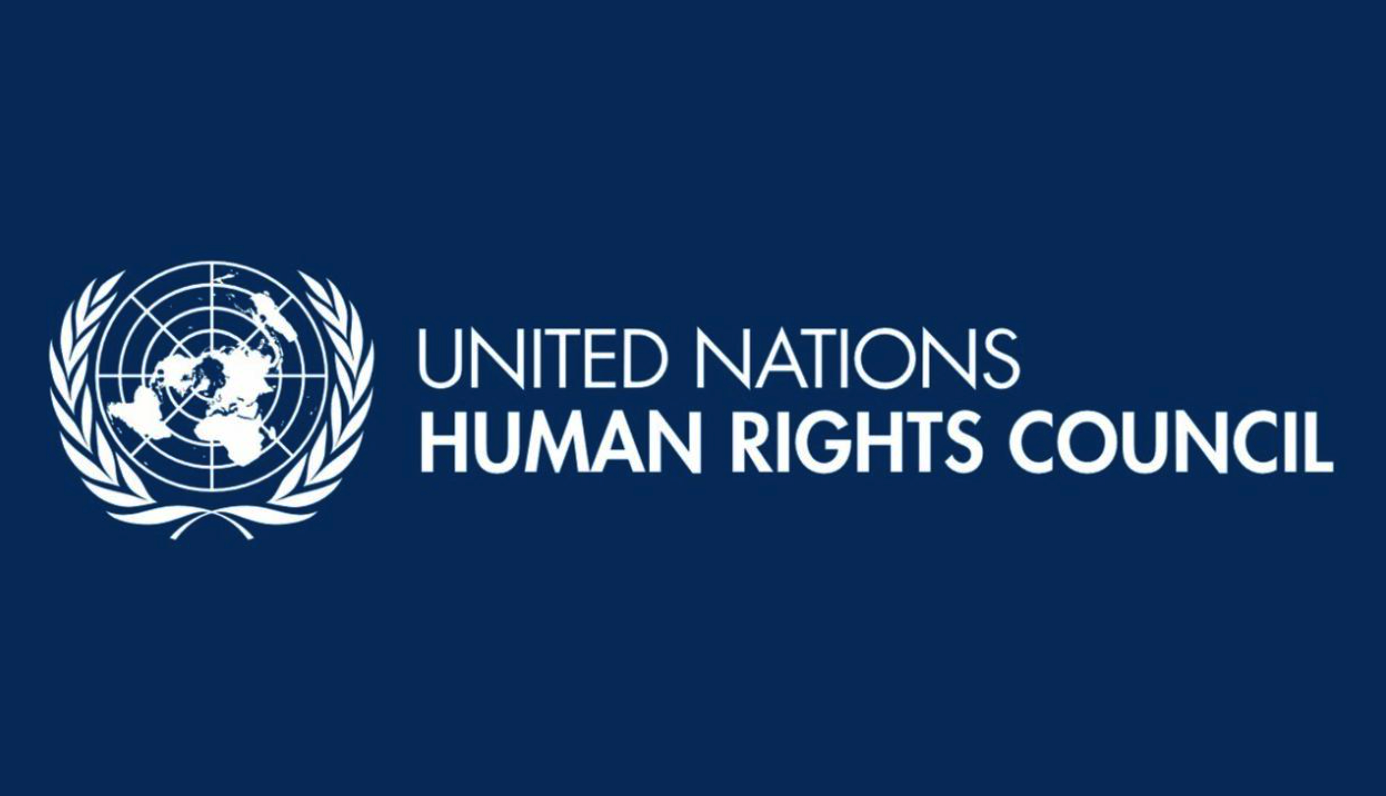
- 06 Apr 2024
Why is it in the News?
India recently abstained on a resolution at the Human Rights Council that called on Israel for an immediate ceasefire in Gaza.
India's Voting Pattern on Israel-Palestine Issues at the UNHRC:
- India's stance on the Israel-Palestine conflict has been reflected in its voting behavior at the United Nations Human Rights Council (UNHRC).
- While India has voted in favor of resolutions criticizing Israel for human rights violations, occupation of the Syrian Golan, and affirming Palestinian self-determination, it has also abstained from certain resolutions.
- In a significant development, India abstained from a resolution calling for an immediate ceasefire in Gaza and an arms embargo on Israel.
- This decision followed instances of violence, including the killing of aid workers and airstrikes.
- India's abstention is believed to be in line with its previous votes on resolutions involving "accountability."
- India's approach indicates its belief that both parties should be held accountable for their actions.
- As a result, it refrains from supporting resolutions that single out one side for condemnation.
- By taking a balanced stance, India aims to promote peace and stability in the region while advocating for the rights of all parties involved.
About the United Nations Human Rights Council (UNHRC):
- The United Nations Human Rights Council (UNHRC) is an inter-governmental body established by the United Nations General Assembly (UNGA) in 2006.
- Headquartered in Geneva, Switzerland, the council serves as a key platform for addressing human rights issues globally.
- The High Commissioner for Human Rights serves as the principal human rights official within the UN system.
- The council convenes three times annually to address human rights violations worldwide.
Membership:
- Comprising 47 member states, the council is responsible for promoting and safeguarding human rights across the globe.
- Member states are elected individually via secret ballot by a majority vote of the General Assembly.
- The election of members occurs within geographical groups to ensure equitable representation.
Tenure:
- Council members serve for a term of three years and are not eligible for immediate re-election after two consecutive terms.
The UNHRC's primary functions include:
- Promoting universal respect for human rights and fundamental freedoms.
- Addressing violations of human rights, including gross and systematic violations.
- Developing international human rights law and making recommendations to the UN General Assembly.
- Conducting investigations into alleged human rights abuses through special rapporteurs and working groups.
- Reviewing the human rights records of all UN member states through the Universal Periodic Review process.
3D Cosmic Map May Open Window To Dark Energy
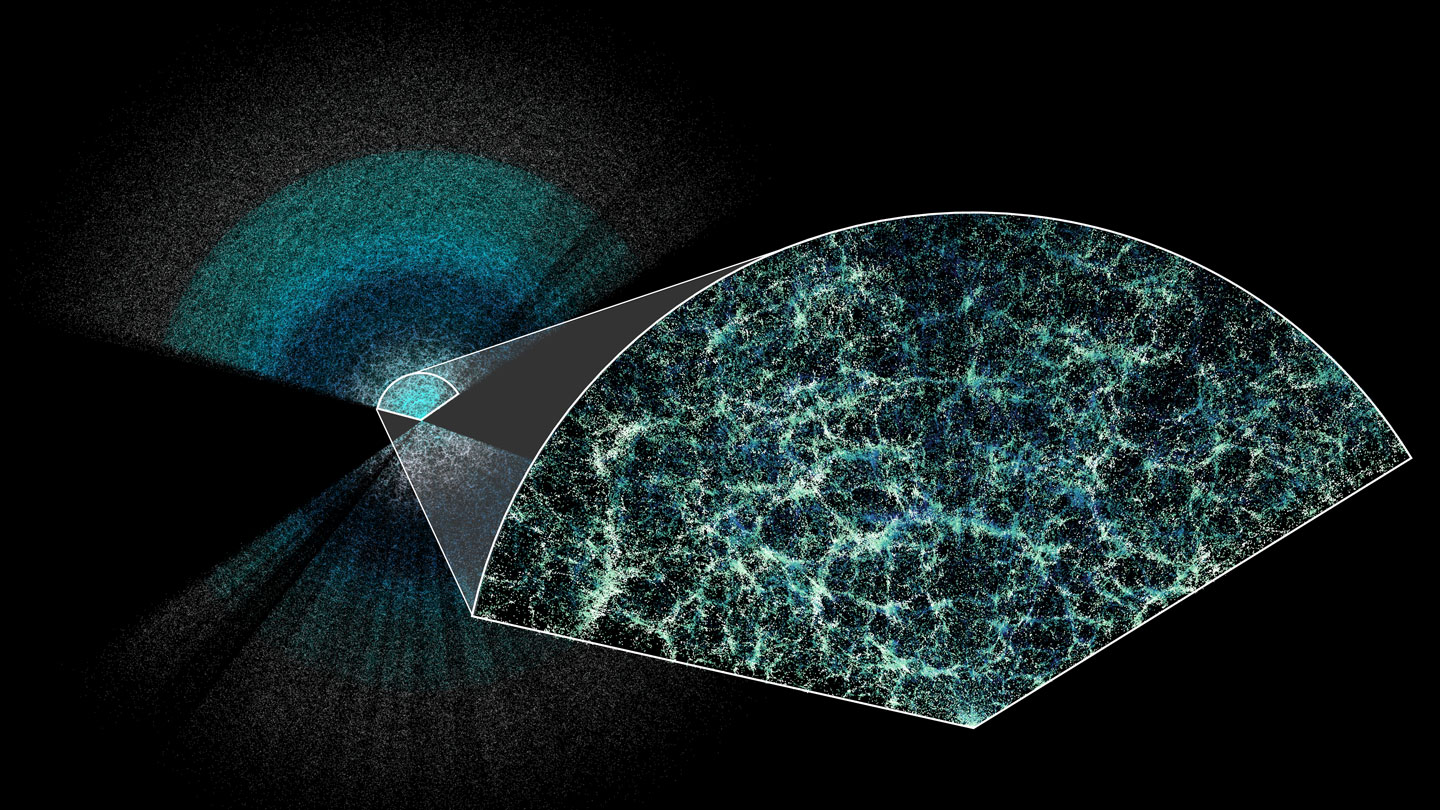
- 05 Apr 2024
Why is it in the News?
An international team of researchers has just released the most comprehensive “three-dimensional” map of the universe, which, scientists hope, could reveal some clues about dark energy, the mysterious force that is believed to be causing the universe to expand uncontrollably.
Context:
- An international team of researchers has unveiled an extensive 3D map of the universe, aiming to unlock secrets about dark energy, the enigmatic force thought to be driving the universe's rapid expansion.
- Led by Shadab Alam from the Tata Institute of Fundamental Research in Mumbai, the team collaborated on this groundbreaking project, utilizing the Dark Energy Spectroscopic Instrument (DESI), a specialized tool capable of simultaneously gathering light from 5,000 galaxies when attached to a telescope.
- The DESI collaboration has measured that the expansion rate of the universe was increasing by 68.5 km per second after every 3.26 million light-years of distance, a unit astronomers define as megaparsec.
About Dark Energy Spectroscopic Instrument (DESI):
- The Dark Energy Spectroscopic Instrument (DESI) is a remarkable tool designed to capture light from an impressive 5,000 galaxies simultaneously when attached to a telescope.
- This collaborative effort involves over 900 researchers from institutions worldwide, with the Tata Institute of Fundamental Research (TIFR) representing India's sole participating institution.
- DESI, stationed atop the Mayall 4-Meter Telescope in Arizona, United States, has enabled researchers to analyze light emissions from an astounding six million galaxies, some dating as far back as 11 billion years ago.
- This wealth of data has facilitated the creation of the most intricate map of the universe to date.
Dark Energy Vs Dark Matter:
- Dark energy and dark matter are two distinct yet mysterious components of the universe, with vastly different properties and effects on cosmic structures.
Nature and Composition:
- Dark Energy: Dark energy is a hypothetical form of energy that permeates all of space and is responsible for the accelerated expansion of the universe.
- It is often associated with a cosmological constant or Einstein's "cosmological antigravity."
- Dark energy is thought to exert a repulsive force that counteracts gravity on cosmic scales, driving galaxies away from each other at an accelerating rate.
- However, its precise nature remains one of the greatest mysteries in modern physics.
- It's important to note that dark energy does not matter; rather, it's an energy density inherent in space itself.
- Dark Matter: Dark matter is a form of matter that does not emit, absorb, or reflect electromagnetic radiation, making it invisible and detectable only through its gravitational effects.
- Unlike dark energy, dark matter exerts an attractive gravitational force, influencing the motion of galaxies and other cosmic structures.
- It interacts with ordinary matter and with itself only through gravity and possibly through weak nuclear force, but not through electromagnetic forces like photons.
- Various astrophysical observations strongly suggest the existence of dark matter, but its precise composition and particle nature are still unknown.
Effects on the Universe:
- Dark Energy: The primary effect of dark energy is to drive the accelerated expansion of the universe.
- This expansion results in the increasing separation between galaxies over time. Dark energy is thought to dominate the energy density of the universe, comprising approximately 68% of the total mass-energy content.
- Dark Matter: Dark matter plays a crucial role in the formation and structure of galaxies and larger cosmic structures.
- Its gravitational influence binds galaxies together and provides the framework for the large-scale cosmic web.
- While dark matter does not emit or interact with light, its presence can be inferred from gravitational lensing, galaxy rotation curves, and the large-scale distribution of matter in the universe.
- Dark matter is estimated to constitute about 27% of the total mass-energy content of the universe.
Detectability:
- Dark Energy: Dark energy is challenging to detect directly because it does not interact with electromagnetic radiation.
- Its existence is inferred from the observational data related to the accelerating expansion of the universe, such as measurements of distant supernovae and the cosmic microwave background radiation.
- Dark Matter: Dark matter is also challenging to detect directly due to its non-interaction with light.
- However, its gravitational effects on visible matter and radiation allow astronomers to indirectly infer its presence.
- Various experimental efforts, such as those involving particle accelerators and underground detectors, aim to detect dark matter particles directly, though success has not yet been achieved.
Agni-Prime Ballistic Missile
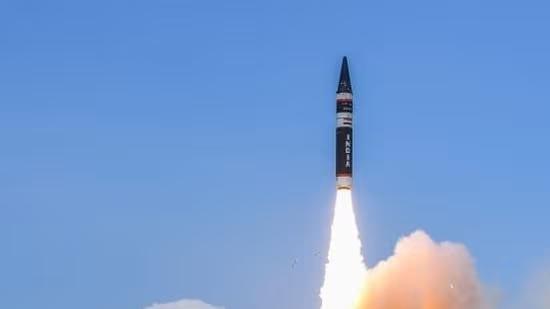
- 05 Apr 2024
Why is it in the News?
India has successfully flight-tested the new generation ballistic missile Agni-Prime from the APJ Abdul Kalam Island off the coast of Odisha.
About Agni-Prime Missile:
- Agni-P or Agni-Prime is a new generation nuclear-capable medium-range ballistic missile (MRBM) developed by the DRDO that incorporates technological advances from Agni-IV and Agni-V and is considered a successor for Agni-I and Agni-II missiles in the operational service of the SFC.
- Agni-Prime, with a strike range of 1,000 to 2,000 km, has significant upgrades, which include composite motor casing, maneuverable reentry vehicle (MaRV), improved propellants, and navigation and guidance systems.
- It is a two-stage, surface-to-surface, road-mobile, and solid-fueled missile that is transported by a truck and launched via a canister.
- It is a ballistic missile with a dual redundant navigation and guidance system.
Features:
- Although Agni-Prime looks similar to Agni-III, the weight is reduced by half.
- Agni-P will replace older generation missiles such as Prithvi-II (350 km), Agni-II (2,000 km), Agni-III (3,000 km), and Agni-4 (4,000 km) ballistic missiles.
- Agni-Prime incorporates upgrades such as propulsion systems, composite rocket motor casings, and advanced navigation and guidance systems.
- Along with Agni-V, Agni-P will provide India with stronger deterrence against countries such as China and Pakistan.
- While Agni-V brings all of China within its strike range, Agni-P seems to have been developed to counter Pakistan's forces.
- Agni-P is developed to achieve maximum maneuverability against missile defense systems and higher accuracy for precision strikes.
What is a Ballistic Missile and why is it named so?
- A Ballistic missile follows a ballistic flight path - which comprises three phases of flight.
- In the first phase or the boost phase, the solid-fuel rocket engine propels the missile upwards and it has to rapidly gain velocity and altitude, by knifing through the densest parts of the earth's atmosphere.
- The second and unpowered phase of flight happens in the upper reaches of the earth's atmosphere or in space, where the missile travels along its pre-determined path, but without the power of its engines.
- It is known as the coast phase or mid-course phase and during this time, it travels along a horizontal path.
- During the coasting, the missile is either in space or the upper atmosphere, where it faces minimal resistance or drag.
- In the third and final phase or the terminal phase, the missile descends and gets back into the earth's atmosphere and flies towards its target, while being guided by its on-board systems.
Sannati: Ancient Buddhist Site
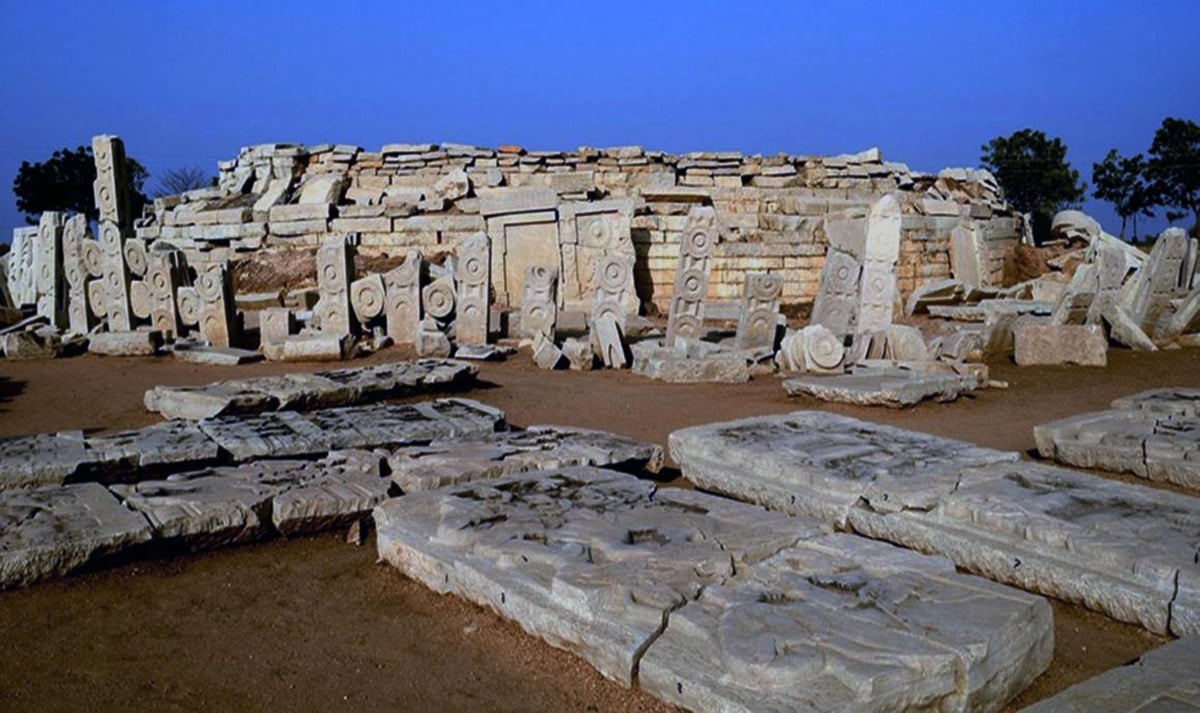
- 05 Apr 2024
Why is it in the News?
Left neglected for many years after it came to light through the ASI excavations in the 1990s, the ancient Buddhist site of Sannati on the bank of the Bhima River got a restoration project in 2022.
About Ancient Sannati Buddhist site:
- This ancient Sannati Buddhist site, situated alongside the Bhima River near Kanaganahalli in Karnataka's Kalaburagi district, offers a rich historical and cultural experience.
- Notably, it also boasts the Chandrala Parameshwari Temple, a popular attraction among tourists.
Key discoveries at this site include evidence of development across three distinct phases:
- Maurya, Early Satavahana, and Later Satavahana periods, span from the 3rd Century B.C. to the 3rd Century A.D.
- The Ranamandala area of Sannati presents a unique chronological timeline from prehistoric to early historic eras.
- Among the remarkable findings is an inscription in the Prakrit language, inscribed using Brahmi script.
- Noteworthy is the recovery of a significant stone sculpture portraying Mauryan Emperor Ashoka, surrounded by his queens and attendants, with the inscription "Raya Asoko" in Brahmi script, leaving no doubt about the identity of the depicted figure.
- The excavation also yielded around 60 dome slabs featuring sculptural depictions of Jataka stories, significant events in the life of Buddha, portraits of Shatavahana monarchs, and unique representations of Buddhist missionaries dispatched by Ashoka to various regions.
- Moreover, the ancient Nagavi Ghatikasthana, often dubbed as the Takshashila of the South, lies approximately 40 km from Sannati.
- Functioning as a prominent educational center akin to a modern-day university during the Rashtrakuta and Kalyana Chalukya dynasties from the 10th to 12th Centuries, it held great historical significance.
Microplastics
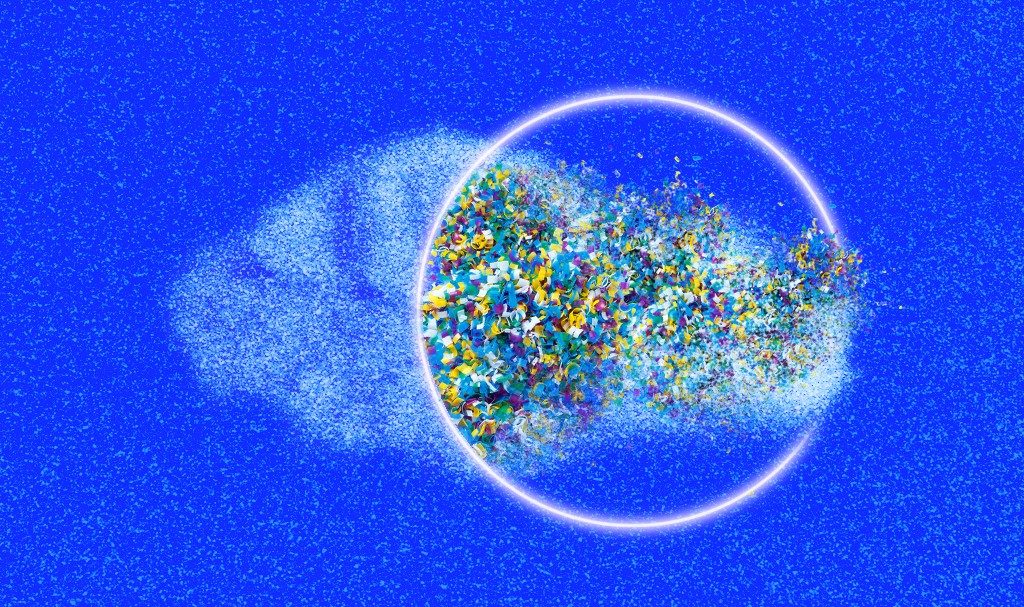
- 05 Apr 2024
Why is it in the News?
Recently, scientists have created plant-based plastic that doesn't create cancer-causing microplastics because 97% of it breaks down in the environment.
What is Microplastics?
- Microplastics are small plastic particles measuring less than 5 millimeters in diameter.
- These particles, which are distinguished from larger "macroplastics" like bottles and bags, stem from both commercial product development and the breakdown of larger plastics.
- Microplastics are commonly found in a variety of products, including cosmetics, synthetic clothing, plastic bags, and bottles.
- Unfortunately, many of these products can easily enter the environment as waste.
- Composed of carbon and hydrogen atoms linked in polymer chains, microplastics often contain additional chemicals such as phthalates, polybrominated diphenyl ethers (PBDEs), and tetrabromobisphenol A (TBBPA).
- There are two categories of microplastics: primary and secondary.
- Primary microplastics are intentionally designed for commercial use, including in cosmetics and microfibers shed from textiles like clothing and fishing nets.
- Secondary microplastics, on the other hand, result from larger plastic items breaking down due to environmental factors such as sunlight and ocean waves.
- Understanding the sources and types of microplastics is crucial for addressing their impact on the environment, wildlife, and human health, ultimately promoting more sustainable production and waste management practices.
Environmental Impacts of Microplastics:
- Microplastics pose significant environmental concerns due to their resistance to breaking down into harmless compounds, much like larger plastic items.
- Consequently, both primary and secondary microplastics accumulate and endure once introduced into the environment.
- In marine ecosystems, microplastics have the potential to amalgamate with harmful chemicals before being consumed by marine organisms.
- Despite efforts, conventional water treatment facilities struggle to completely eliminate microplastics from water sources.
- Additionally, microplastics contribute to air pollution as they are present in dust and airborne fibrous particles, further highlighting their pervasive impact on various environmental systems.
Project Akashteer

- 05 Apr 2024
Why is it in the News?
The Army has started the induction of control and reporting systems under ‘Project Akashdeer’ to bolster its air defense capabilities.
What is 'Project Akashteer'?
- 'Project Akashteer' is a cutting-edge initiative designed to automate air defense control and reporting processes by digitizing them.
- Developed by Bharat Electronics Limited (BEL) as part of the 'Atmanirbhar Bharat' initiative, this project is poised to significantly enhance the operational efficiency and integration of the Army's air defense mechanisms.
- By integrating radar and communication systems at all levels into a unified network, 'Akashteer' aims to deliver an unprecedented level of situational awareness and control.
- This will enable swift engagement of hostile targets, significantly reduce the risk of fratricide, and ensure the safety of friendly aircraft in contested airspace.
- A noteworthy aspect of 'Akashteer' is its emphasis on mobility and resilience.
- The system's control centers, designed to be vehicle-based and mobile, can maintain operational capabilities even in challenging communication environments.
- The system will facilitate the achievement of complete automation of air defense operations and significantly enhance the air defense posture of India.
- The induction of the systems has commenced in the Indian Army's Corps of Army Air Defense, marking a significant move towards enhancing India's defense capabilities and technology absorption.
How it will help India's air defense system?
- The 'Akashteer Command and Control Systems will significantly enhance India's air defense capabilities in several ways:
- Efficiency and Integration: By digitizing Air Defence Control and Reporting processes, 'Akashteer' will usher in unprecedented levels of efficiency and integration.
- This will enable the Indian Army to respond swiftly to hostile threats while minimizing the risk of friendly fire incidents.
- Situational Awareness: 'Akashteer' integrates radar and communication systems into a unified network, providing the Indian Army with unprecedented situational awareness.
- This will enable them to detect and engage hostile targets more effectively, ensuring the safety of friendly aircraft in contested airspace.
- Mobility and Resilience: The system's vehicle-based and mobile Control Centers are designed to maintain operational capabilities even in challenging communication environments.
- This ensures that the Indian Army can operate effectively in diverse terrain and under adverse conditions.
- Automation: Overall, the deployment of 'Akashteer' signifies a leap towards complete automation of air defense operations.
- This will enhance the Indian Army's ability to defend its airspace, ensuring a safer and more secure future for the country.
- The Indian Army has declared 2024 as the 'Year of Technology Absorption' and is undertaking various initiatives to induct niche technology and systems into its inventory.
- The induction of 'Akashteer' control centers is one of the major milestones achieved by the Army on its path to transformation to meet the current and futuristic requirements of complex air defense operations.
Ring of Fire
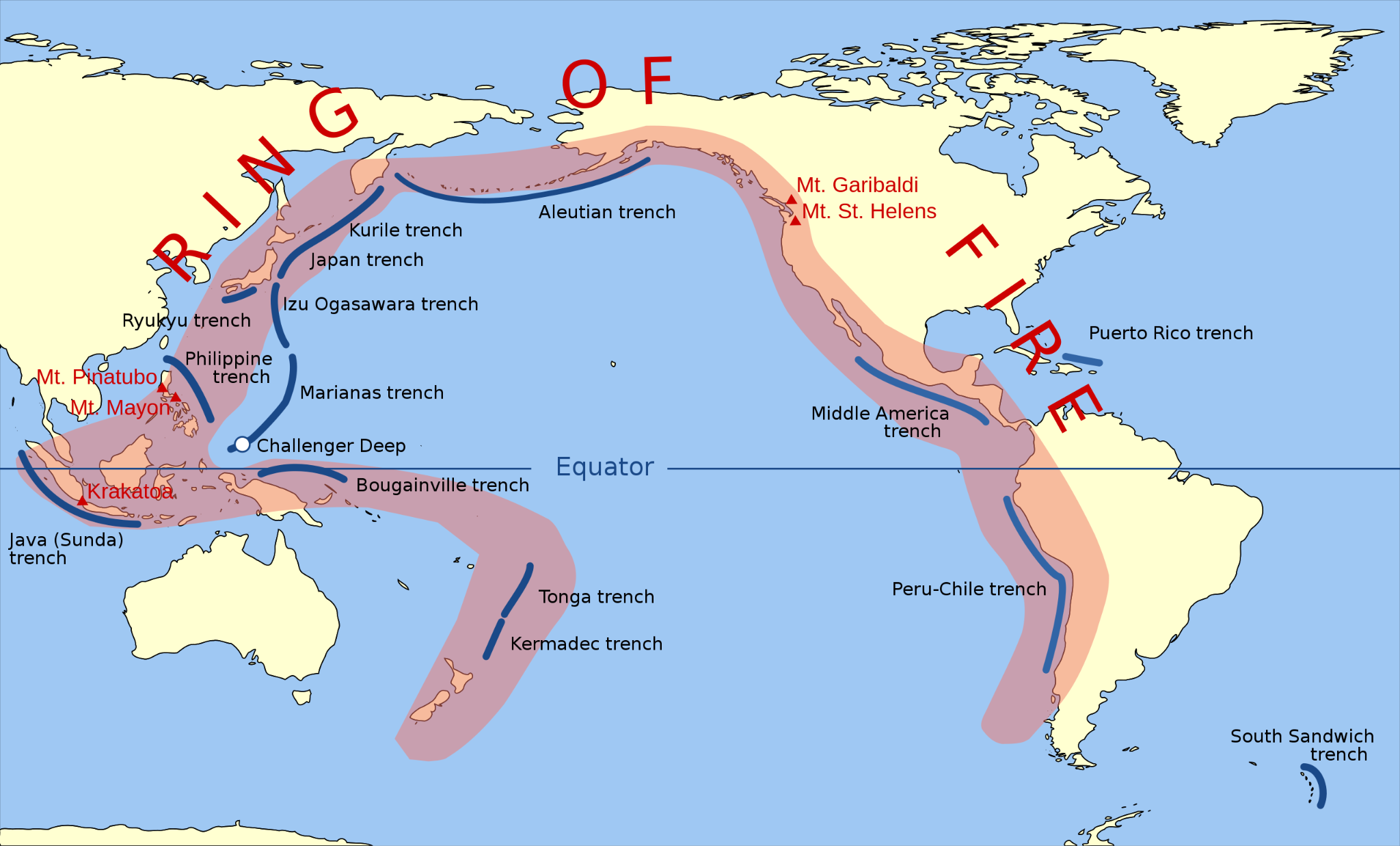
- 04 Apr 2024
Why is it in the News?
Nine people died and more than 1,000 were injured in Taiwan after the island was hit by its biggest earthquake in at least 25 years on Wednesday (April 4) morning.
What is the Ring of Fire?
- The Ring of Fire is essentially a string of hundreds of volcanoes and earthquake sites that run along the Pacific Ocean.
- It is a semicircle or horseshoe in shape and stretches nearly 40,250 kilometers.
- The Ring of Fire traces the meeting points of numerous tectonic plates, including the Eurasian, North American, Juan de Fuca, Cocos, Caribbean, Nazca, Antarctic, Indian, Australian, Philippine, and other smaller plates, which all encircle the large Pacific Plate, according to a report by National Geographic.
- It runs through 15 more countries including the USA, Indonesia, Mexico, Japan, Canada, Guatemala, Russia, Chile, Peru, and the Philippines.
Why is the Ring of Fire Vulnerable to Earthquakes?
- The Ring of Fire witnesses so many earthquakes due to constant sliding past, colliding into or moving above or below each other of the tectonic plates.
- As the edges of these plates are quite rough, they get stuck with one another while the rest of the plate keeps moving.
- An earthquake occurs when the plate has moved far enough and the edges unstick on one of the faults.
Why are There so Many Volcanoes in the Ring of Fire?
- The existence of volcanoes in the Ring of Fire is also due to the movement of tectonic plates.
- Many of the volcanoes have been formed through a process known as subduction.
- It takes place when two plates collide with each other and the heavier plate is shoved under each other, creating a deep trench.
- “When a ‘downgoing’ oceanic plate [like the Pacific Plate] is shoved into a hotter mantle plate, it heats, volatile elements mix, and this produces the magma.
- The magma then rises through the overlying plate and spurts out at the surface,” which leads to the formation of volcanoes, according to a report by DW.
- Most of the subduction zones on the planet are located in the Ring of Fire and that’s why it hosts a large number of volcanoes.
Why is Taiwan so Exposed to Earthquakes?
- Taiwan lies along the Pacific “Ring of Fire,” the line of seismic faults encircling the Pacific Ocean where most of the world’s earthquakes occur.
- The area is particularly vulnerable to temblors due to the tension accumulated from the interactions of two tectonic plates, the Philippine Sea Plate and the Eurasian Plate, which may lead to sudden releases in the form of earthquakes.
- The region’s mountainous landscape can magnify the ground shaking, leading to landslides.
myCGHS App
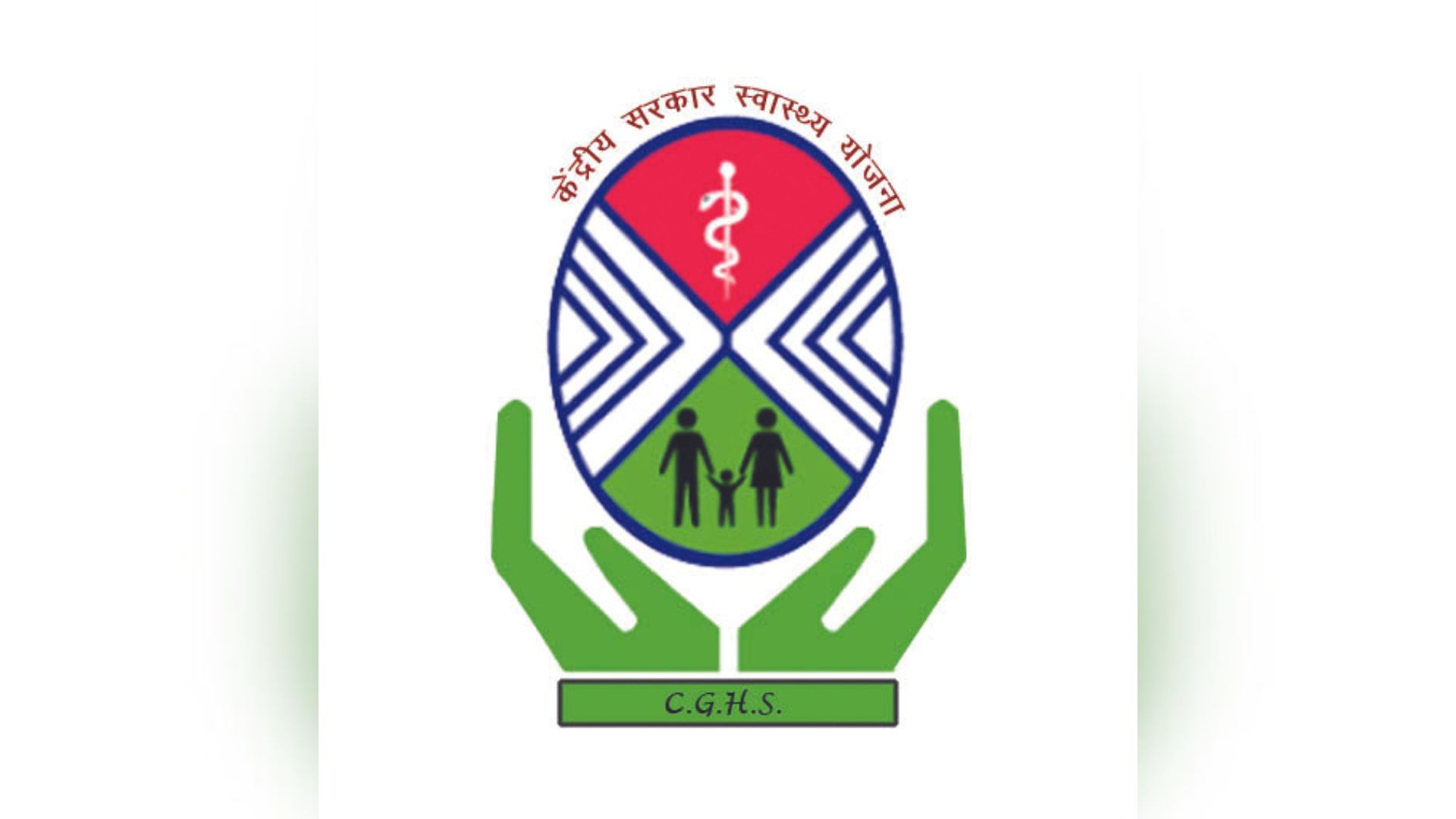
- 04 Apr 2024
Why is it in the News?
Recently, the government has launched the 'myCGHS' app for iOS to provide Central Government Health Scheme beneficiaries access to electronic health records, information, and resources.
About myCGHS app:
- The Union Health Ministry launched the myCGHS app for iOS (Apple Users) to provide easy access for the Central Government Health Scheme (CGHS) beneficiaries to their Electronic Health Records, information, and other resources.
- The myCGHS iOS app is developed by the technical teams of the National Informatics Centre (NIC) Himachal Pradesh and the NIC Health Team.
- It is a convenient mobile application offering features aimed at enhancing information and accessibility for CGHS beneficiaries.
- The app is said to offer a range of services including:
- Online appointment booking and cancellation
- Downloading CGHS card and index card
- Accessing lab reports from CGHS labs
- Checking medicine history
- Monitoring medical reimbursement claim status
- Accessing referral details
- Locating nearby wellness centers
- Staying updated with news and highlights, and
- Finding nearby impaneled hospitals, labs, and dental units.
- Additionally, users can access the contact details of wellness centers and offices conveniently.
- To ensure data security, the app also features security measures such as two-factor authentication and mPIN function to be able to access the app once they are logged in.
- Users on the Apple ecosystem can find the app on the App Store and download it free of charge.
- The myCGHS app has been available for Android users since February 2022.
Key Highlights of the Central Government Health Scheme (CGHS):
- CGHS provides healthcare services to registered employees and pensioners of the Central Government of India.
- Enrolled members receive reimbursement and cashless healthcare facilities through this scheme.
- It encompasses healthcare services from various systems of medicine including Allopathy, Homeopathy, Ayurveda, and Unani.
- CGHS beneficiaries have the flexibility to undergo treatment at any impaneled private hospital of their preference.
Ahobilam Temple
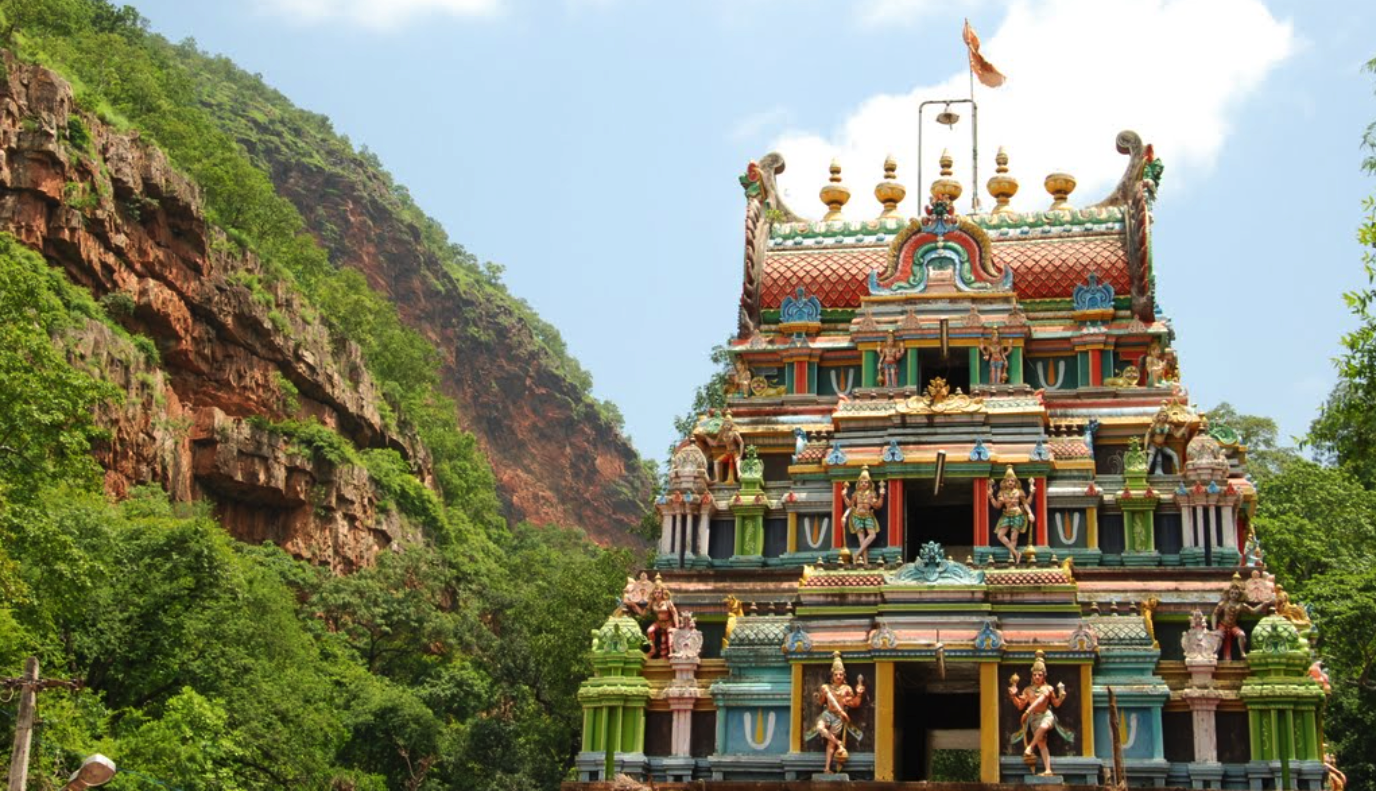
- 04 Apr 2024
Why is it in the News?
The Forest Department and Sri Lakshmi Narasimha Swamy Devasthanam (SLNSD) at Ahobilam have imposed certain restrictions on visitors arriving at the shrine, which is composed of nine different temples, situated within the Nallamala forest.
About Ahobilam Temple:
- The Ahobilam is a famous temple situated on the Nallamalai ranges in the state of Andhra Pradesh.
- The Nallamalai ranges south of river Krishna, down to Tirupati, and are called `Sesha Parvatha`.
- Sesha is the name of the king of serpents.
- The hood of the sesha is at Tirupati, the tail is at Srisailam, and the middle is situated at Ahobilam.
- Nallamalais at the tail are called Sringiri
- In the middle are called Vedagiri and
- Garudagiri referred to as the hood
- The shrine of the Ahobilam temple is situated on the top of the first range and is referred to as Upper Ahobilam and down below is called Lower Ahobilam.
- A huge temple surrounded by several buildings can be seen at the Upper Ahobilam.
- The main shrine or the "sacro sanctum" at Upper Ahobilam was carved out of a big egg-like rock with mandapams.
- There is a tank here, which supplies water to the residents of the Upper Ahobliam temple.
- There is a Lower Ahobilam in the below with a big temple and enclosures, It was built according to the South Indian style (Dravidian architecture).
Significance:
- Ahobilam is traditionally regarded as the place where Vishnu in the form of Narasimha killed the Rakshasa Hiranyakashipu to save his devotee Prahlada.
- The legend says that Narasimha emerged from a rock pillar to slay the Rakshasa.
- The moment is represented in several murtis in the various temples.
- Also, Garuda prayed for a vision of Narasimha in the form of Avathara, to fulfill his wish, and settled in nine forms across the hills in Ahobilam.
About Nallamala Forest:
- Nallamala Forest is among South India's largest expanses of untouched woodland, besides the Western Ghats.
Location:
- Situated across five districts in Andhra Pradesh and Telangana, it sprawls across the Nallamala Hills, a segment of the Eastern Ghats, south of the Krishna River.
- Part of the forest falls within the Nagarjunsagar-Srisailam Tiger Reserve, the nation's largest tiger reserve, boasting a significant tiger population.
Climate:
- Experiencing warm to hot conditions year-round, with scorching summers and mostly cool, dry winters.
- The majority of rainfall occurs during the southwest monsoon.
Vegetation:
- Tropical dry deciduous.
Flora:
- Nallamala Forest is rich in endemic species like Andrographis nallamalayana, Eriolaena lushingtonii, Crotalaria madurensis var, Dicliptera beddomei, and premna hamitonii.
Fauna:
- Home to over 700 animal species, including tigers, leopards, black bucks, wild hogs, peacocks, pangolins, Indian Pythons, King Cobras, and numerous rare bird species.
Glacial Lake Outburst Floods
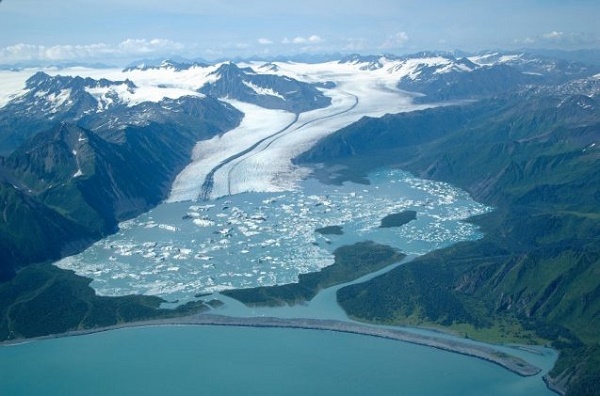
- 04 Apr 2024
Why is it in the News?
Recently, the Uttarakhand government has constituted two teams of experts to evaluate the risk posed by five potentially hazardous glacial lakes in the region.
What is Glacial Lake Outburst Flood (GLOF)?
- A GLOF denotes the sudden release of meltwater from a moraine or ice-dammed glacial lake, typically due to dam failure.
- These events pose significant hazards, often resulting in catastrophic flooding downstream, leading to substantial loss of life and property.
- GLOF can be triggered by several factors, including earthquakes, heavy rains, and avalanches.
Key Features of GLOFs:
-
- Sudden water releases.
- Rapid occurrences lasting hours to days.
- Large downstream river discharges.
Threats Posed by GLOFs in the Himalayan Regions:
- Climate Change Impact: Climate change-induced glacier melt accelerates the formation or expansion of glacial lakes, heightening the risk of GLOFs.
- Vulnerability of Moraines and Dams: Glacial lakes situated behind unstable moraines or natural dams are prone to breaching, as evidenced by events like the Kedarnath floods in 2013.
- Immediate Flood Risks: Abrupt water releases trigger massive floods, causing extensive damage to homes, and infrastructure, and triggering landslides and sedimentation.
Mitigation Strategies for GLOFs:
- Risk Assessment and Zonation: Identify high-risk areas and implement necessary mitigation measures, including mapping and modeling, as outlined in the 'Guidelines for Preparation of Disaster Management Plans for Glacial Lake Outburst Floods (GLOF)'.
- Early Warning Systems: Establish monitoring networks with sensors to detect changes in glacial lakes and provide timely warnings to vulnerable communities.
- Utilization of Technology: Leverage remote sensing and GIS-based tools for monitoring glacial lakes and surrounding areas.
- Regulation of Construction: Implement construction codes to regulate development in high-risk zones, exemplified by the 'Guidelines for the Construction of Earthquake Resistant Buildings' developed by the NDMA.
- Capacity Building Initiatives: Enhance skills and resources through training programs conducted by institutions like the National Centre for Disaster Management, in collaboration with the private sector and NGOs.
- Infrastructure Development: Invest in infrastructure to redirect potential floodwaters away from communities and critical infrastructure.
The Marine Products Export Development Authority (MPEDA)
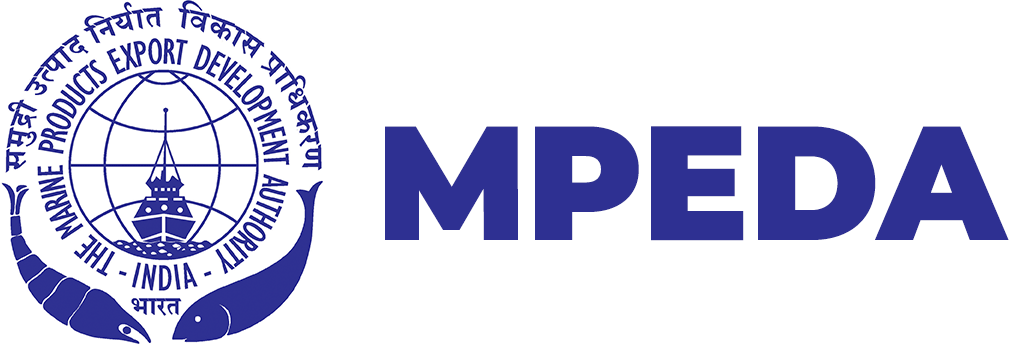
- 04 Apr 2024
Why is it in the News?
Officials recently emphasized that India's shrimp export value chain is certified by the Marine Products Export Development Authority (MPEDA), ensuring that abusive conditions are not tolerated at shrimp farms.
About the Marine Products Export Development Authority (MPEDA):
- The Marine Products Export Development Authority (MPEDA) was set up by an act of Parliament in 1972.
- The erstwhile Marine Products Export Promotion Council established by the Government of India in September 1961 was converged into MPEDA on 24th August 1972.
- MPEDA is given the mandate to promote the marine products industry with special reference to exports from the country.
- It is the nodal agency for the holistic development of the seafood industry in India to realize its full export potential as a nodal agency.
- Based on the recommendations of MPEDA, the Government of India notified new standards for fishing vessels, storage premises, processing plants, and conveyances.
- MPEDA’s focus is mainly on Market Promotion, Capture Fisheries, Culture Fisheries, Processing Infrastructure & Value addition, Quality Control, Research and Development.
- It is envisaged that this organization would take all actions to develop and augment the resources required for promoting the exports of “all varieties of fishery products known commercially as shrimp, prawn, lobster, crab, fish, shellfish, other aquatic animals or plants or part thereof and any other products which the authority may, by notification in the Gazette of India, declare to be marine products for (the) Act”.
- The Act empowers MPEDA to regulate exports of marine products and take all measures required for ensuring sustained, quality seafood exports from the country.
- MPEDA is given the authority to prescribe for itself any matters that the future might require for protecting and augmenting the seafood exports from the country.
- It is also empowered to inspect marine products, their raw materials, fixing standards, specifications, and training as well as take all necessary steps for marketing the seafood overseas.
Major Functions of MPEDA:
-
- Infrastructure registration for seafood export trade.
- Trade information collection and dissemination.
- Promotion of Indian marine products overseas.
- Assistance for infrastructure development and modernized processing.
- Aquaculture promotion for export production augmentation.
- Deep-sea fishing project promotion and equipment upgrade.
- Market promotion and publicity activities.
- Inspection of marine products and raw materials, setting standards.
- Training for fishermen, fish processing workers, and aquaculture farmers.
- Research and development through RGCA.
- Extension activities through NETFISH and NaCSA.
- Matters related to protecting and increasing seafood exports.
- Headquarters of MPEDA is located in Kochi, Kerala.
- Nodal Ministry: Ministry of Commerce and Industry.
- It has Trade Promotion offices in New Delhi, Tokyo, and New York.
South Korea’s ‘Artificial Sun’ KSTAR Reaches 100 Million Degrees Celsius
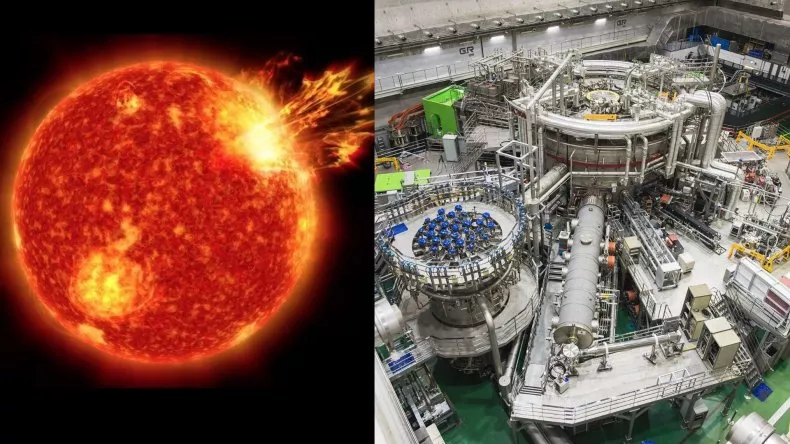
- 03 Apr 2024
Why is it in the News?
South Korean scientists have set a new world record for the length of time they sustained temperatures of 100 million degrees Celsius.
Key Highlights:
- The Korea Superconducting Tokamak Advanced Research (KSTAR) fusion reactor reached temperatures of 100 million Celsius for 48 seconds.
- Scientists hope to harness this unlimited energy.
- It is also significant that the KSTAR maintained the high confinement mode (H-mode) for over 100 seconds.
- H-mode is a stable plasma state.
- The earlier record of achieving this temperature was for 30 seconds which took place in 2021.
- The scientists at the Korea Institute of Fusion Energy (KFE) said they managed to extend the time by tweaking the process.
- They also used tungsten instead of carbon in the 'diverters', which extract heat and impurities produced by the fusion reaction.
- The International Thermonuclear Experimental Reactor in southern France has the world's biggest tokamak and what the scientists in South Korea achieve will help French scientists.
What is an Artificial Sun?
- An artificial sun typically refers to a device or facility designed to replicate some aspects of the nuclear fusion processes that occur naturally in stars like the Sun.
- These facilities aim to generate and sustain controlled nuclear fusion reactions, usually through the use of high temperatures, pressures, and magnetic fields.
- Scientists generally use a donut-shaped reactor called a tokamak in which hydrogen variants are heated to extraordinarily high temperatures to create a plasma.
- High temperatures and high-density plasmas are vital for the future of nuclear fusion reactors.
- This is called artificial Sun because it replicates the reaction of fusion taking place there and unleashes a massive amount of heat energy.
- The goal is to harness fusion energy as a potential future source of clean and abundant energy for various applications, including electricity generation.
What is Nuclear Fusion?
- Fusion is the reaction that makes the sun and other stars shine.
- It involves fusing hydrogen and other light elements to release massive power that experts in the field hope to harness for unlimited, zero-carbon electricity.
- In this reaction, two atoms of hydrogen or helium come together and fuse to unleash huge amounts of energy.
Wadge Bank
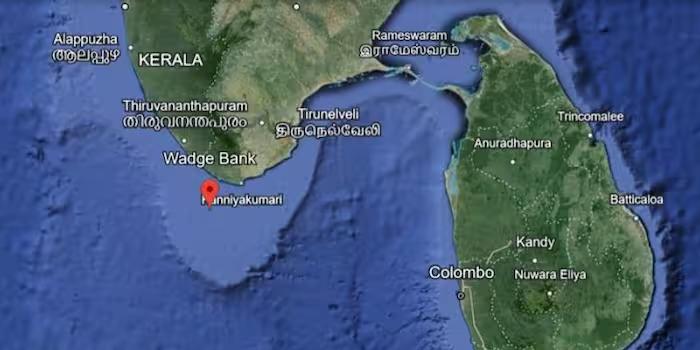
- 03 Apr 2024
Why is it in the News?
While India 'gave away' rights to Katchatheevu, in a subsequent pact, it secured sovereign rights in Wadge Bank near Kanyakumari.
What is Wadge Bank?
- Wadge Bank is a 10,000 square kilometer submarine plateau, of the sea south of Kanyakumari that is rich in biodiversity and considered India’s richest fishery resource.
- Wadge Bank, located near Cape Comorin, is home to more than 60 species of ornamental fish and other oceanic animals.
- It is a productive coastal area where three seas meet and tides create a rich fishing ground from May to October.
- Moreover, it is an invaluable treasure that indigenous people and communities depend on for food and resources, and is important to their culture.
How did India get control of the Wadge Bank?
- Wadge Bank came to India as part of the second of the two accords signed with Sri Lanka in the 1970s.
- Following the 1974 agreement under which Prime Minister Indira Gandhi ‘gave away’ Katchatheevu island to Sri Lanka, New Delhi, and Colombo signed another pact in 1976 under which the former bought Wadge Bank.
- On March 23, 1976, India and Sri Lanka signed the agreement on the maritime boundary in the Gulf of Mannar and the Bay of Bengal as part of which it was agreed that the Wadge Bank “lies within the exclusive economic zone of India, and India shall have sovereign rights over the area and its resources”.
- In the general description of Wadge Bank annexed with the treaty shared with the United Nations, it is described as “outside the territorial waters of India”.
- The Wadge Bank near Kanyakumari is rich in biodiversity and considered India’s richest fishery resource.
- As per the 1976 pact, Sri Lankan fishermen can’t engage in activities here.
- ??But at the request of Sri Lanka and as a gesture of goodwill, India agreed that Lankan fishing vessels licensed by the Government of India could fish in Wadge Bank for three years from its establishment as an exclusive economic zone of India with the stipulation that only six such vessels can fish and their catch cannot exceed 2,000 tonnes in a year.
- And, again at the request of the Sri Lankan government, India agreed to provide Colombo with 2,000 tonnes of fish of the quality, species, and at the price mutually agreed by the two sides for five years after the Lankans stopped fishing at the Wadge Bank.
BIMSTEC Charter
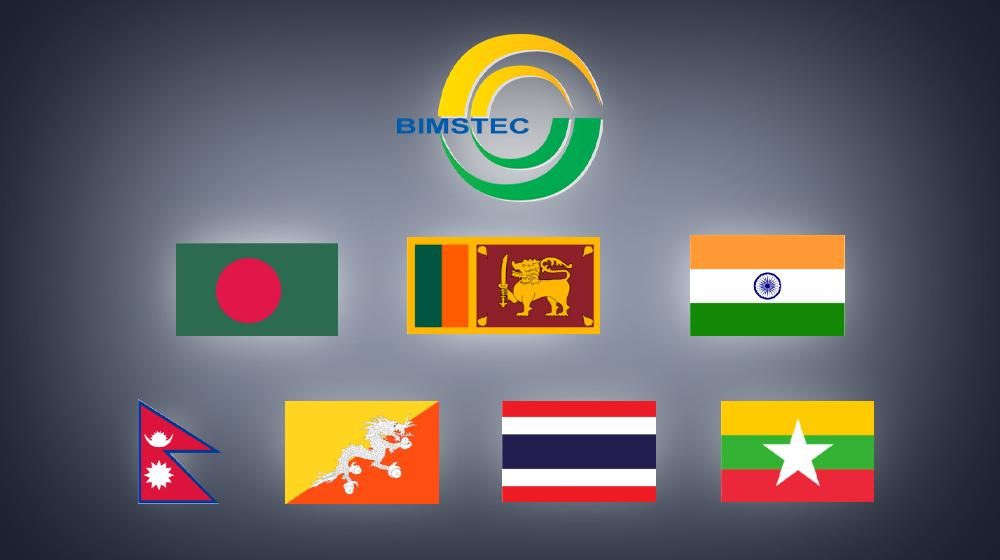
- 03 Apr 2024
Why is it in the News?
Recently, a significant majority in Nepal's Lower House backed the proposal to endorse the BIMSTEC Charter.
About the BIMSTEC Charter:
- The BIMSTEC Charter, officially signed and adopted during the Fifth BIMSTEC Summit in Colombo, Sri Lanka in 2022, serves as a cornerstone legal and institutional framework for the Bay of Bengal Initiative for Multi-Sectoral Technical and Economic Cooperation (BIMSTEC).
- This charter aims to establish a structured environment conducive to rapid economic development by delineating specific cooperation projects within the agreed areas of collaboration, along with potential expansions into additional areas as mutually agreed upon by Member States.
- Furthermore, the charter reaffirms the enduring commitment to the foundational principles and objectives of BIMSTEC, as articulated in the Bangkok Declaration of 1997.
The Importance of the BIMSTEC Charter:
- By officially adopting the BIMSTEC Charter, the organization transforms into a structured institution comprising member states situated along the Bay of Bengal, thereby formalizing their cooperation and dependence on this vital maritime region.
- The Charter grants BIMSTEC the authority to establish external relations with non-member states, developmental partners, as well as regional, UN, and international organizations, facilitating broader collaboration and engagement.
- Moreover, it underscores the imperative for a fair, just, equitable, and transparent global order while reiterating the commitment to multilateralism, with the United Nations at its core, and advocating for a rule-based international trading system.
About the Bay of Bengal Initiative for Multi-Sectoral Technical and Economic Cooperation (BIMSTEC):
- The Bay of Bengal Initiative for Multi-Sectoral Technical and Economic Cooperation (BIMSTEC) is a regional organization comprising seven Member States lying in the littoral and adjacent areas of the Bay of Bengal constituting a contiguous regional unity.
- This sub-regional organization came into being on 6 June 1997 through the Bangkok Declaration.
- It constitutes seven Member States:
- Five derive from South Asia, including Bangladesh, Bhutan, India, Nepal, and Sri Lanka, and
- Two from Southeast Asia, including Myanmar and Thailand.
- Initially, the economic bloc was formed with four Member States with the acronym ‘BIST-EC’ (Bangladesh, India, Sri Lanka, and Thailand Economic Cooperation).
- Following the inclusion of Myanmar on 22 December 1997 during a special Ministerial Meeting in Bangkok, the Group was renamed ‘BIMST-EC’ (Bangladesh, India, Myanmar, Sri Lanka and Thailand Economic Cooperation).
- With the admission of Nepal and Bhutan at the 6th Ministerial Meeting (February 2004, Thailand), the name of the grouping was changed to ‘Bay of Bengal Initiative for Multi-Sectoral Technical and Economic Cooperation’ (BIMSTEC).
Swell waves
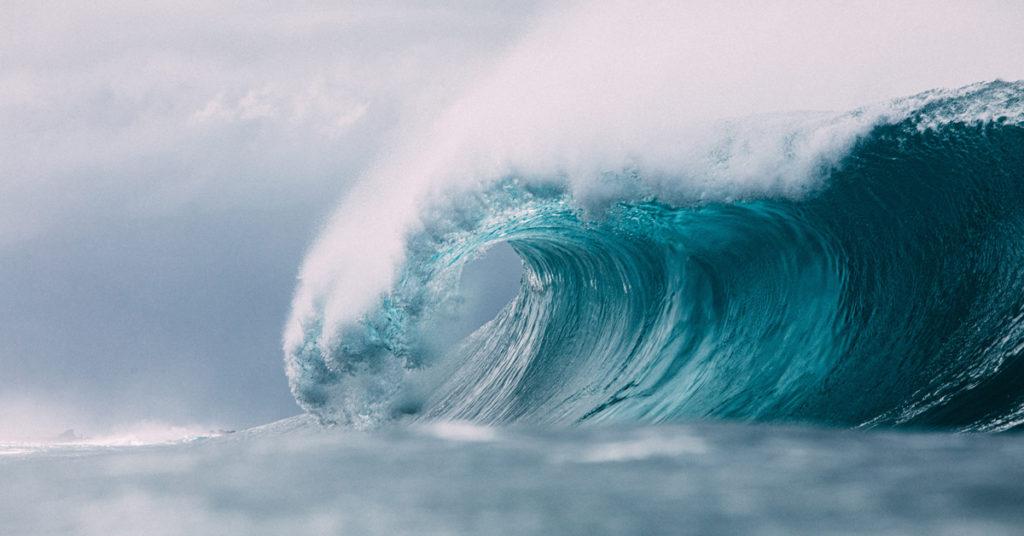
- 03 Apr 2024
Why is it in the News?
As a result of the low-pressure area formed over the Atlantic Ocean moving into the Indian Ocean, high swell waves in the range of 11 m were formed.
What Are Swell Waves?
- Swell waves are characterized by the formation of long wavelength waves on the surface of the seas, propagating along the interface between water and air.
- They are commonly known as surface gravity waves due to their nature.
Origin:
- Unlike waves generated by immediate local winds, swell waves originate from distant weather systems.
- These waves are the result of prolonged wind action over a significant area of water, known as fetch.
- Even after the wind subsides or shifts, or the waves move away from the wind source, swell waves persist and continue to propagate.
Influencing Factors:
- The speed of the wind, the extent of ocean surface area affected by consistent wind direction (fetch), and the duration of time the winds persist over the same part of the ocean are all contributing factors to the formation and behavior of swell waves.
Characteristics of Swell Waves:
- Limited Frequency and Direction Range: Swell waves exhibit a narrower range of frequencies and directions compared to wind-generated waves occurring locally.
- Defined Shape and Direction: Swell waves assume a more distinct shape and direction, displaying less randomness than waves generated by local winds.
- Directional Orientation: Unlike wind waves, swell waves are characterized by the direction from which they originate rather than where they are headed.
- Wavelength Variation: Swell waves typically possess long wavelengths, although this can vary depending on the size of the water body.
- Generally, their wavelengths seldom exceed 150 meters.
- However, on occasion, particularly severe storms may produce swells with wavelengths surpassing 700 meters.
What are the Differences Between a Normal Wave and Swell Waves?
Normal Waves:
- Random Nature: Normal waves encompass any spontaneous disturbance occurring in the sea, exhibiting a wide array of forms, types, shapes, heights, periods, directions, and speeds.
- Varied Characteristics: Waves can manifest in diverse forms and attributes, subject to the prevailing conditions in the ocean.
Swell Waves:
- Deep-water Linear Waves: Swell waves are a distinct category of deep-water, linear waves originating or emerging from a chaotic wave system during external weather events due to wave dispersion.
- Defined Characteristics: Swells travel in a specific direction as uniform, high-speed, long waves that maintain consistency over time, with speeds determined by their wavelengths and periods.
- Extensive Travel: Swell waves traverse significantly greater distances compared to typical wave packets, exhibiting remarkable endurance.
- Independence from Local Weather: Swell waves remain unaffected by local weather systems, retaining their characteristics even in the presence of nearby weather phenomena.
OptiDrop Platform
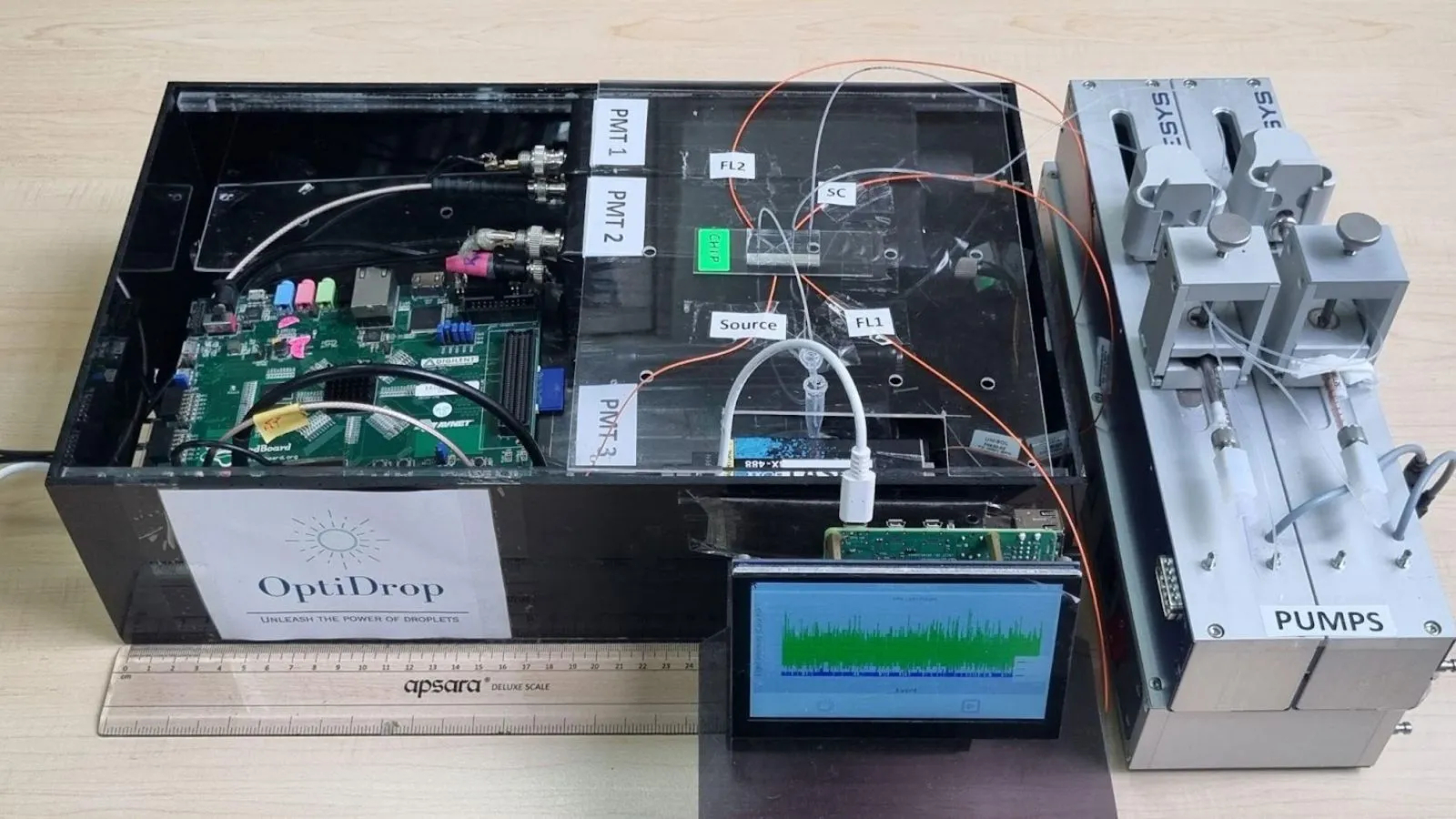
- 03 Apr 2024
Why is it in the News?
The Centre for Cellular and Molecular Platforms (C-CAMP) in Bengaluru recently announced that it has developed a new platform that makes it easier and cheaper to study single cells.
About the OptiDrop Platform:
- The OptiDrop platform is an innovative microfluidic chip-based technology that simplifies and reduces the cost of single-cell analysis.
- Developed by the Centre for Cellular and Molecular Platforms (C-CAMP) in Bengaluru, India, OptiDrop enables precise and cost-effective analysis of single cells encapsulated in droplets.
- The platform boasts unique features, including live data visualization, a smaller data footprint, and a 'closed' system design that prevents external contamination.
- OptiDrop has potential applications in diagnostics, therapeutics, agriculture, and animal health, making it a versatile tool for various research areas.
Applications:
- This cutting-edge technology holds vast potential across diverse fields including diagnostics, therapeutics, agriculture, and animal health. Its versatility enables:
- Precise examination of individual cells during drug screening processes.
- Environment control for monitoring and addressing water contamination.
- Identification and sorting of CAR-T cells in immuno-oncotherapeutics.
- Selection of CRISPR-modified single cells.
- Identifying high-efficiency clones in single-cell genomics paves the way for advancements in personalized medicine and beyond.
- This platform is a testament to the potential of combining microfluidic technologies with advanced optical sensing techniques, paving the way for more efficient and cost-effective single-cell analysis.
What is the Centre for Cellular and Molecular Platforms (C-CAMP)?
- The Centre for Cellular and Molecular Platforms, or C-CAMP, was conceptualized by the Department of Biotechnology, Govt. of India in 2009 as an enabler or catalyst of cutting-edge research and innovation in the life sciences.
- C-CAMP has established itself as a major platform technology base, industry-oriented innovation hub, and incubator unit for life science research.
- With state-of-the-art technology platforms, a rich academic environment, and networks of business and industry-related resources, it encourages researchers and entrepreneurs to develop scientific tools and solutions for socially relevant problems.
- It is an institution with the core mandate of enabling cutting-edge life science research and innovation.
Havana Syndrome
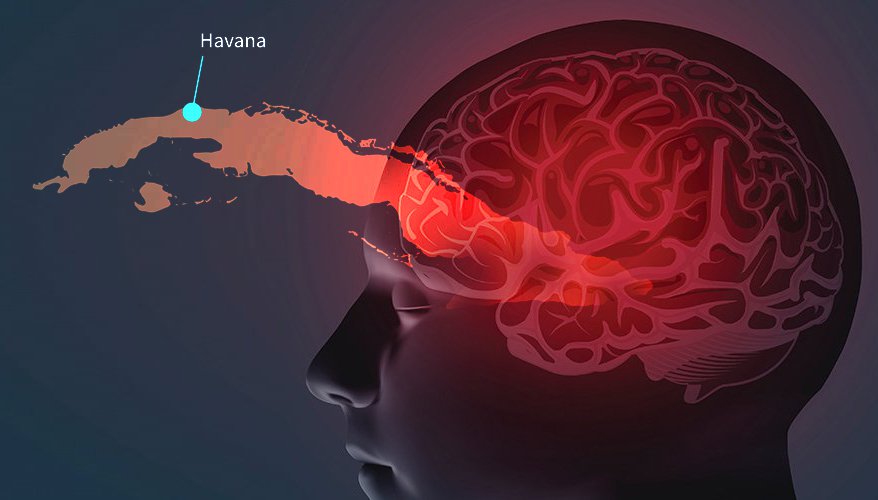
- 02 Apr 2024
Why is it in the News?
The mysterious so-called Havana Syndrome symptoms experienced by U.S. diplomats in recent years have been linked to a Russian intelligence unit, according to a joint media investigation released on April 1.
What is Havana Syndrome?
- Havana Syndrome is a term used to describe a set of mental health symptoms experienced by US intelligence and embassy officials in various countries.
- The symptoms include hearing sounds without any external noise, nausea, vertigo, headaches, memory loss, and balance issues.
- The syndrome first came to light in 2016 when US officials stationed at the country's embassy in Havana, Cuba, began reporting these symptoms.
- The exact cause of the syndrome remains unknown, but it has been linked to high-frequency microwave transmissions.
- The syndrome was named after the city where it was first reported, Havana, and has since been reported by US government officials and military personnel serving at various stations across the world.
- The symptoms of Havana Syndrome are diverse and range from pain and ringing in the ears to cognitive dysfunction.
- Some individuals have also reported hearing loss, memory loss, and nausea.
- The exact cause of these symptoms remains unknown, with theories ranging from sonic weapons to mass psychogenic illness.
- Despite ongoing investigations, there is currently no known cure for Havana Syndrome.
- Research continues into the potential causes and treatments for this perplexing condition.
Affected Regions:
- As per reports from US media outlets, over the past few years, officials have documented more than 130 instances worldwide, including in Moscow, Russia, Poland, Georgia, Taiwan, Colombia, Kyrgyzstan, Uzbekistan, and Austria, among others, with similar accusations emerging in early 2018 from US diplomats stationed in China.
- Status in India: The first such incident was reported in 2021 when a US intelligence officer accompanying CIA director William Burns to New Delhi exhibited symptoms of Havana Syndrome.
Recent Investigation Findings and Russia's Response:
- A year-long investigation revealed evidence suggesting that unexplained anomalous health incidents, commonly known as Havana Syndrome, may be linked to the use of directed energy weapons wielded by members of Russia's GRU Unit 29155, responsible for foreign operations and implicated in various international incidents, including the 2018 attempted poisoning of defector Sergei Skripal in Britain.
- Moscow has dismissed the allegations as "groundless," asserting the absence of convincing evidence, deeming the accusations baseless and unfounded.
What are Microwave Weapons?
- Microwave weapons, a type of directed energy weapon, utilize high-frequency electromagnetic radiation to generate heat in the water within a target's skin, resulting in pain and discomfort.
- Several nations are believed to have developed such weapons for use against both humans and electronic systems.
- China unveiled its "microwave weapon," the Poly WB-1, at an air show in 2014, while the United States has also designed a prototype called the "Active Denial System."
- The existence of these weapons has raised concerns regarding their potential misuse, and further research is necessary to understand their long-term effects and implications on human health and security.
Bridge Fuel
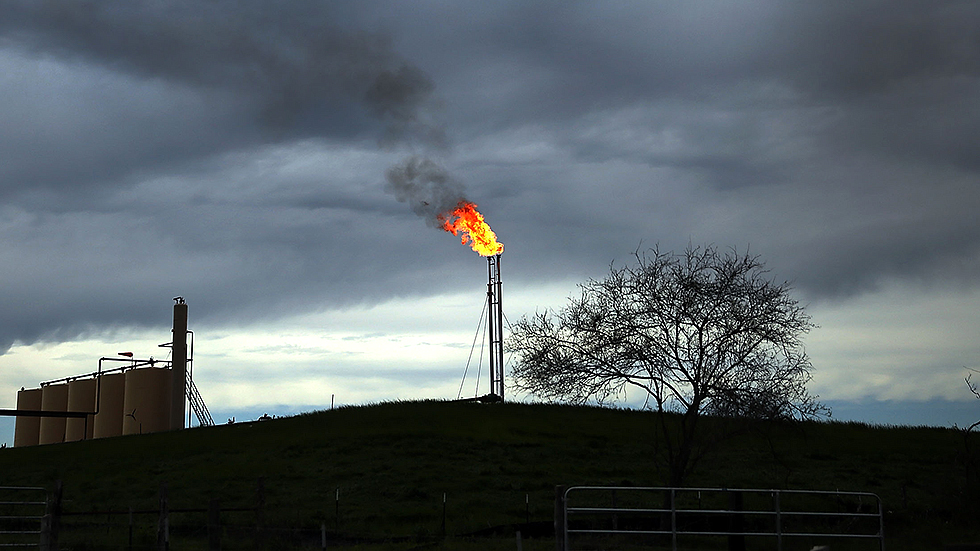
- 02 Apr 2024
Why is it in the News?
Natural gas has been called a ‘bridge fuel’ for countries looking to transition away from coal and oil dependency, and as they pursue a pathway towards renewables and electrification.
What is Bridge Fuel?
- Bridge fuel is a widely recognized term for fuels that aim to meet society's energy needs while minimizing environmental impacts during the transition to a clean, renewable energy economy.
- The primary objective of bridge fuels is to replace current fossil-fuel-dependent energy sources and pave the way for a greenhouse gas emission-free future.
- Natural gas is often considered a bridge fuel due to its lower greenhouse gas emissions during combustion compared to other fossil fuels.
- However, an ideal bridge fuel should also contribute to national energy independence and reduce pollution-related costs.
- Bridge fuels play a crucial role in balancing current energy demands with the long-term goal of achieving a sustainable, renewable energy landscape.
What is Natural Gas and How is it Formed?
- Natural gas, a non-renewable fossil fuel, is a mixture of hydrocarbon-rich gases.
- This colorless, odorless gas consists primarily of methane (70-90%), with smaller amounts of ethane and propane.
- Possible impurities include carbon dioxide, hydrogen sulfide, and nitrogen.
- Natural gas formation dates back millions to hundreds of millions of years ago when layers of organic matter (such as plants, animals, and diatoms) accumulated on land and ocean floors.
- Over time, these layers were buried under sediment and rock. Intense pressure and heat transformed this carbon and hydrogen-rich material into coal, oil, and natural gas.
- Today, natural gas reserves are found deep within the Earth's crust, often alongside other hydrocarbon deposits like coal and crude oil.
- The extraction, processing, and utilization of natural gas play a critical role in meeting global energy demands while transitioning towards cleaner, renewable energy sources.
Applications of Natural Gas:
- Natural gas undergoes processing and conversion into cleaner fuels for various applications.
- During processing, several valuable by-products like propane, ethane, butane, carbon dioxide, and nitrogen are extracted for further use.
Key uses of natural gas include:
- Generating electricity and heat, serving as a primary energy source for power plants.
- In compressed form (CNG), it fuels vehicles, providing a cleaner alternative to traditional gasoline or diesel.
- Powering boilers and air conditioning systems for residential, commercial, and industrial purposes.
- Manufacturing fertilizers, particularly ammonia, support the agricultural sector.
- As a cleaner fossil fuel, natural gas has a lower environmental impact than coal, emitting 50% less CO2.
- This makes it a critical component in the global shift towards more sustainable and eco-friendly energy solutions.
Leap Second

- 02 Apr 2024
Why is it in the News?
Glaciers are melting so fast that we may need to delay adding that 'negative leap second' to keep clocks aligned with Earth's rotation.
What Is a Leap Second?
- Leap seconds serve as a tool to synchronize global timekeeping with the Earth's gradually slowing rotation due to factors such as the melting and refreezing of ice caps.
- Introduced in the early 1970s, leap seconds are added periodically to Coordinated Universal Time (UTC) to align it with the Earth's actual rotation time.
- UTC is derived from the combined output of over 300 highly precise Atomic clocks worldwide, which offer accuracy within 1 second over millions of years.
- In contrast, Astronomical Time (UT1) corresponds to the Earth's rotation and determines day length.
- The primary reason for leap second additions is the irregularity of Earth's rotation, influenced by various factors like the moon's gravitational forces, causing ocean tides.
- This creates a gradual desynchronization between UTC and UT1. When the discrepancy between UTC and UT1 nears 0.9 seconds, a leap second is added to UTC, ensuring global timekeeping remains aligned with the Earth's rotation.
- Since its introduction, 27 leap seconds have been added to UTC, typically on June 30 or December 31.
- The leap second system continues to serve as an essential mechanism for maintaining synchronization between atomic timekeeping and the Earth's rotation.
What is Negative Leap Second?
- A negative leap second is a proposed time adjustment involving the subtraction of one second from our clocks to synchronize them with Earth's rotation.
- Unlike positive leap seconds, which are added to account for slower rotation, a negative leap second would address the Earth spinning faster than usual.
- So far, no negative leap second has been implemented since Earth's rotation has generally been slow in recent decades.
- However, as Earth's rotation has recently accelerated, timekeepers are considering using negative leap seconds for the first time.
- The International Earth Rotation and Reference Systems Service (IERS) closely monitors the Earth's rotation and determines when to add or subtract leap seconds.
- A decision to implement a negative leap second would serve as a corrective measure, ensuring our timekeeping systems remain aligned with the planet's rotation.
- While negative leap seconds have yet to be utilized, they offer a potential solution to the challenge posed by variations in Earth's rotational speed, ensuring the ongoing synchronization of our timekeeping methods with the planet's natural rhythms.
Presence of Ozone on Jupiter's Moon Callisto
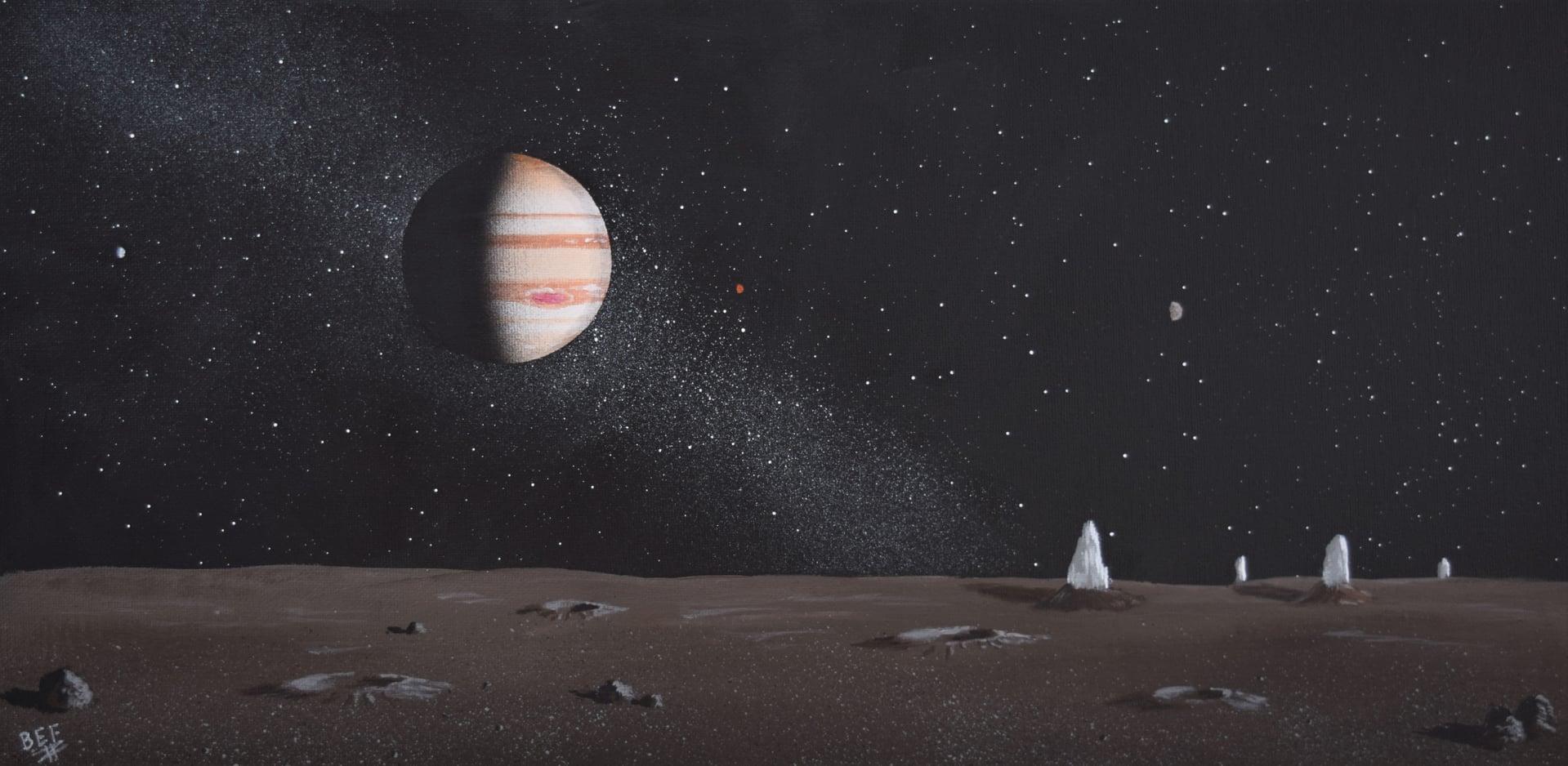
- 02 Apr 2024
Why is it in the News?
An international team of scientists, including from India, has discovered strong evidence indicating the presence of ozone on Jupiter’s moon Callisto, shedding light on the complex chemical processes taking place on icy celestial bodies in the Solar System.
Study on the Formation of Ozone in Callisto's Icy Environment:
- A recent study examined the chemical evolution of sulfur dioxide (SO2)-rich astrochemical ice found on Callisto's surface when exposed to ultraviolet (UV) radiation.
- The investigation revealed a unique signature indicating the formation of ozone, which could have implications for the potential habitability of the Jovian moon.
- Callisto is Jupiter's second-largest moon and the third-largest moon in our solar system.
- It has a relatively stable surface, which could play a vital role in preserving subsurface oceans or potential habitats beneath its icy crust.
- The study analyzed UV absorption spectra data from ice samples containing SO2, a primary component of Callisto's surface ice, and observed the generation of ozone under UV irradiation.
- Ozone formation on Callisto could have implications for the moon's astrobiological potential, as ozone can protect the surface from harmful radiation.
- Further research is needed to better understand the implications of this discovery on Callisto's habitability and the potential for future exploration missions.
Callisto's Distinctive Environment:
- Following Saturn, Jupiter boasts the second-highest number of moons in the Solar System, with Callisto ranking among its largest moons and holding the position of the third-largest moon overall, after Ganymede and Titan.
- Comprised predominantly of water ice, rocky elements, sulfur dioxide, and traces of organic compounds, Callisto presents a compelling potential for harboring life beyond Earth within the Solar System.
- The moon's extensively cratered surface bears witness to a lengthy history of impacts from asteroids and comets.
Importance of the Research:
- The identification of ozone on Callisto hints at the existence of oxygen, a crucial component essential for the development of intricate molecules vital for life, including amino acids, thus prompting inquiries into the moon's potential for sustaining life.
- This finding also has implications for other icy moons within our Solar System, offering insights that could broaden our comprehension of habitable environments beyond Earth.
Significance of Ozone:
- Consisting of three oxygen atoms bonded together, the ozone molecule plays a pivotal role in shielding life on Earth.
- Situated in the lower region of the Earth's stratosphere, approximately 15-35 kilometers above the surface, the ozone layer acts as a protective barrier.
- Without this layer, ultraviolet radiation would intensify, posing significant threats to various species and disrupting ecosystems.
- Ultraviolet-B and ultraviolet-C, with wavelengths ranging from 290 to 320 nanometers and 100 to 280 nanometers respectively, can cause DNA damage, and mutations, and elevate the risk of skin cancer and cataracts in humans.
- Furthermore, ultraviolet light can impede plant growth and adversely affect diverse organisms.
Voter Verifiable Paper Audit Trail (VVPAT)

- 02 Apr 2024
Why is it in the News?
The Congress has hailed as an “important first step” the Supreme Court’s notice to the Election Commission and the Centre on a plea seeking a complete count of VVPAT slips and said the matter should be decided before the Lok Sabha polls commence.
What is the Voter Verifiable Paper Audit Trail (VVPAT)?
- The Voter Verifiable Paper Audit Trail, or VVPAT system, was first introduced in 2014 for the first time during the 2014 Lok Sabha Elections.
- The ECI conducted pilot tests of VVPAT systems in a few constituencies in 2011, and after successful trials, VVPAT was gradually deployed across all polling stations in subsequent elections.
- It is connected to Electronic Voting Machines (EVM) and enables voters to confirm that their votes were cast as intended.
- The concept of VVPAT was to enhance the credibility and transparency of EVMs.
What are VVPAT Slips?
- VVPAT slips are an integral part of the EVMs used in elections.
- It provides a physical paper trail for voters to verify that their vote has been correctly recorded by the EVM.
- It ensures transparency and accountability in the electoral process by allowing voters to verify their vote before casting it finally.
- The VVPAT produces a paper slip that permits the voter to confirm the accuracy of their vote on the EVM.
- This slip displays the name and symbol of the party chosen by the voter.
- Additionally, the machine features a transparent window through which the voter can observe the printed slip.
- Subsequently, the slip is securely deposited into a sealed compartment within the machine.
- However, in the event of a dispute, this sealed box can be opened for further examination.
Controversies Surrounding VVPAT:
- Despite its intended purpose of enhancing transparency, VVPAT has been subject to several controversies over the years.
- Some critics have raised concerns about the reliability of VVPAT systems, citing instances of malfunctioning printers, paper jams, and discrepancies between electronic and paper records.
- The Opposition parties within the INDIA bloc have been advocating for the full counting of VVPATs, to bolster public trust in the EVMs, which itself has been subjected to intense scrutiny recently.
- Their concern has mostly stemmed from allegations of delay in the printing and displaying of VVPAT slips for every vote, which they claim can significantly increase the time required for vote counting.
Supreme Court’s intervention in VVPATs:
- In April 2019, the SC asked the poll panel to increase the number of EVMs that undergo VVPAT physical verification from one to five per assembly segment in a parliamentary constituency.
- In the month of May the same year, the Supreme Court dismissed a writ petition seeking 100 percent counting of VVPAT in the 2019 Lok Sabha elections.
- Earlier in the same month, the Supreme Court had also dismissed the review petition filed by opposition parties to increase verification of VVPAT-EVM to 50 percent.
Katchatheevu Island
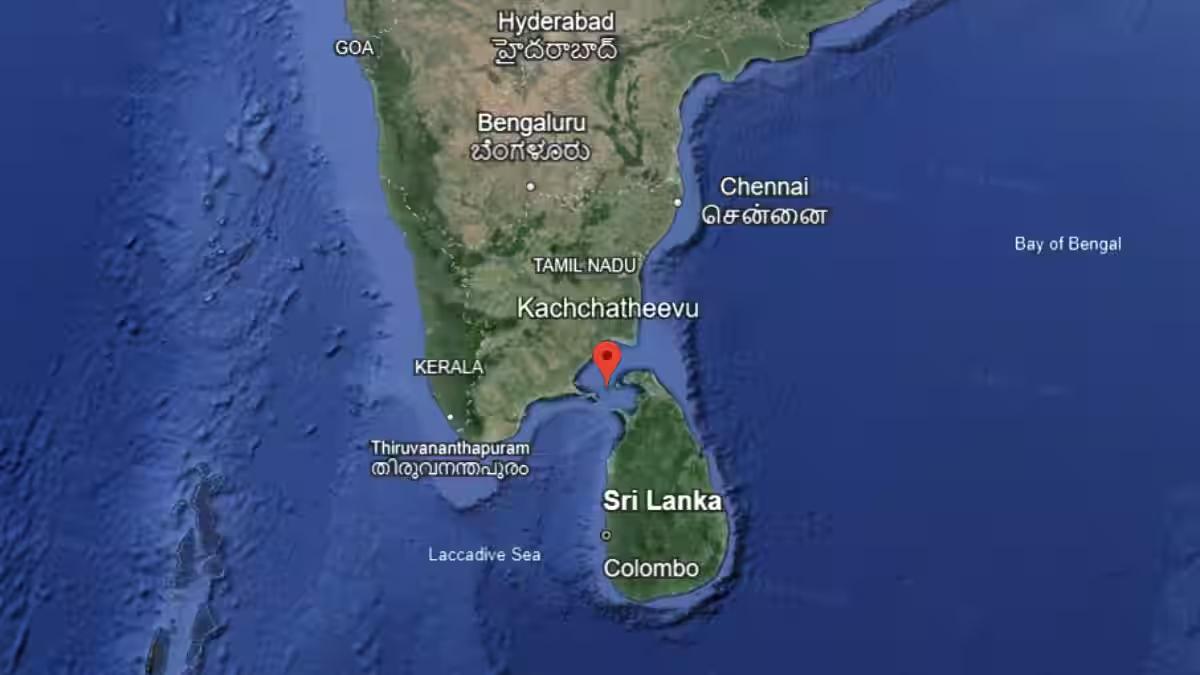
- 01 Apr 2024
Why is it in the News?
Prime Minister Narendra Modi once again attacked the Congress about its decision to “callously give away” the island of Katchatheevu.
About the Island of Katchatheevu:
- Katchatheevu is an uninhabited area located between India and Sri Lanka in the Palk Strait.
- It measures around 1.6 km in length and slightly over 300 m wide at its broadest point.
- Situated northeast of Rameswaram, it is approximately 33 km away from the Indian coast.
- Moreover, it is positioned about 62 km southwest of Jaffna, at the northern tip of Sri Lanka, and 24 km from the inhabited Delft Island, which is a part of Sri Lanka.
- Katchatheevu is not suited for permanent settlement as there is no source of drinking water on the island.
History of the island:
- Being the product of a 14-century volcanic eruption, Katchatheevu is relatively new in the geological timescale.
- In the early medieval period, it was controlled by the Jaffna kingdom of Sri Lanka.
- In the 17th century, control passed to the Ramnad zamindari based out of Ramanathapuram, about 55 km northwest of Rameswaram.
What is the dispute?
- The island became part of the Madras Presidency during the British Raj.
- But in 1921, both India and Sri Lanka, at the time British colonies, claimed Katchatheevu to determine fishing boundaries.
- A survey marked Katchatheevu in Sri Lanka, but a British delegation from India challenged this, citing ownership of the island by the Ramnad kingdom.
- This dispute was not settled until 1974.
What is the Agreement on Katchatheevu Island?
- In 1974, Indira Gandhi made attempts to settle the maritime border between India and Sri Lanka, once and for all.
- As a part of this settlement, known as the ‘Indo-Sri Lankan Maritime Agreement’, Indira Gandhi ‘ceded’ Katchatheevu to Sri Lanka.
- At the time, she thought the island had little strategic value and that ceasing India’s claim over the island would deepen its ties with its southern neighbor.
- Moreover, as per the agreement, Indian fishermen were still allowed to access Katchatheevu “hitherto”.
- Unfortunately, the issue of fishing rights was not ironed out by the agreement.
- Sri Lanka interpreted Indian fishermen’s right to access Katchatheevu to be limited to “rest, drying nets and for visit to the Catholic shrine without a visa”.
- Another agreement in 1976, during the period of Emergency in India, barred either country from fishing in the other’s Exclusive Economic Zone.
- Again, Katchatheevu lay right at the edge of the EEZs of either country, retaining a degree of uncertainty about fishing rights.
How did the Sri Lankan Civil War Impact Katchatheevu?
- Between 1983 and 2009, the border dispute remained on the back burner as a bloody civil war raged in Sri Lanka.
- With the Sri Lankan naval forces preoccupied with their task of cutting off supply lines of the LTTE based out of Jaffna, incursions by Indian fishermen well into Sri Lankan waters were commonplace.
- Bigger Indian trawlers were especially resented as they would not only tend to overfish but also damage Sri Lankan fishing nets and boats.
- In 2009, the war with the LTTE ended, and things dramatically changed. Colombo beefed up its maritime defenses and turned its focus to Indian fishermen.
- Facing a depletion of marine resources on the Indian side, they would frequently enter Sri Lankan waters as they had been doing for years, but finally began facing consequences.
- To date, the Sri Lankan navy routinely arrests Indian fishermen and there have been many allegations of custodial torture and death.
- The demand for Katchatheevu is revived each time such an incident happens.
Indian Government Stance on Katchatheevu Island:
- The Union government’s position on Katchatheevu has largely remained unchanged.
- It has argued that since the island had always been under dispute, “no territory belonging to India was ceded nor sovereignty relinquished.”
Kodaikanal Solar Observatory (KOSO)
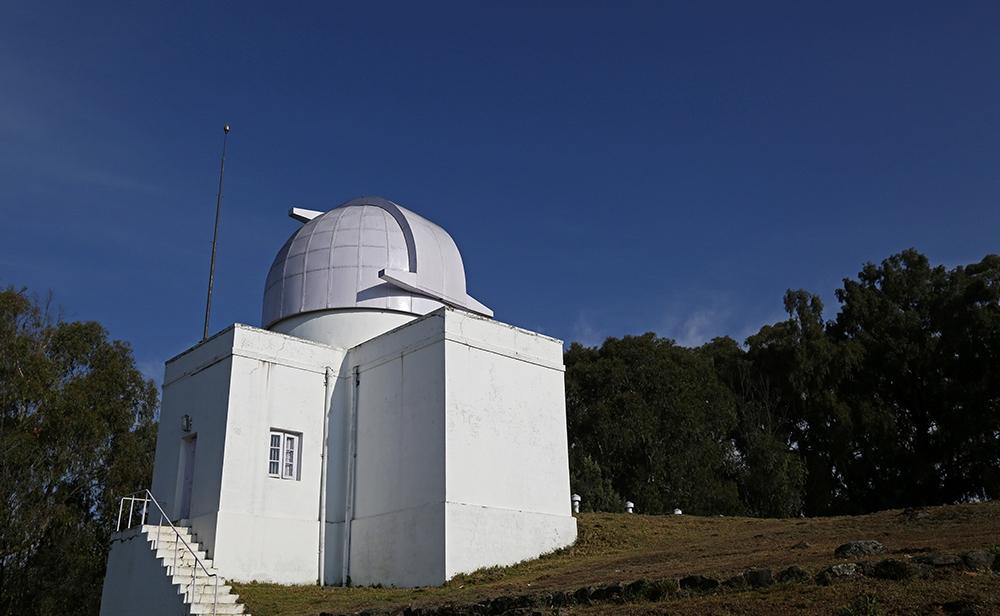
- 01 Apr 2024
Why is it in the News?
Since ancient times, seafarers, mathematicians, astronomers, and physicists have all diligently studied and tracked the Sun and its phenomena, with the establishment of the Madras Observatory by the British East India Company in 1792 marking a pioneering effort in this region.
About Kodaikanal Solar Observatory:
- The Kodaikanal Solar Observatory is a solar observatory owned and operated by the Indian Institute of Astrophysics (IIA), Bengaluru.
- It is on the southern tip of the Palani Hills 4 kilometers from Kodaikanal (Tamil Nadu).
- The Government of India separated Astrophysics from the India Meteorological Department (IMD) in April 1971.
- From solar data recorded on basic photographic plates or films, the 125-year-old KoSO boasts a mammoth digital repository containing 1.48 lakh digitized solar images of 10 terabytes.
- These include 33,500 white-light images (showing sunspots) and thousands of other images of the Sun recorded every day since the start of the 20th century.
- KoSO is the only observatory offering high-resolution digitized images for such a long period (with coverage of more than 75 percent).
- Today, it houses a spectrum of advanced instruments like the H-alpha telescope to perform full disc imaging, a White light Active Region Monitor (WARM) with calcium and sodium filters to make full disc simultaneous observations of the photosphere and chromosphere layers of the Sun, a solar tunnel telescope and more.
Links to the Great Drought:
- Scanty rainfall over south India during the winter monsoon of 1875 triggered one of the worst droughts the country had experienced till then.
- Multiple failed crops over the famine-stricken peninsular India killed 12.2 to 29.3 million people across the Madras and Mysore Provinces during 1875-1877.
- India, along with China, Egypt, Morocco, Ethiopia, southern Africa, Brazil, Columbia, and Venezuela, suffered concurrent multi-year droughts during 1876-1878, later named the Great Drought, and an associated global famine that killed nearly 50 million.
- The drought was thought to be due to multiple reasons:
- Solar activity
- Cool Pacific Ocean conditions followed by a record-breaking El Nino (1877-1878)
- Strong Indian Ocean Dipole and
- Warm North Atlantic Ocean conditions.
Solar Physics Observatory in Palani Hills:
- Established in response to the British Raj's acknowledgment of solar activity's link to India's weather patterns, the Palani Hills Solar Physics Observatory, also known as the Indian Solar Observatory, was founded to conduct systematic studies on solar phenomena and their correlation with Indian meteorology.
- Located in Kodaikanal, selected for its favorable atmospheric conditions after careful consideration by Charles Michie Smith (a Professor of Physics at the Madras Christian College), the observatory was officially sanctioned by the Government of India in August 1893 and inaugurated by Lord Wenlock (the then Governor of Madras) in 1895.
- Commencing systematic observations in 1901, it merged with the Madras Observatory, enriching its instrumentation.
- Notable discoveries ensued, including the identification of the Evershed Effect.
- Over time, the observatory expanded its research domains to encompass cosmic rays, radio astronomy, and ionospheric physics, among others, solidifying its status as a pioneering institution in the field of astrophysics.
- Notably, it initiated solar radio observations in 1952, marking a significant milestone in Indian solar research.
- Despite the closure of contemporaneous observatories, the Palani Hills Solar Physics Observatory has endured, continuing to contribute to our understanding of the Sun and its effects on Earth's climate and space weather.
Why Study the Sun?
- Being the primary source of energy, life on Earth is supported by the Sun.
- Any change on the solar surface or its periphery could significantly affect the Earth’s atmosphere.
- Powerful solar storms and solar flares can be potentially harmful to Earth’s satellite-based operations, power grids, and navigational networks.
- The KoSO (Kodaikanal Solar Observatory), which has been imaging the Sun for over a century now, has a rich repository of data.
- This is extremely useful not only to reconstruct the Sun’s historic past but also to link its behavioral changes to better understand and predict its future and its impact on life on Earth and Space weather.
Fukushima Water Issue
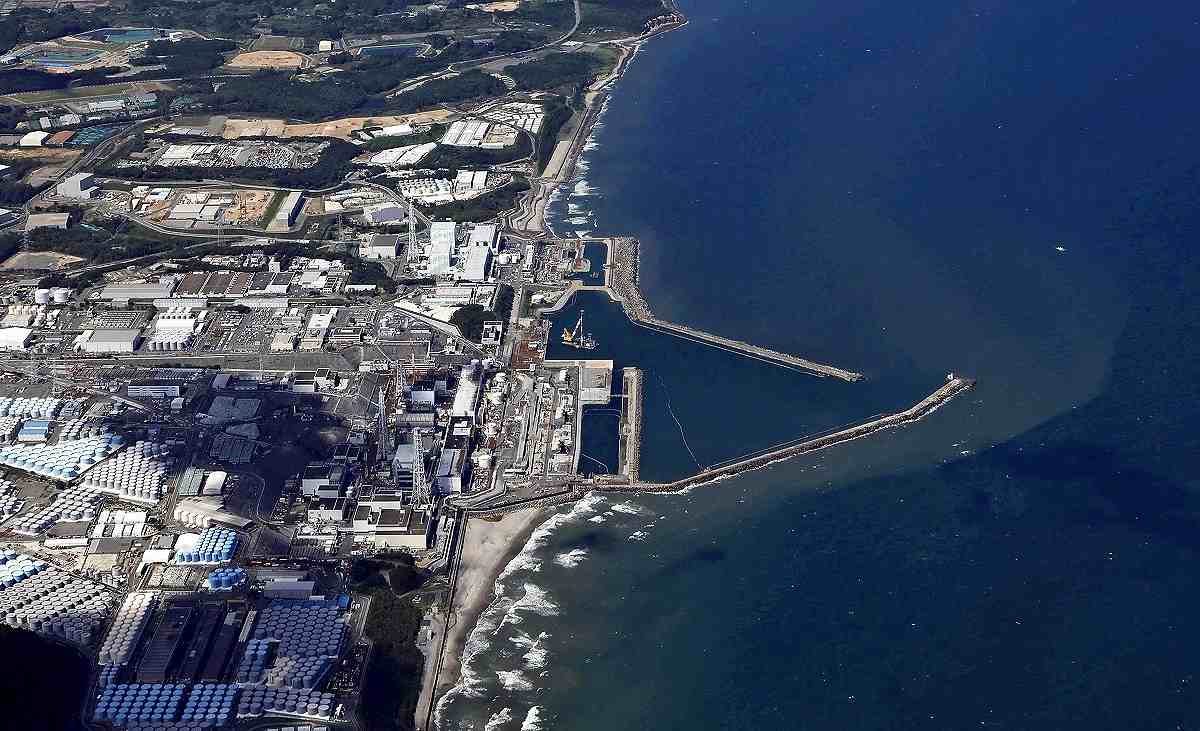
- 01 Apr 2024
Why is it in the News?
Recently, Japan announced that its experts have engaged in discussions with their Chinese counterparts to address Beijing's concerns regarding the release of treated radioactive wastewater from the damaged Fukushima Daiichi nuclear power plant into the sea.
What is the Fukushima Water Issue?
- In 2021, the Japanese government unveiled plans to gradually discharge over one million tonnes of contaminated water from the Fukushima nuclear plant into the ocean over the next three decades.
- The contaminated water is a residual product of the devastating 2011 earthquake and tsunami that incapacitated the Fukushima Daiichi nuclear power plant, resulting in the release of radioactive materials.
- After more than ten years of storing this wastewater, Japan asserts that they are facing storage space limitations and contends that the treated water is now safe for release.
Concerns Surrounding the Fukushima Water Discharge:
- Tritium and Carbon-14: The water from Fukushima undergoes filtration via the Advanced Liquid Processing System (ALPS), effectively reducing most radioactive contaminants to acceptable safety levels, except tritium and carbon-14.
- While both emit low levels of radiation, consumption in large quantities could potentially pose risks.
- Insufficient Research: Scientists emphasize the need for further investigation into the potential impact of the water discharge on the ocean bed and marine ecosystems.
- The Pacific Islands Forum regional group has labeled the proposed plan as "another significant nuclear contamination disaster," citing ongoing challenges faced by its member nations due to past US nuclear testing.
Pacific Islands Forum (PIF):
- The Pacific Islands Forum (PIF) is an inter-governmental organization that aims to enhance cooperation among countries and territories of Oceania, including the formation of a trade bloc and regional peacekeeping operations.
- It was founded in 1971 as the South Pacific Forum (SPF), and changed its name in 1999 to "Pacific Islands Forum", to be more inclusive of the Forum's Oceania-spanning membership of both north and south Pacific island countries, including Australia.
- It is a United Nations General Assembly observer.
- The PIF secretariat is located in Suva, the capital of Fiji.
Nuclear Incidents:
- A nuclear and radiation incident denotes an occurrence that has resulted in significant repercussions for individuals, the environment, or the facility involved.
- These may entail fatal consequences for individuals, substantial releases of radioactivity into the environment, or reactor core meltdowns.
- Globally, there have been a total of 99 incidents at nuclear power plants.
- Fifty-seven of these incidents have transpired since the Chornobyl disaster, with the United States accounting for 57% of all nuclear-related incidents.
- Noteworthy nuclear power plant mishaps encompass:
- Fukushima Daiichi nuclear disaster (2011)
- Chernobyl disaster (1986)
- Three Mile Island accident (1979), and
- The SL-1 accident (1961).
Real Estate (Regulation and Development) Act, 2016
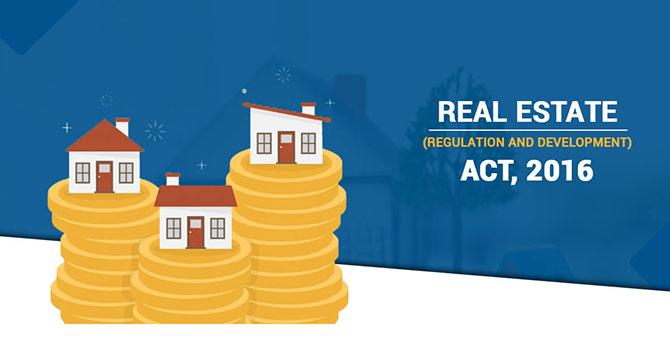
- 01 Apr 2024
Why is it in the News?
Eight years after Parliament passed the Real Estate (Regulation and Development) Act, 2016, the Union Ministry of Housing and Urban Affairs is in the process of reviewing the functioning of the Act, including by holding regular meetings with homebuyers and setting up a data collection unit within the Ministry.
What Is Real Estate (Regulation & Development) Act, 2016 (RERA)?
- The Real Estate (Regulation & Development) Act, 2016 is an act of the Parliament of India that strives to protect home buyers and helps escalate the investment made in the real estate industry.
- It was established under this Act to regulate the real estate sector.
- Additionally, it acts as the adjudicating body for faster dispute resolution related to the real estate industry.
The Primary Objectives of the Act:
- Ensuring Transparency: Promoting transparency in the real estate sector regarding the sale of flats, apartments, plots, buildings, or any real estate project.
- Establishing Dispute Resolution: Setting up an adjudicating mechanism to swiftly resolve disputes.
- Protecting Buyer Interests: Safeguarding the interests of buyers/allottees in the real estate domain.
- Building Trust: Fostering trust between buyers and promoters by leveraging regulatory authority.
- Furthermore, the Act mandates that Real Estate Regulatory Authorities establish and maintain a web portal containing pertinent details of all registered real estate projects for public access.
Reasons for RERA Implementation:
- The introduction of RERA was necessitated by challenges faced by the Indian real estate sector since 2012, including factors such as unemployment, recession, low rental yield, inventory pile-up, and ambiguous tax and arbitration frameworks.
Projects Covered by RERA:
- RERA covers commercial and residential projects, including plotted developments, that exceed 500 square meters or comprise more than 8 units.
- Additionally, projects lacking a Completion Certificate prior to the Act's commencement are subject to its provisions.
Benefits of RERA Implementation:
- Standardization: RERA ensures uniformity in the real estate sector concerning aspects like carpet areas and common areas, thereby preventing malpractices such as alterations in layout, area, agreements, and specifications.
- It also mandates disclosure of details regarding brokers, architects, and contractors.
- Timely Delivery: Developers are obligated to adhere to scheduled delivery timelines for office spaces or homes.
- Failure to comply may result in stringent penalties or imprisonment for the developer.
- Regulatory Compliance: RERA mandates obtaining clearance from government departments before the sale of any residential or commercial property.
- Financial Transparency: Developers are required to maintain separate bank accounts for each project, enhancing financial transparency and accountability.
- Warranty Protection: Buyers are empowered to report any structural defects in the building to the developer within one year of possession, with the developer obligated to rectify them free of charge.
Challenges Associated with RERA:
- Limited Scope: The regulations of RERA do not extend to ongoing projects or those stalled due to clearance issues, potentially leaving certain projects outside its jurisdiction.
- Approval Delays: Delays in approval and clearance from government agencies may impede the timely completion and delivery of real estate projects, affecting both developers and buyers.
- Exemption for Small Developers: Small-scale developers overseeing projects smaller than 500 square meters are exempt from RERA's provisions, and registration with the regulatory authority is not compulsory for them.
- Project Launch Delays: Projects cannot be launched without necessary clearances, which may result in delays in the commencement of new projects.
International Network for Terrestrial Research and Monitoring in the Arctic (INTERACT)

- 01 Apr 2024
Why is it in the News?
In a recent development, Arctic research stations under INTERACT reported a significant loss of over 1,000 billion tonnes of ice over the past four decades.
About the International Network for Terrestrial Research and Monitoring in the Arctic (INTERACT):
- The International Network for Terrestrial Research and Monitoring in the Arctic (INTERACT) is an infrastructure project under the auspices of SCANNET.
- INTERACT specifically seeks to build capacity for research and monitoring in the European Arctic and beyond and is offering access to numerous research stations through the Transnational Access program.
- It aims to build capacity for identifying, understanding, predicting, and responding to diverse environmental changes throughout the wide environmental and land-use envelopes of the Arctic.
- The project, which is funded by the EU, has the main objective of building capacity for identifying, understanding, predicting, and responding to diverse environmental changes throughout the wide environmental and land-use envelopes of the Arctic.
- INTERACT is a multidisciplinary initiative; collectively, its stations host thousands of scientists worldwide who collaborate on projects spanning glaciology, permafrost studies, climate research, ecology, biodiversity, and biogeochemical cycling.
About the Scandinavian Network for Coordinated Observation of the Atmosphere and Terrestrial Environment (SCANNET):
- SCANNET is a circum-Arctic network of currently 77 terrestrial field bases in northern Europe, Russia, the US, Canada, Greenland, Iceland, the Faroe Islands, and Scotland as well as stations in northern alpine areas.
- The primary aim of SCANNET is to facilitate coordinated observations and research activities focused on the atmosphere and terrestrial environment in the Arctic region.
- These observations cover a wide range of scientific disciplines, including meteorology, climatology, ecology, geology, and environmental science.
- By leveraging the diverse geographical locations of its field bases, SCANNET enables scientists to study various environmental phenomena, such as changes in weather patterns, shifts in ecosystems, permafrost dynamics, and the impact of climate change on Arctic landscapes.
- Moreover, SCANNET serves as a platform for collaboration and information sharing among researchers from different institutions and countries.
- It fosters partnerships and promotes the exchange of data, methodologies, and best practices, thereby enhancing our understanding of Arctic processes and their global implications.
